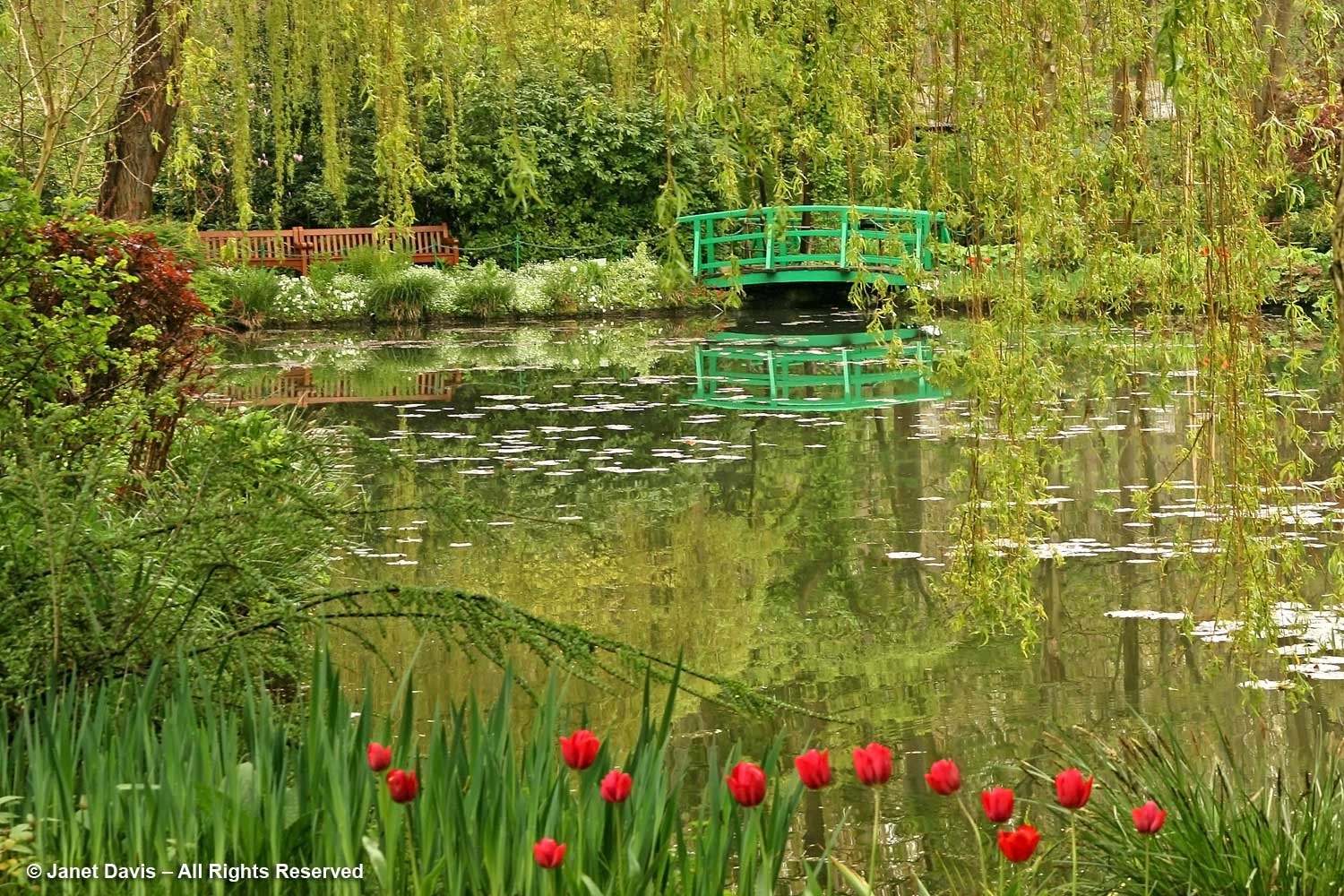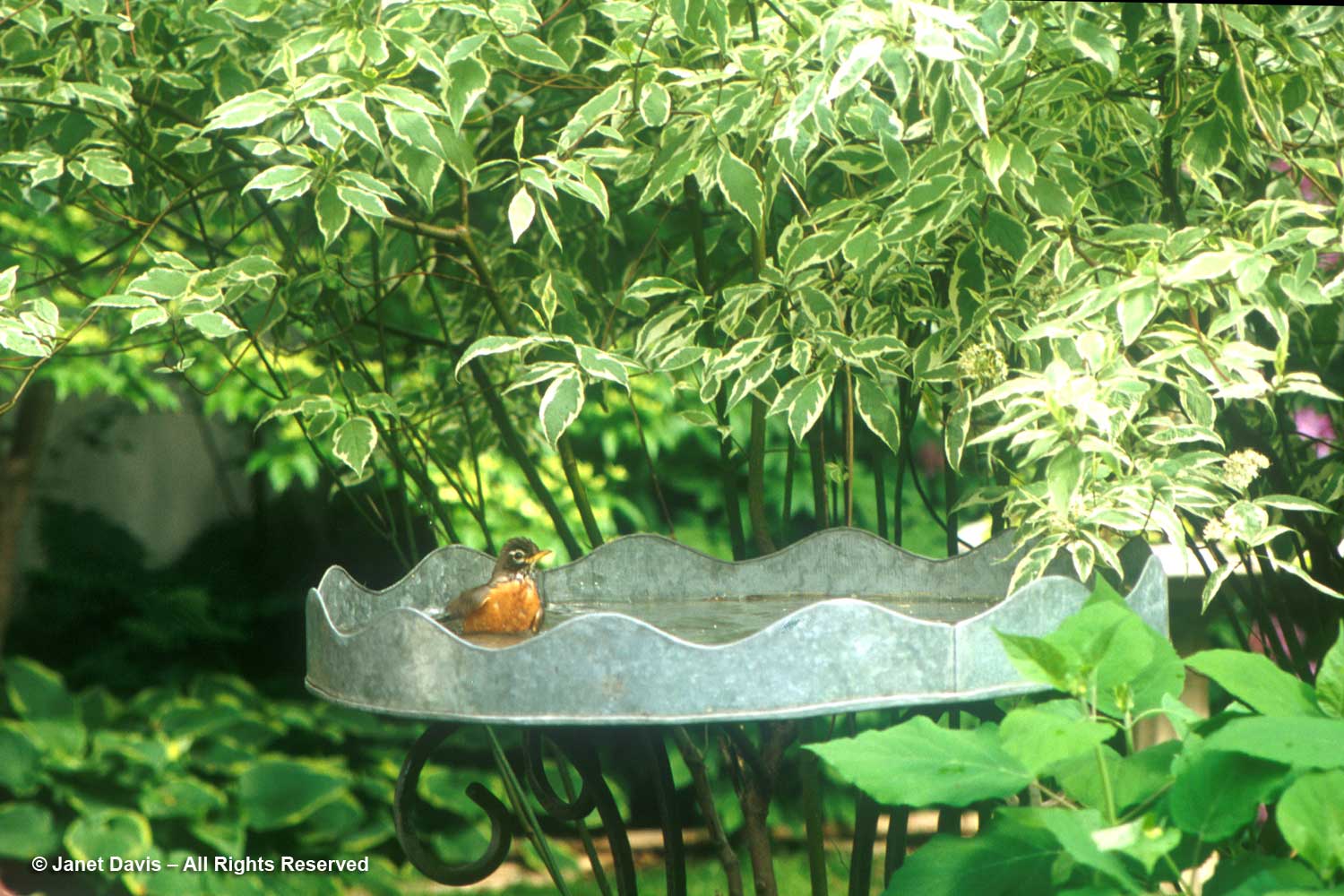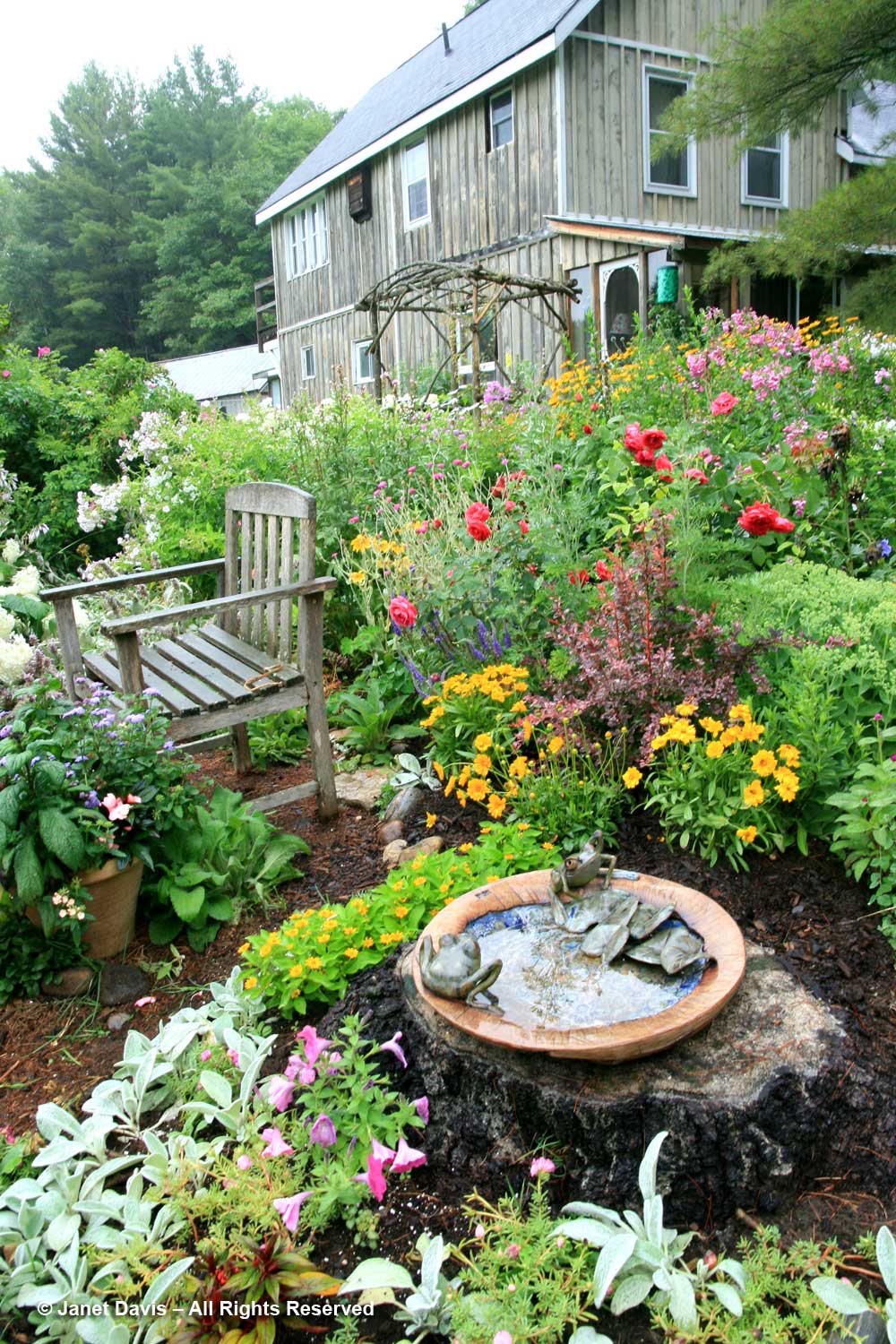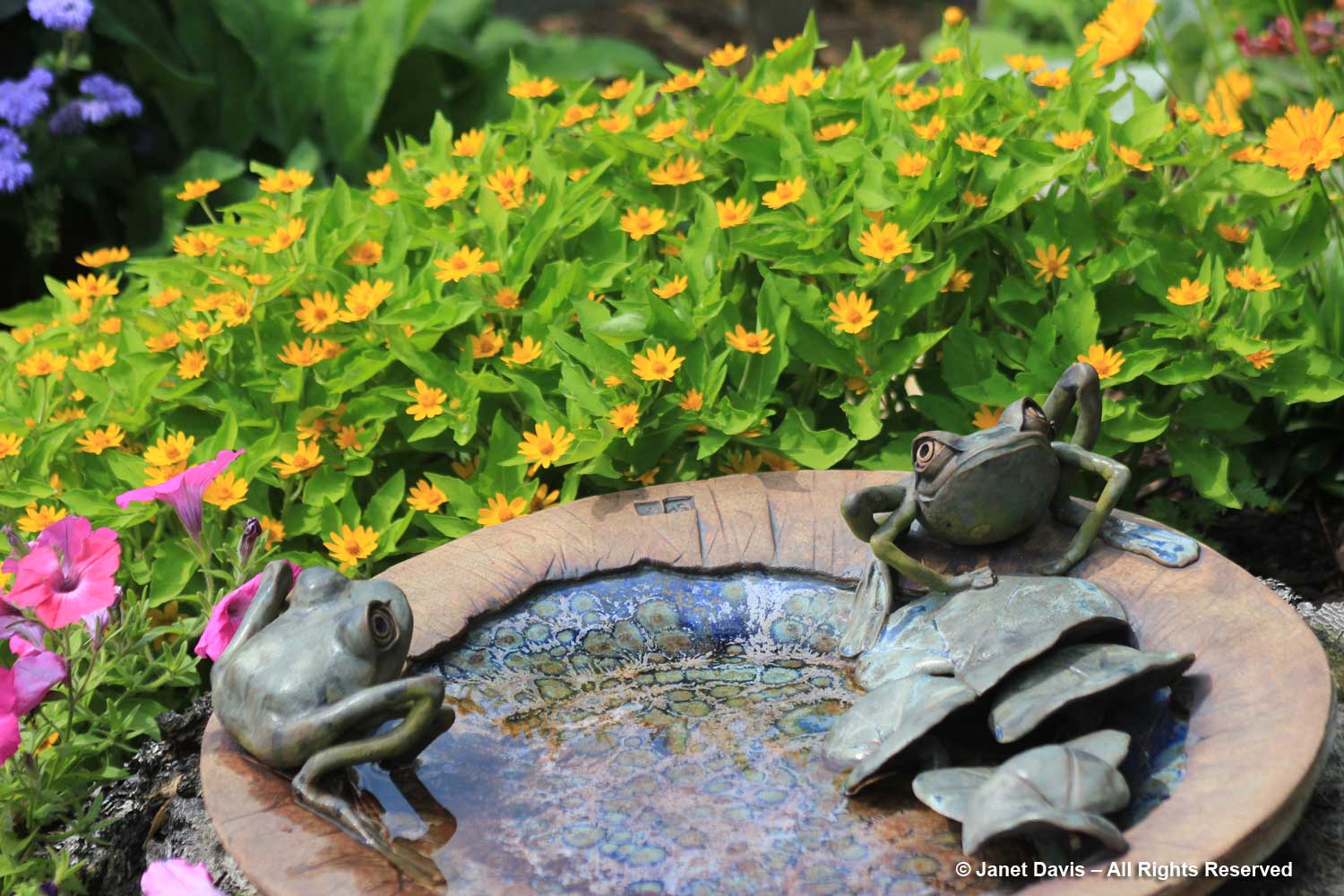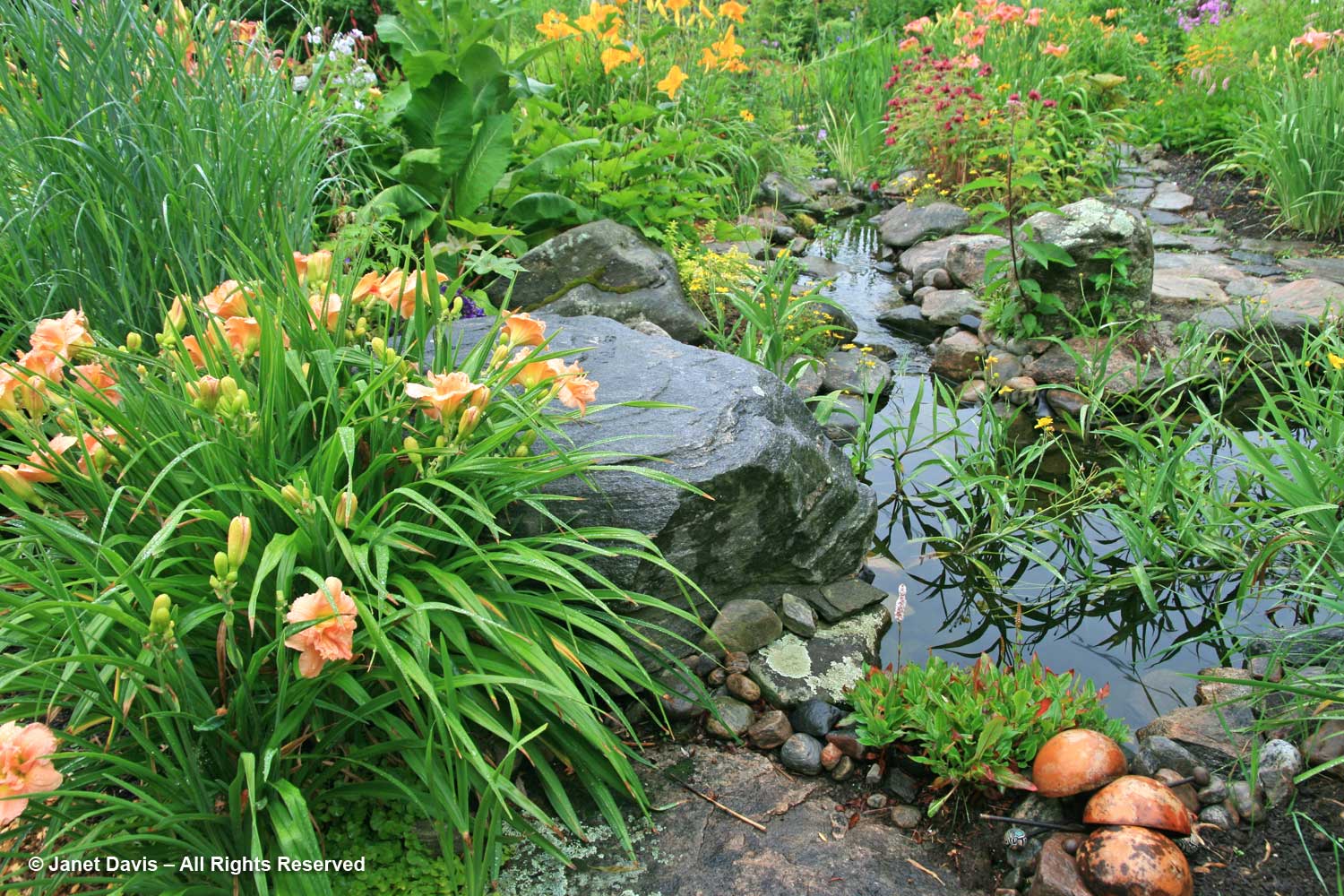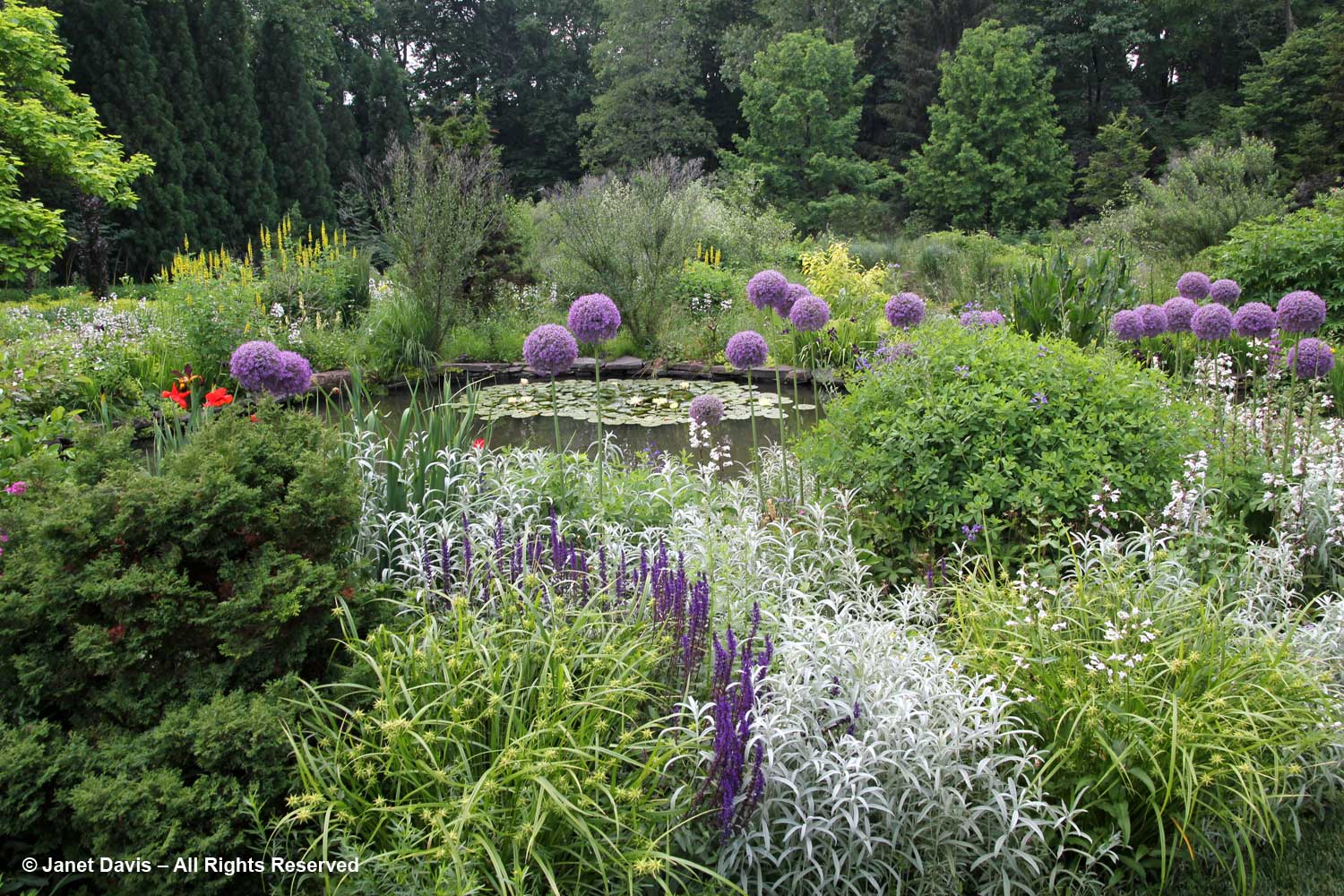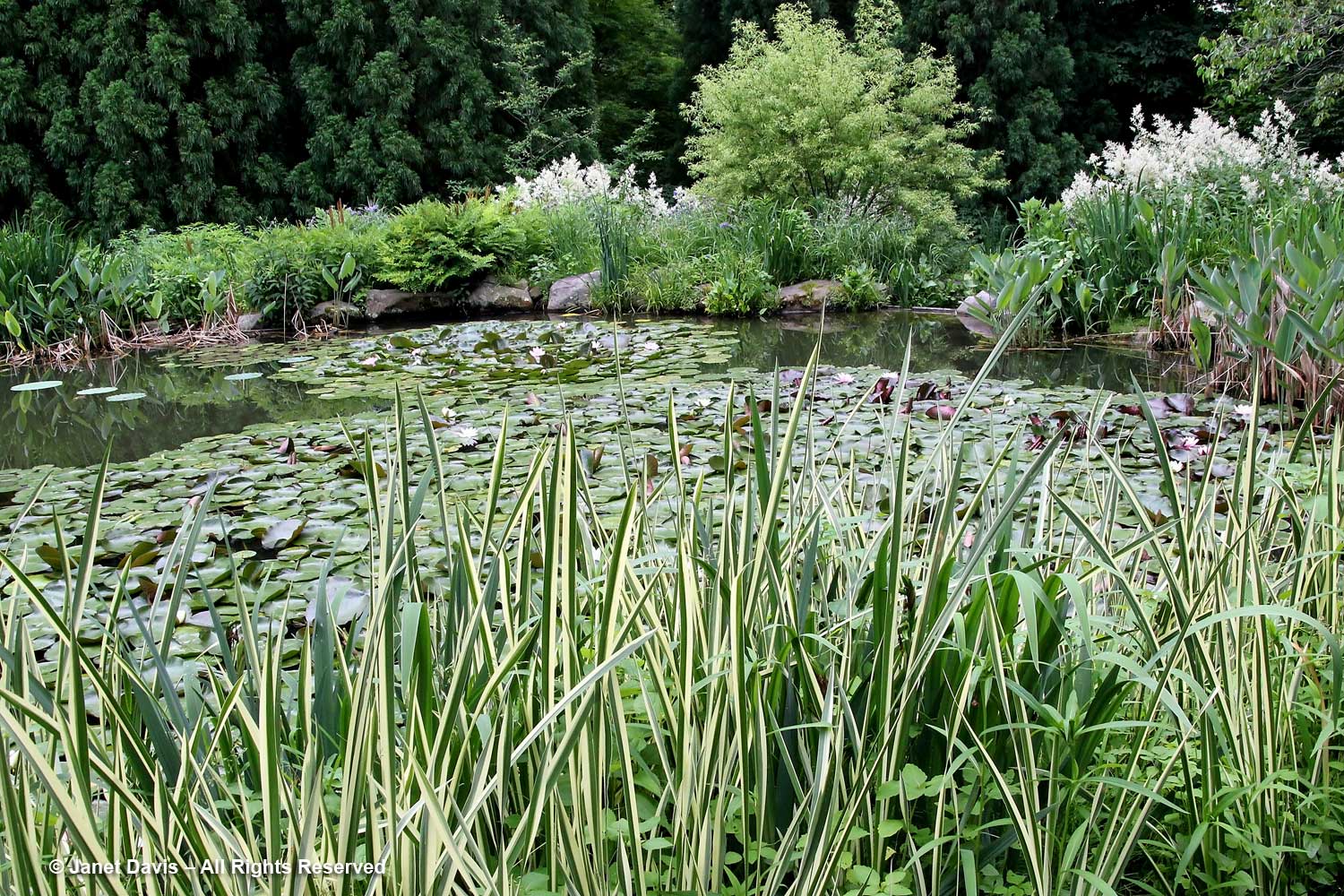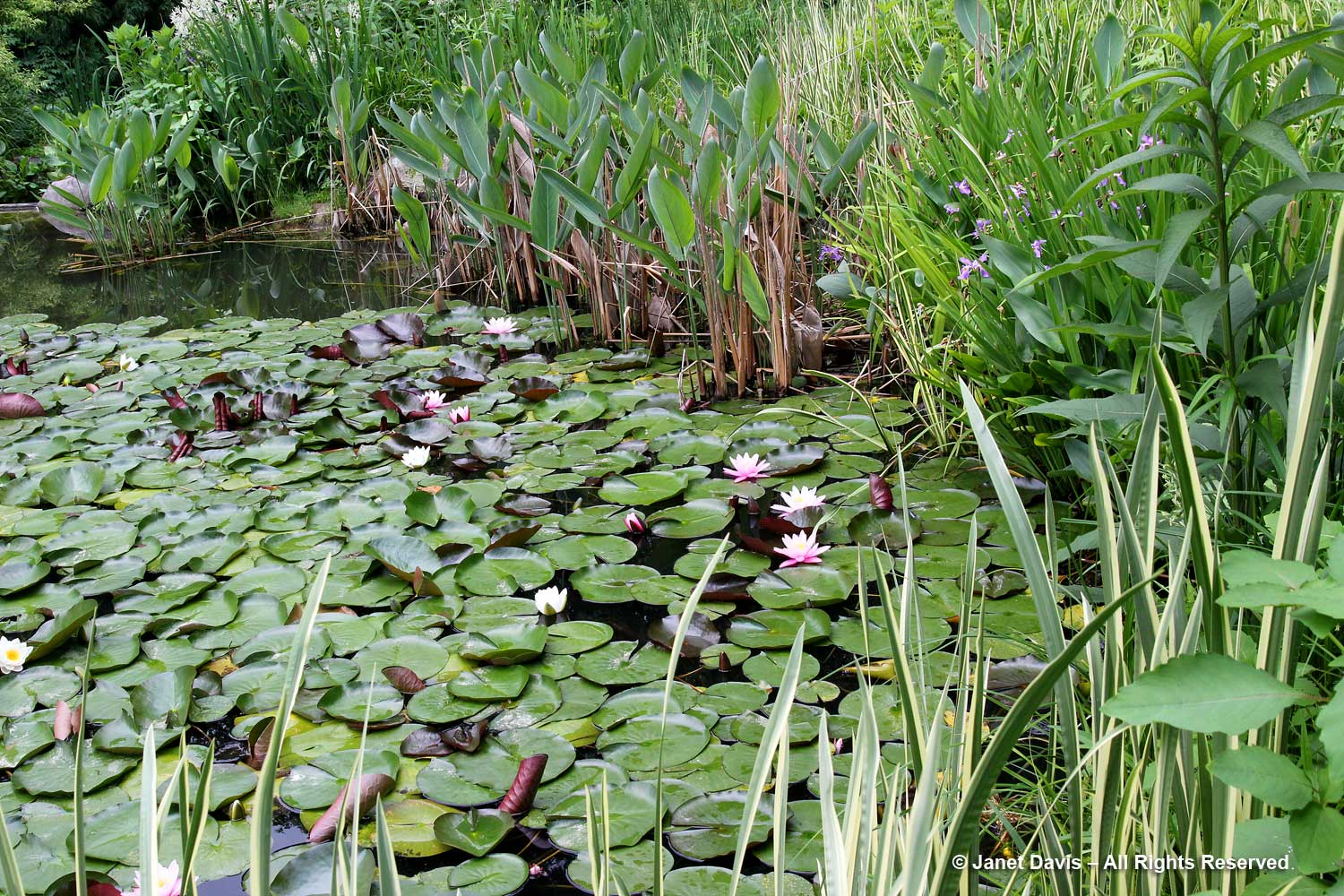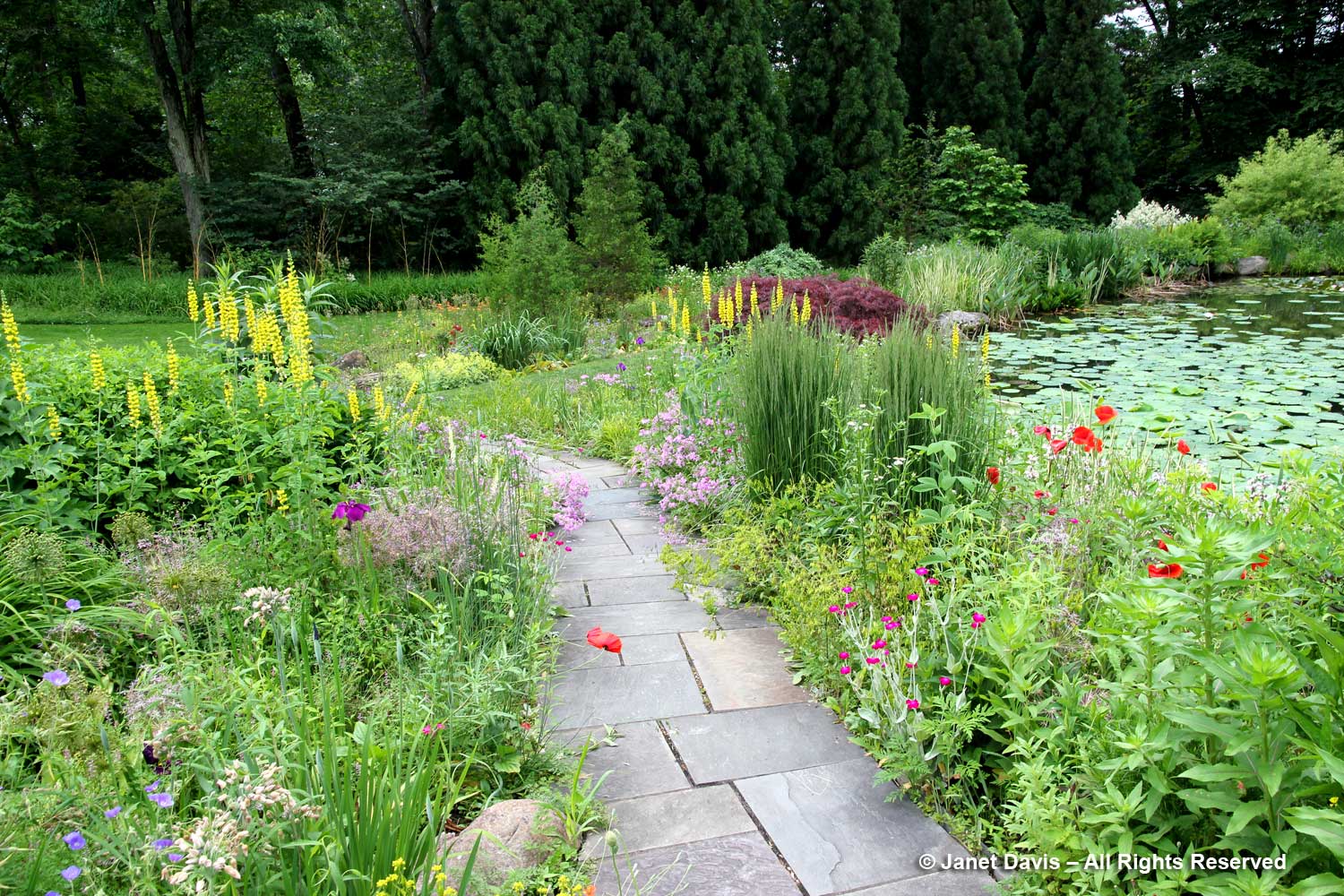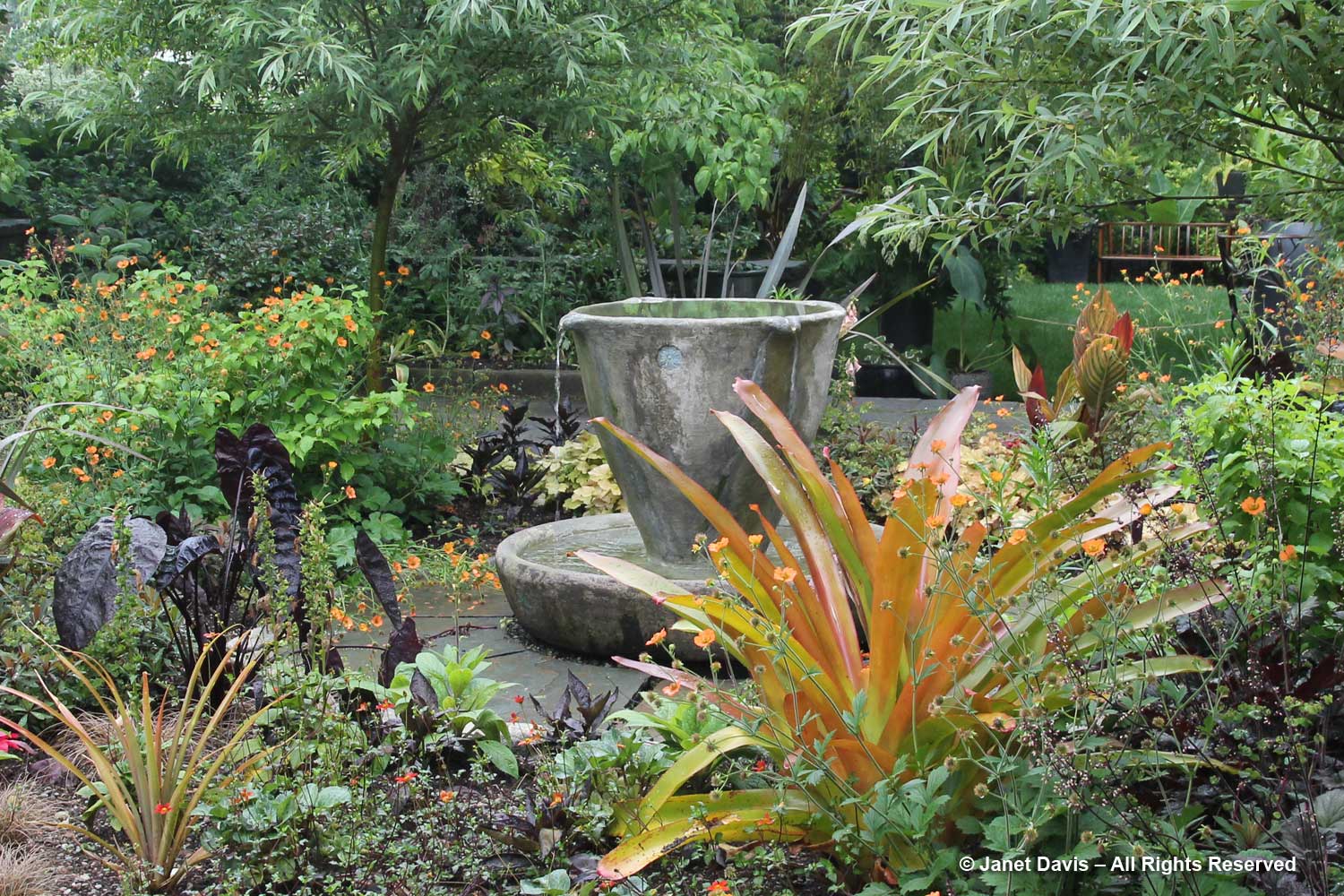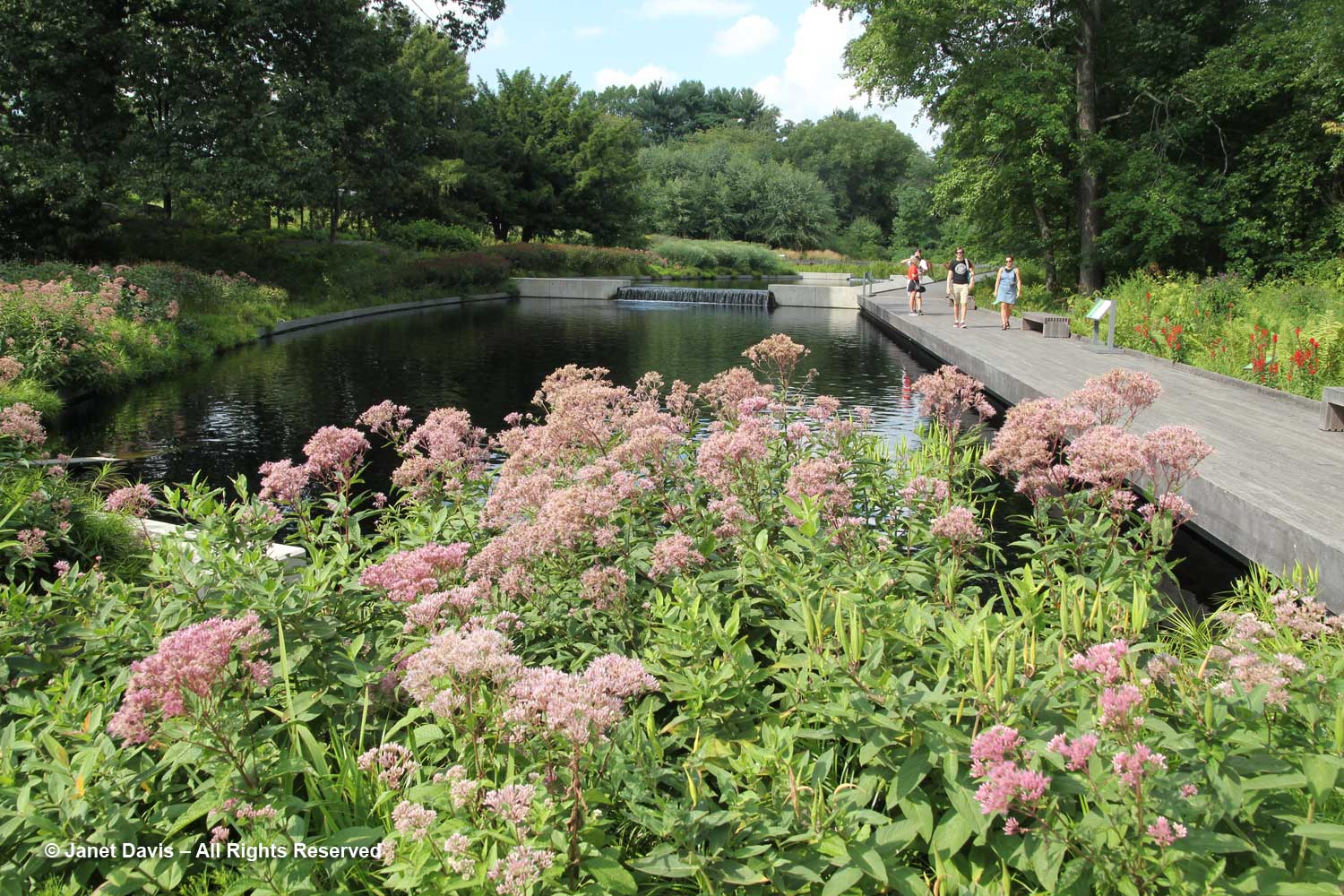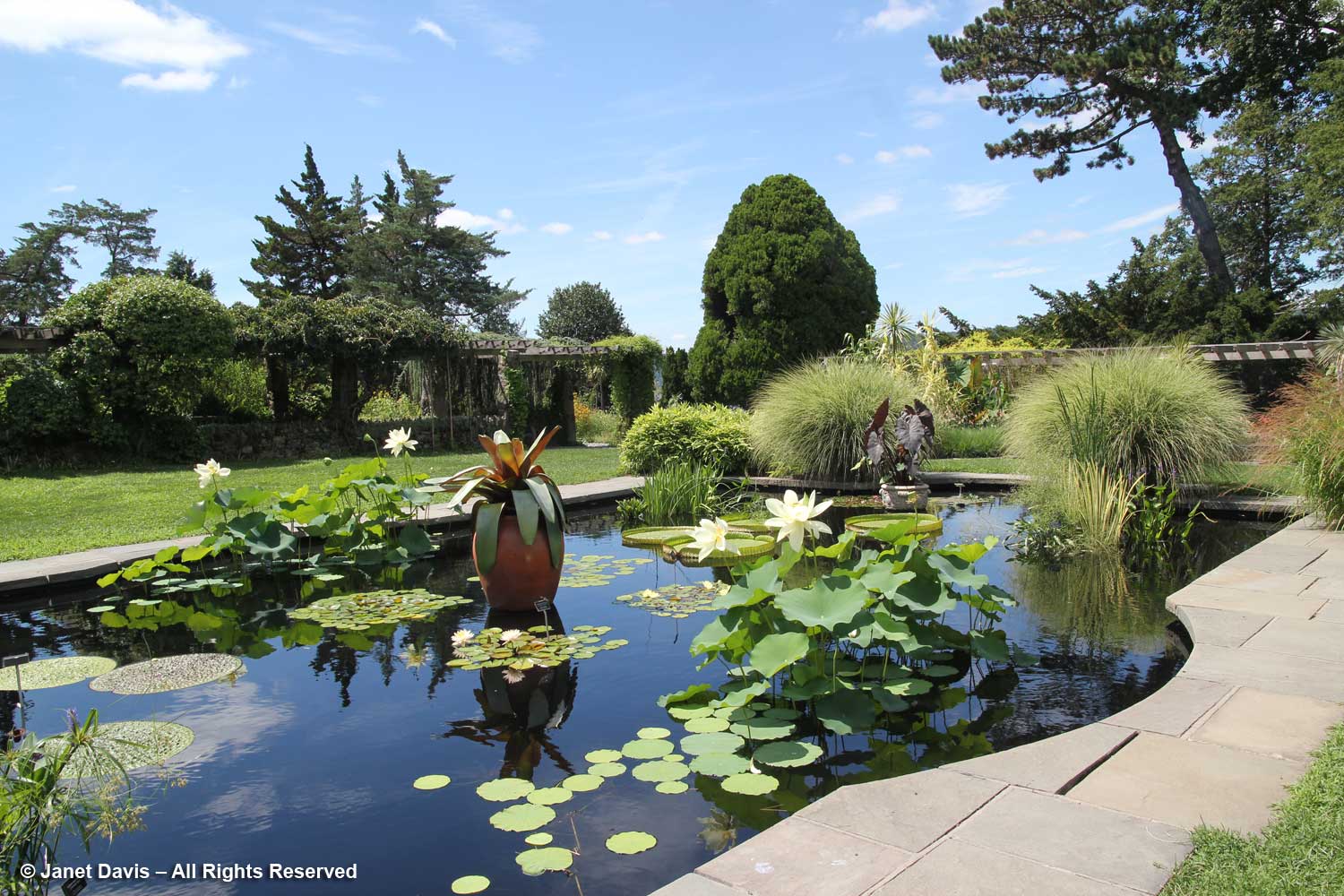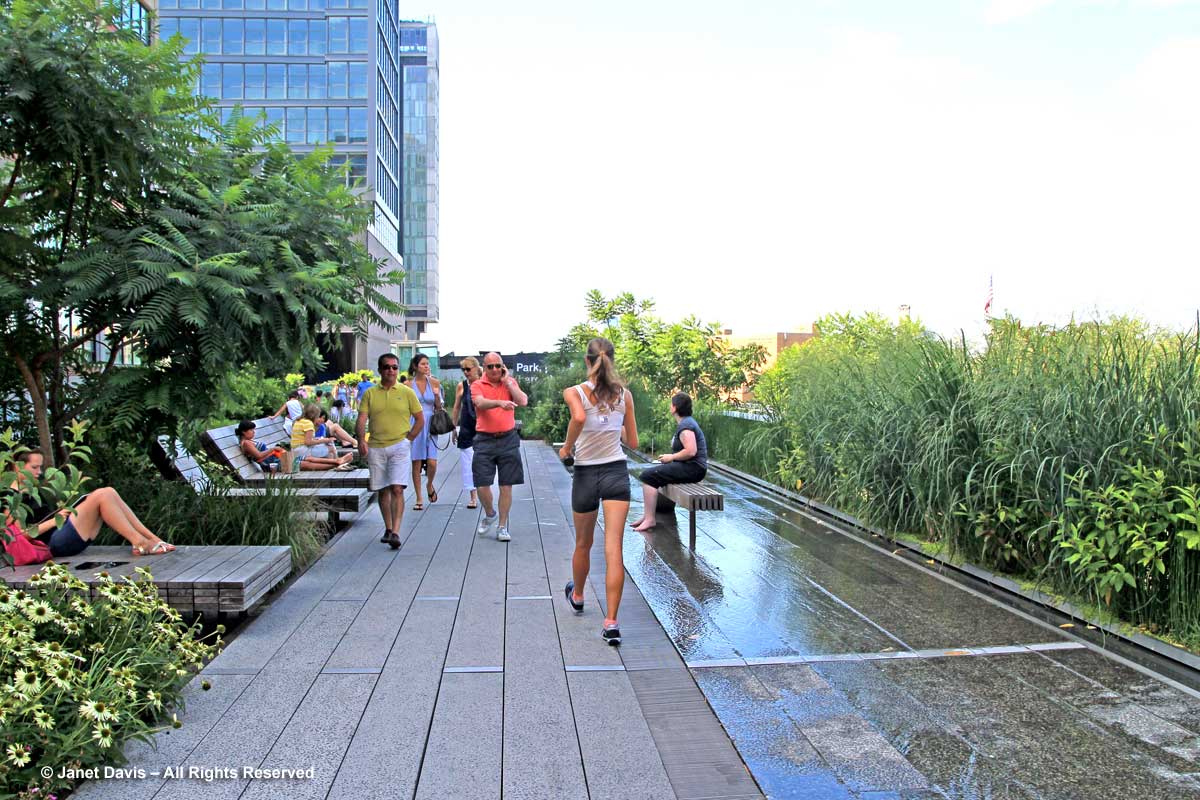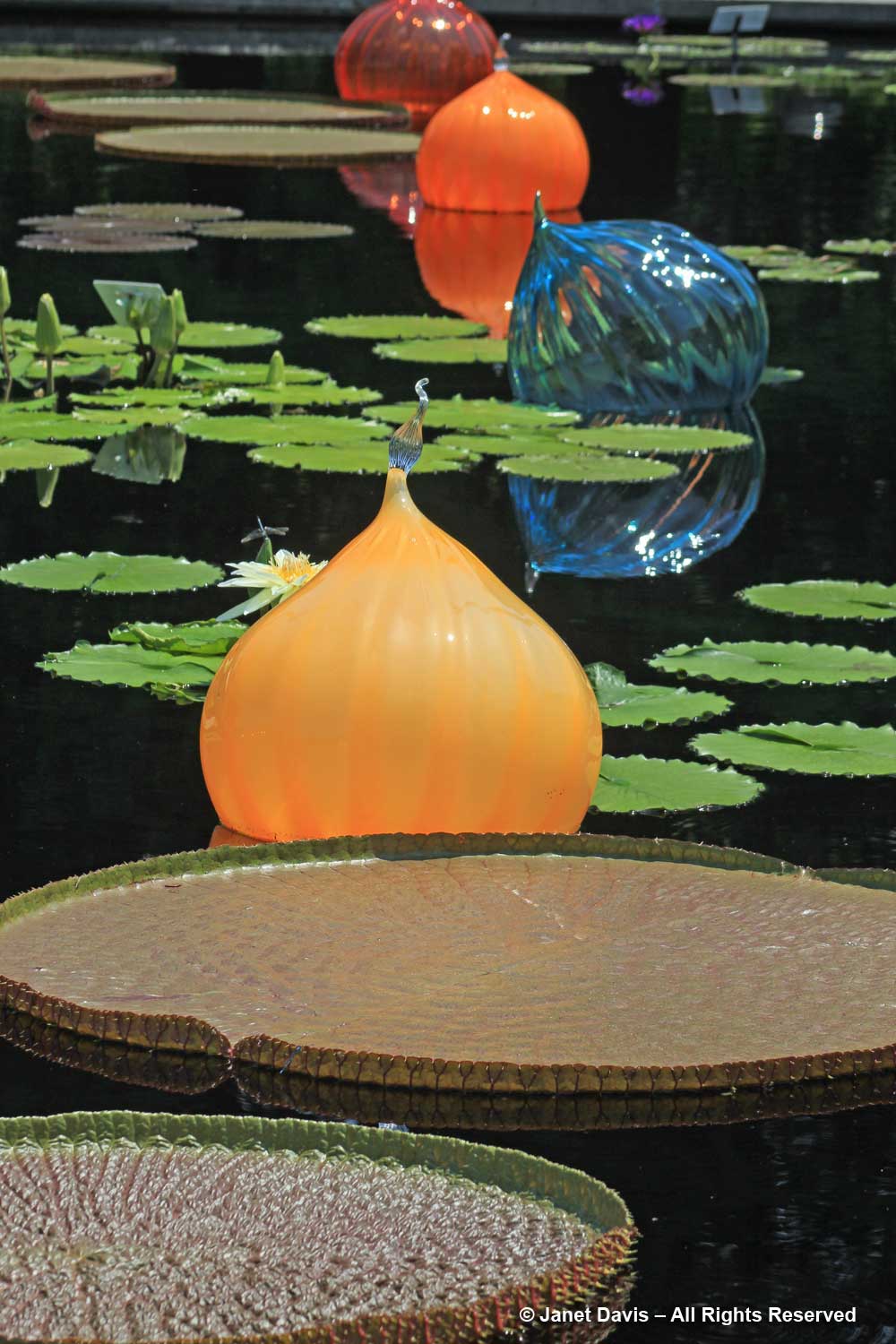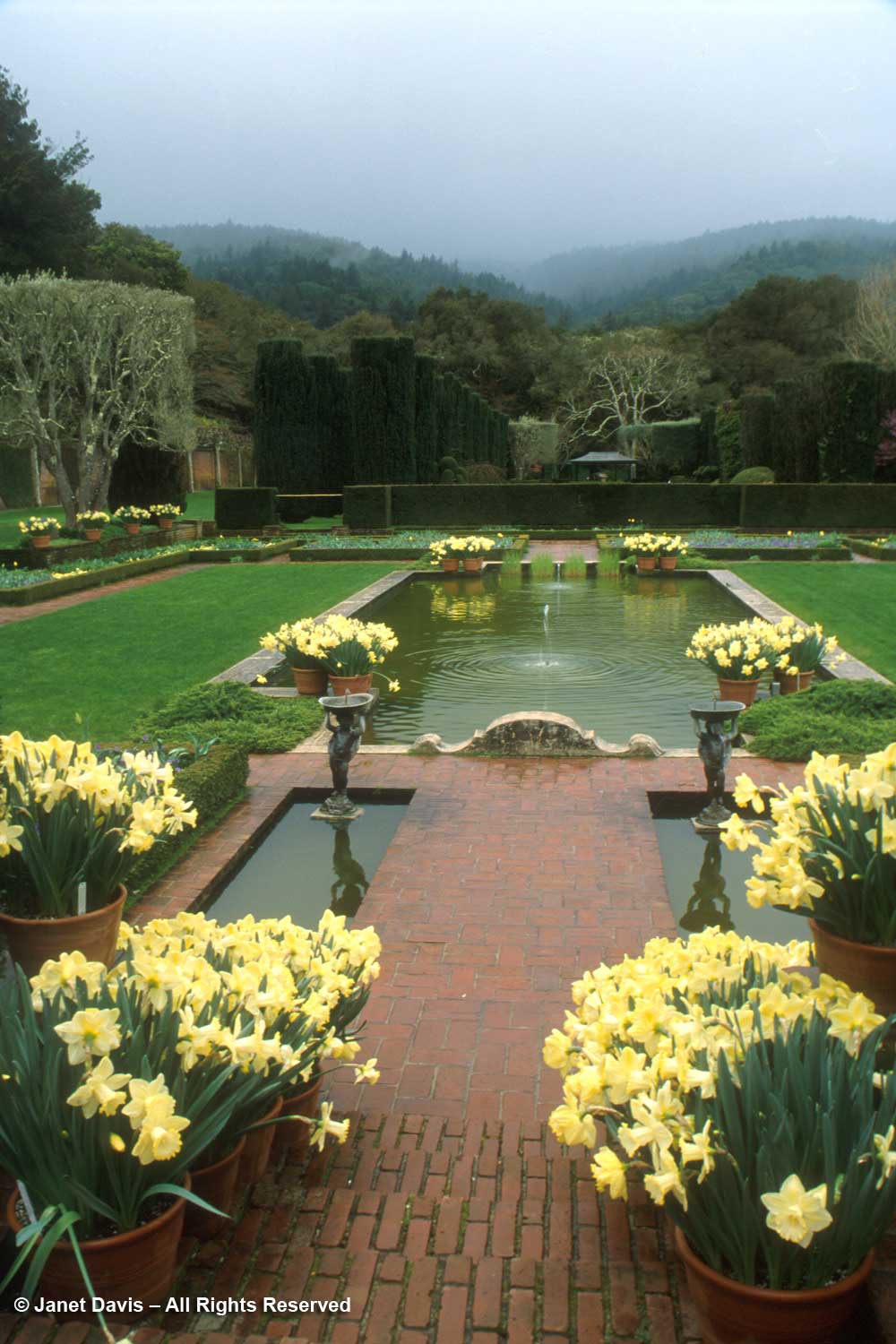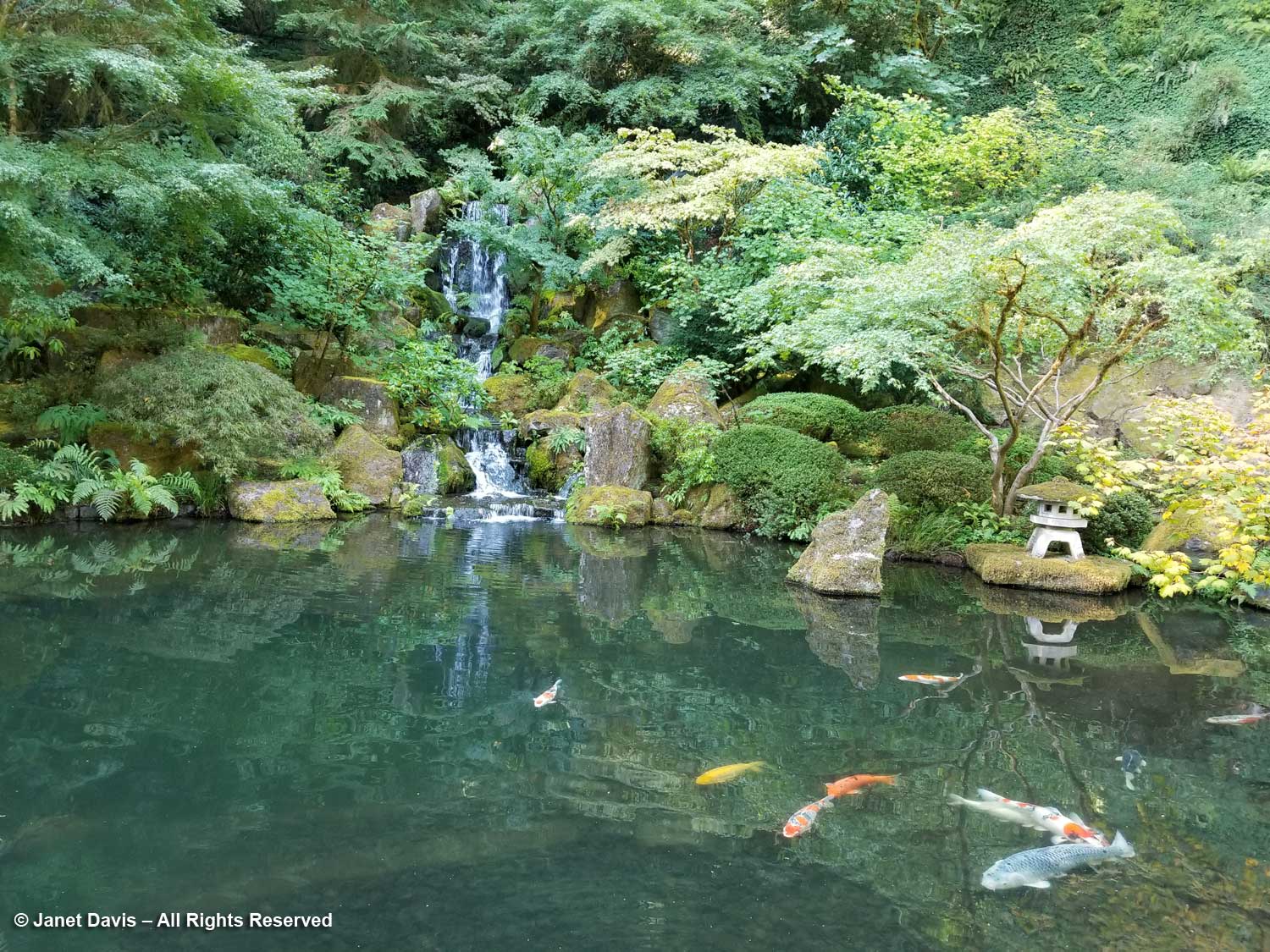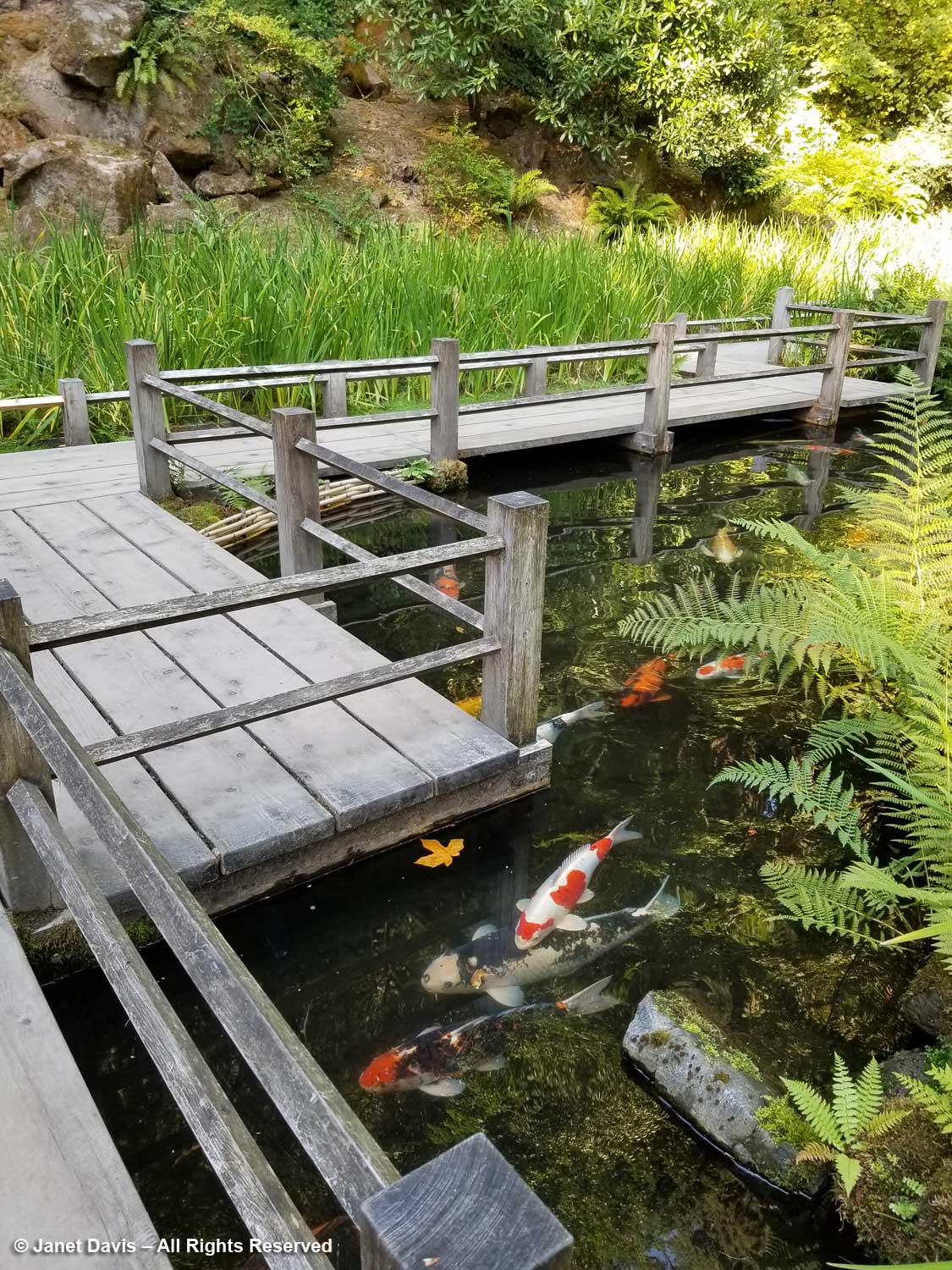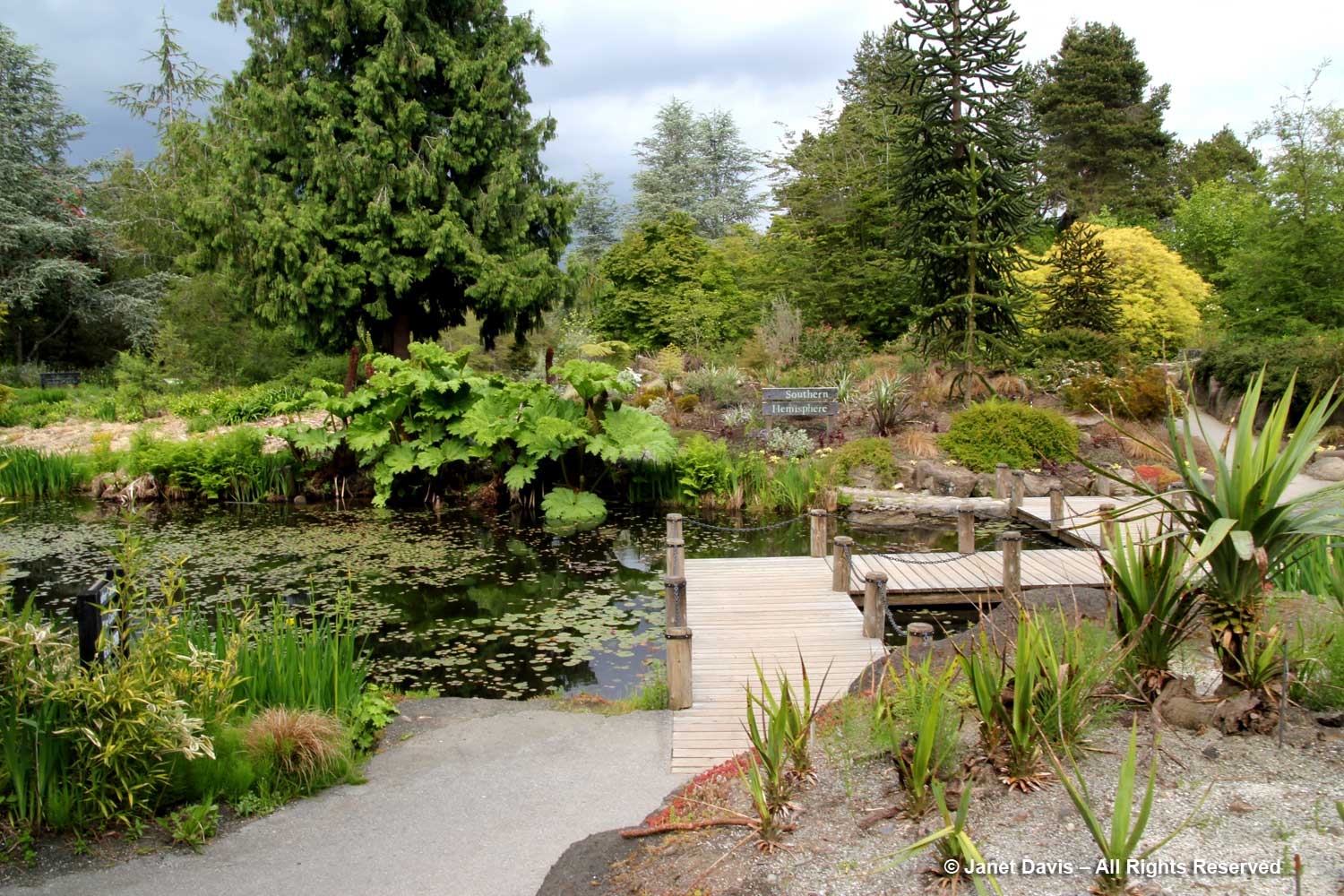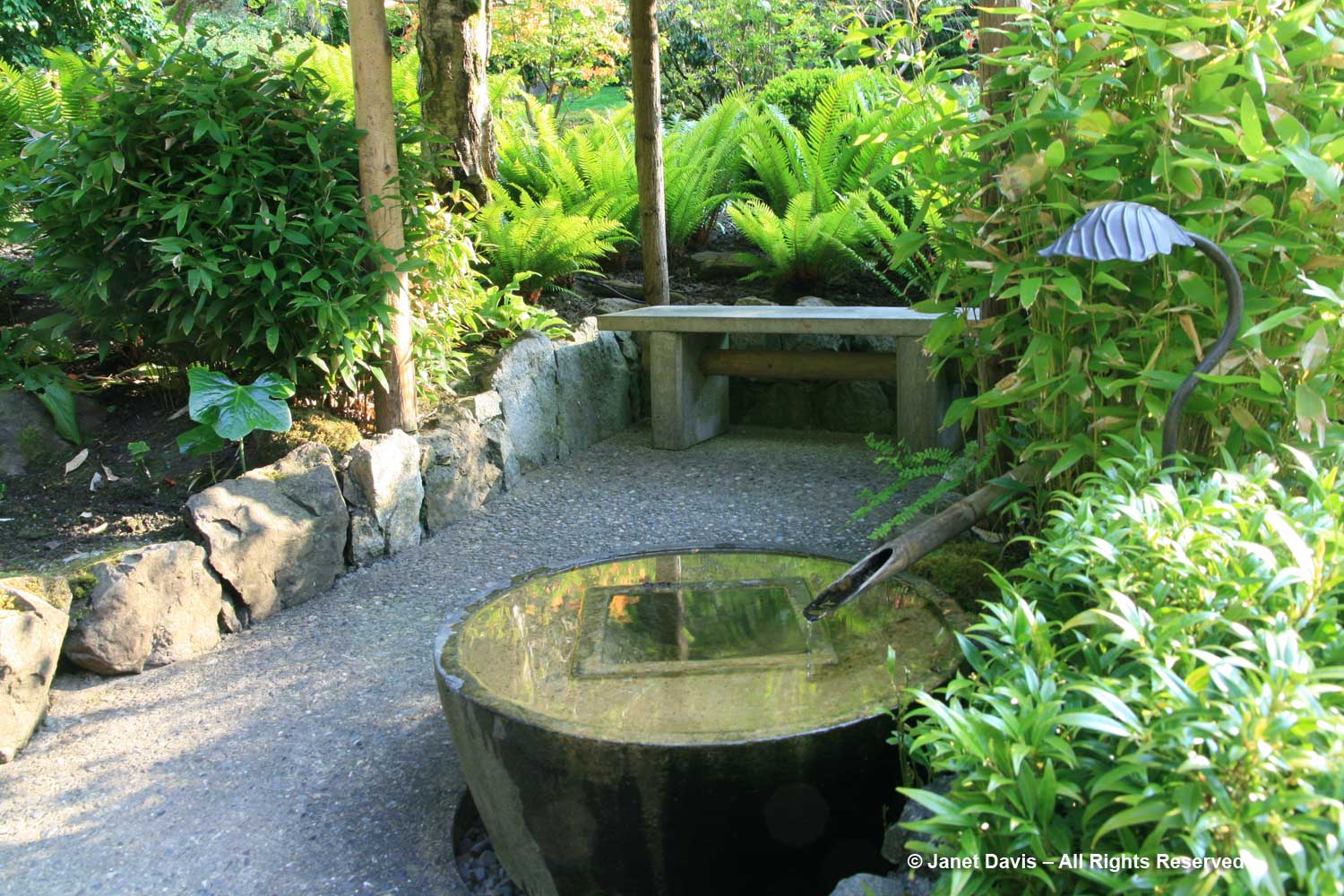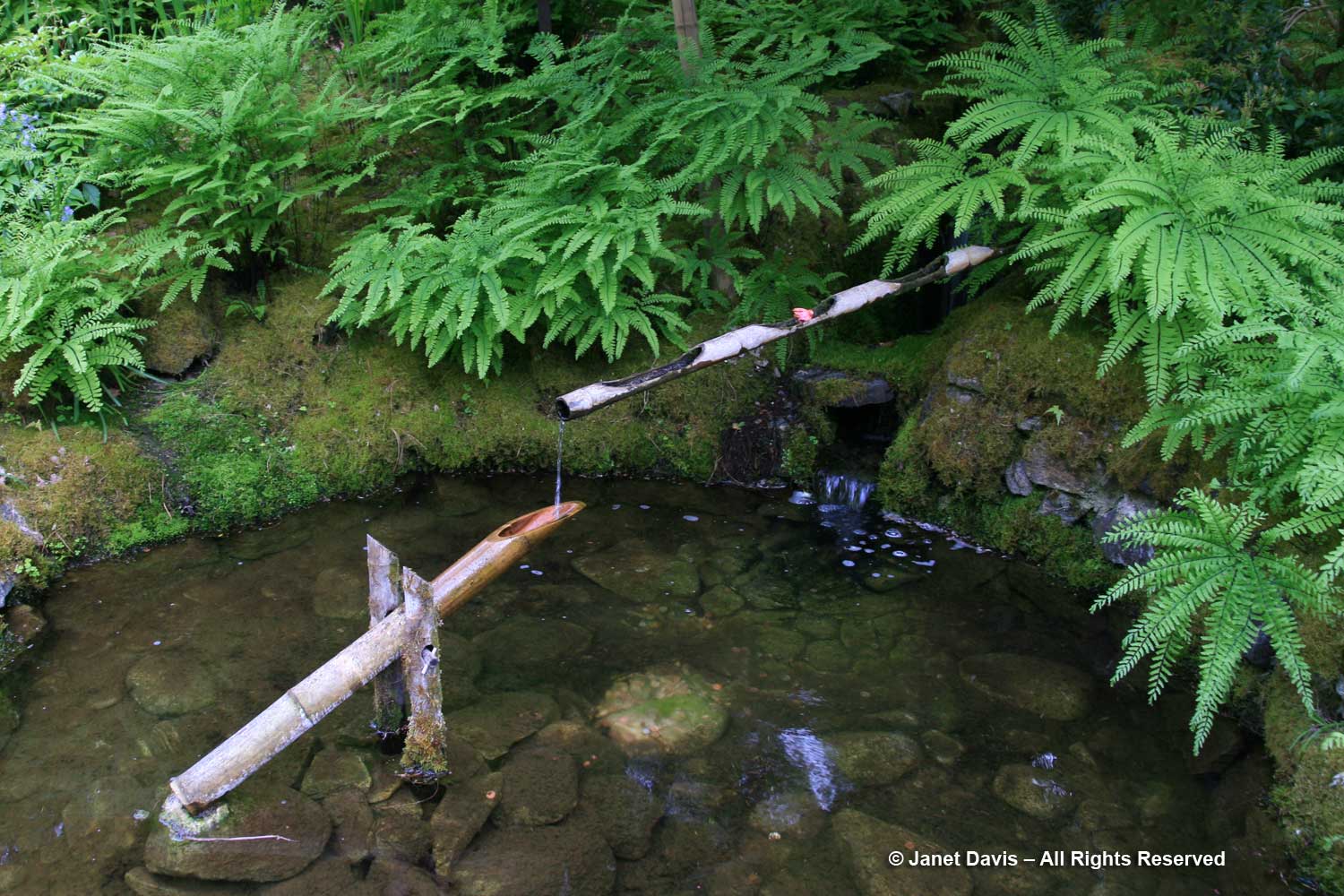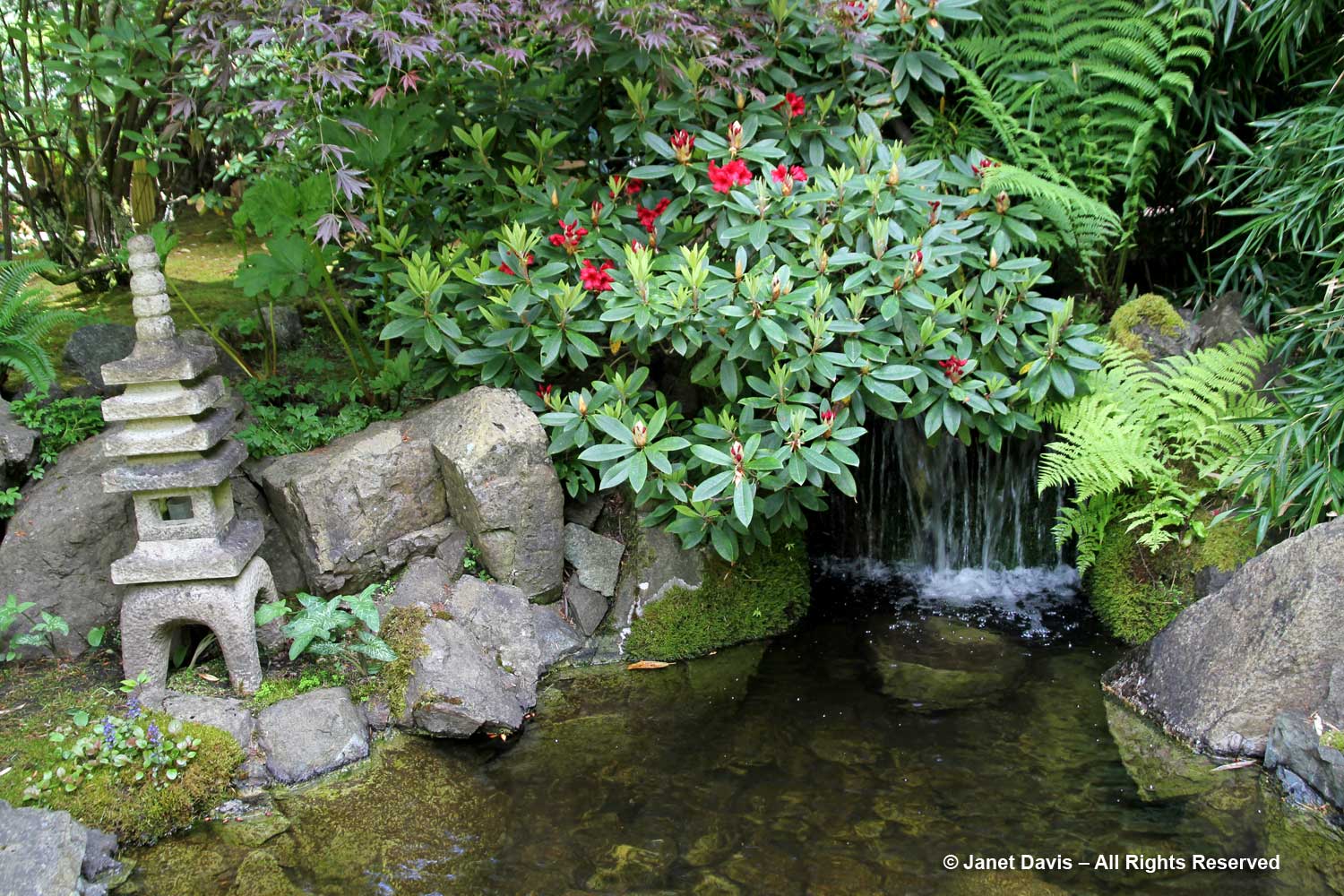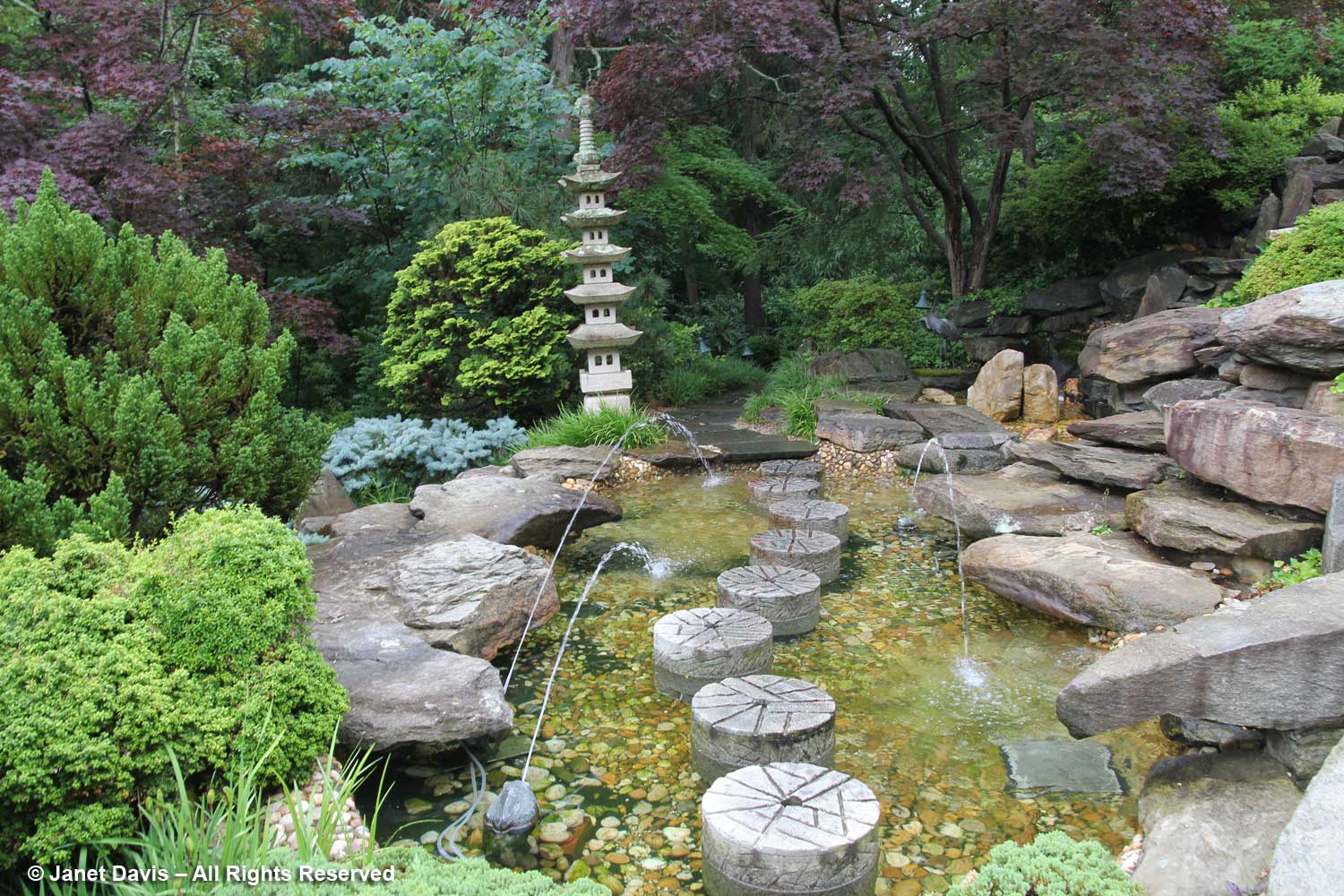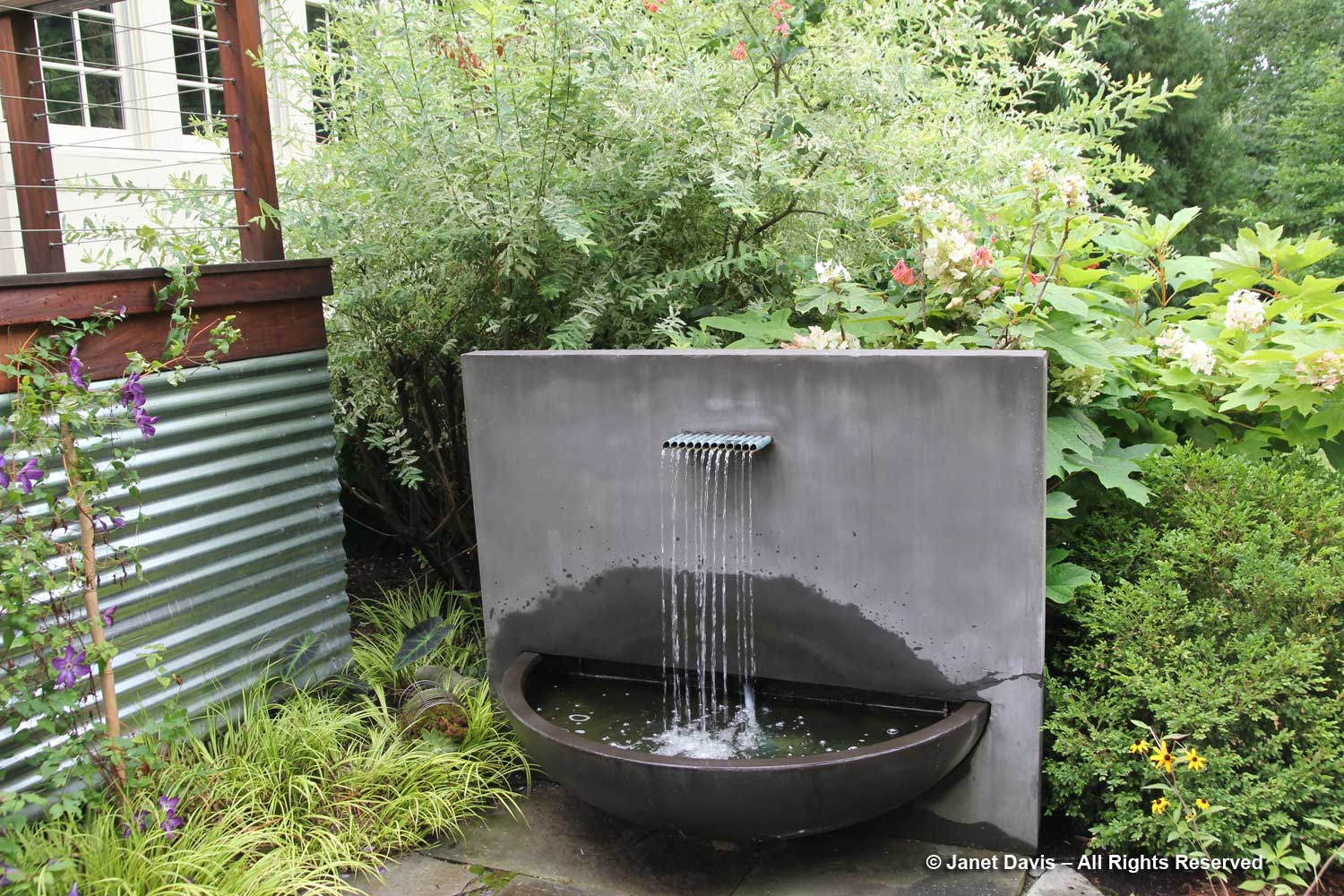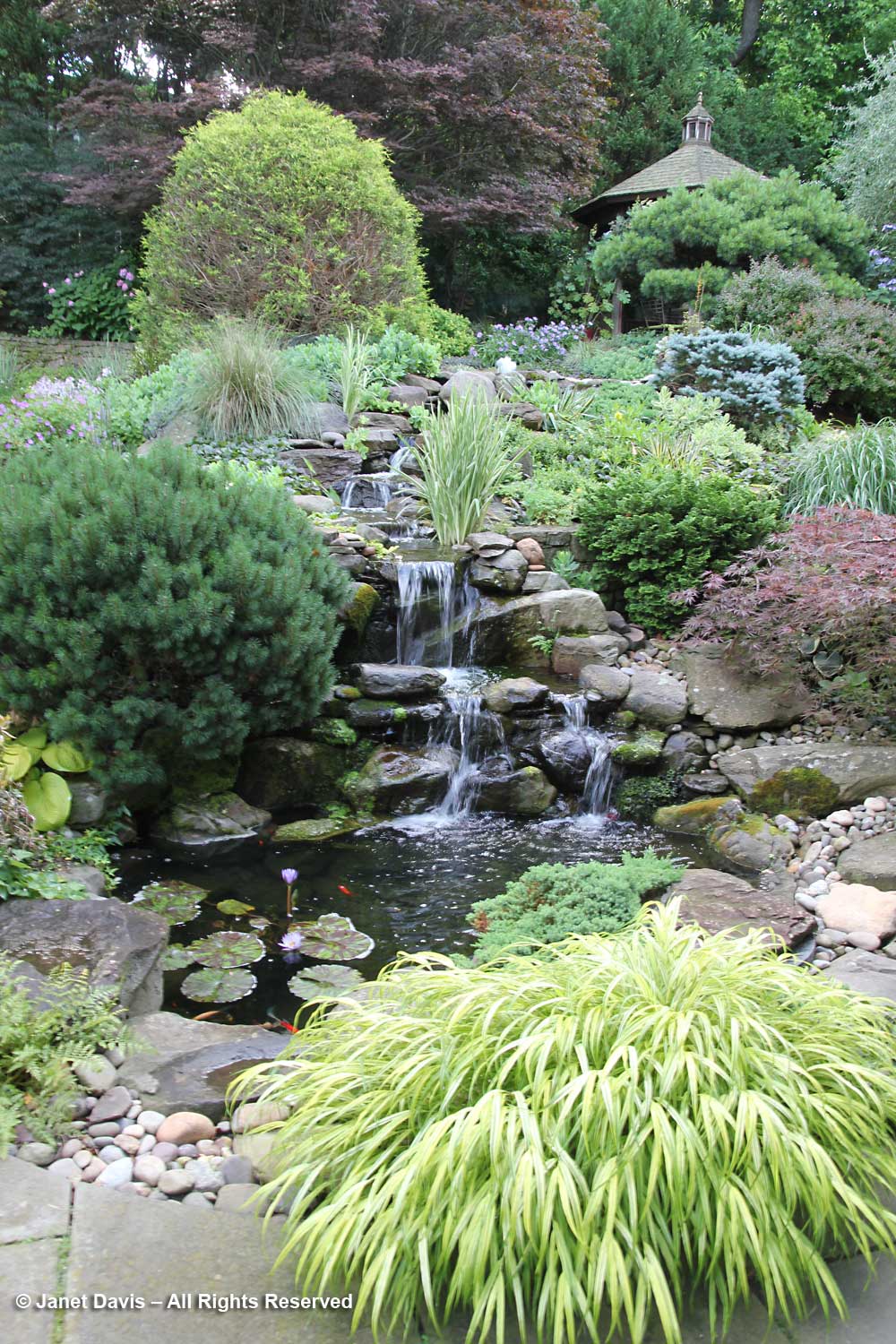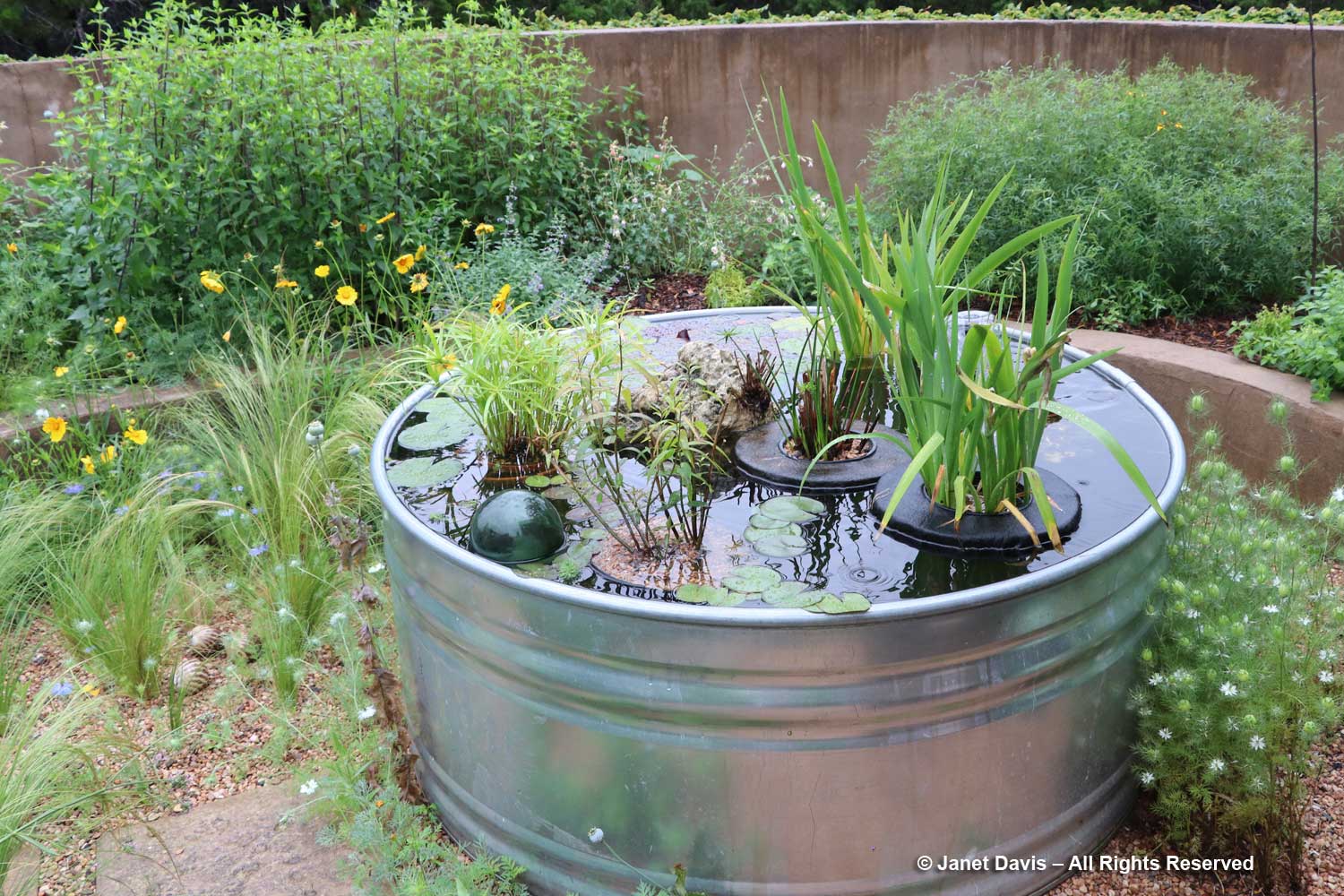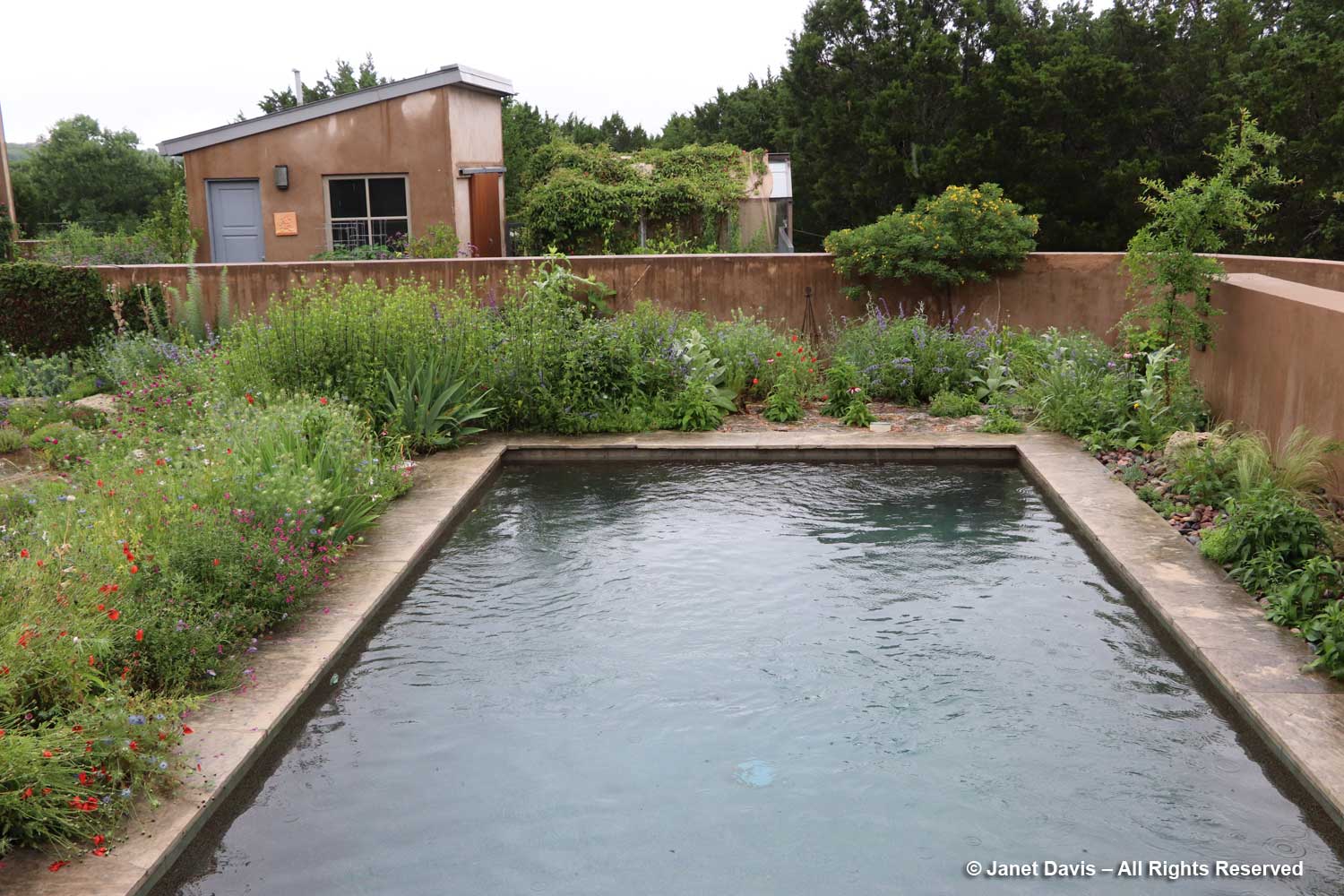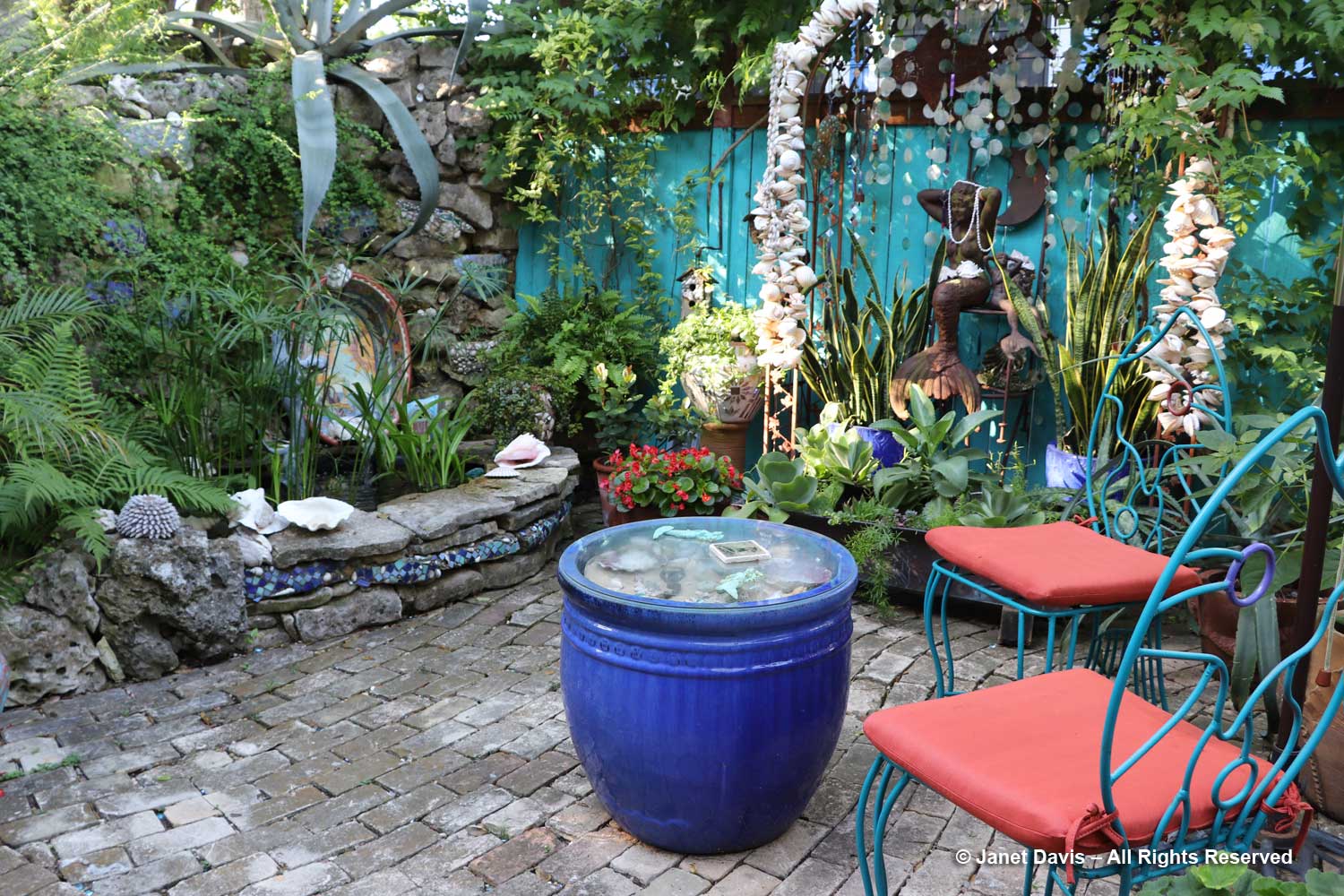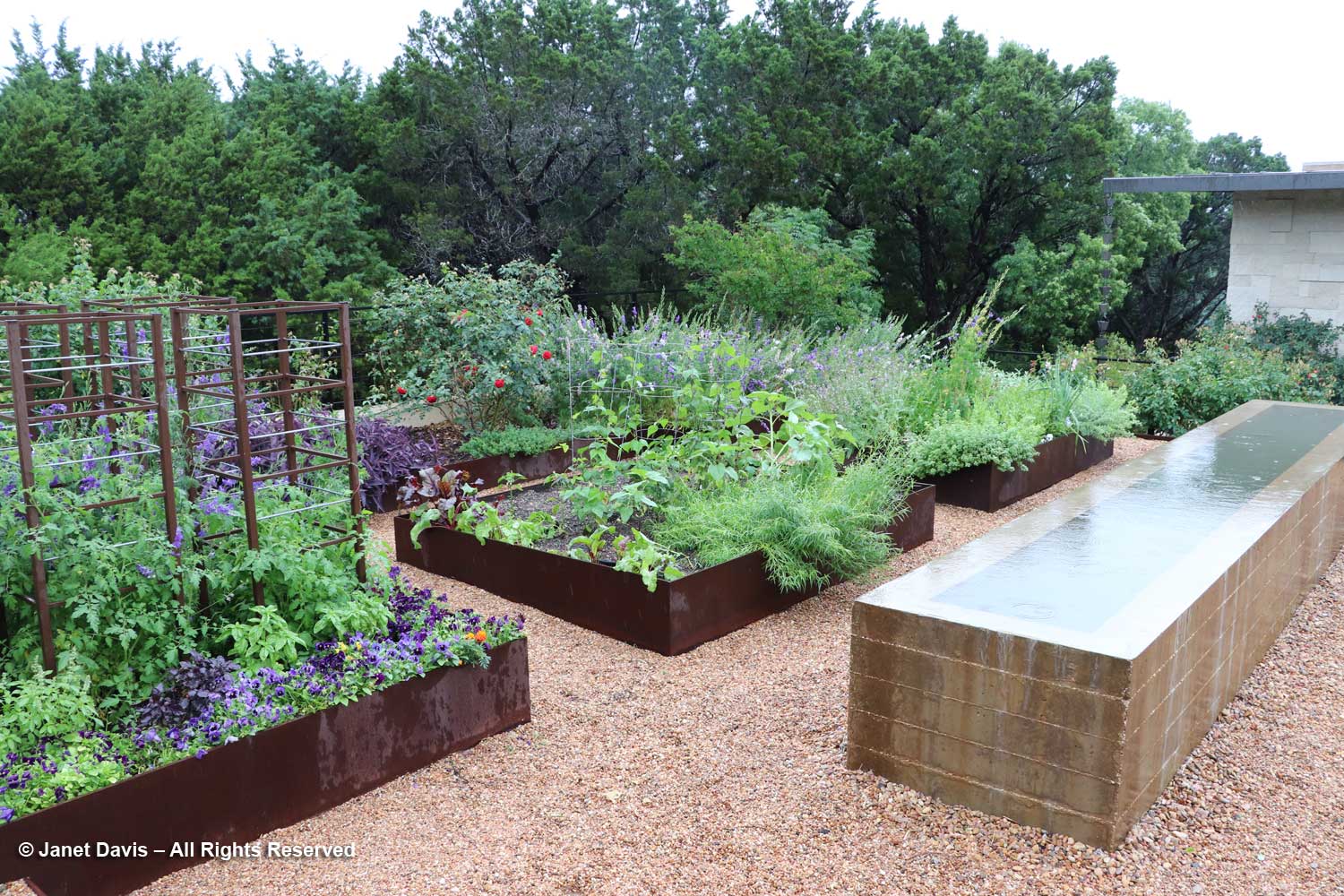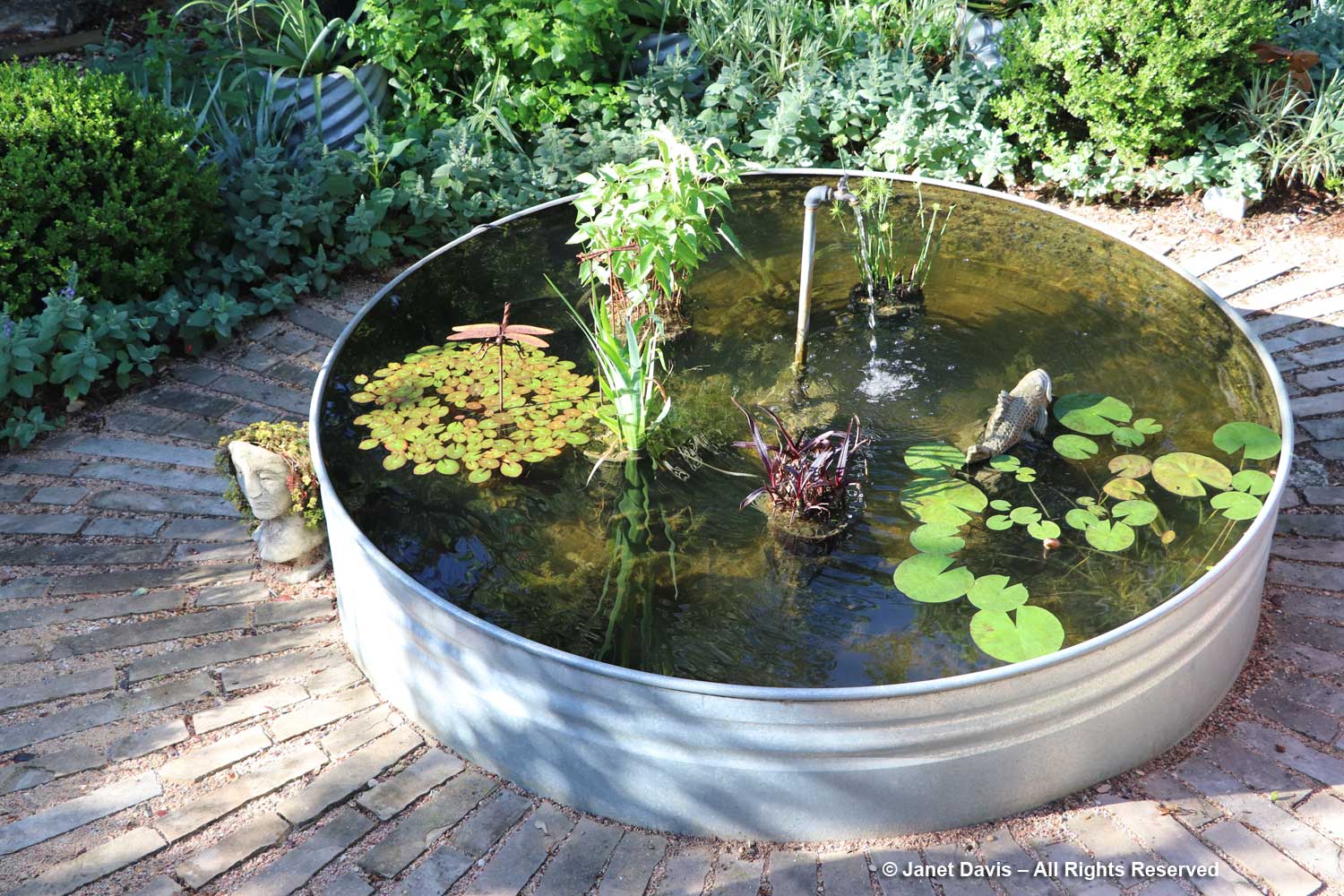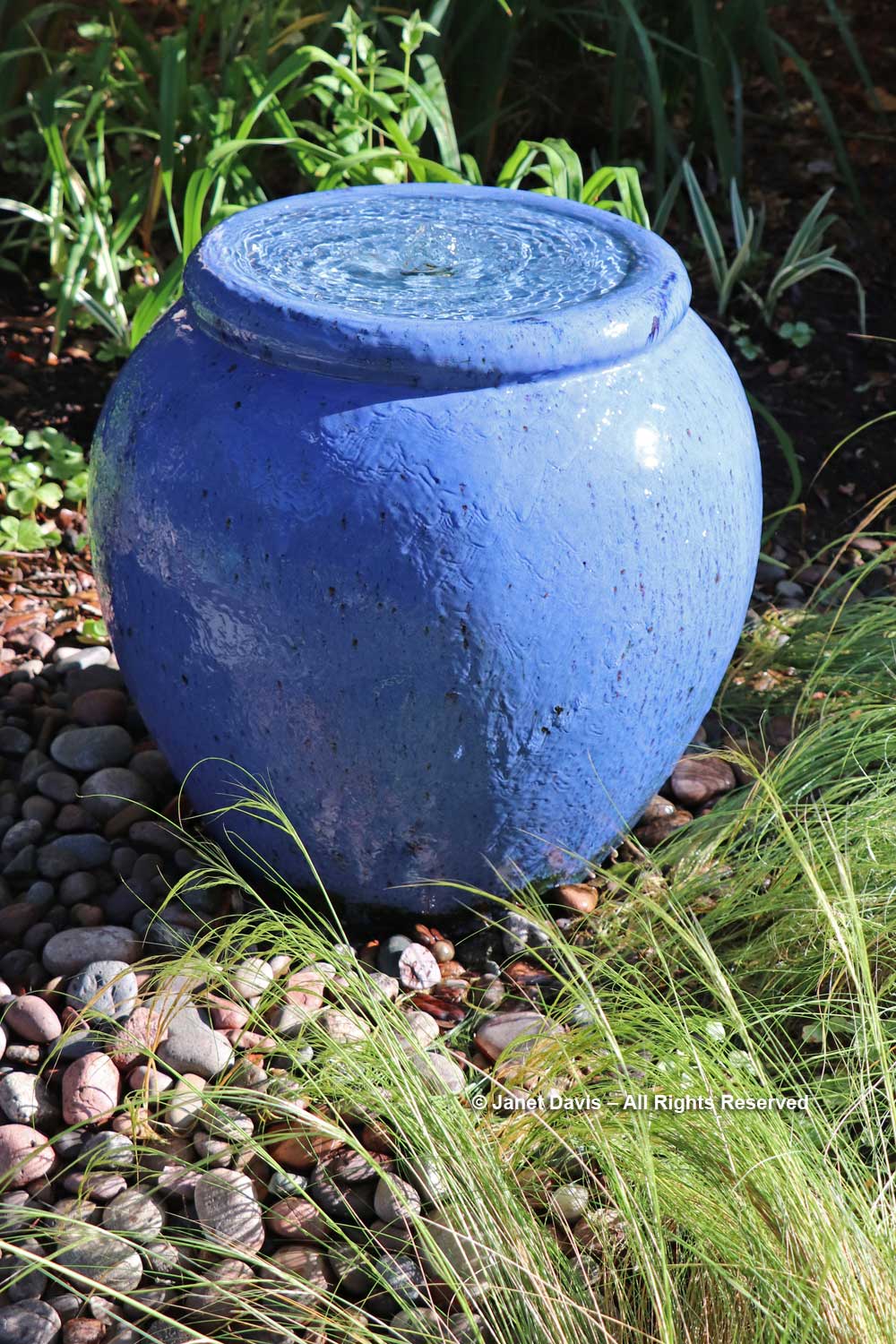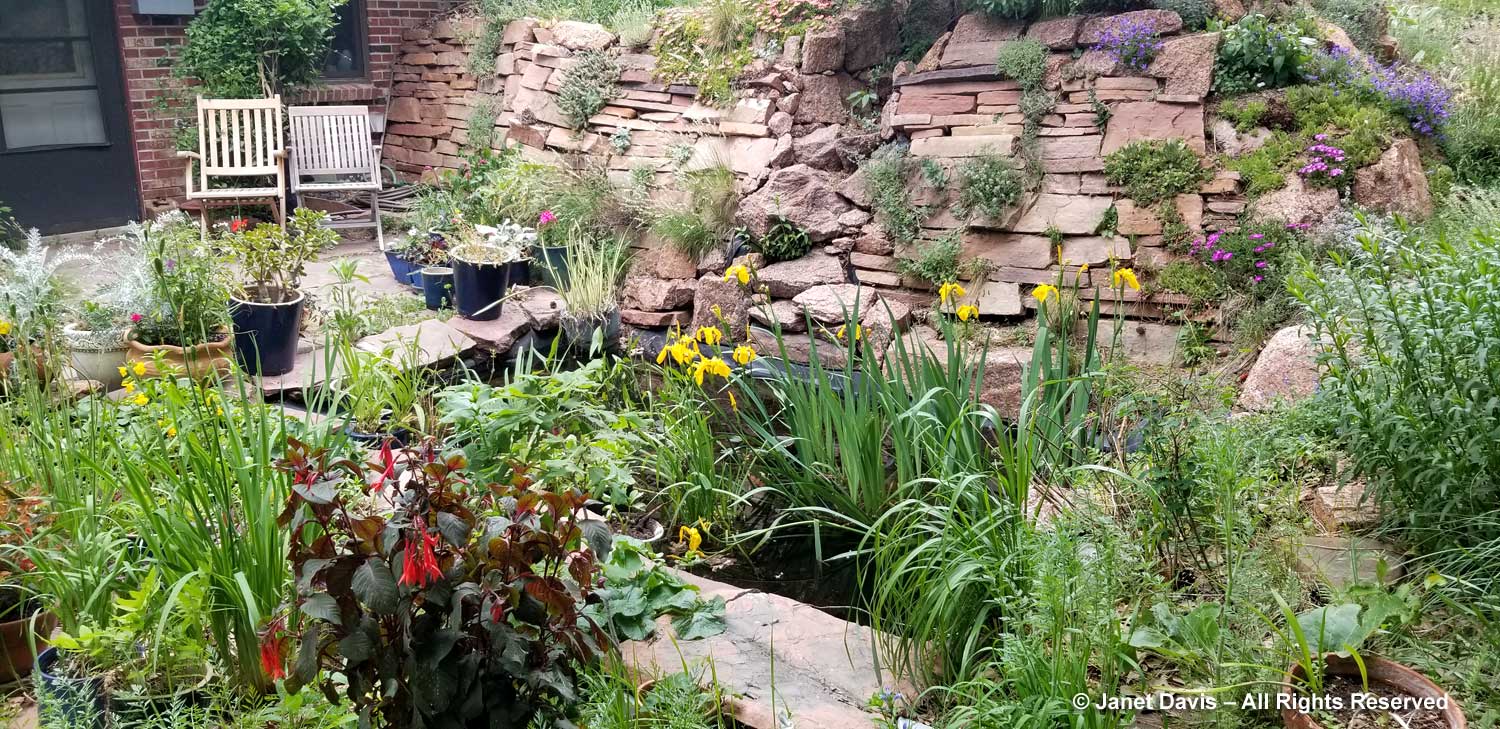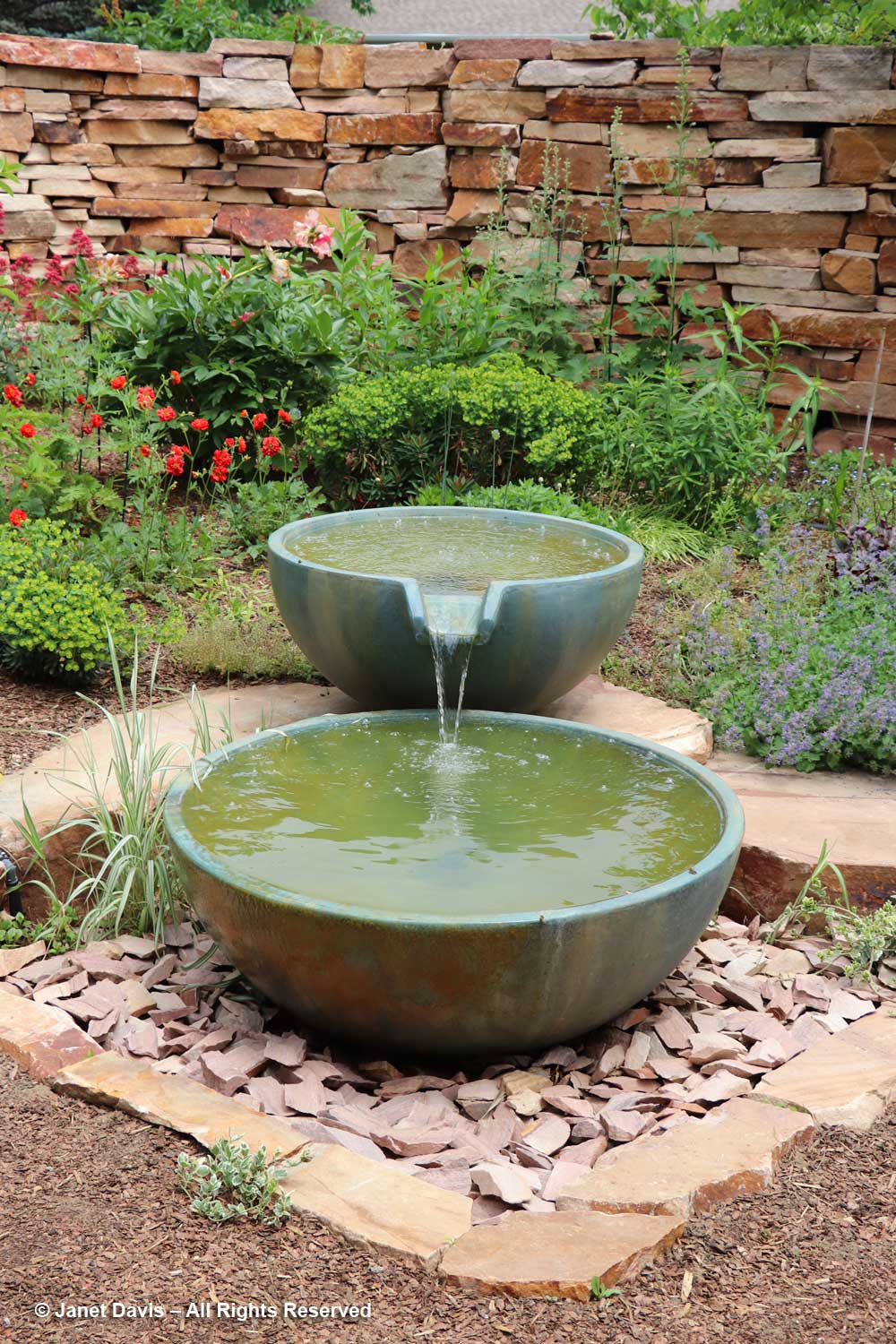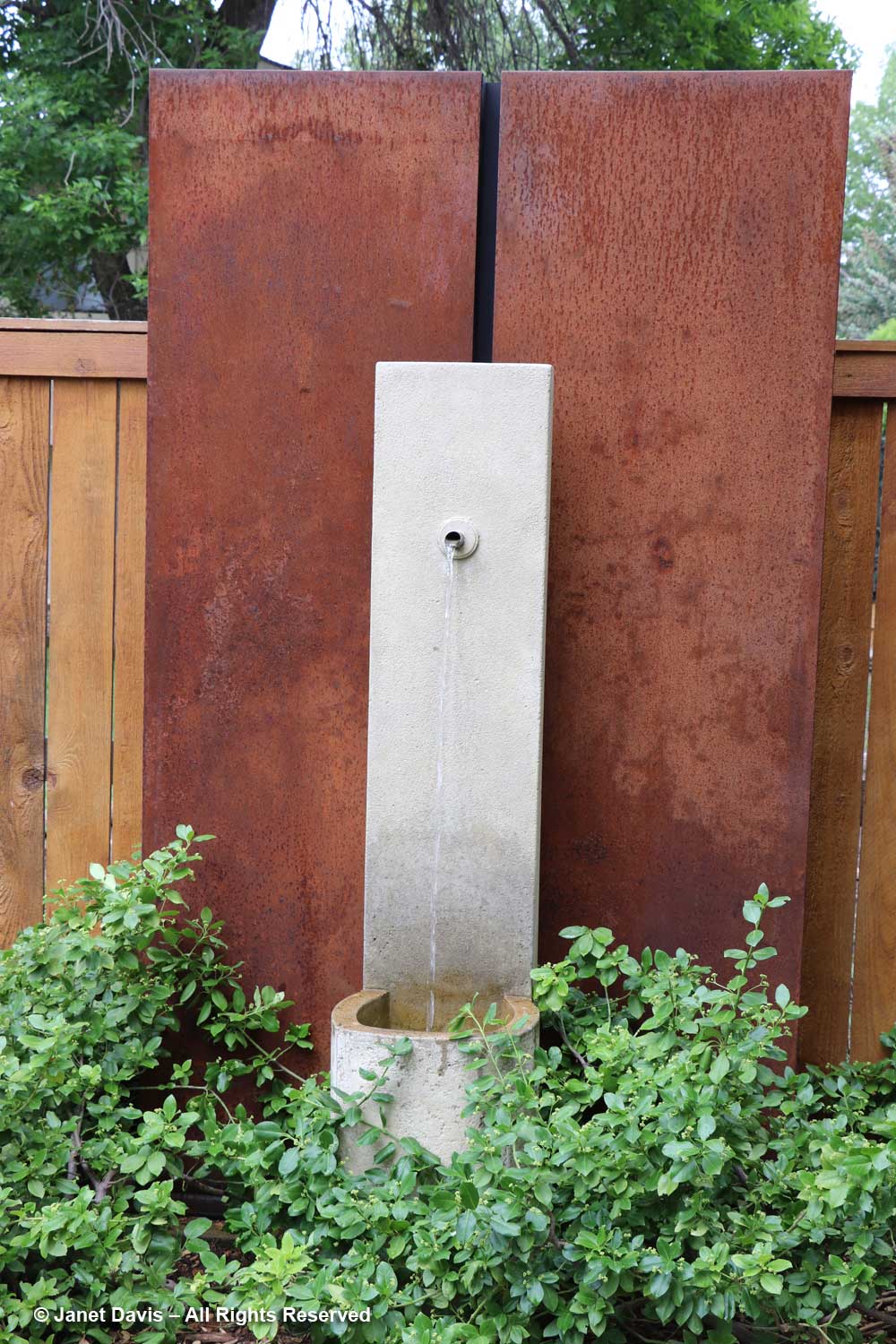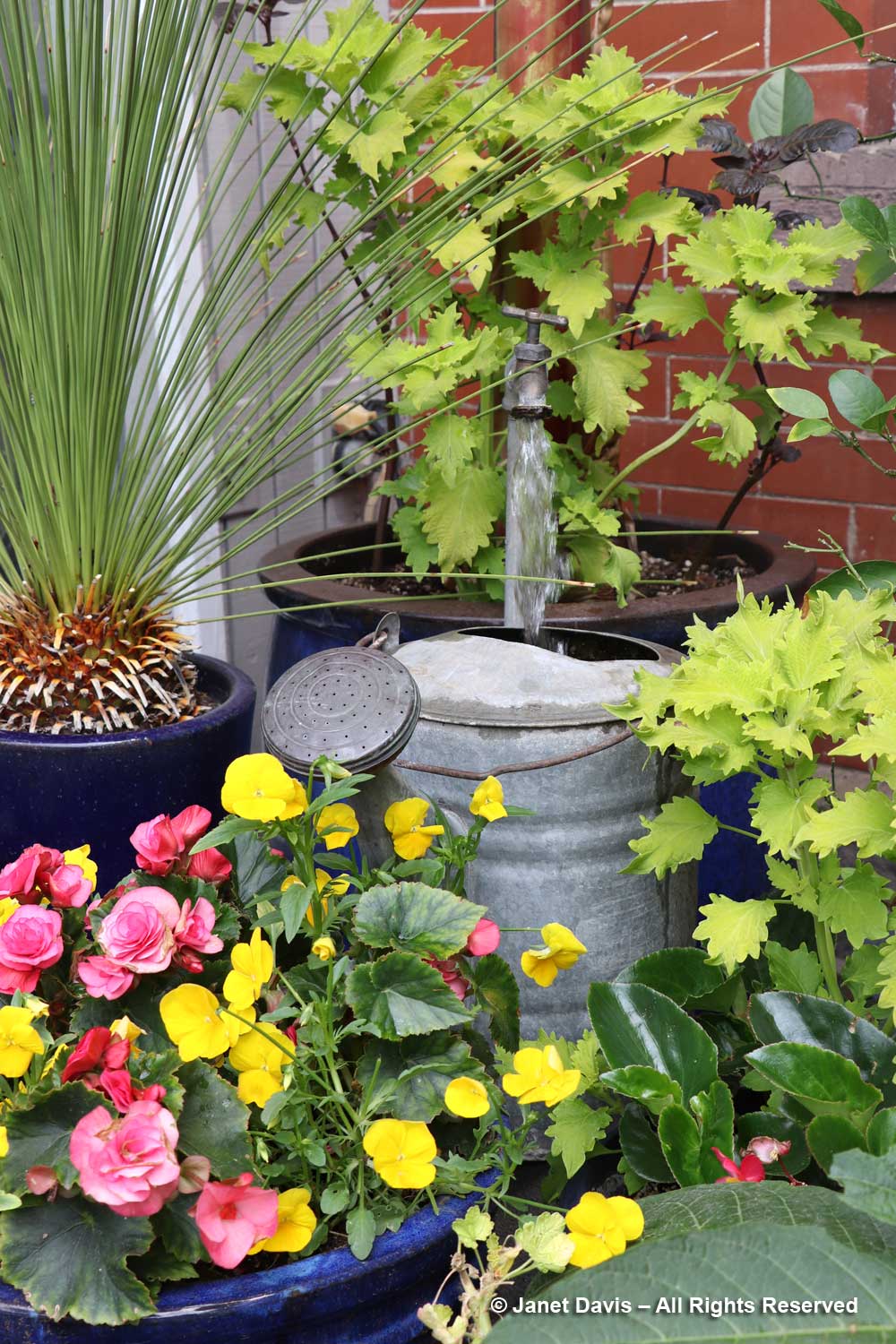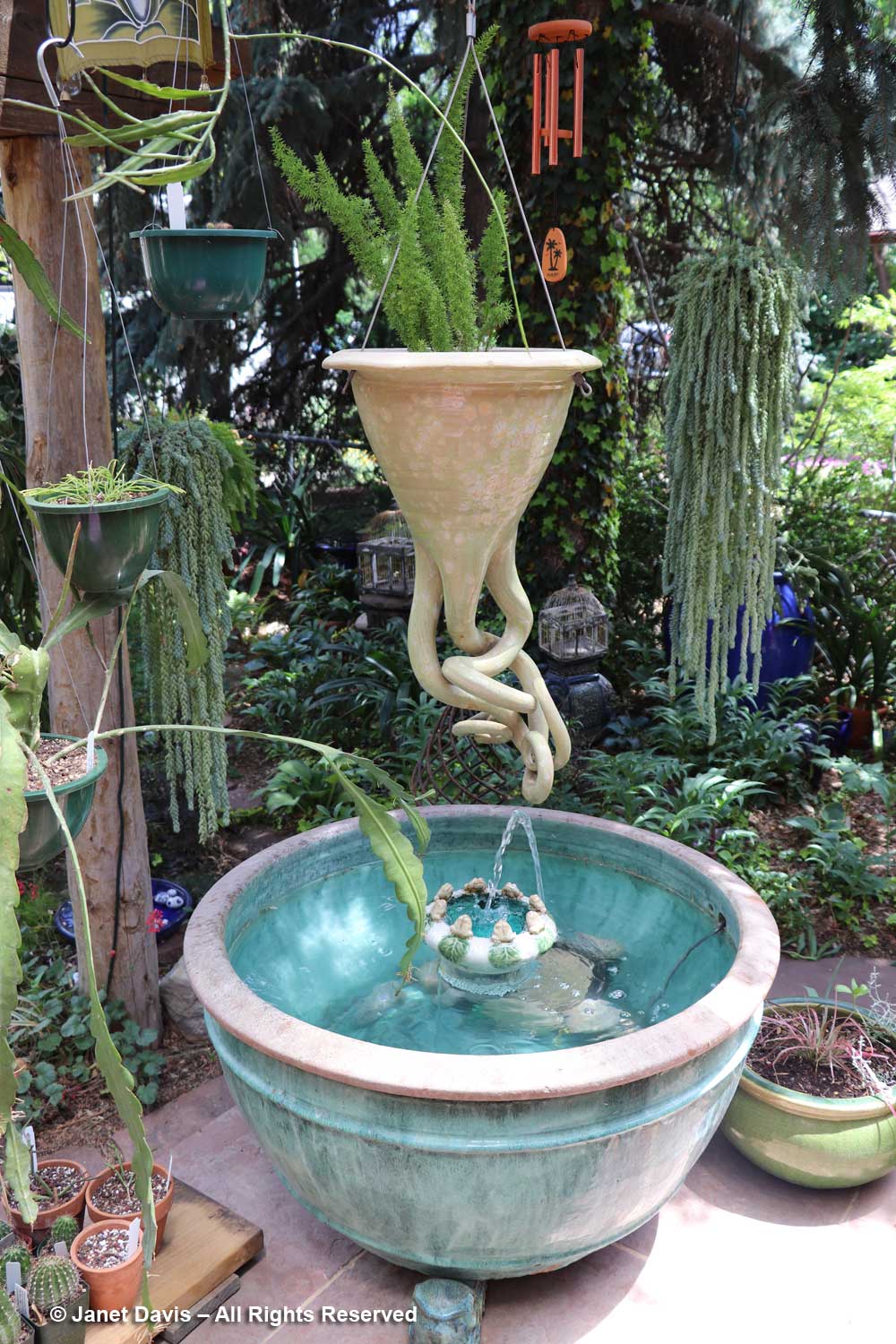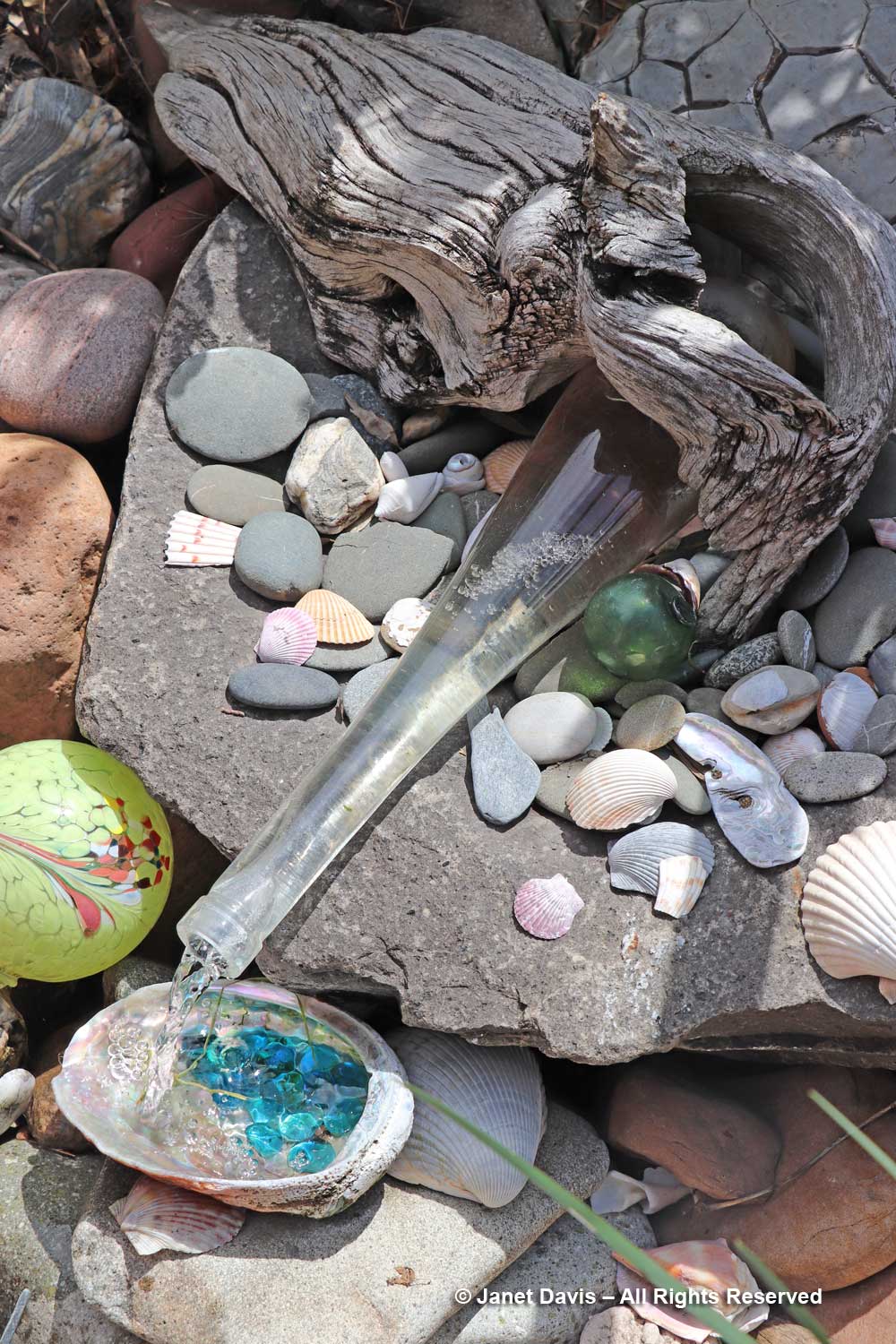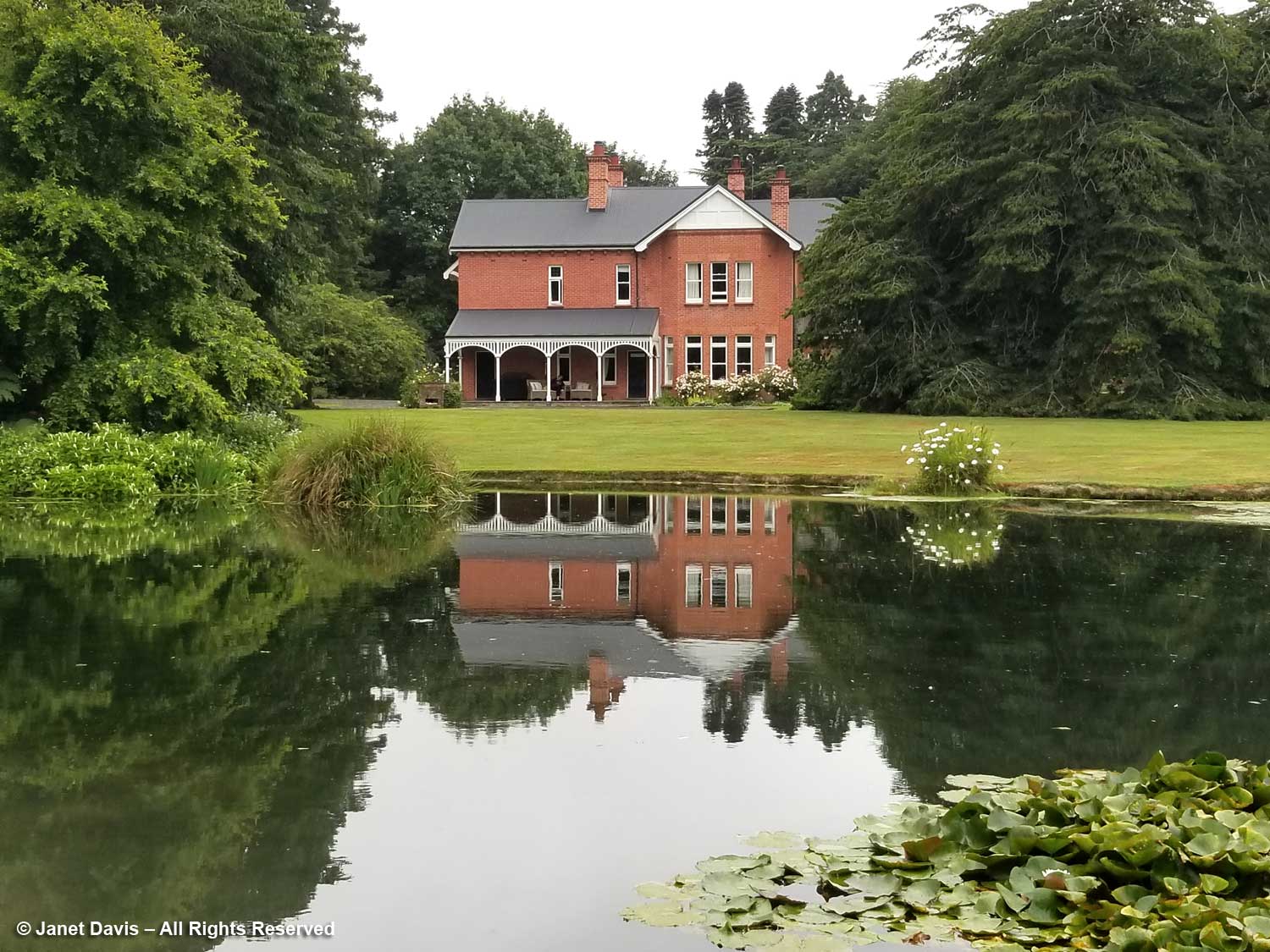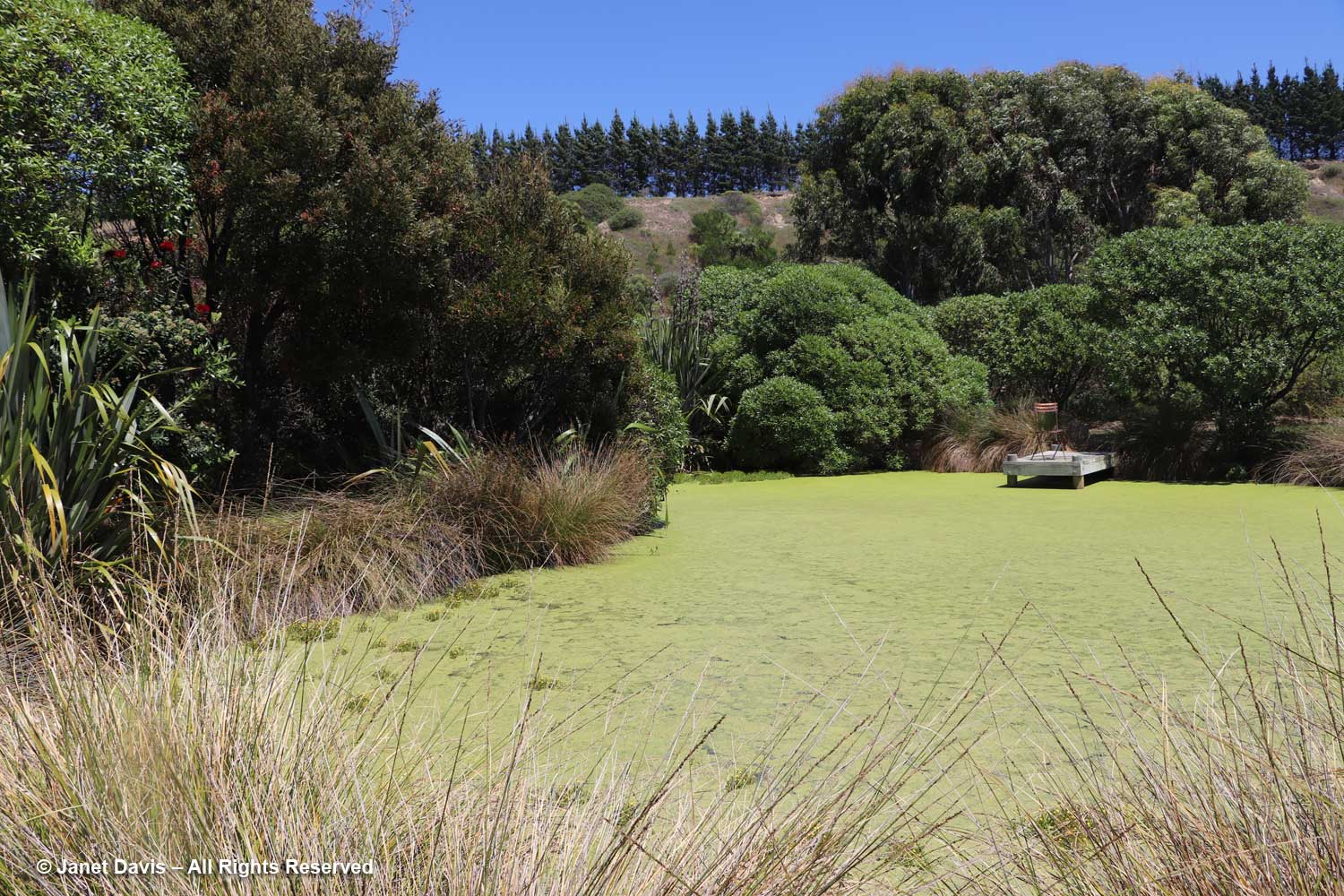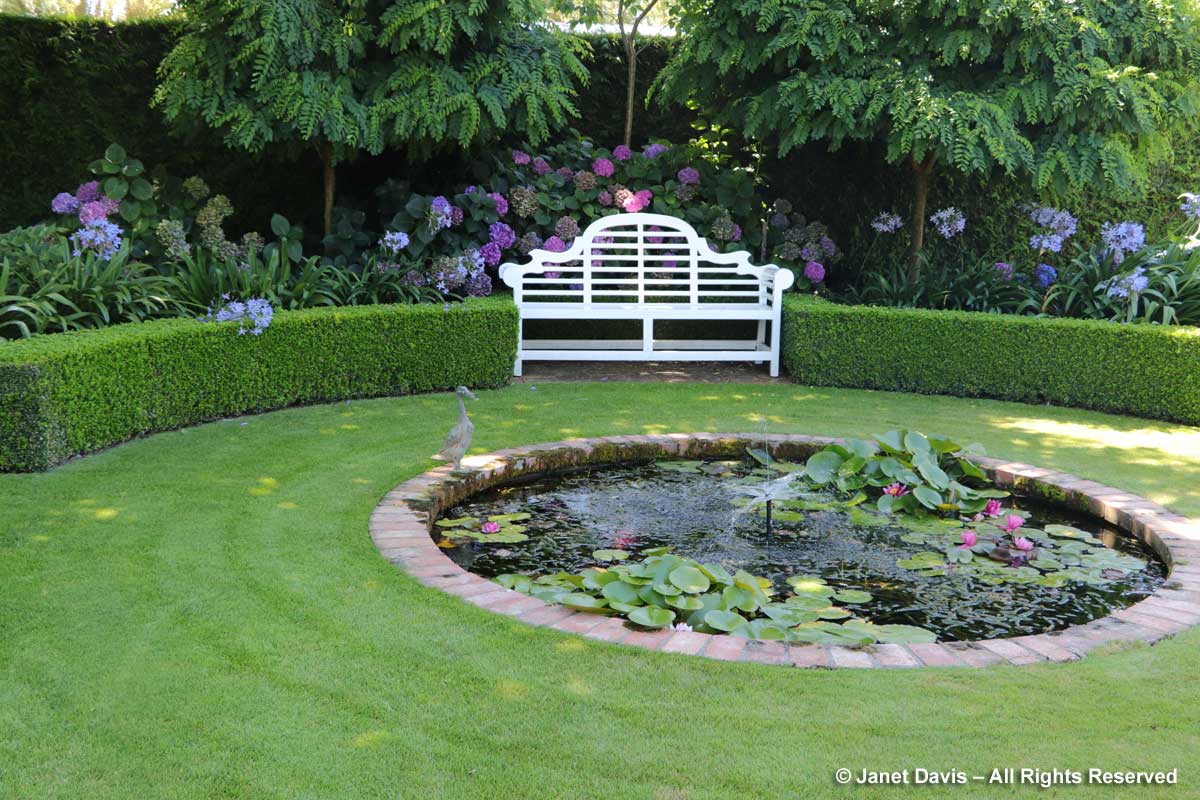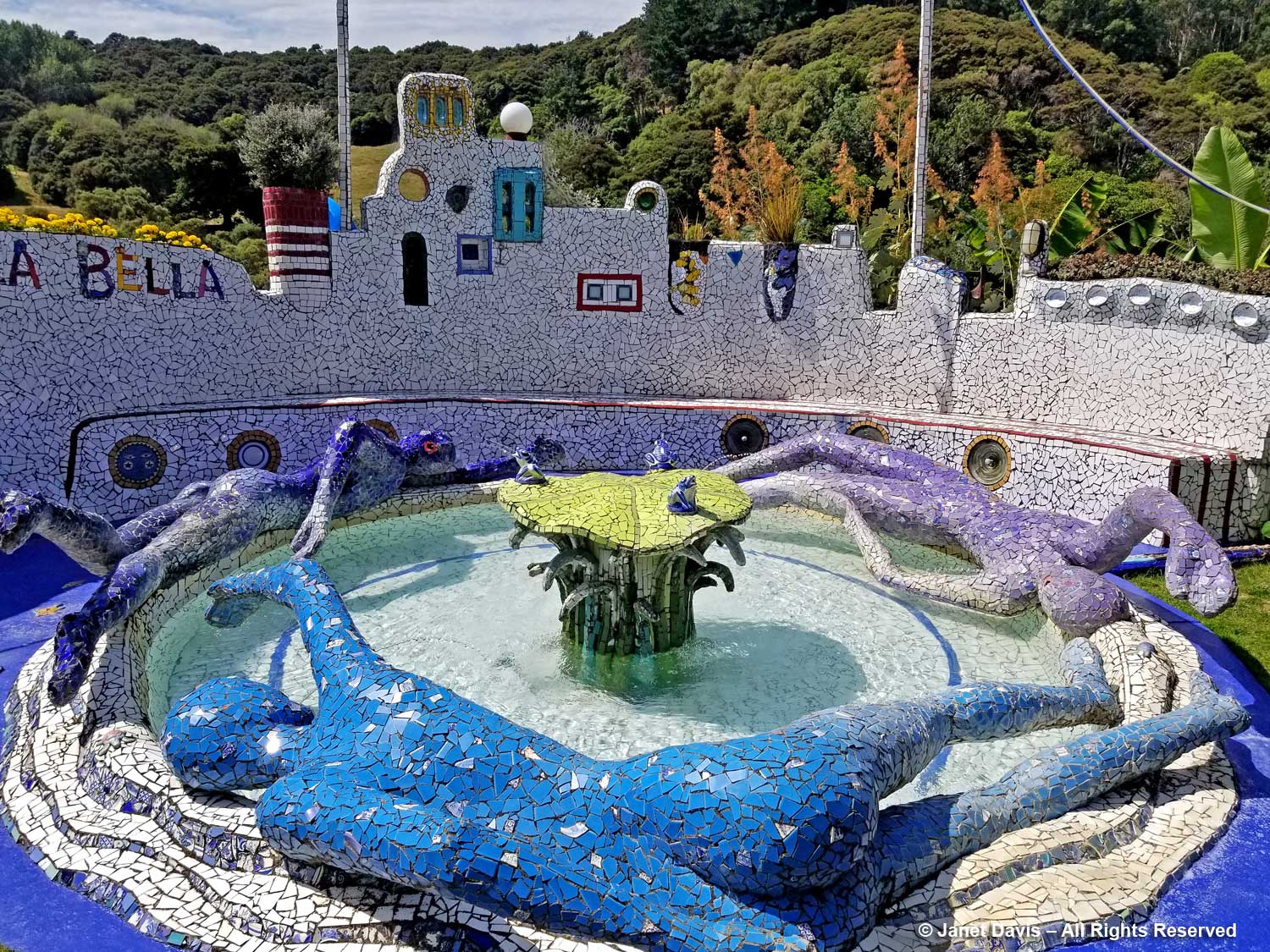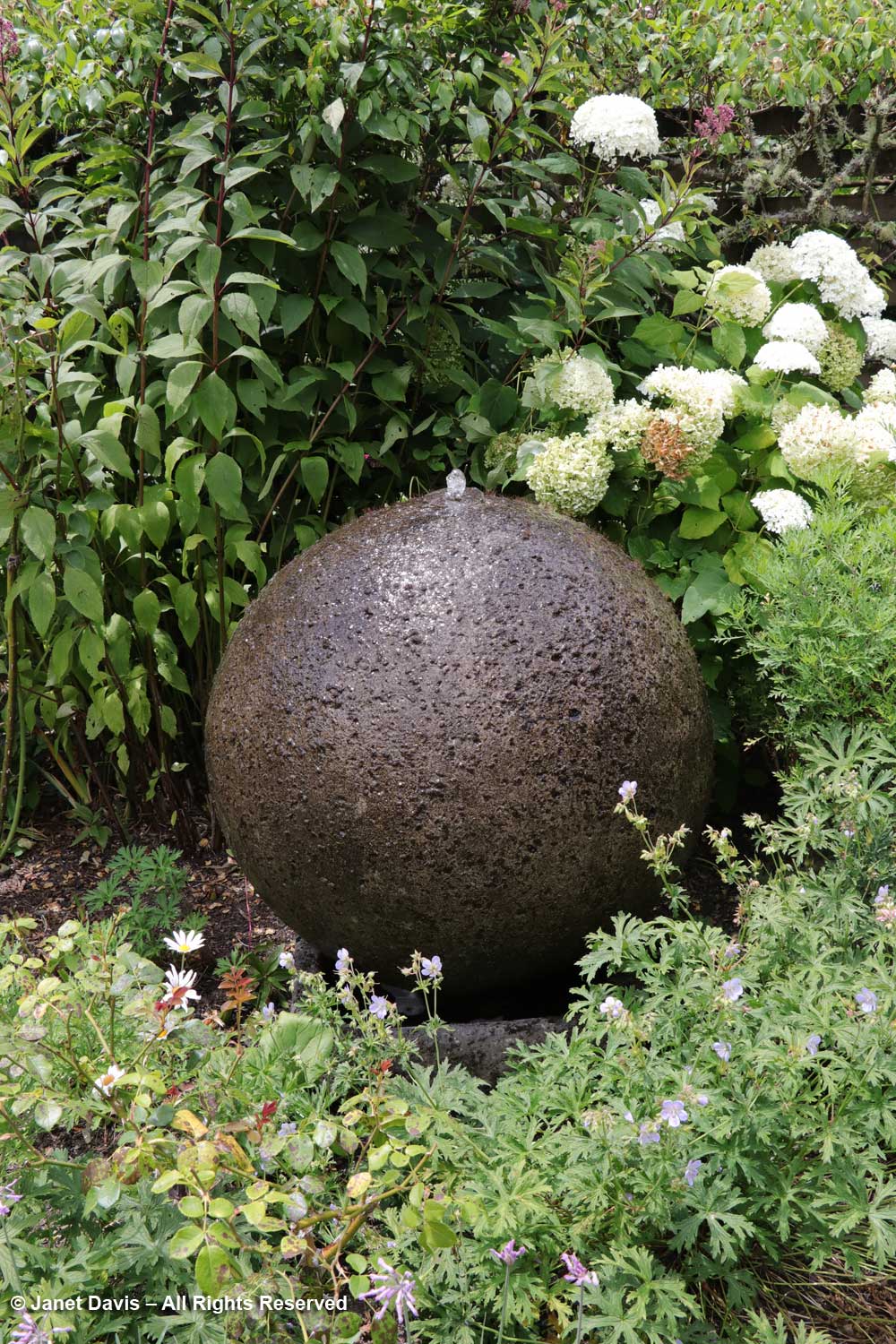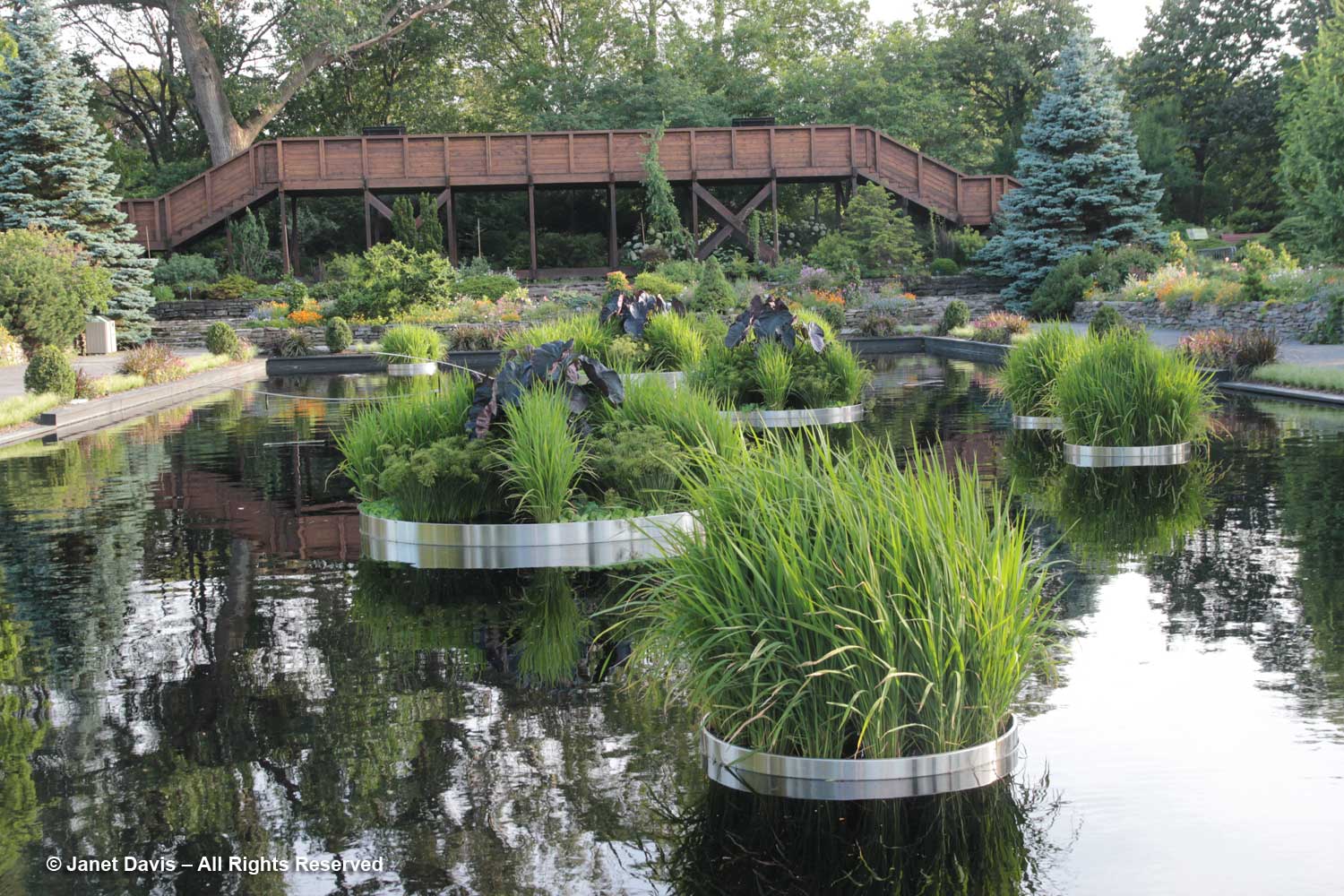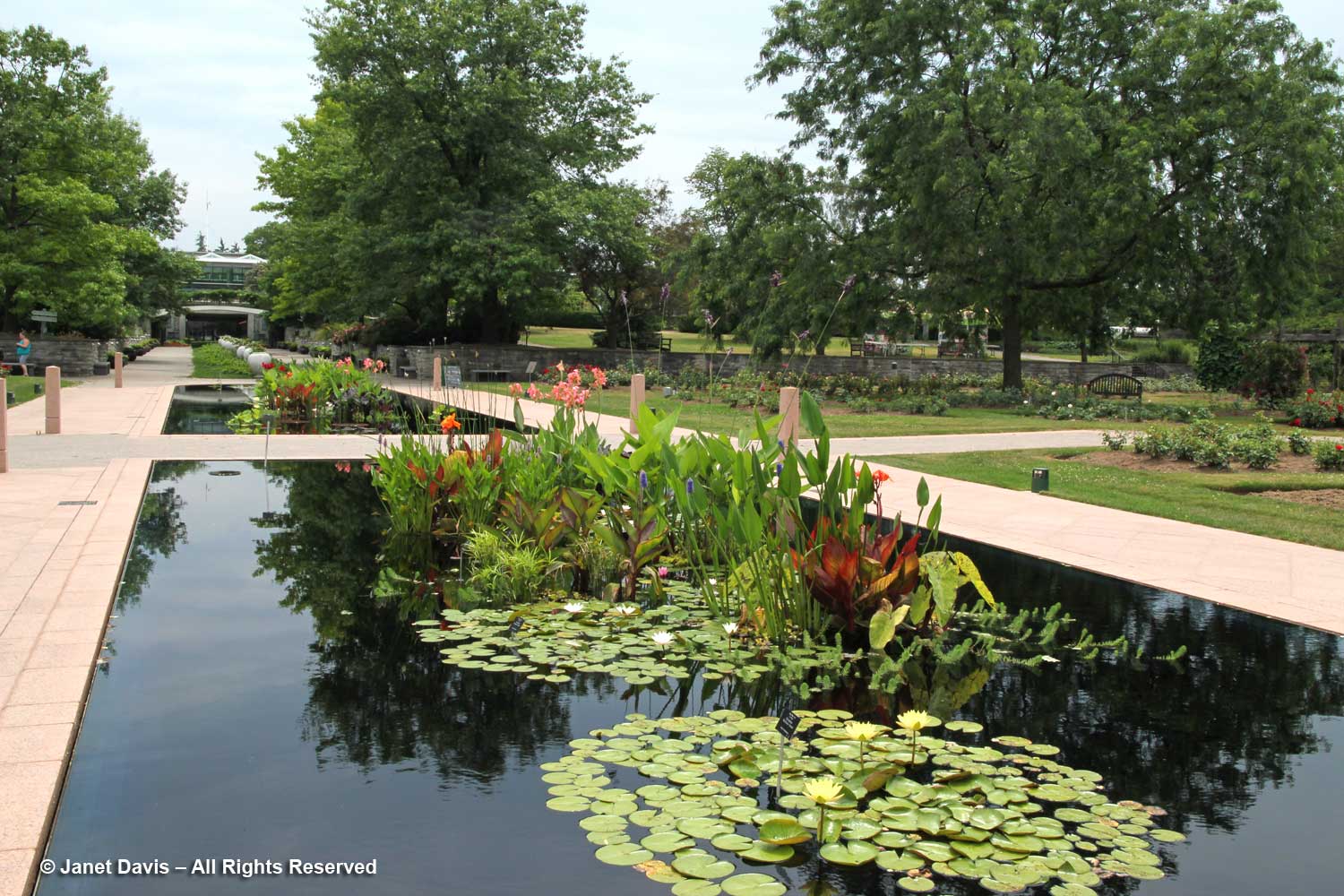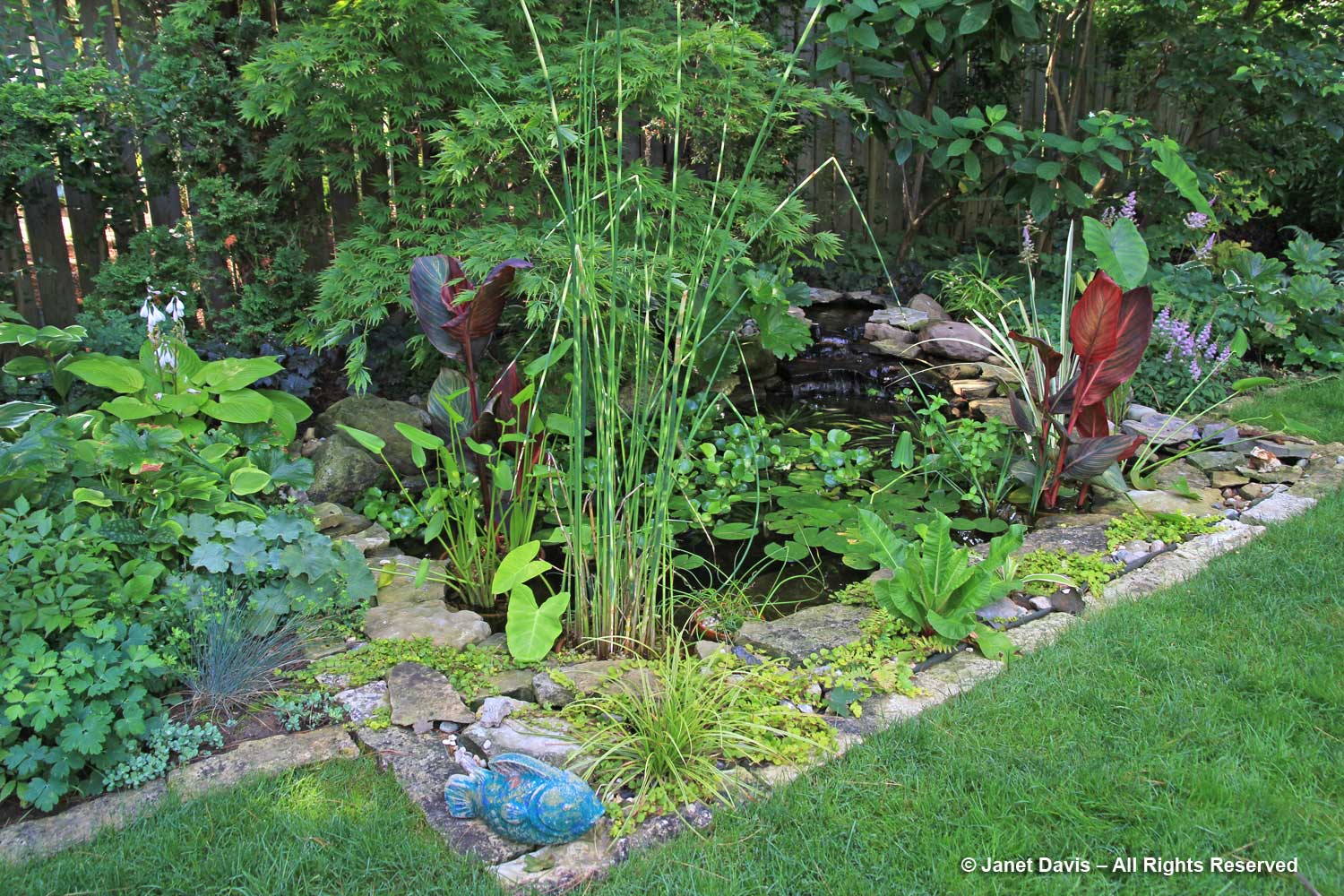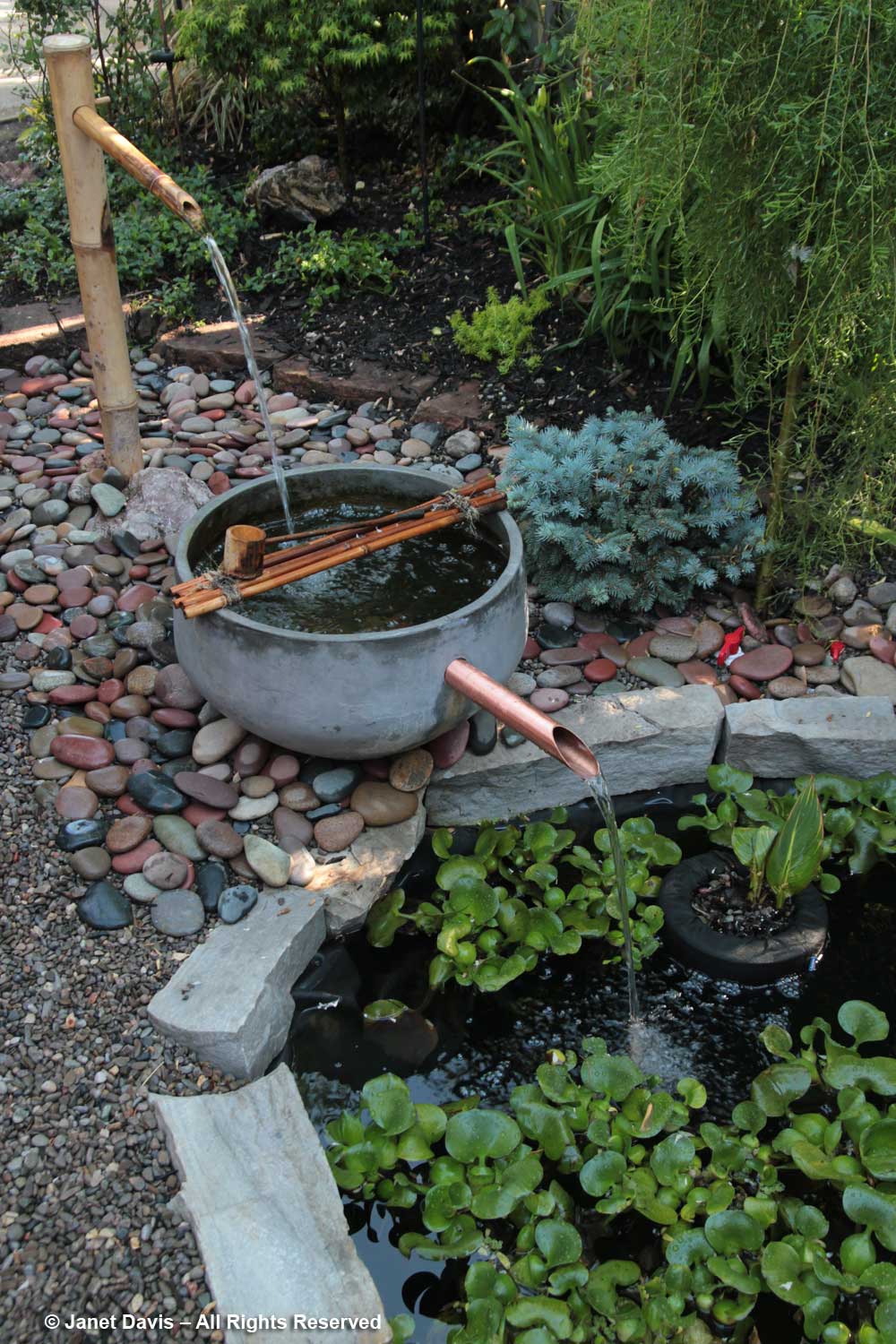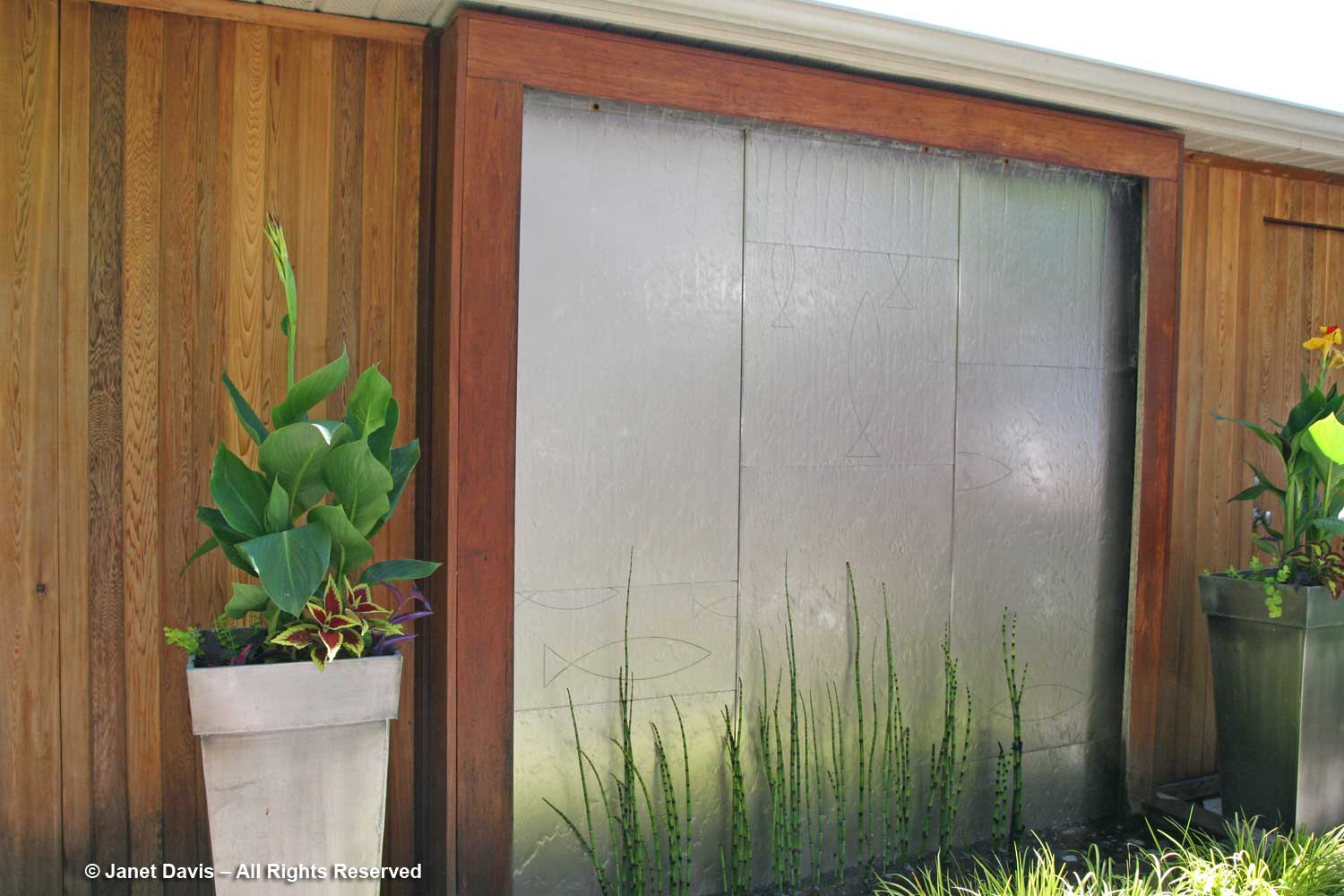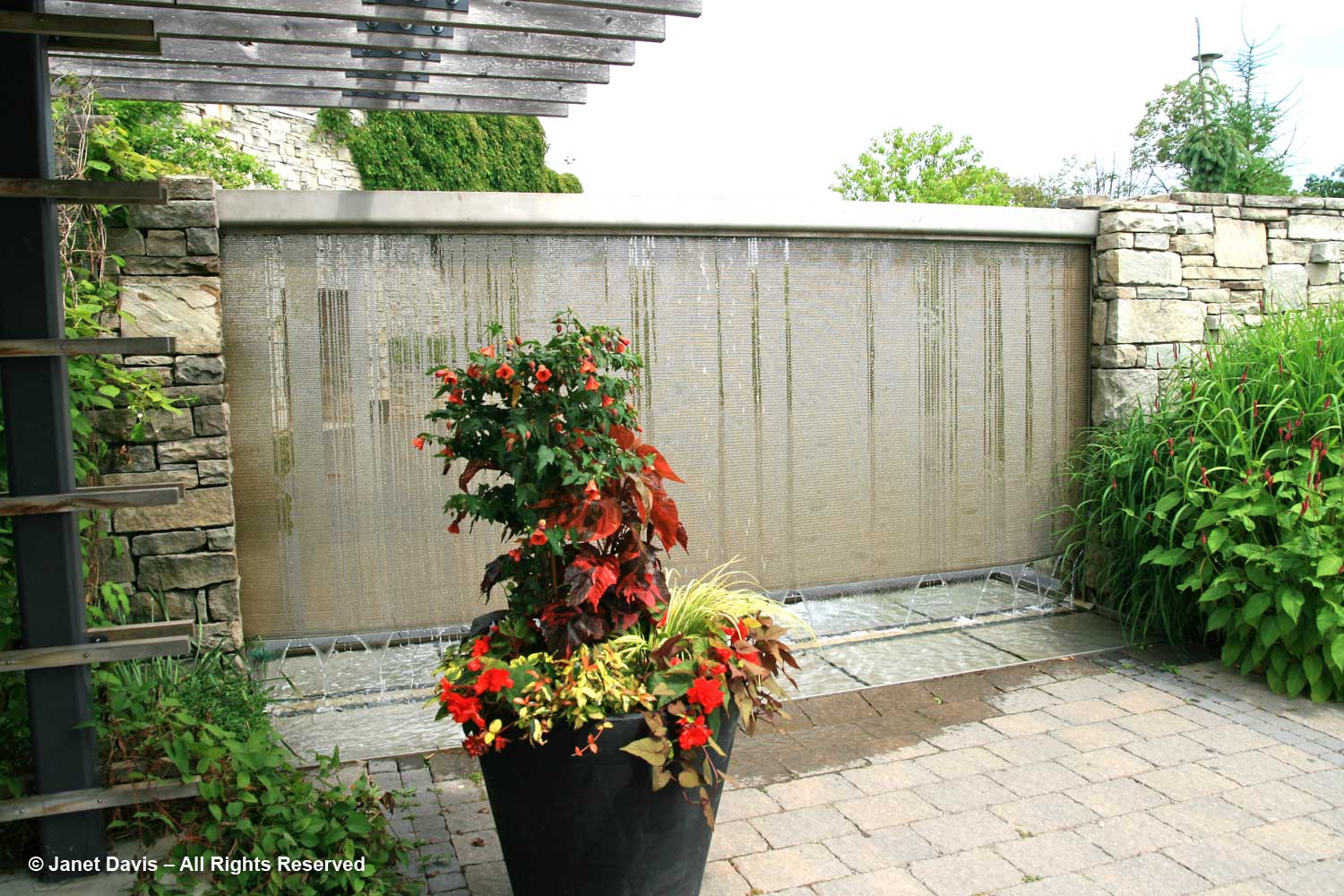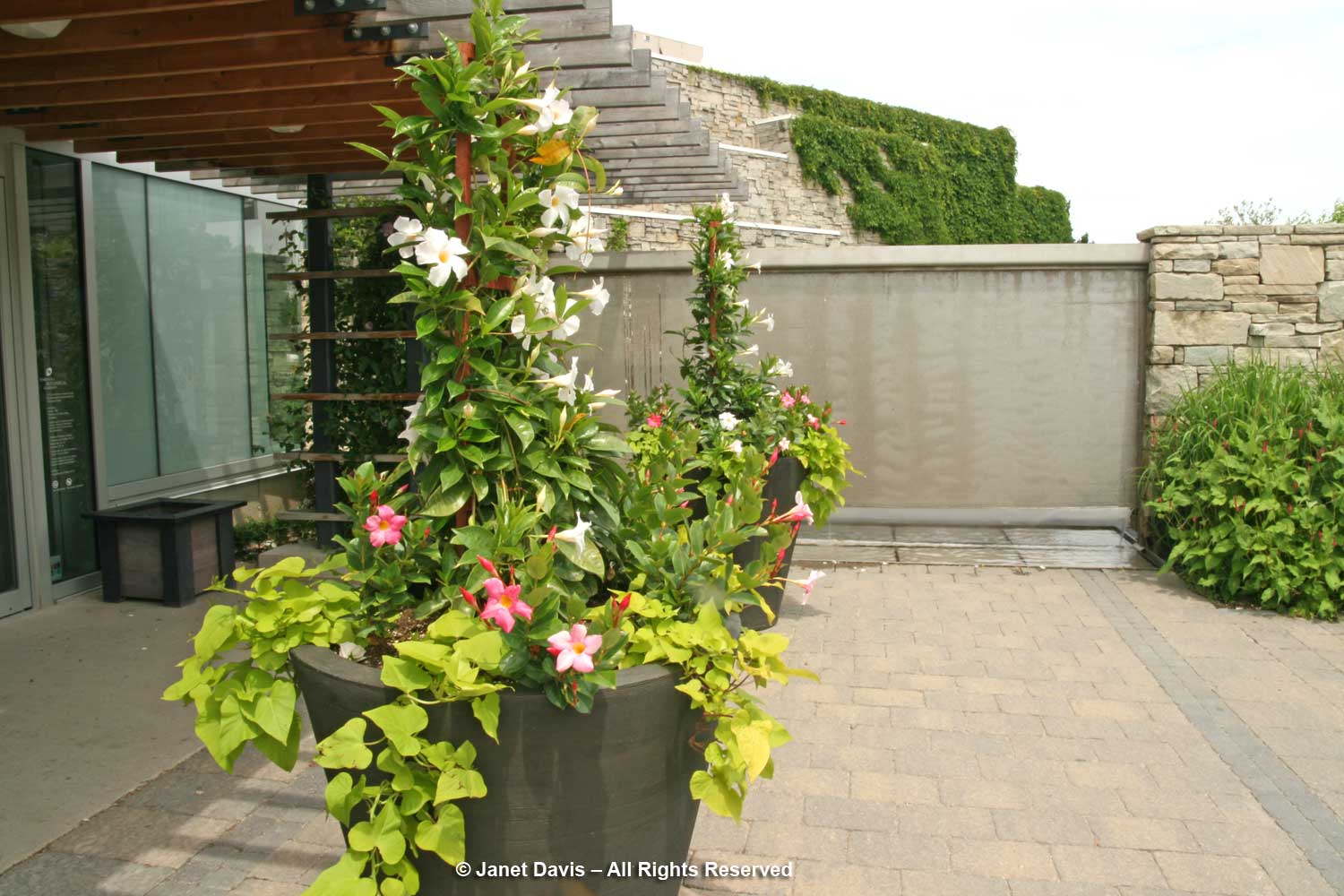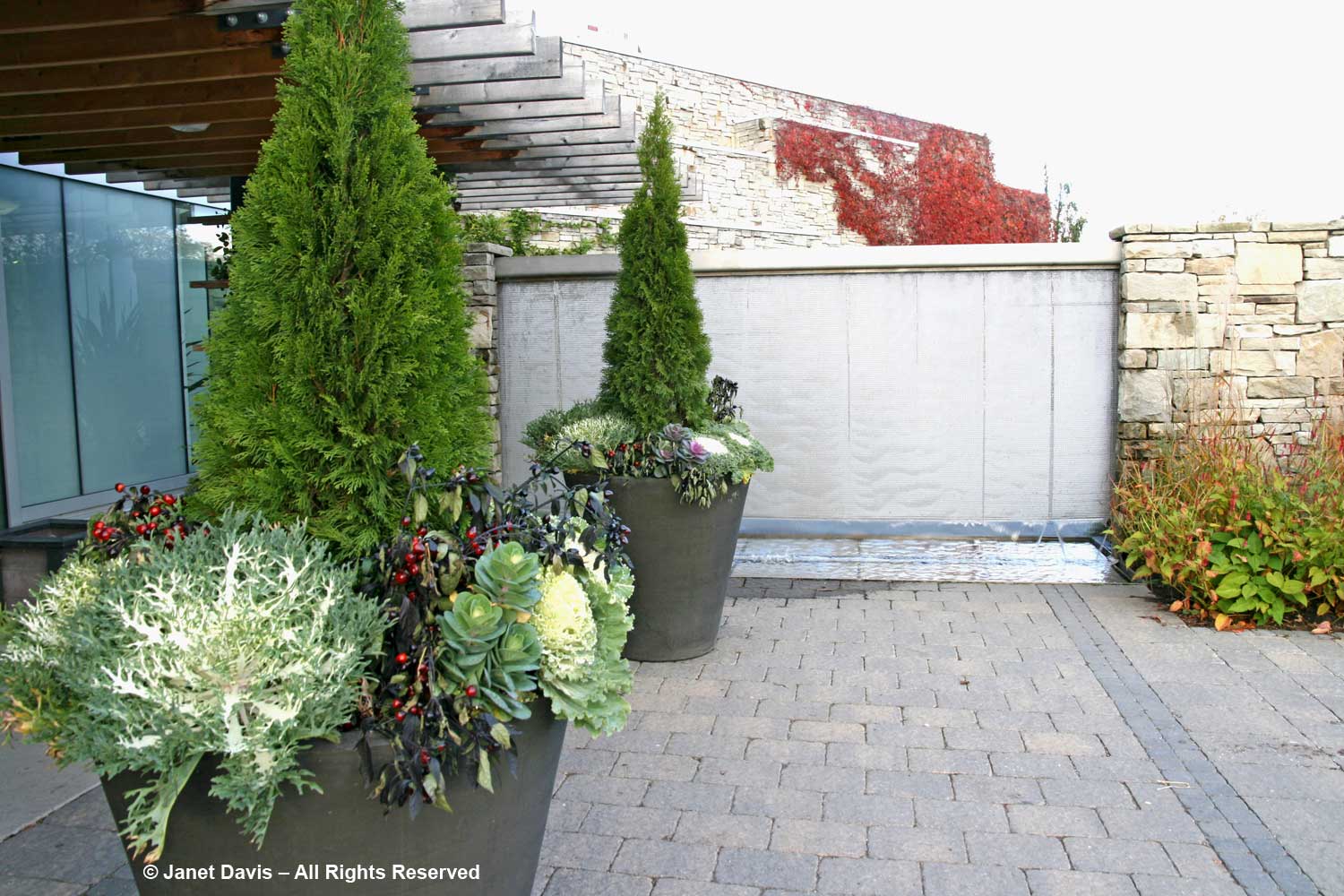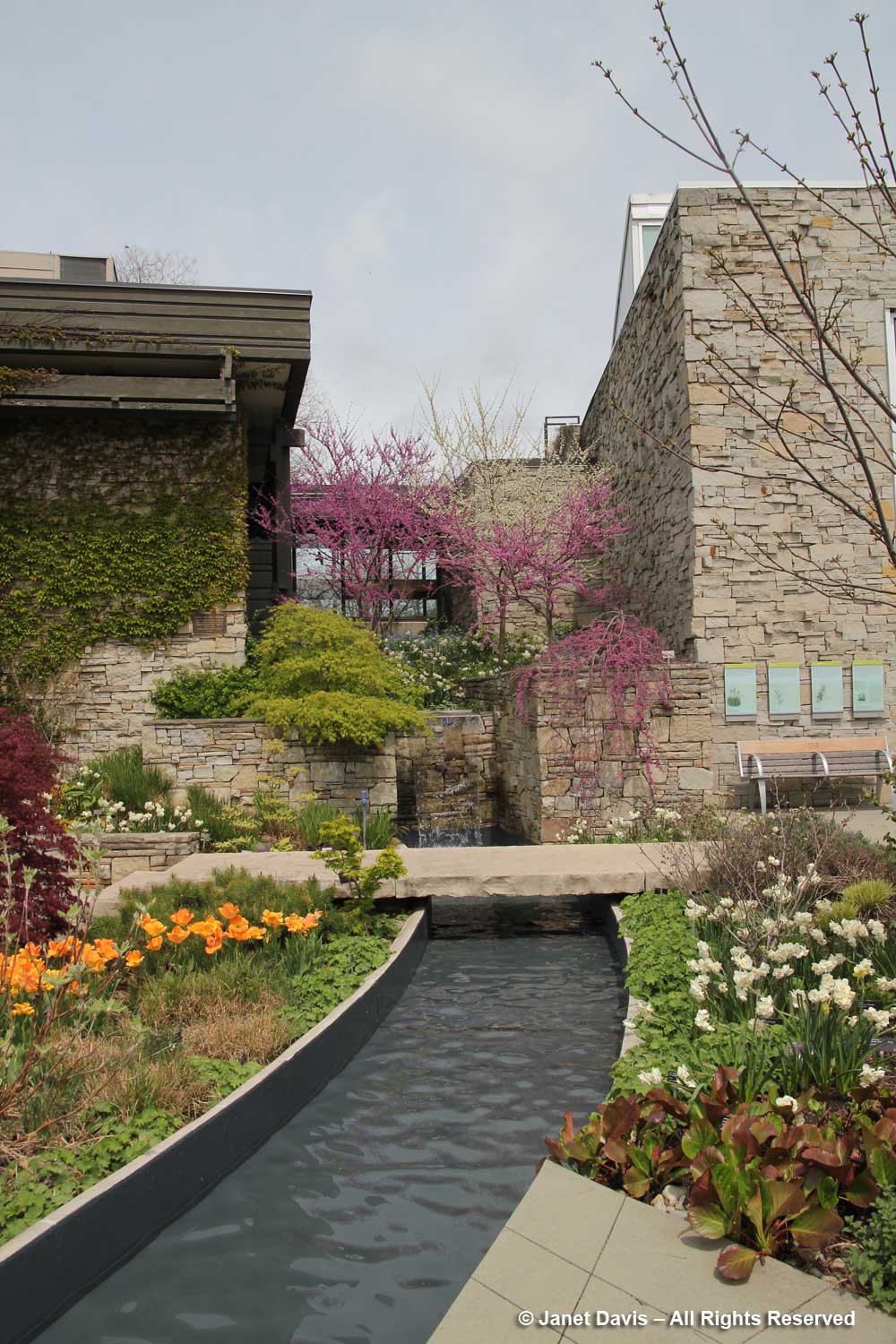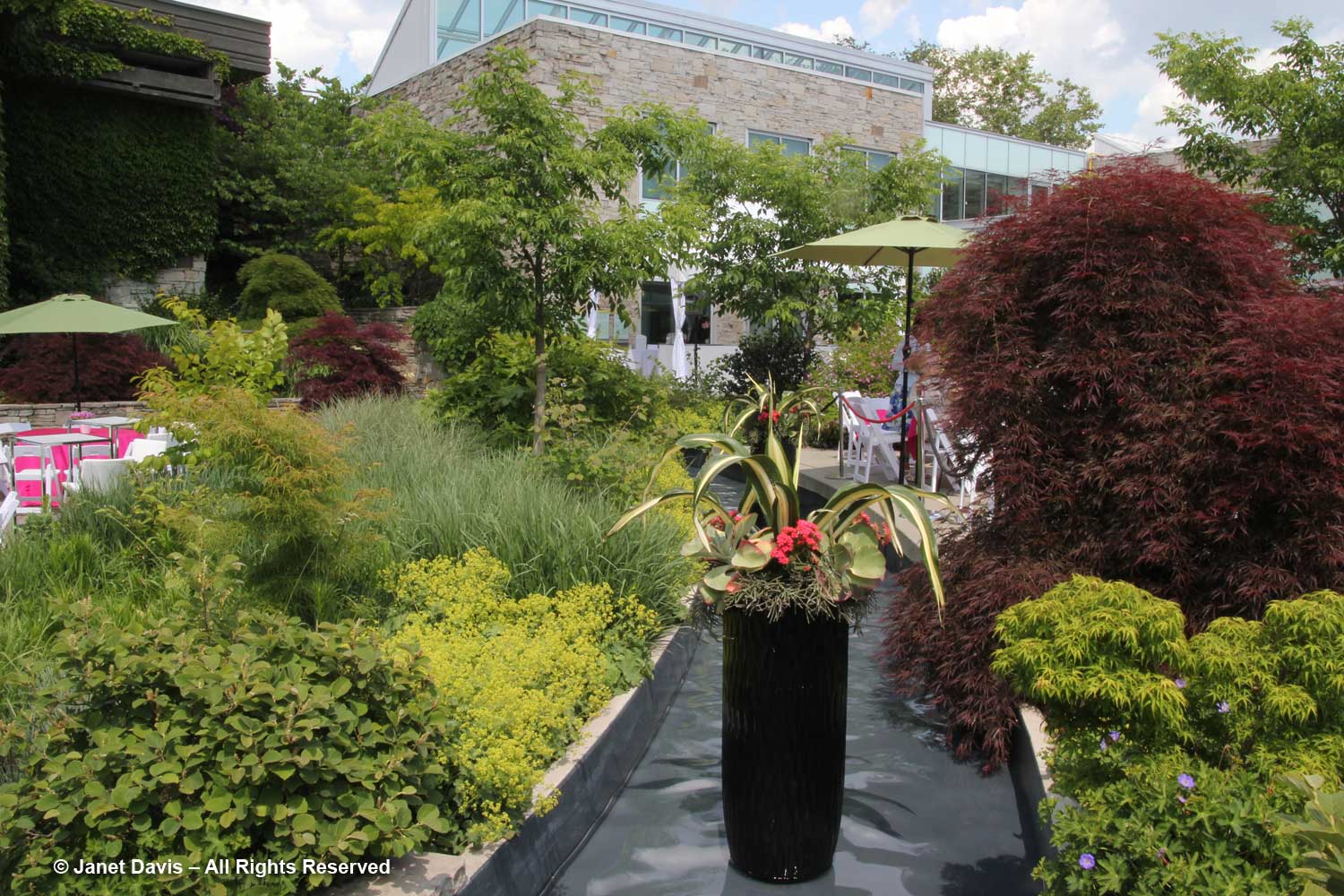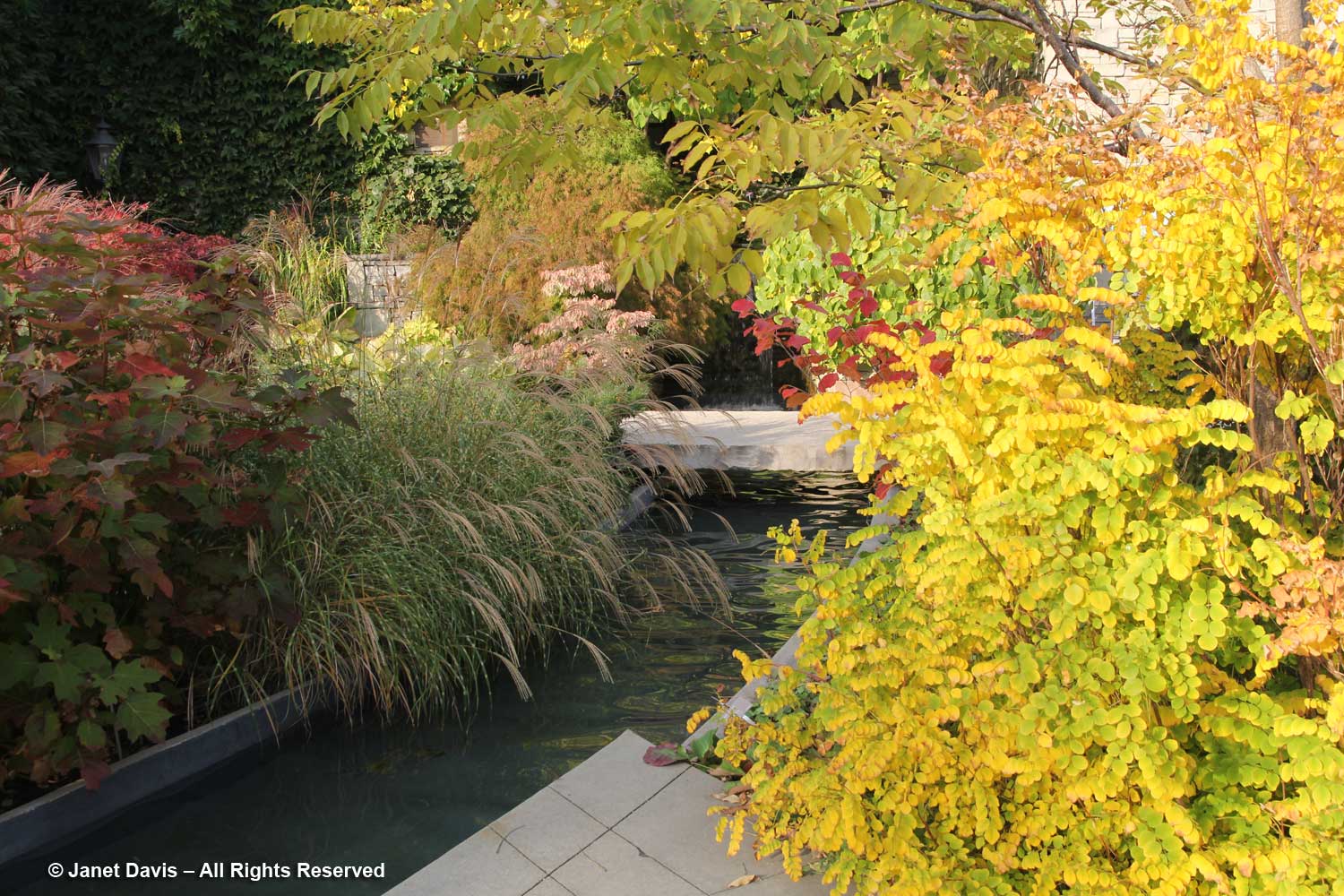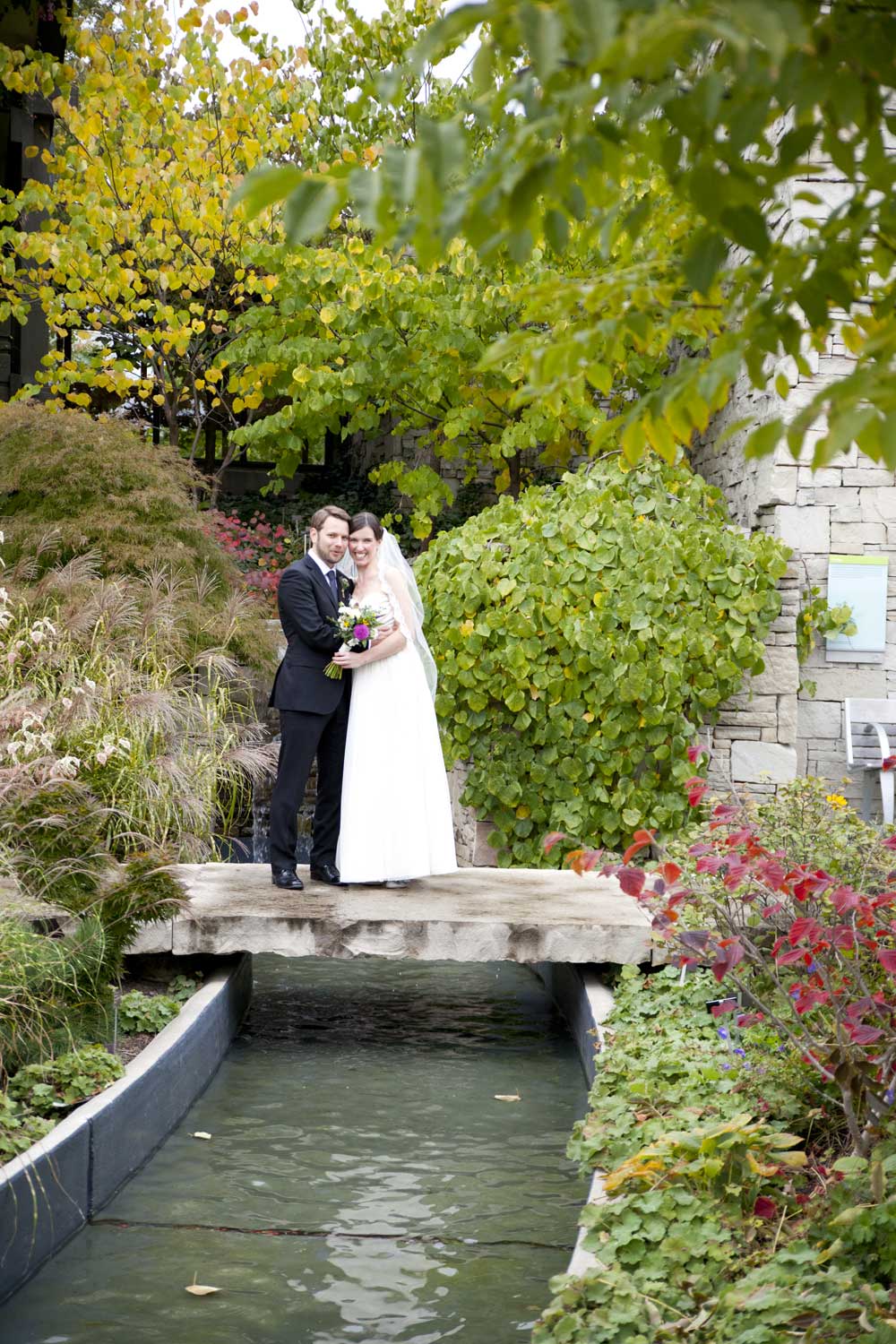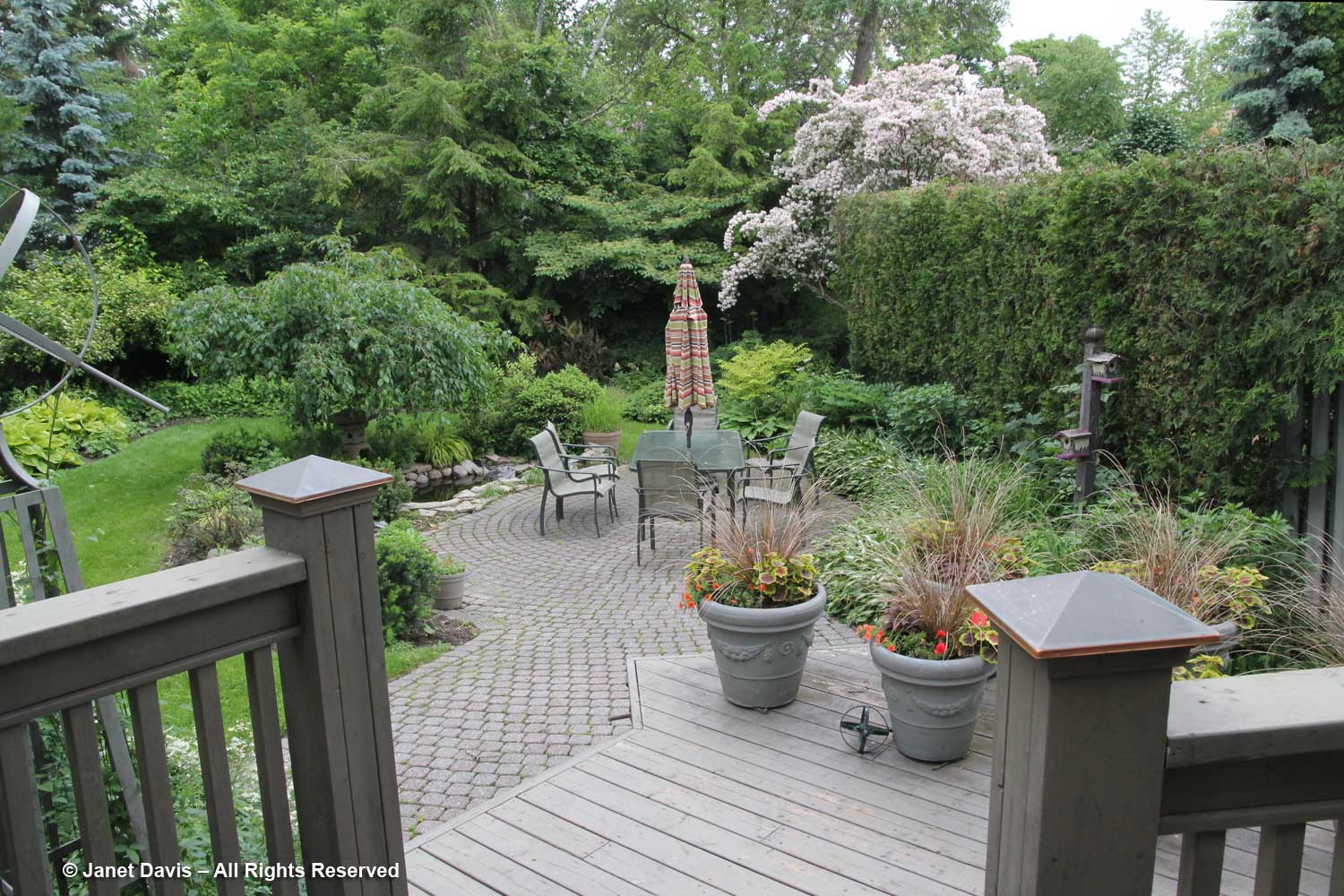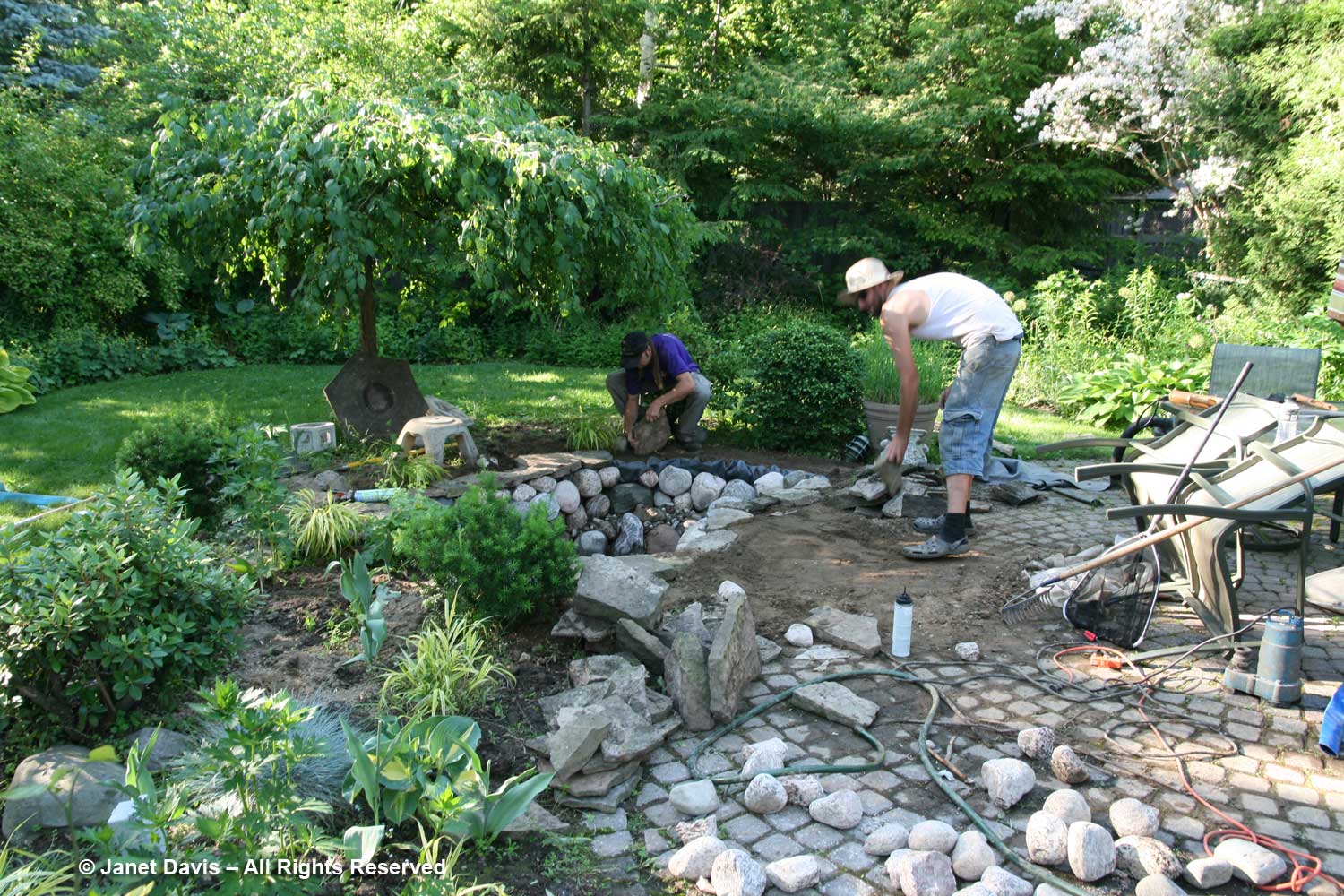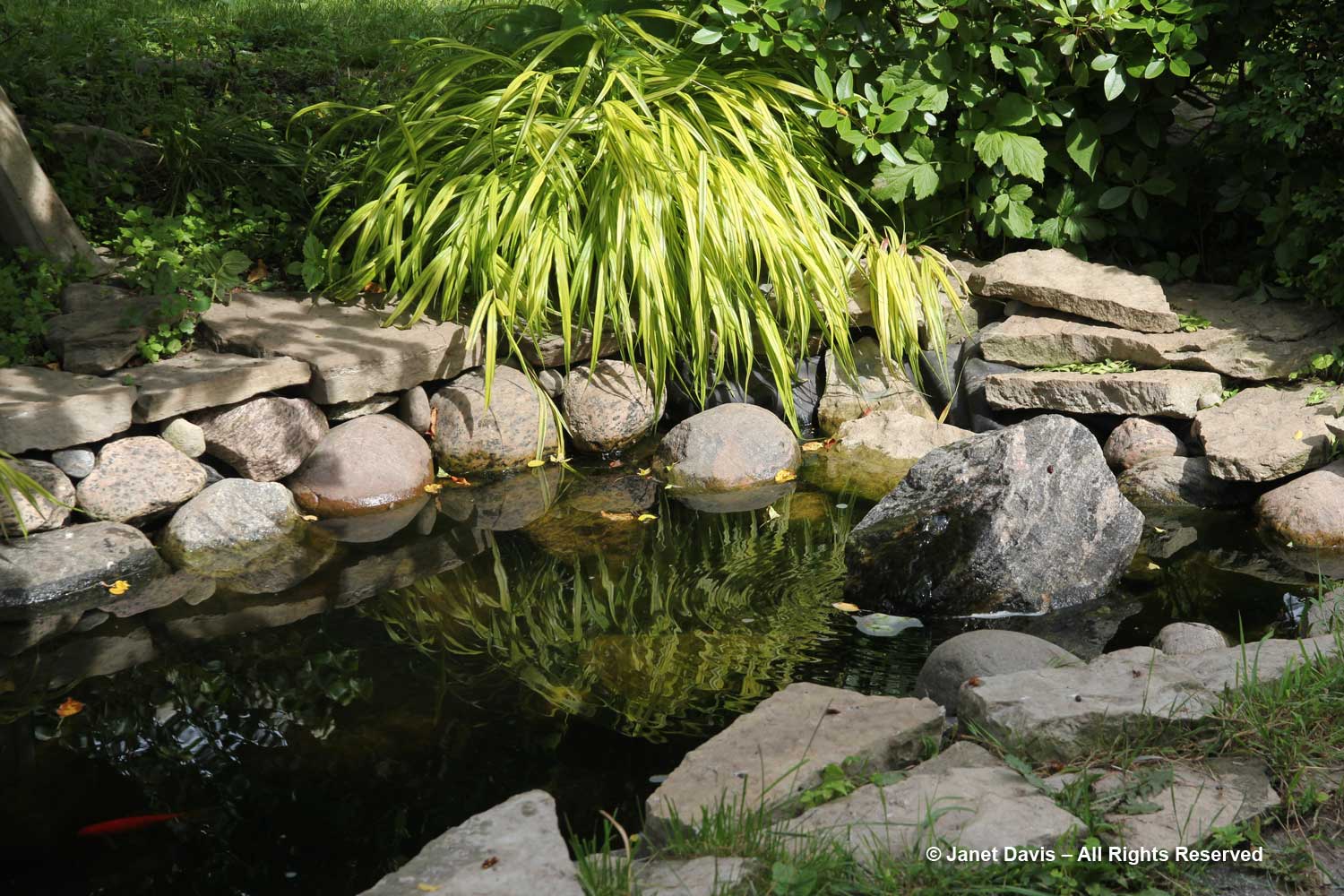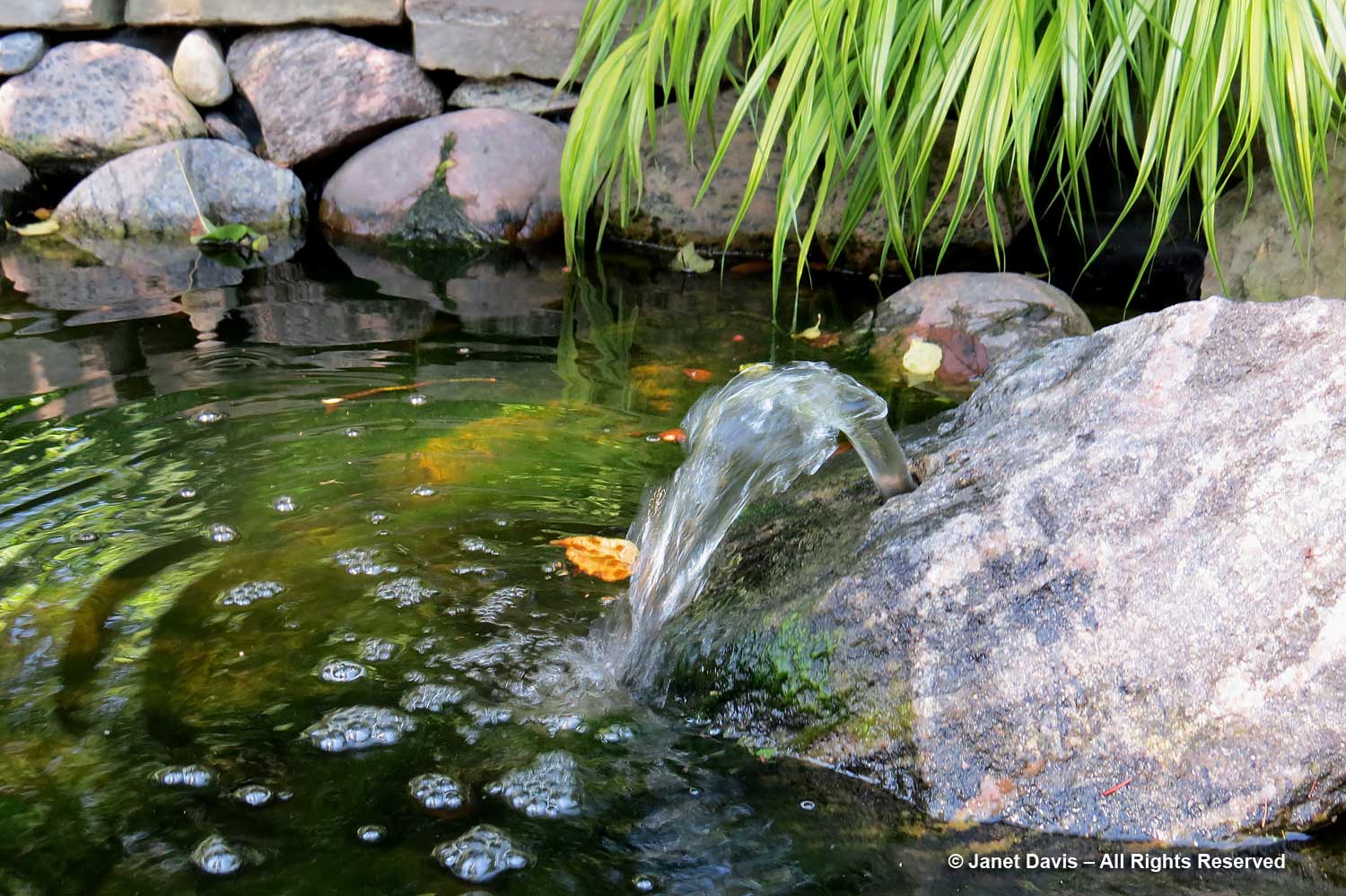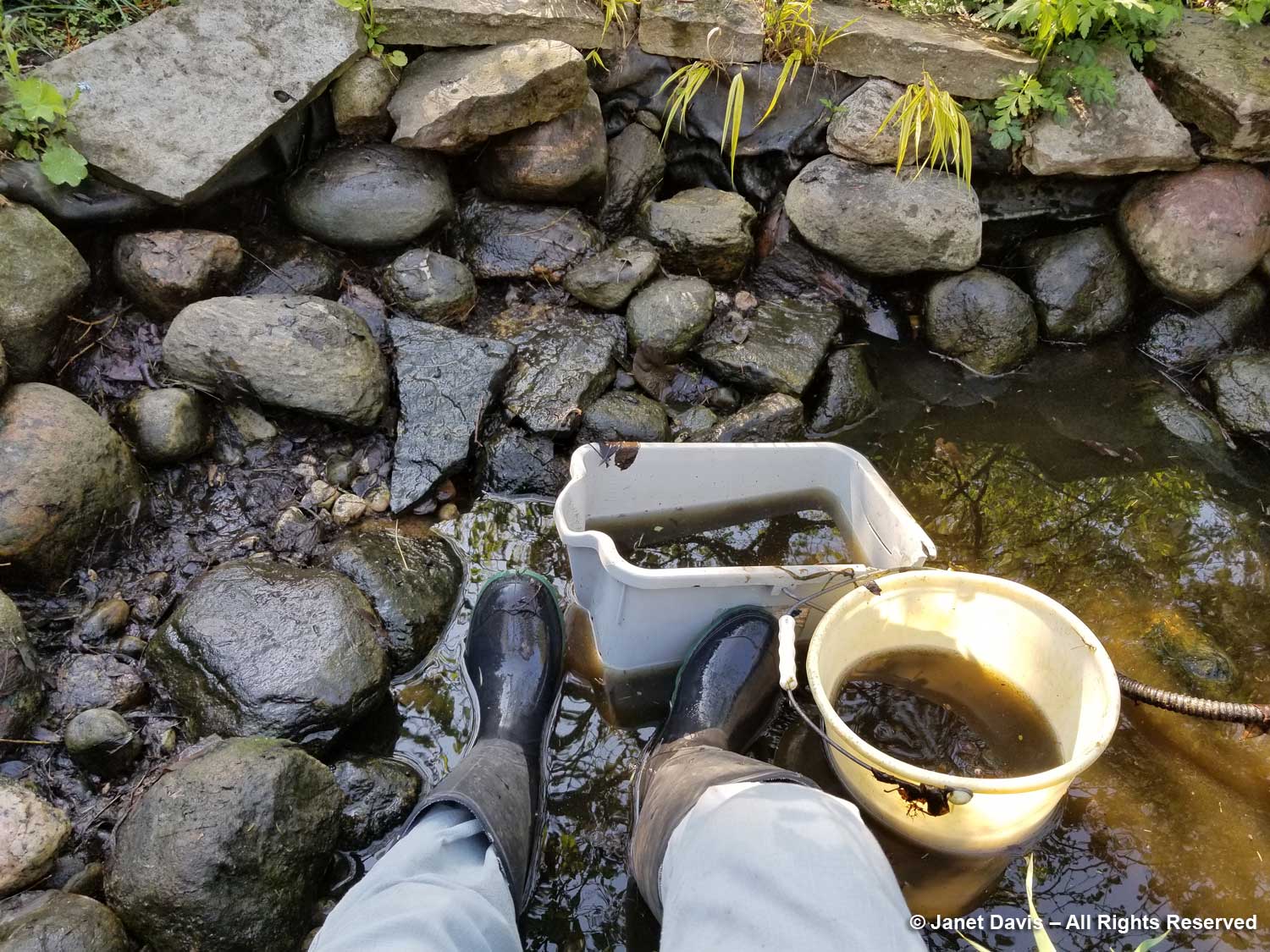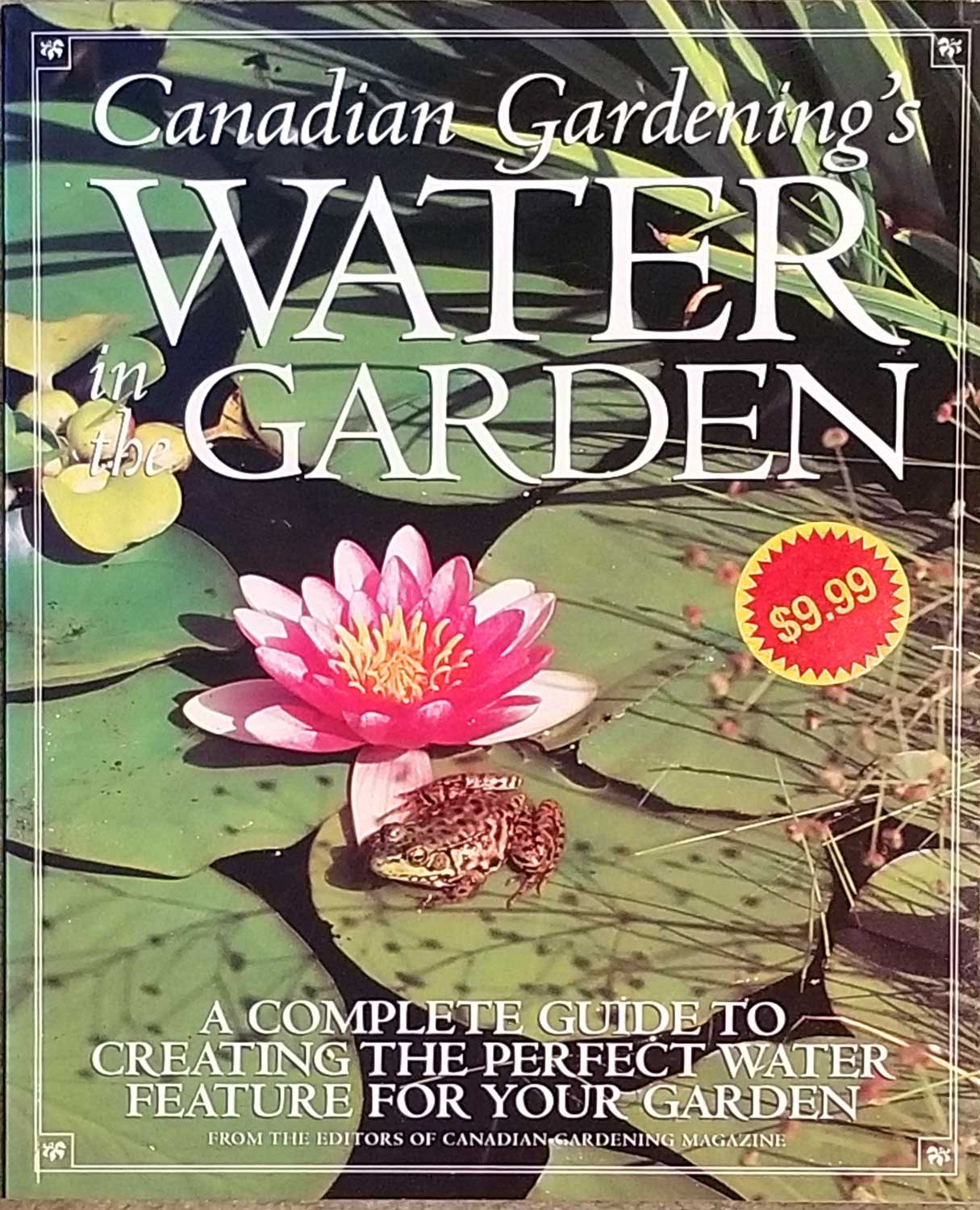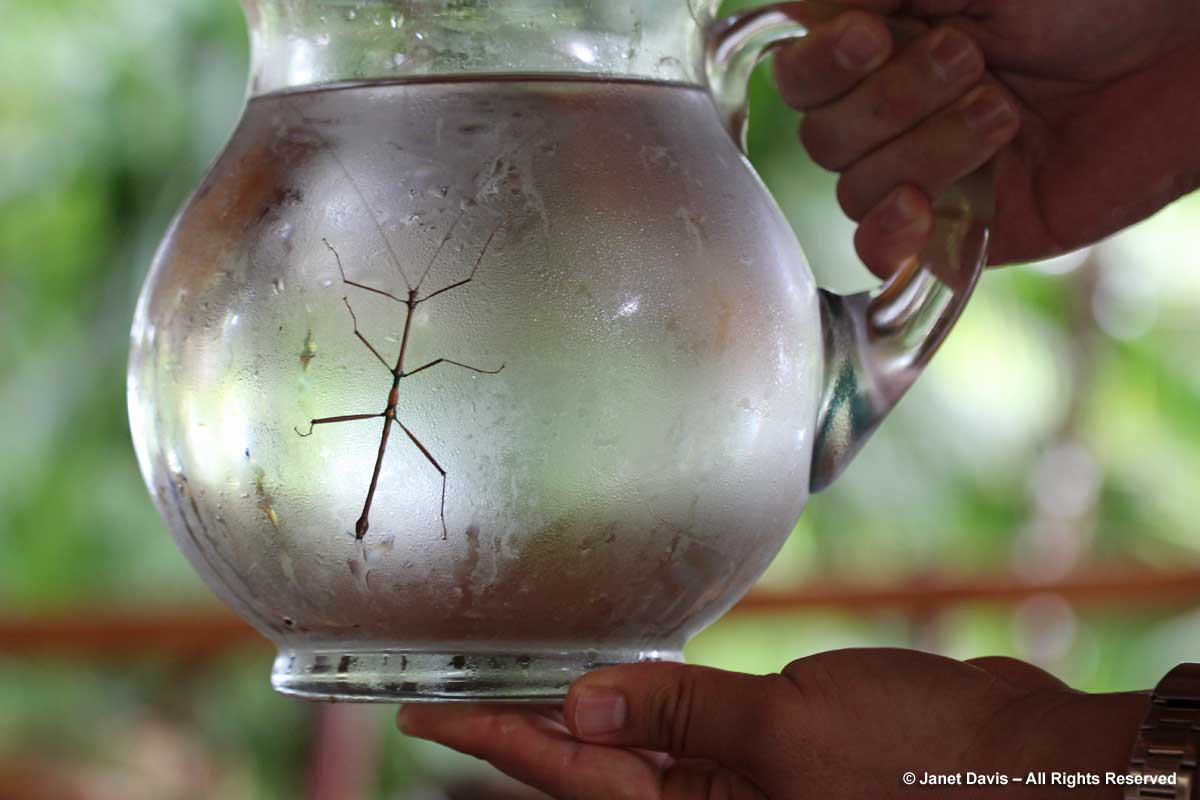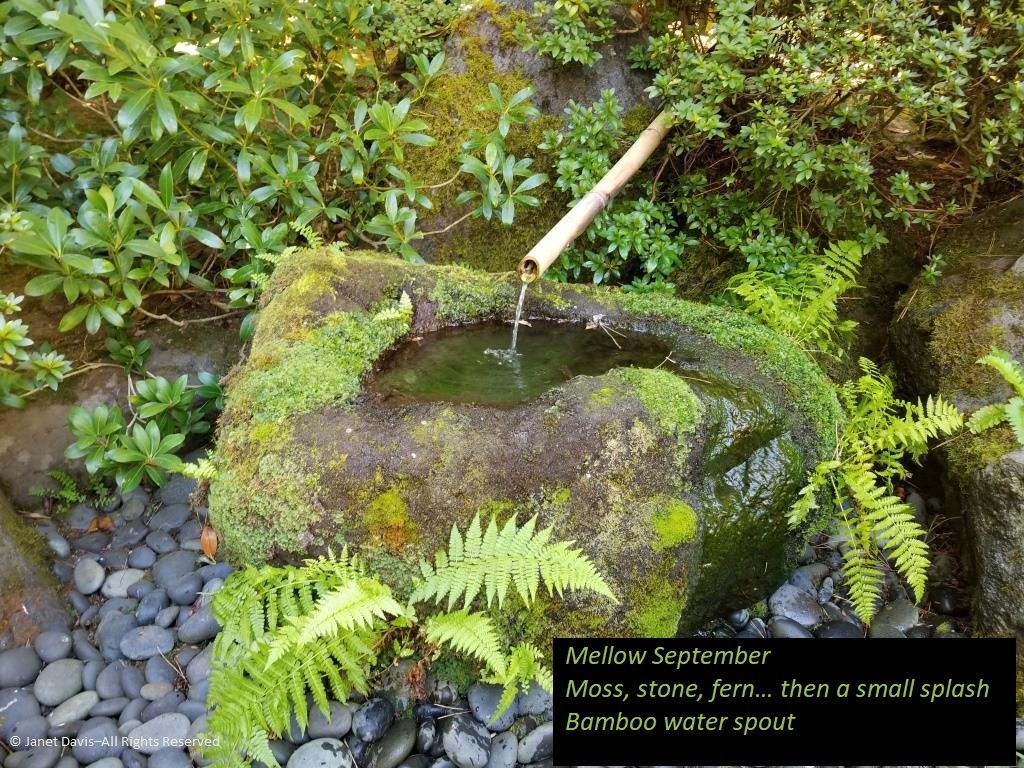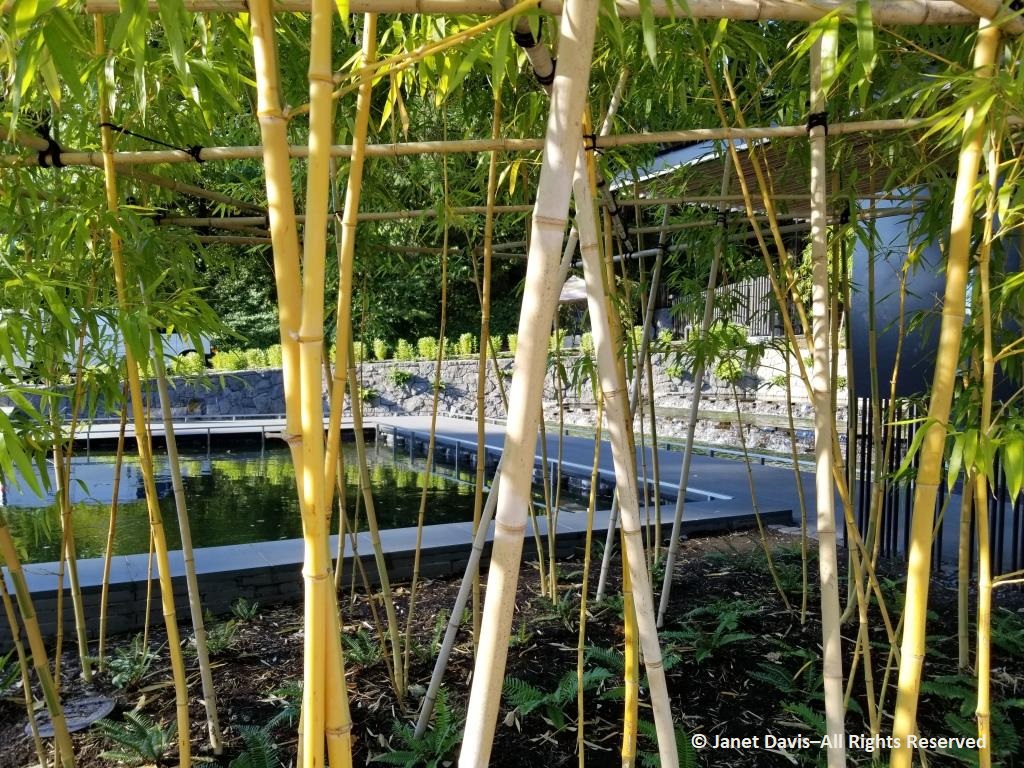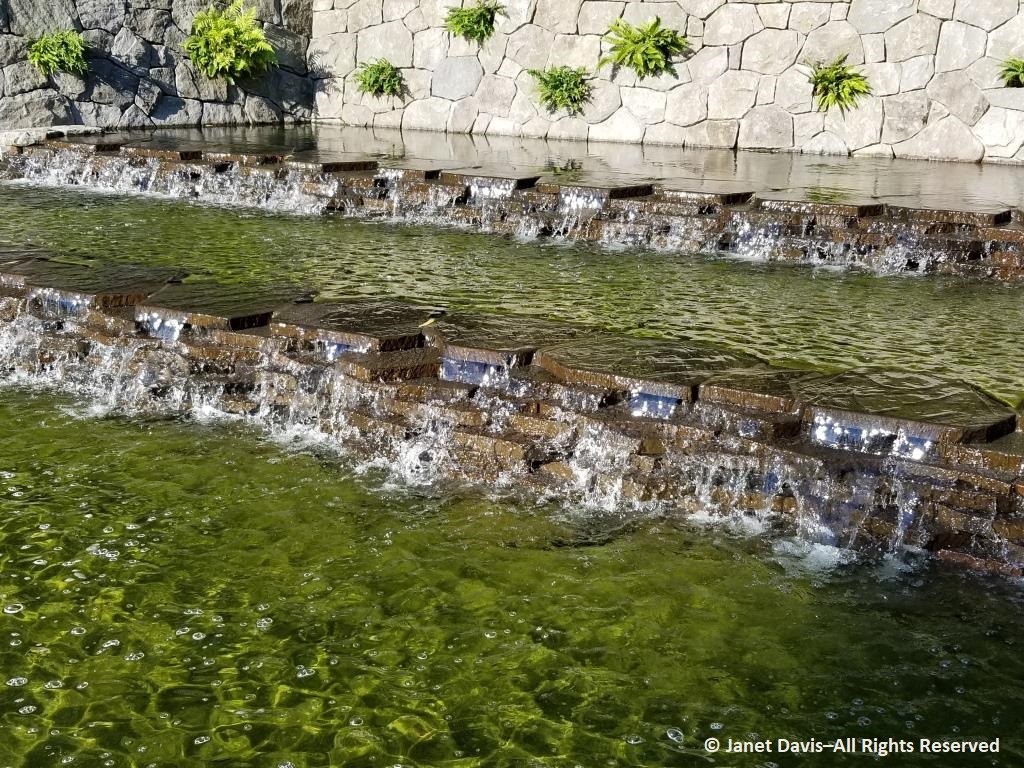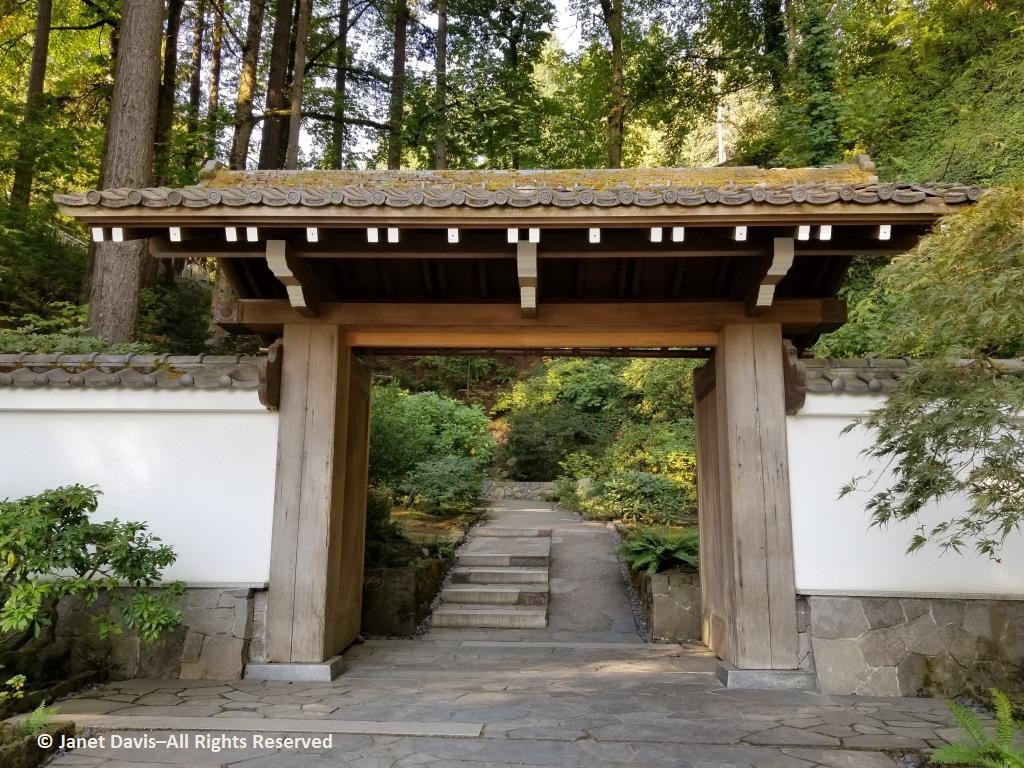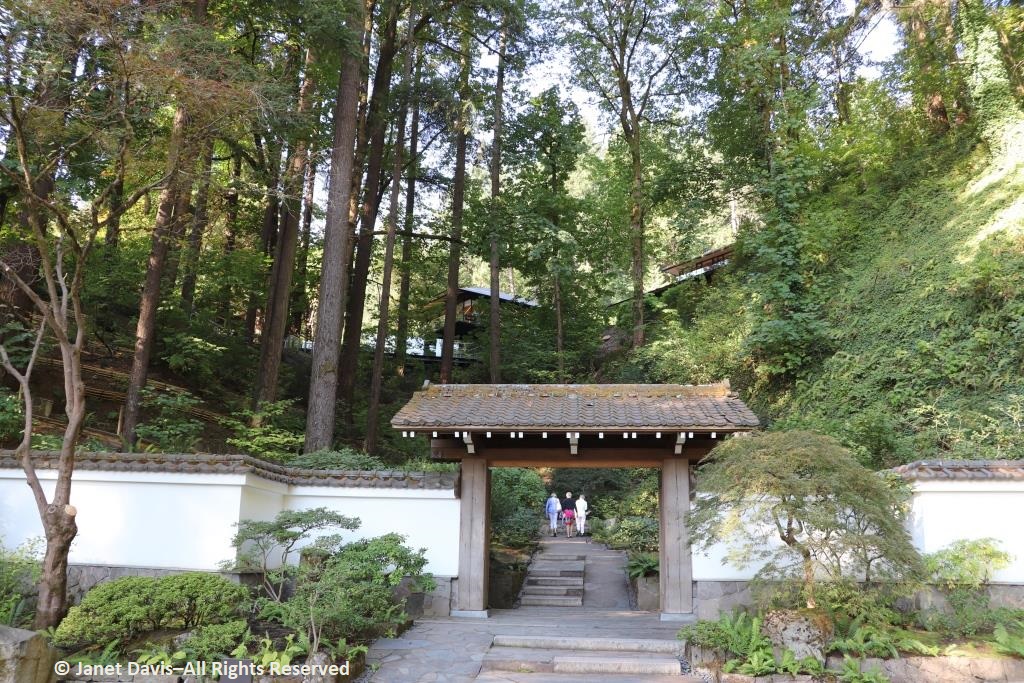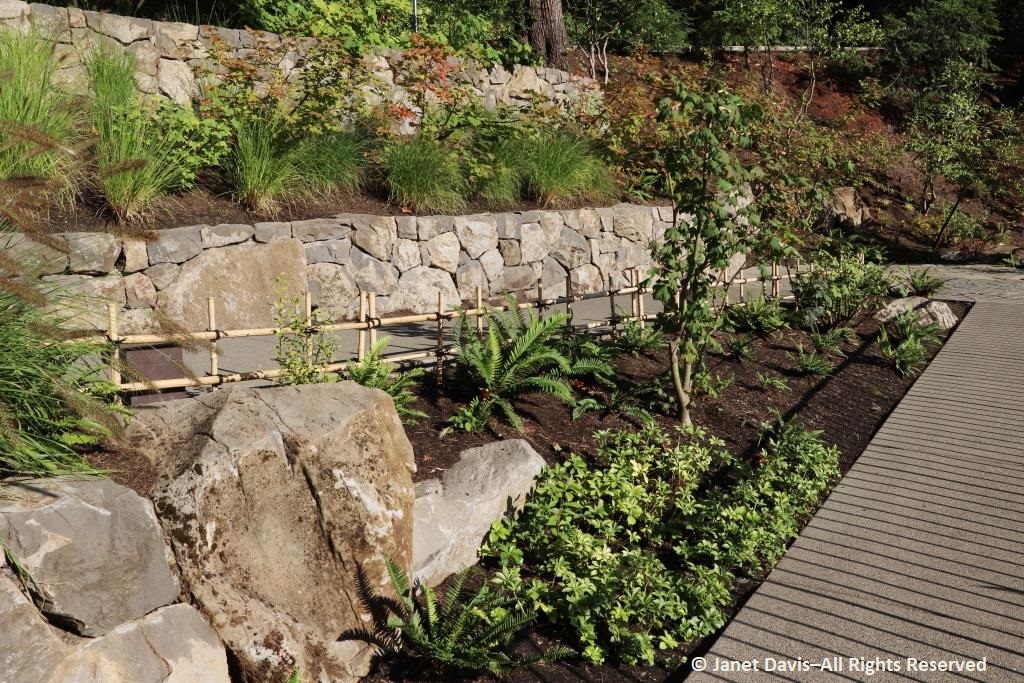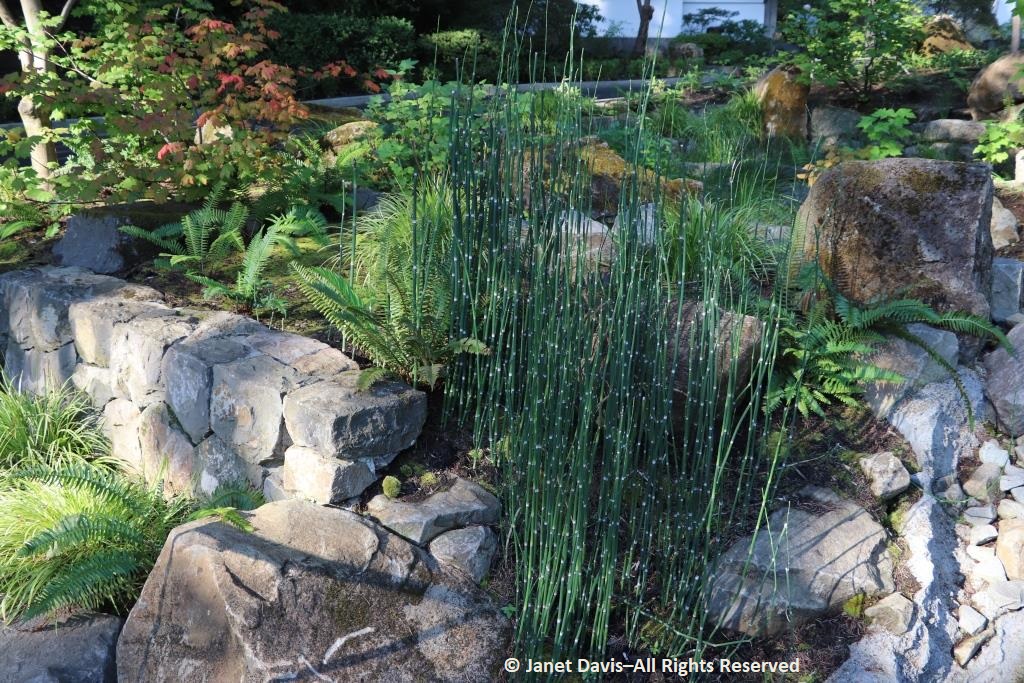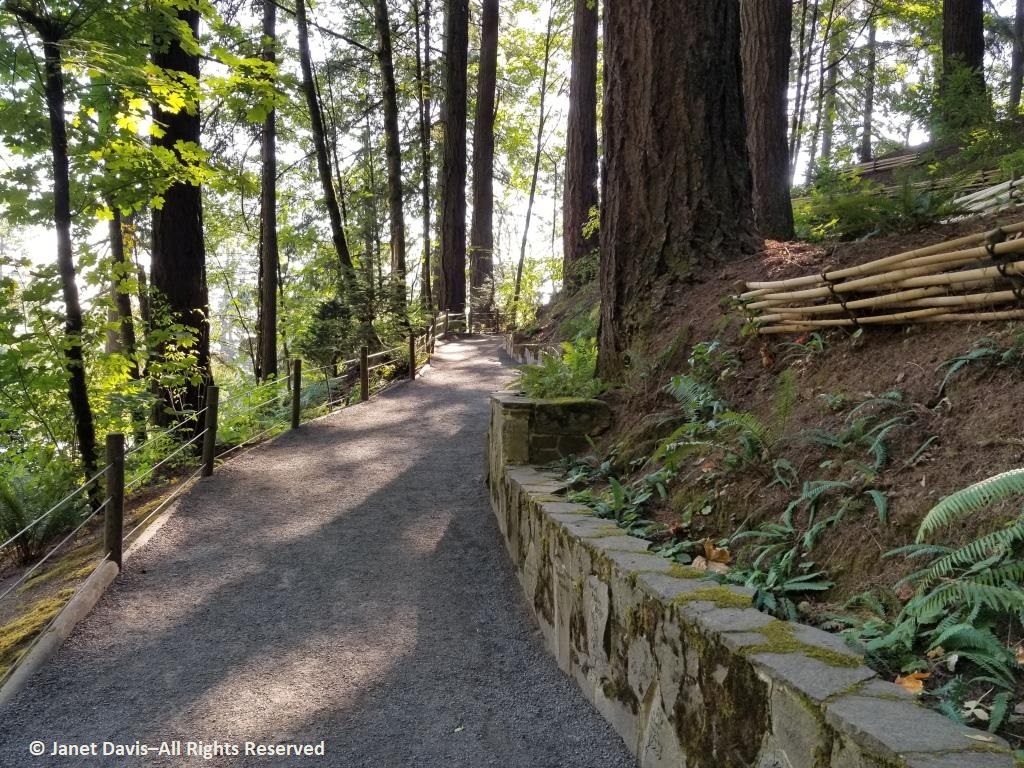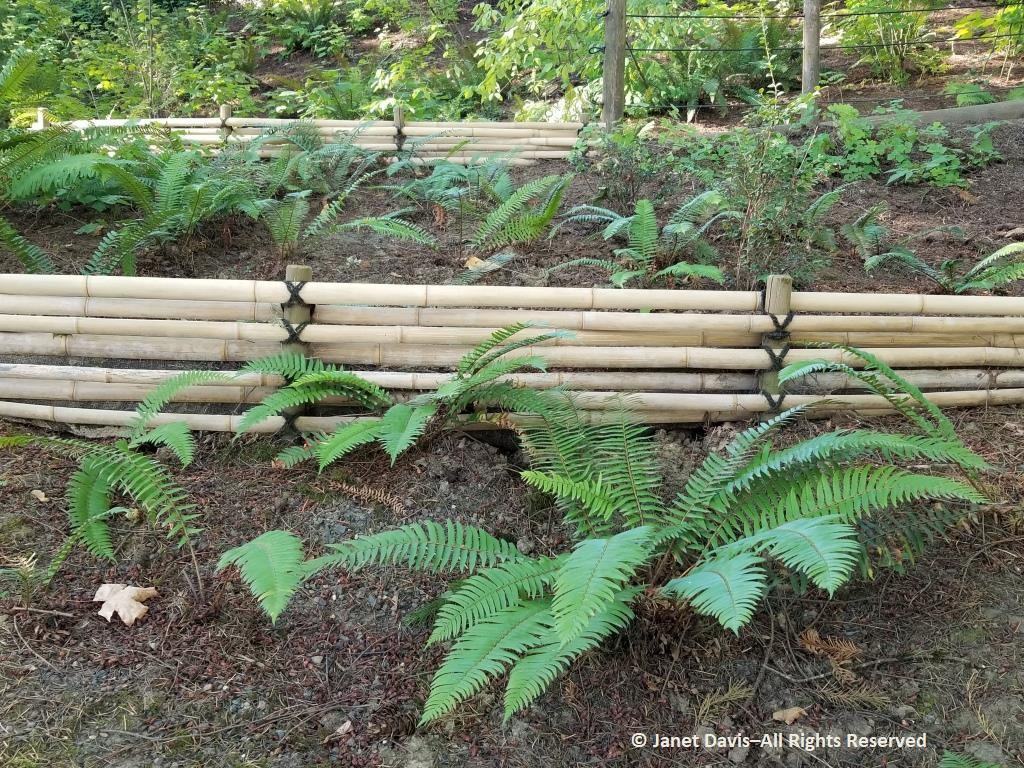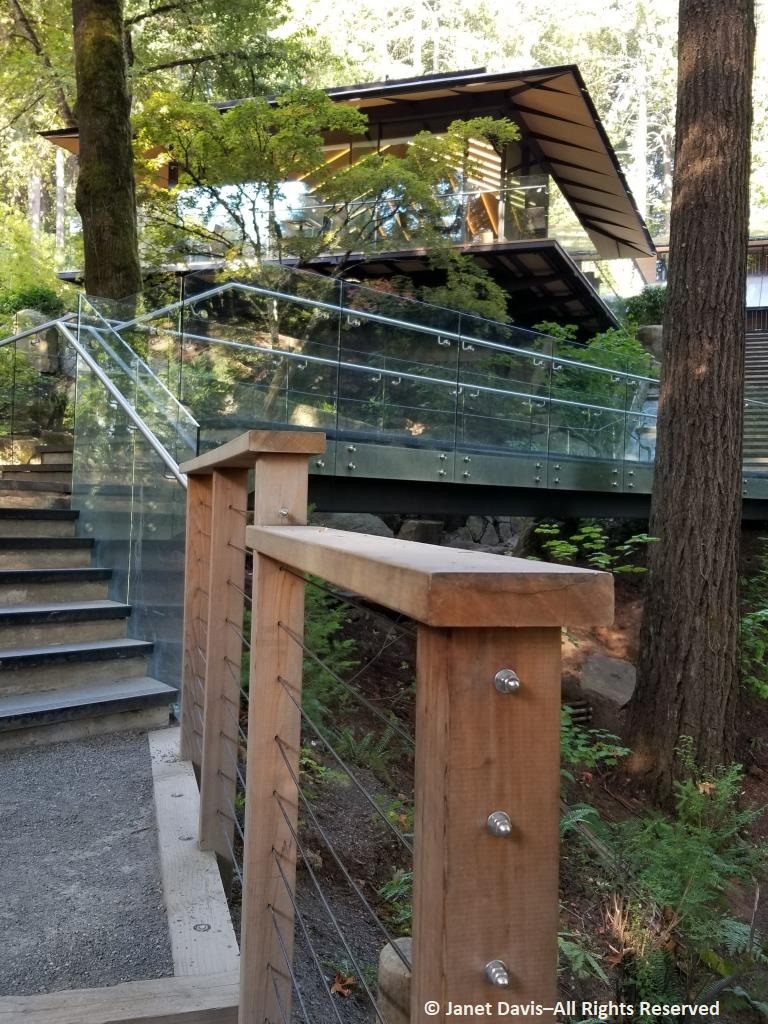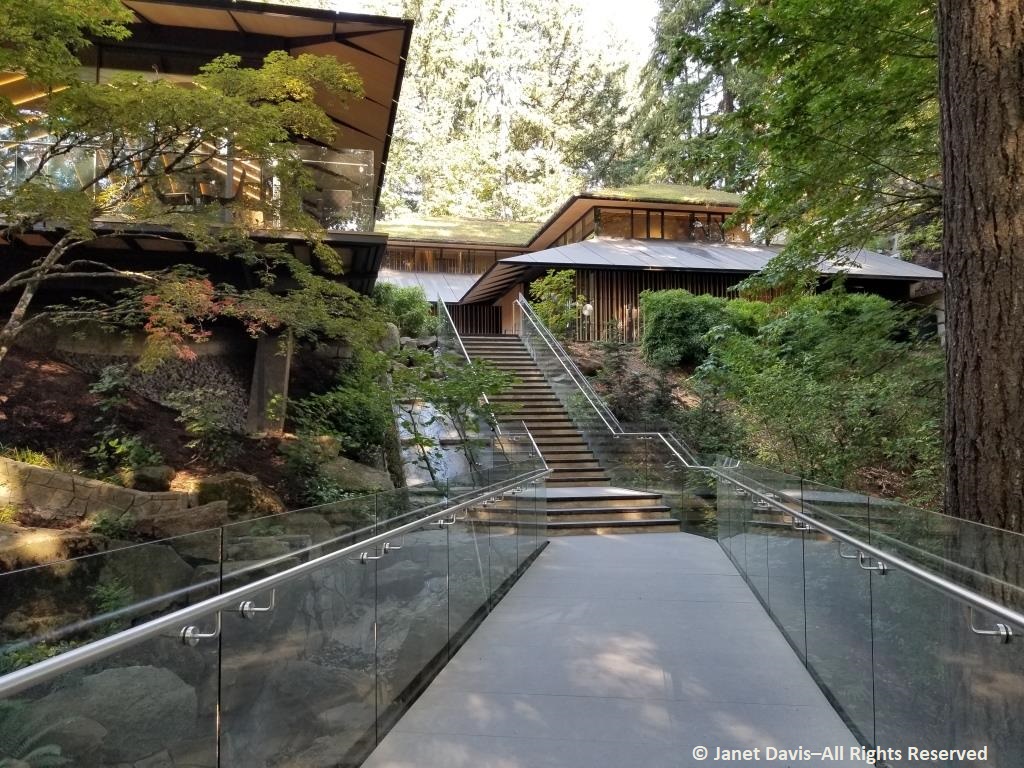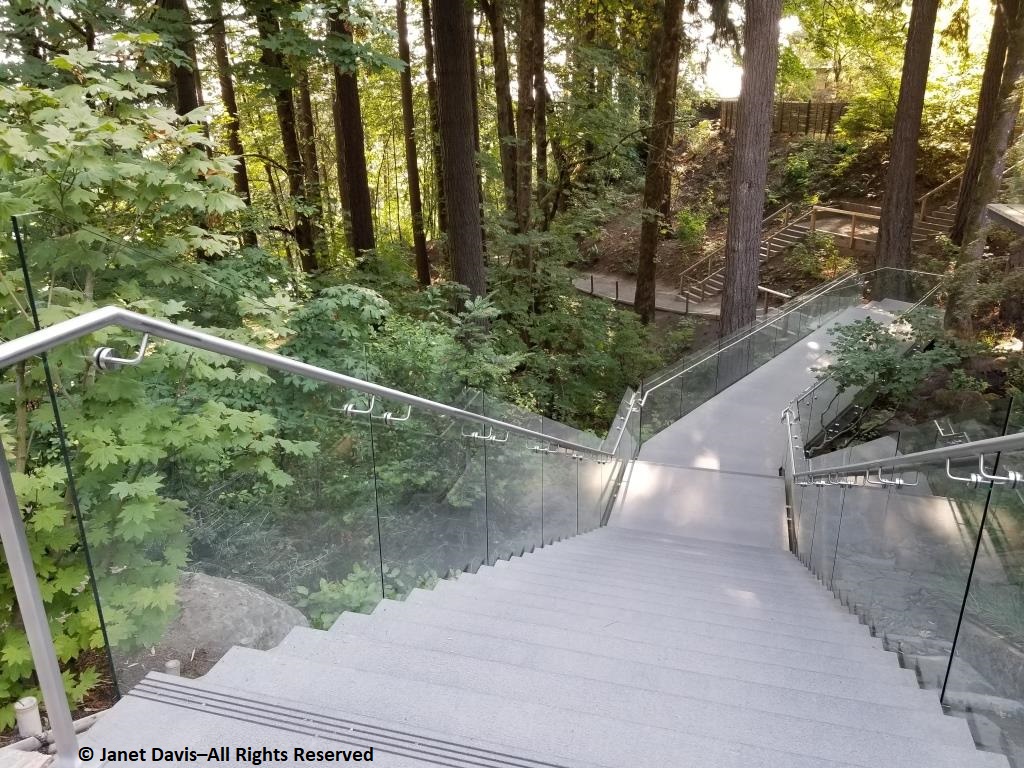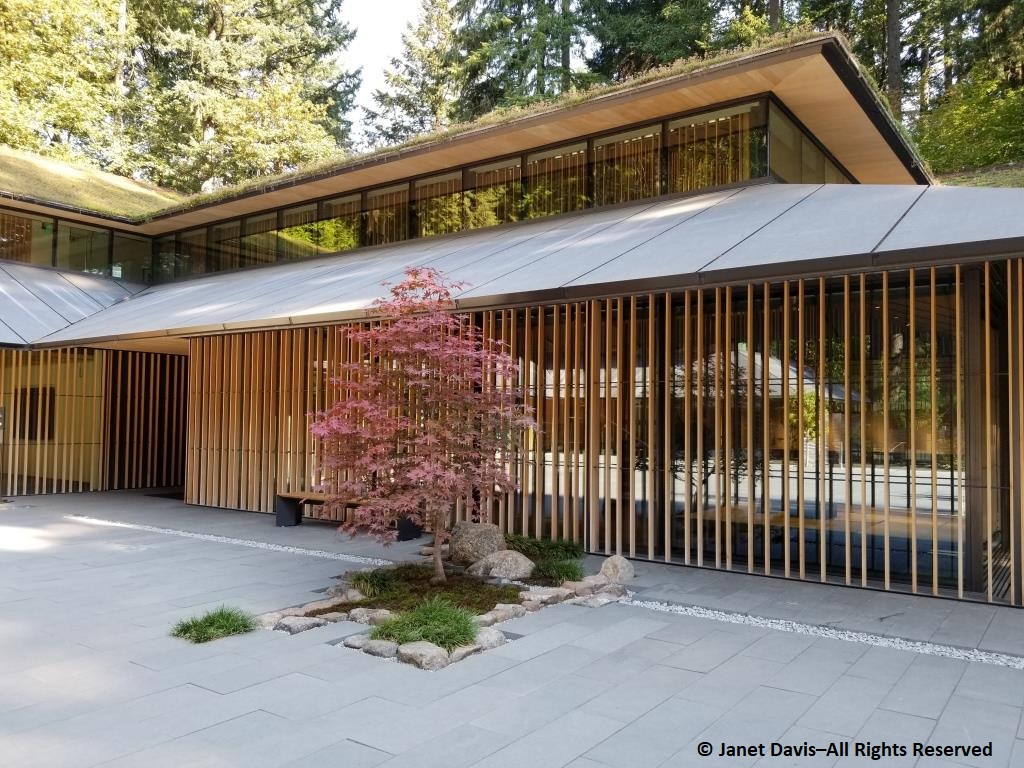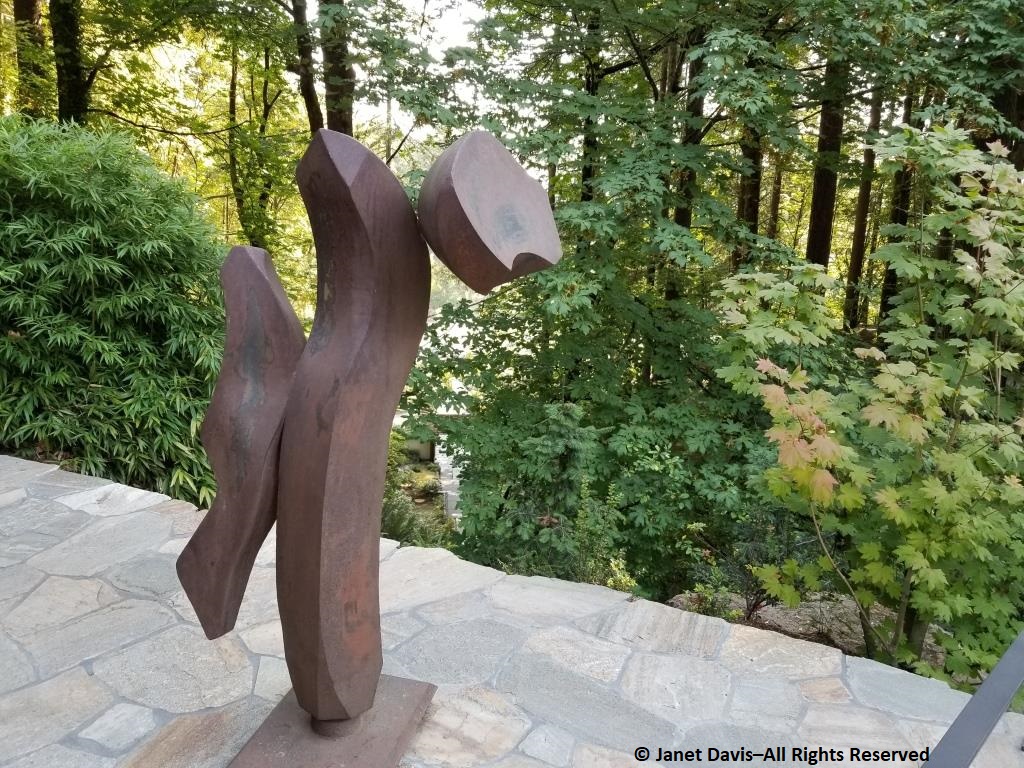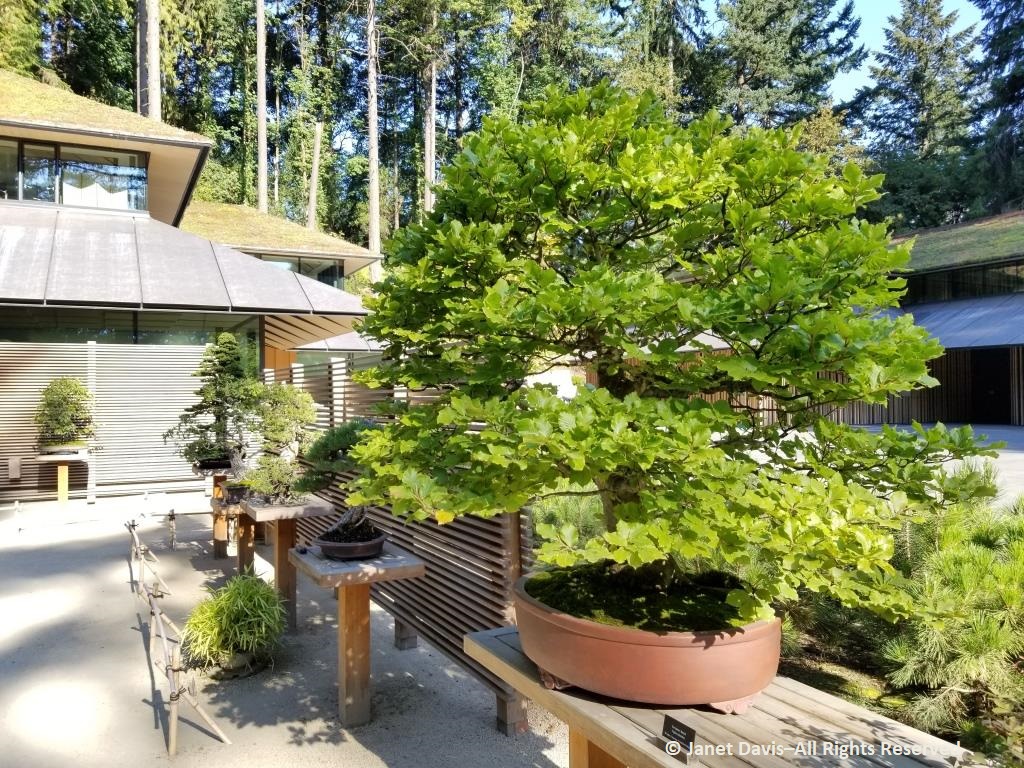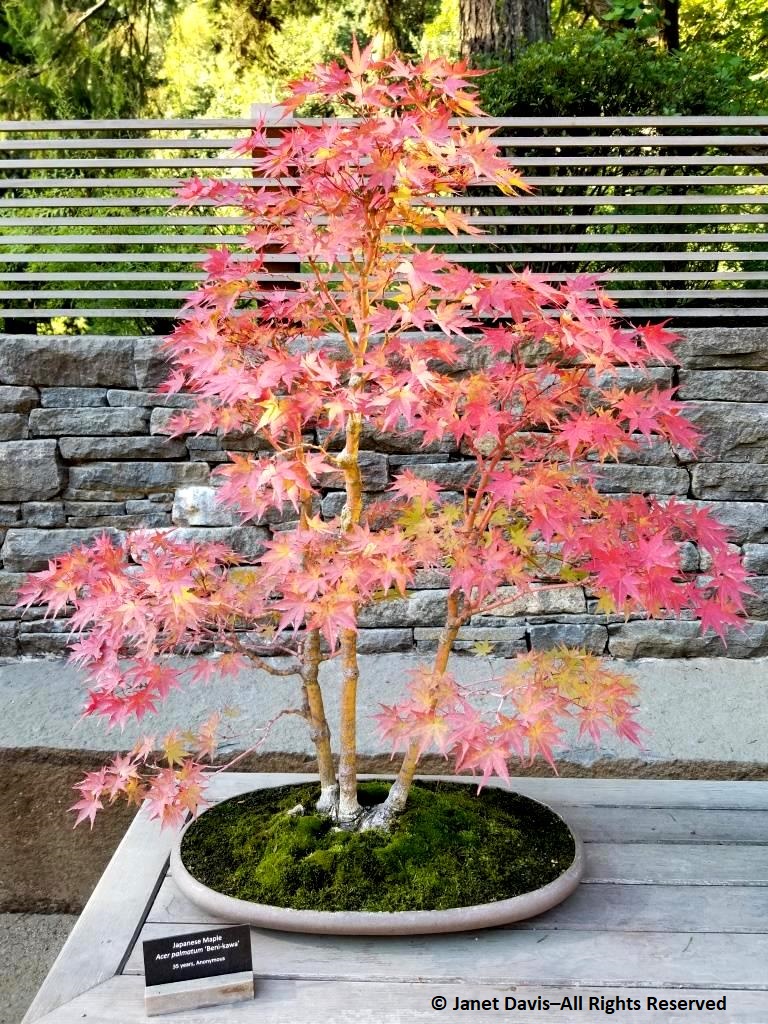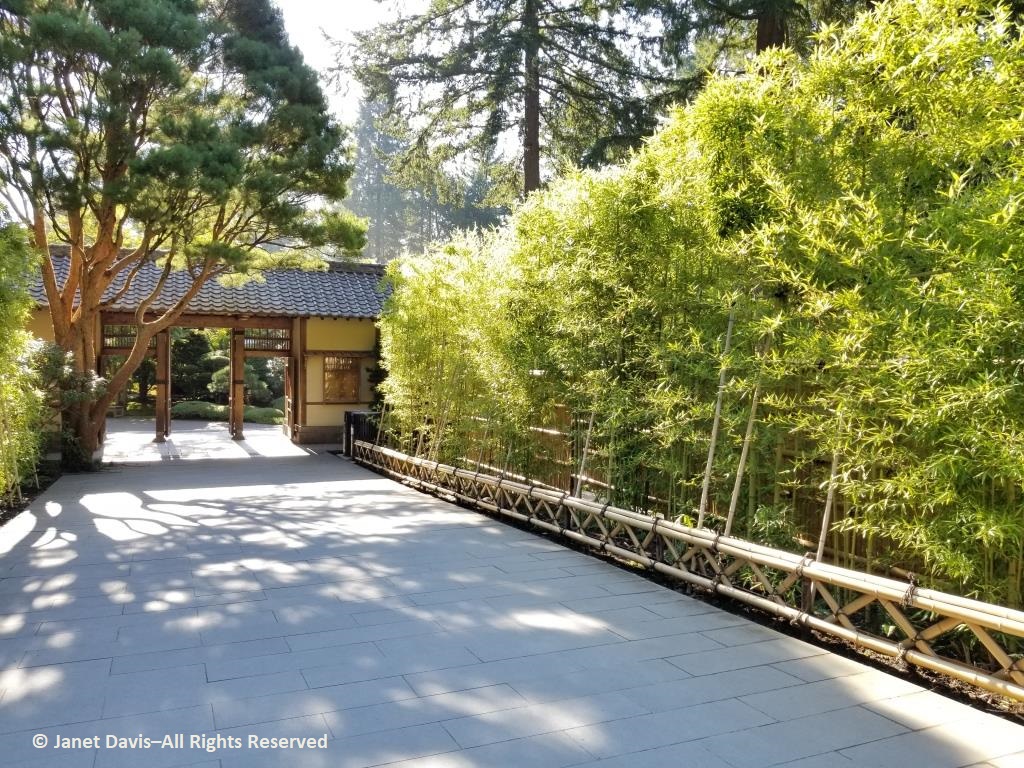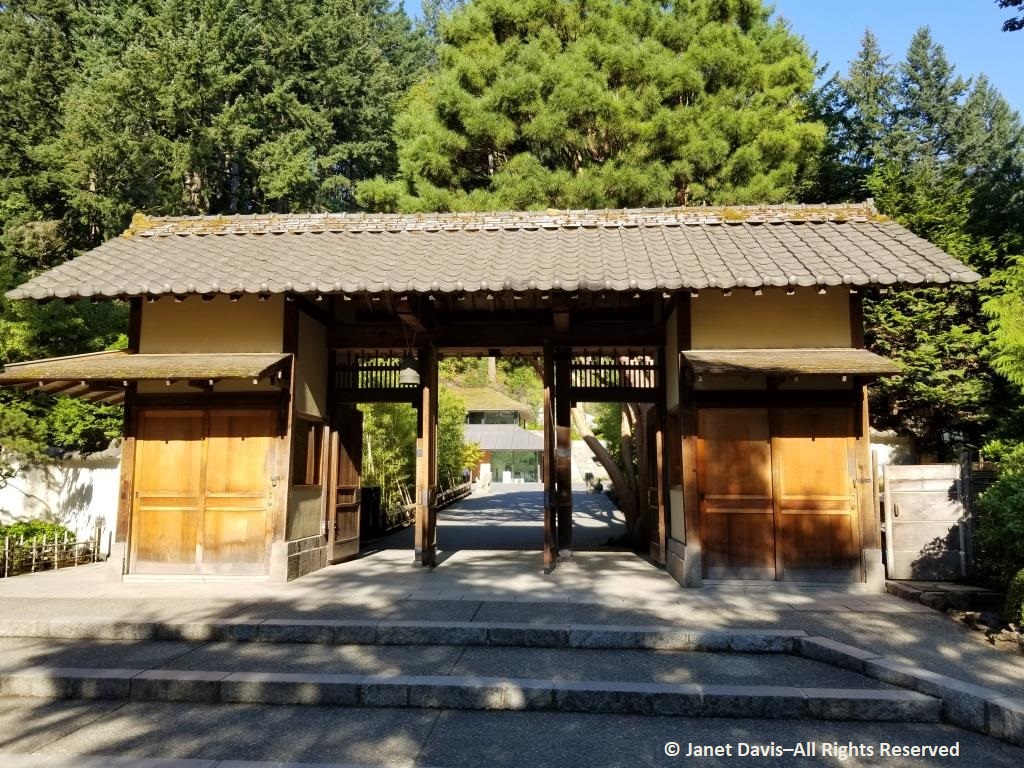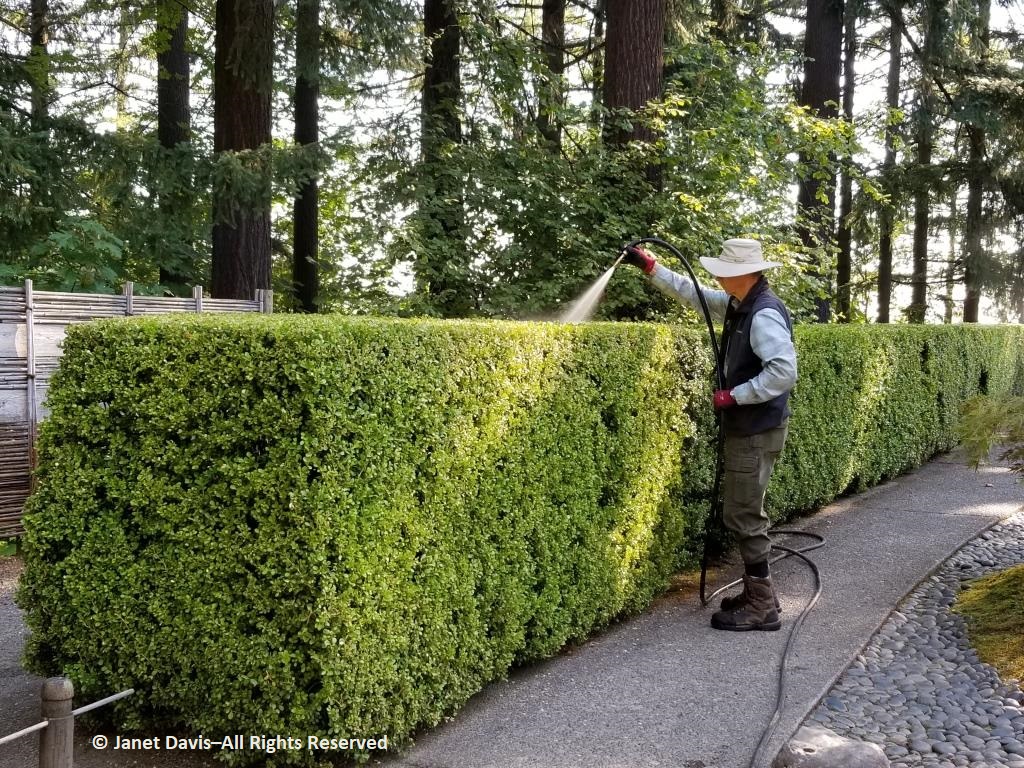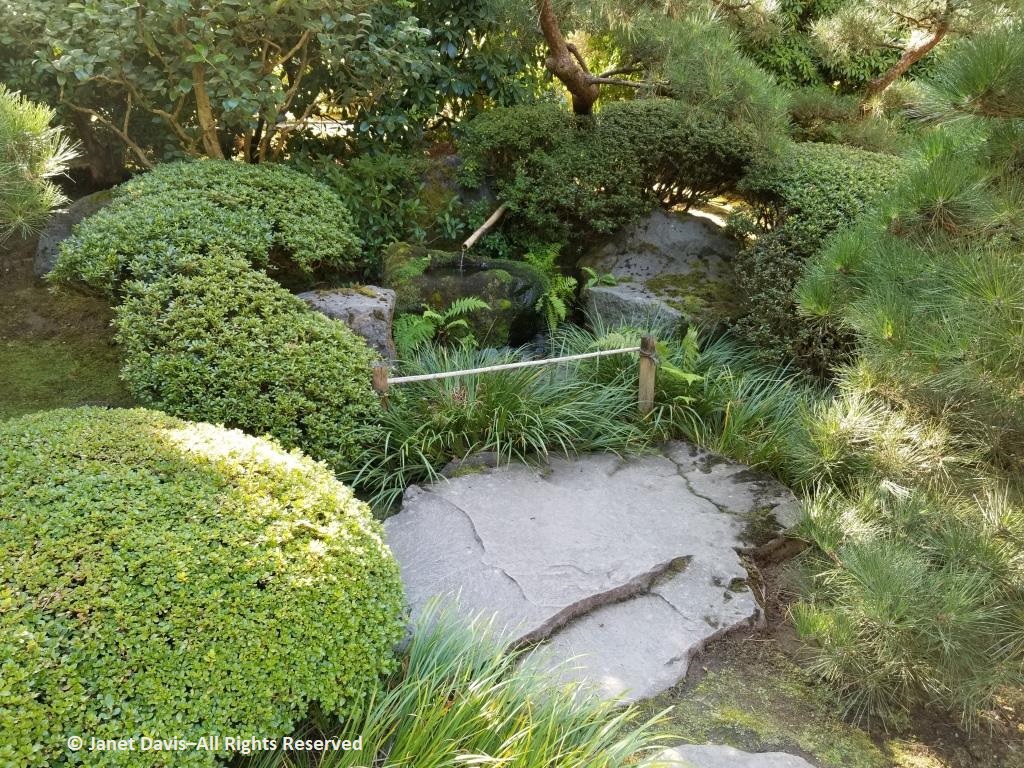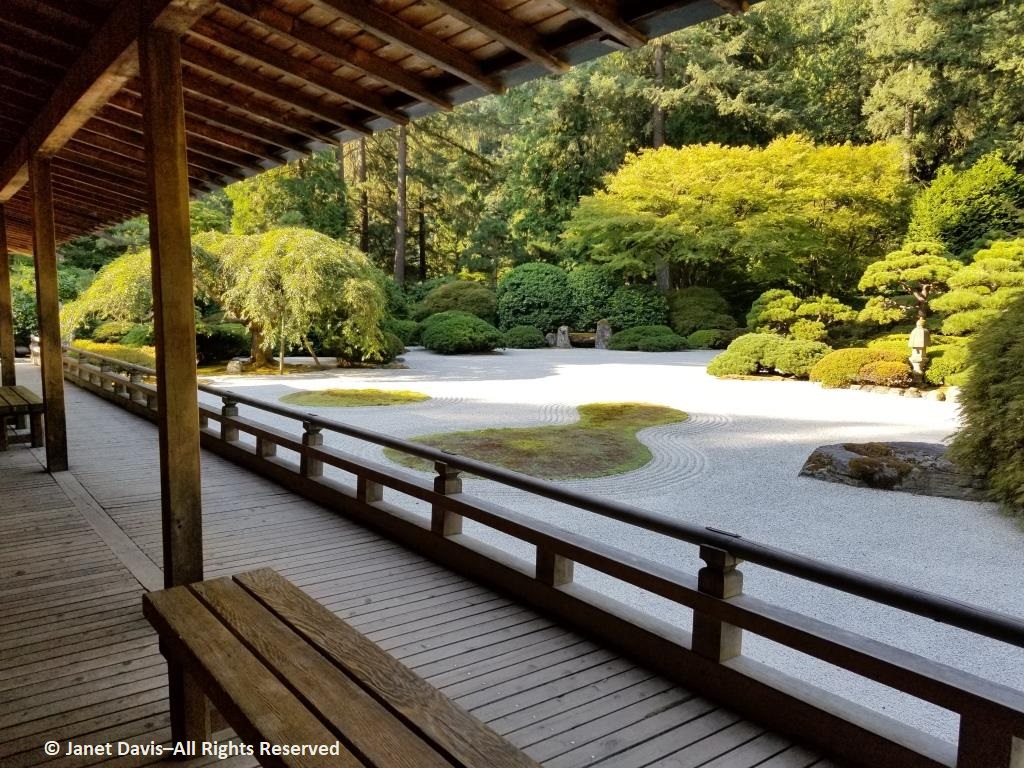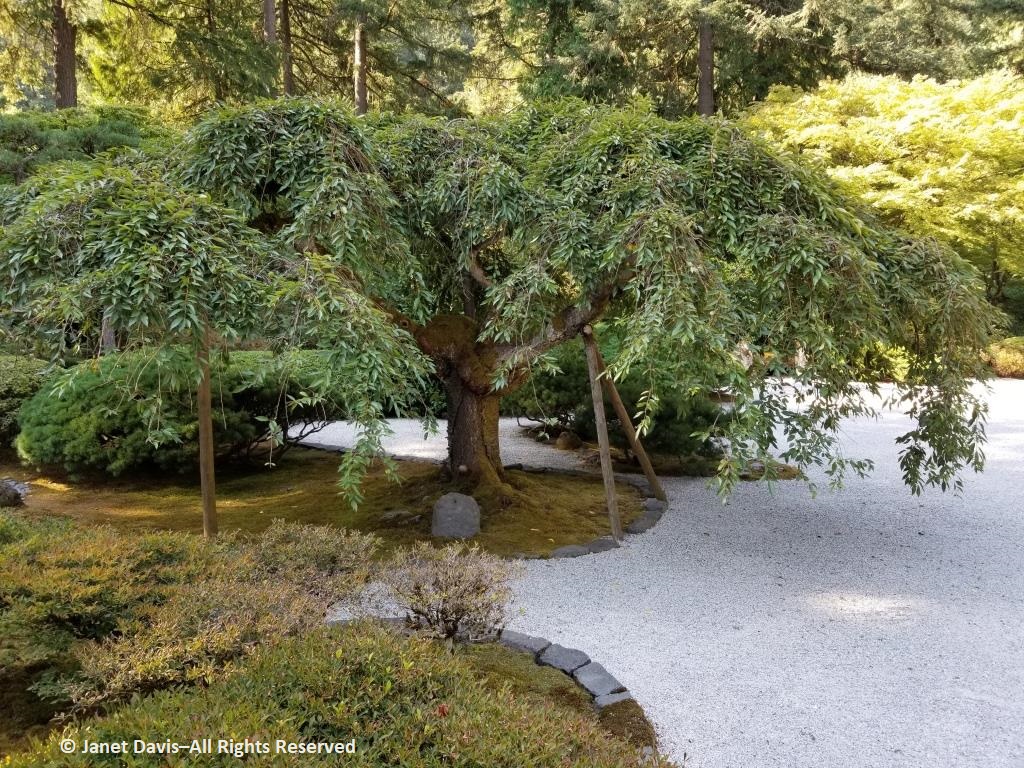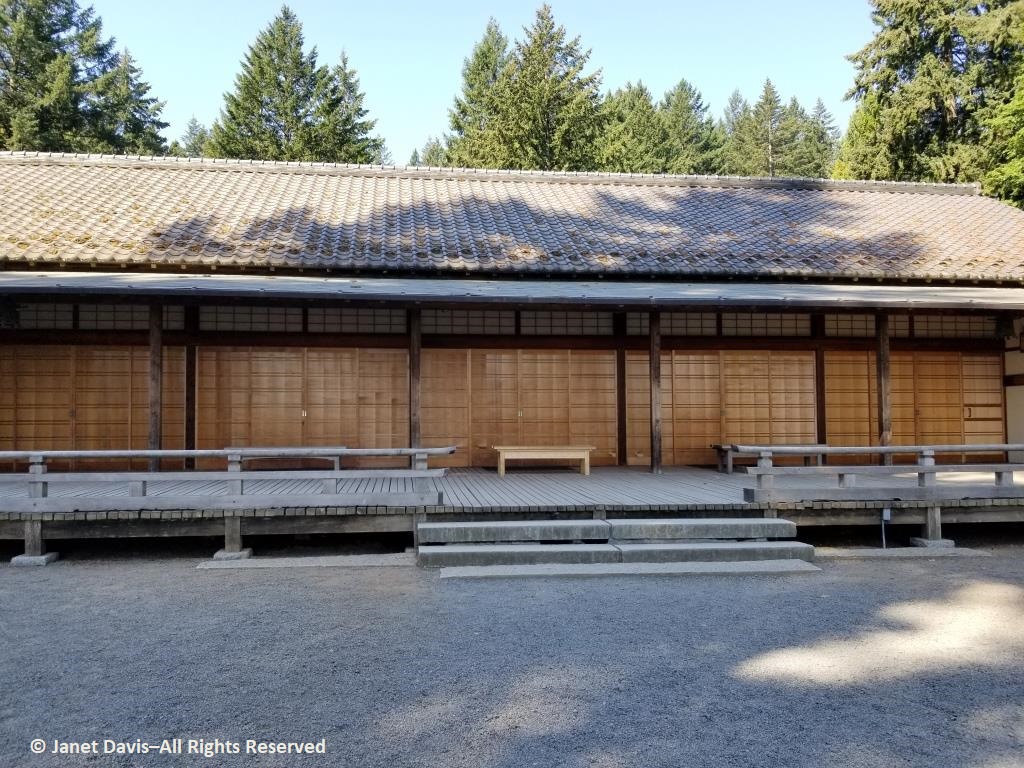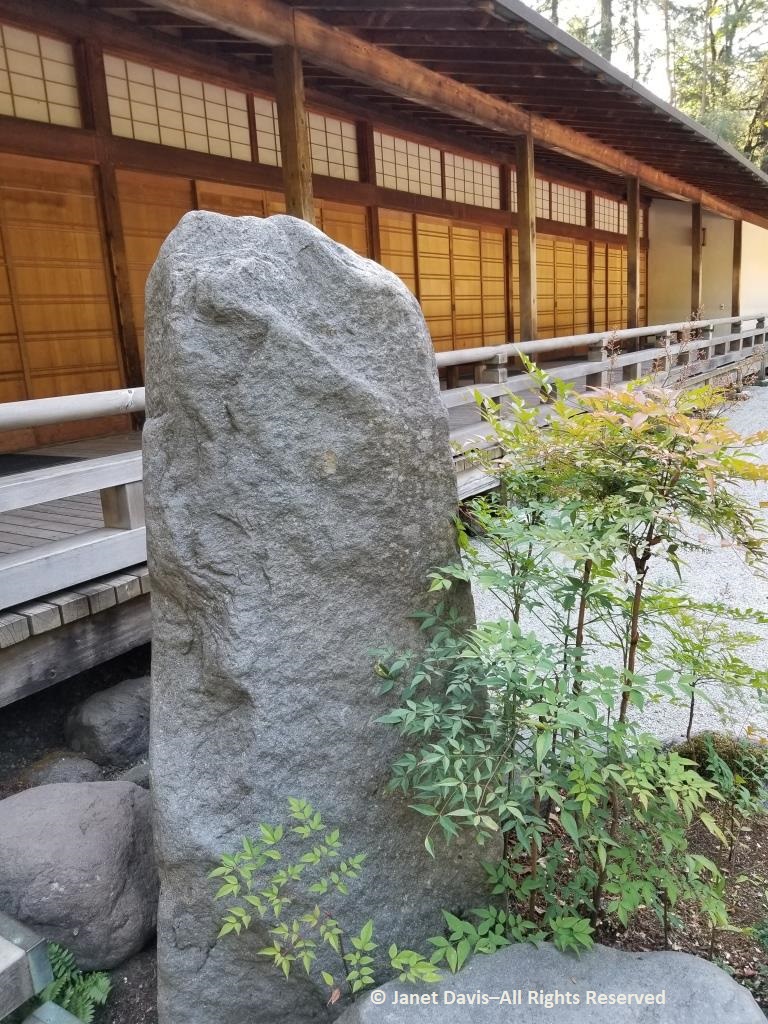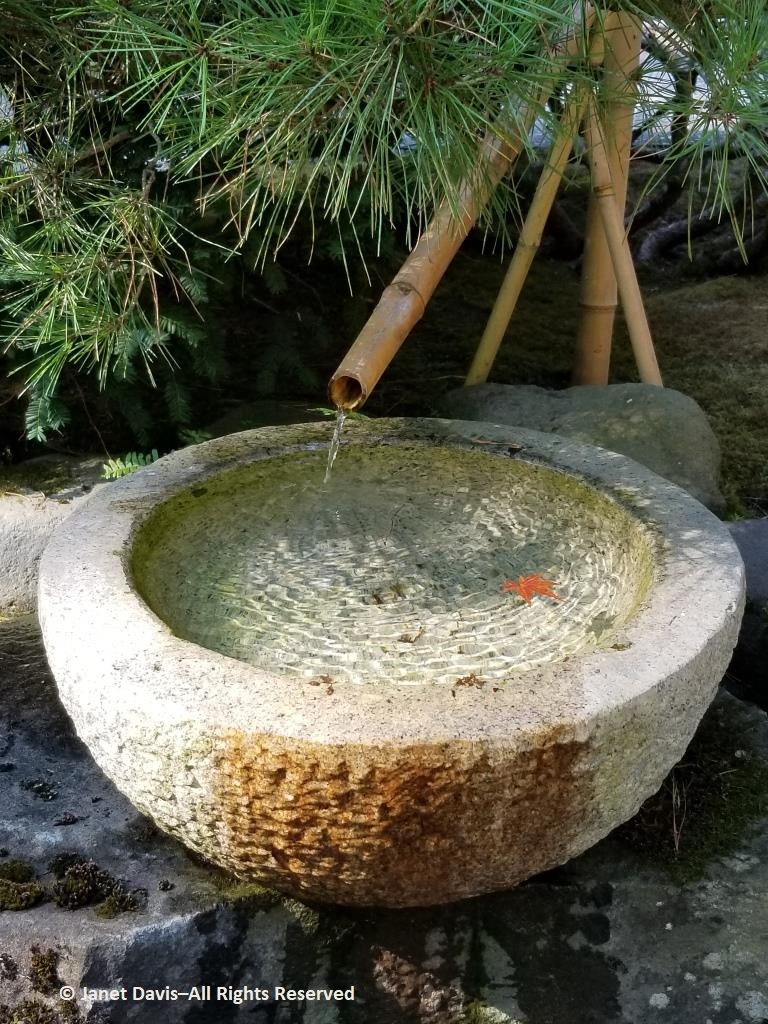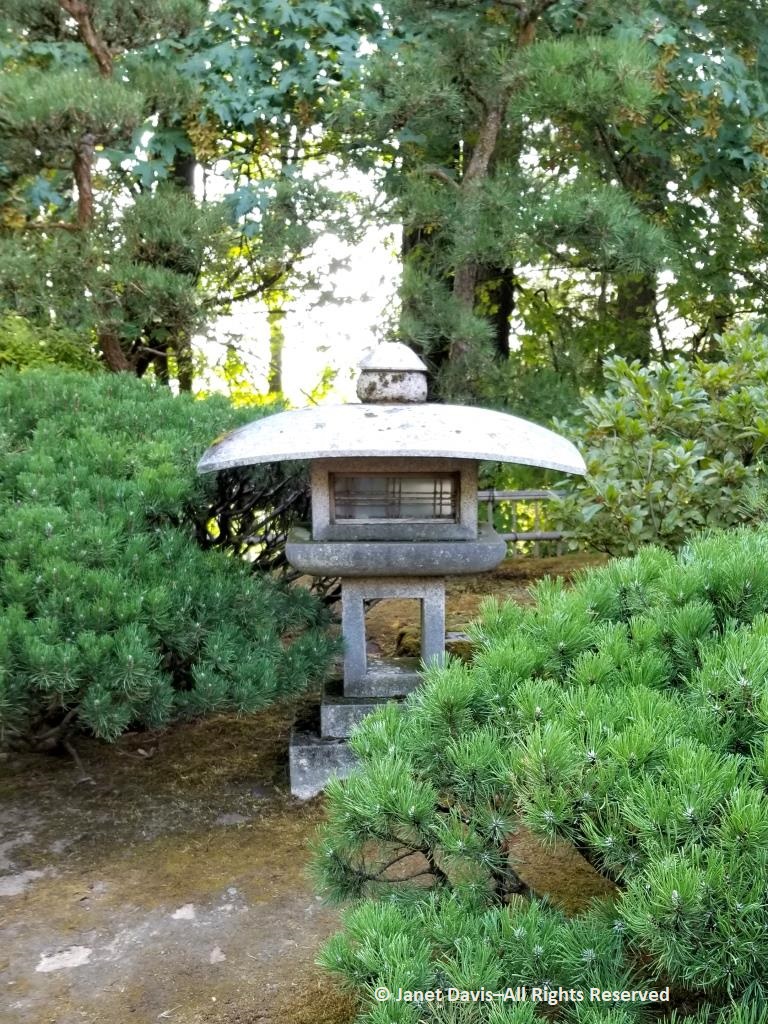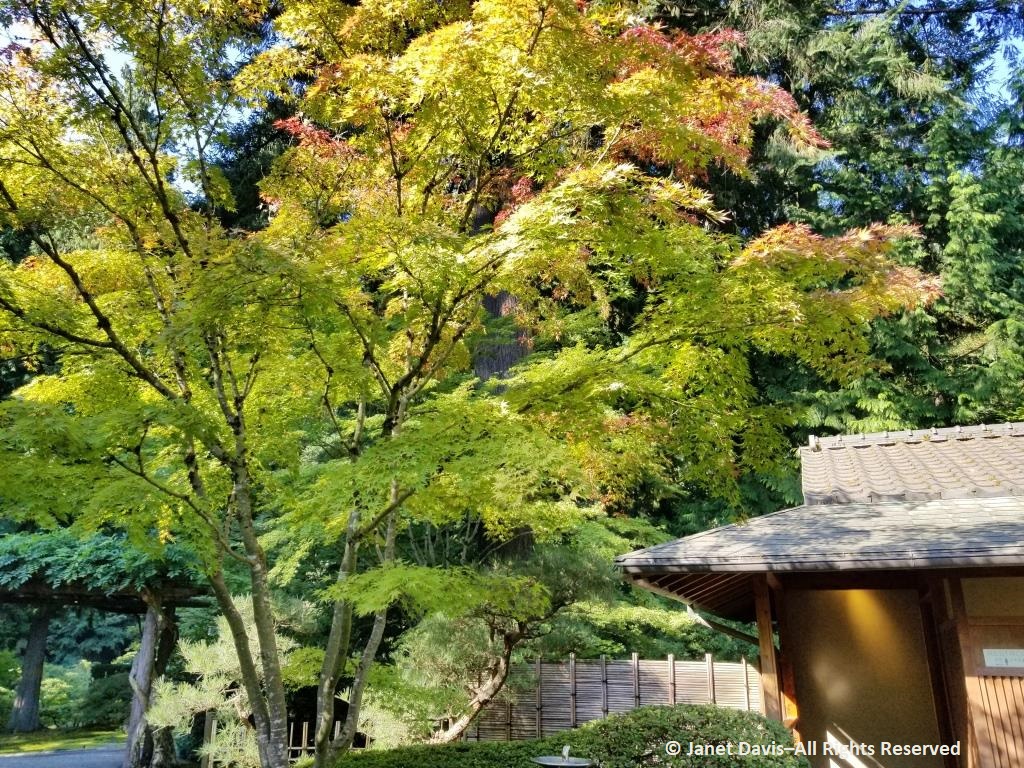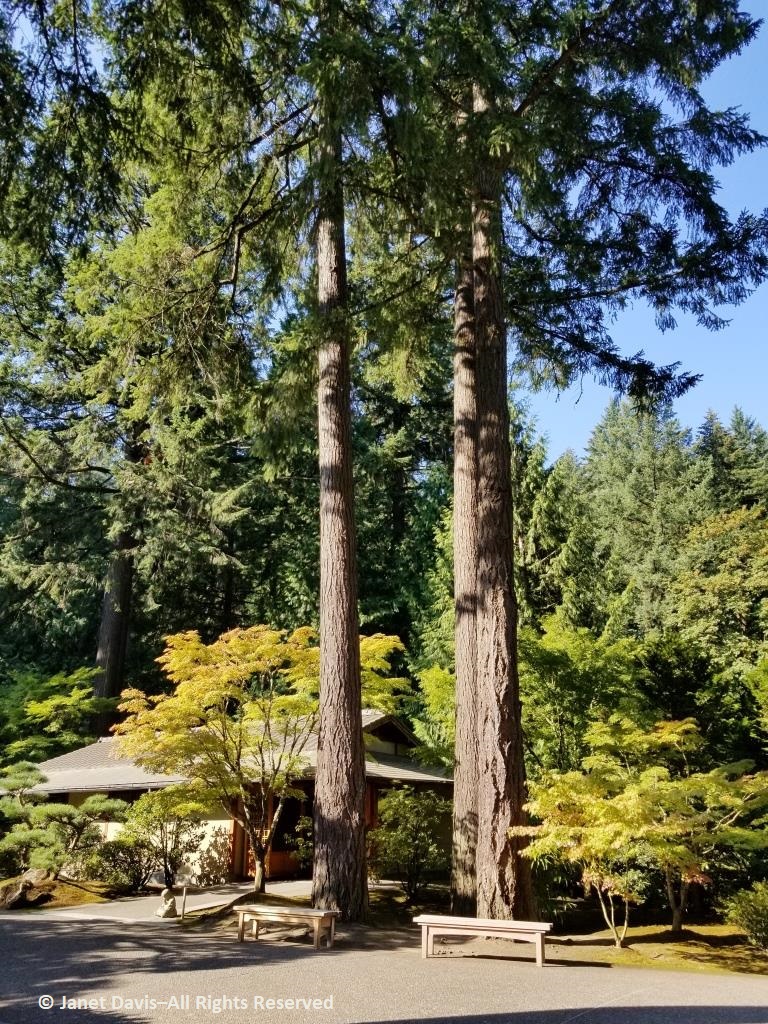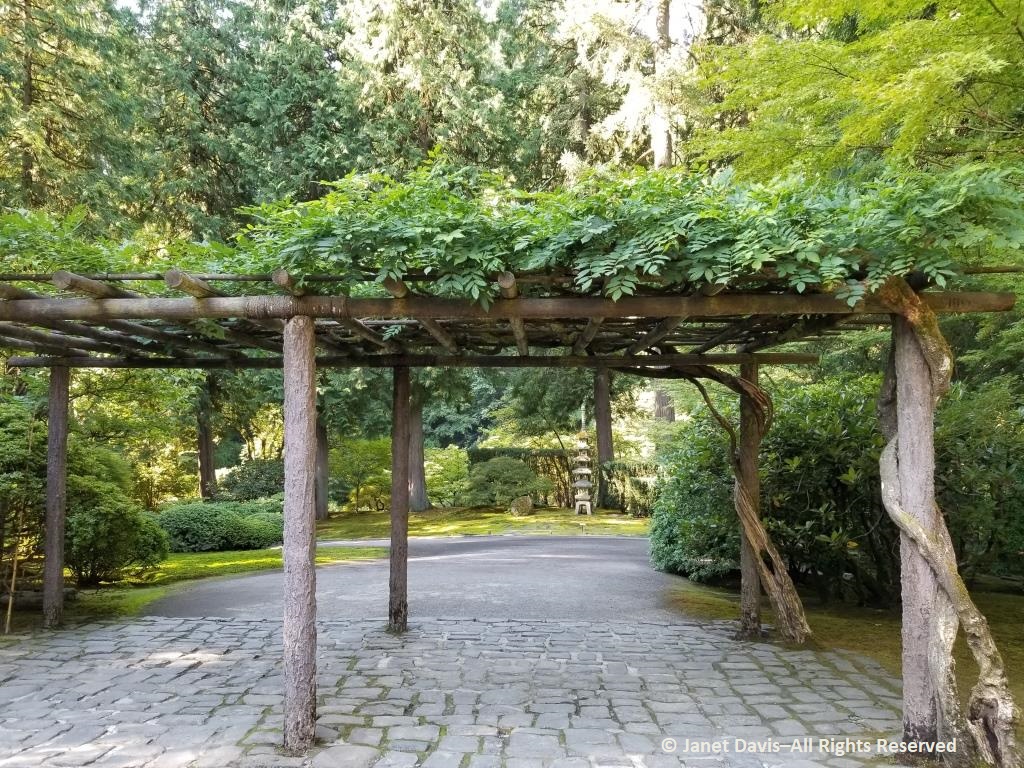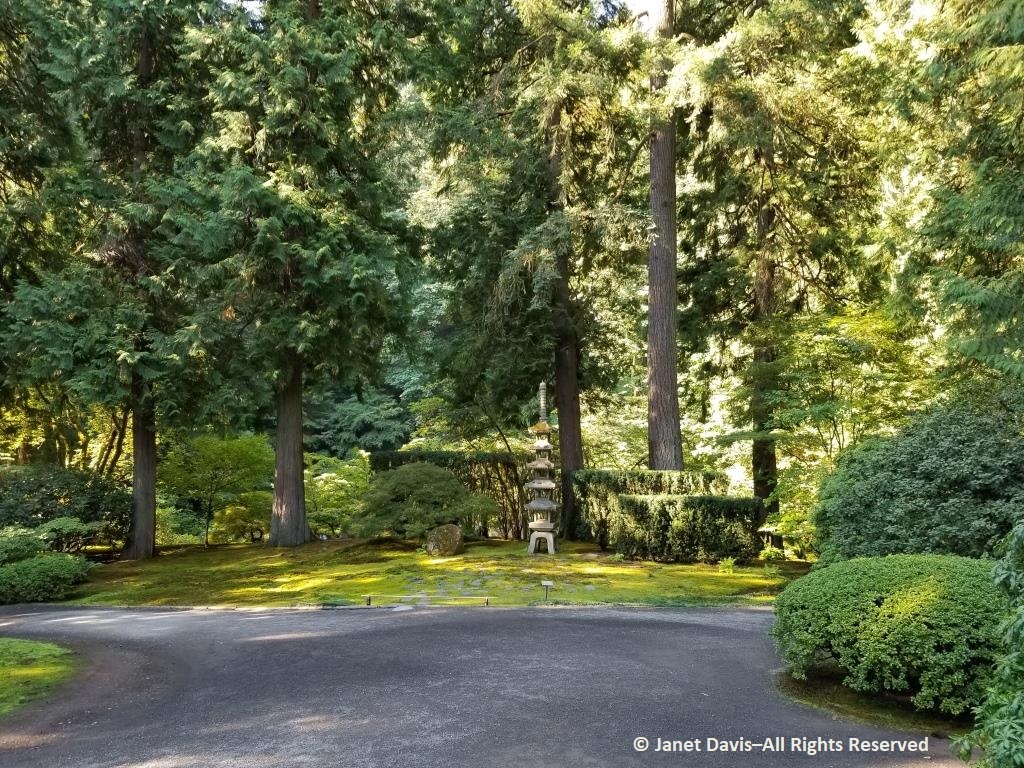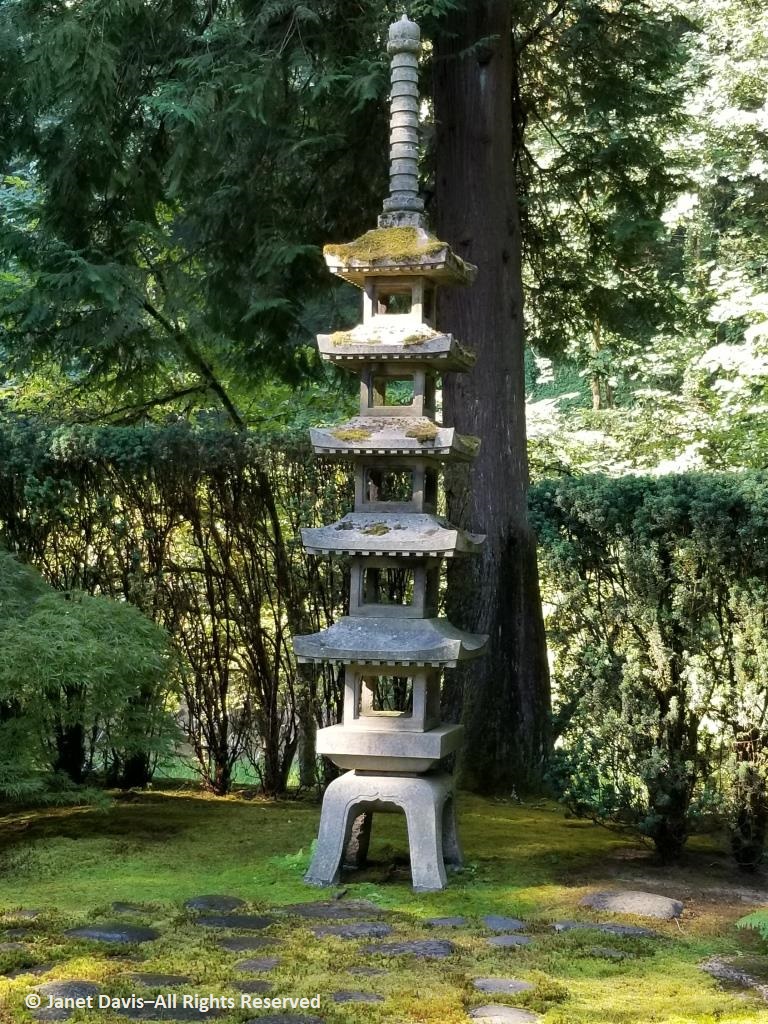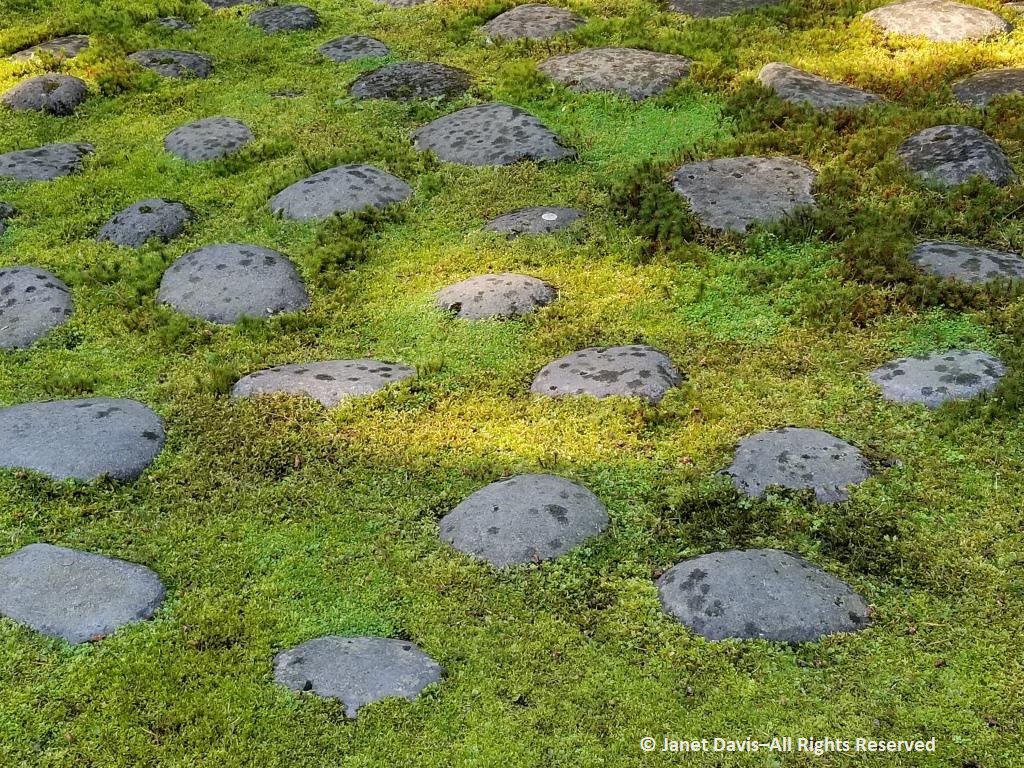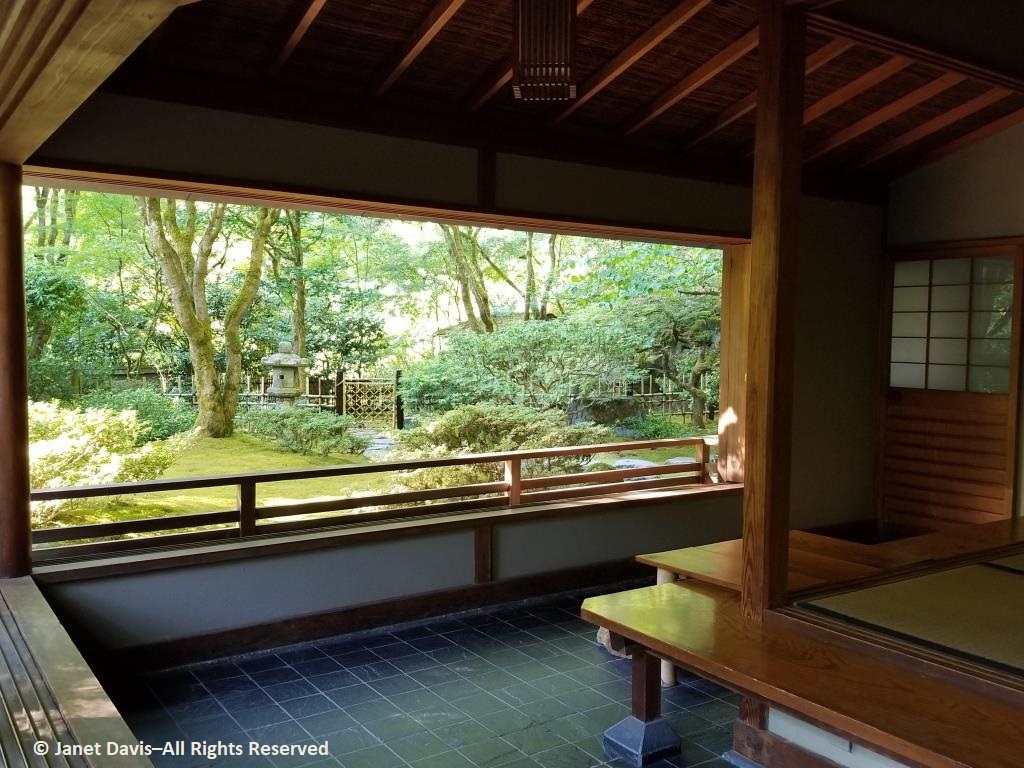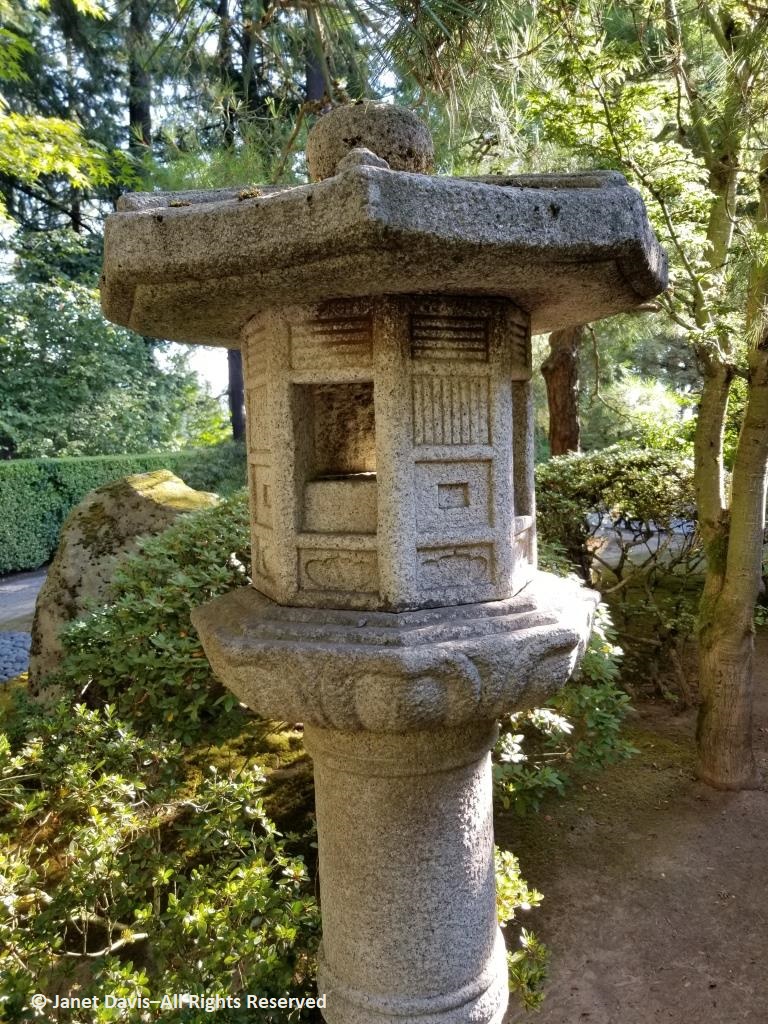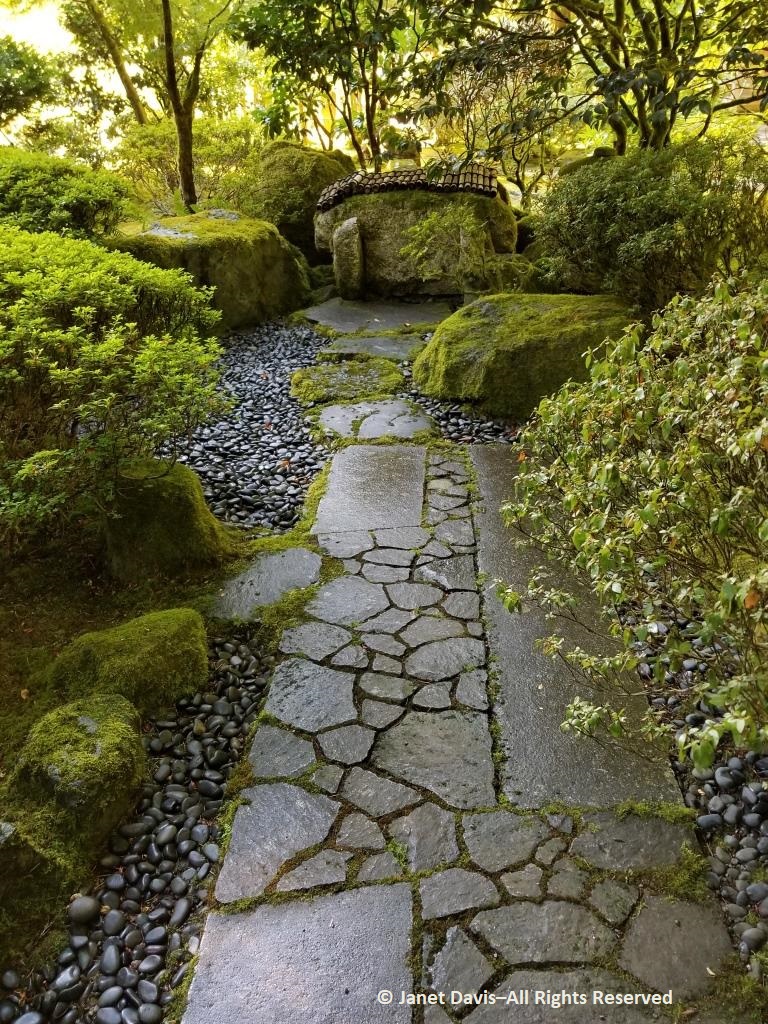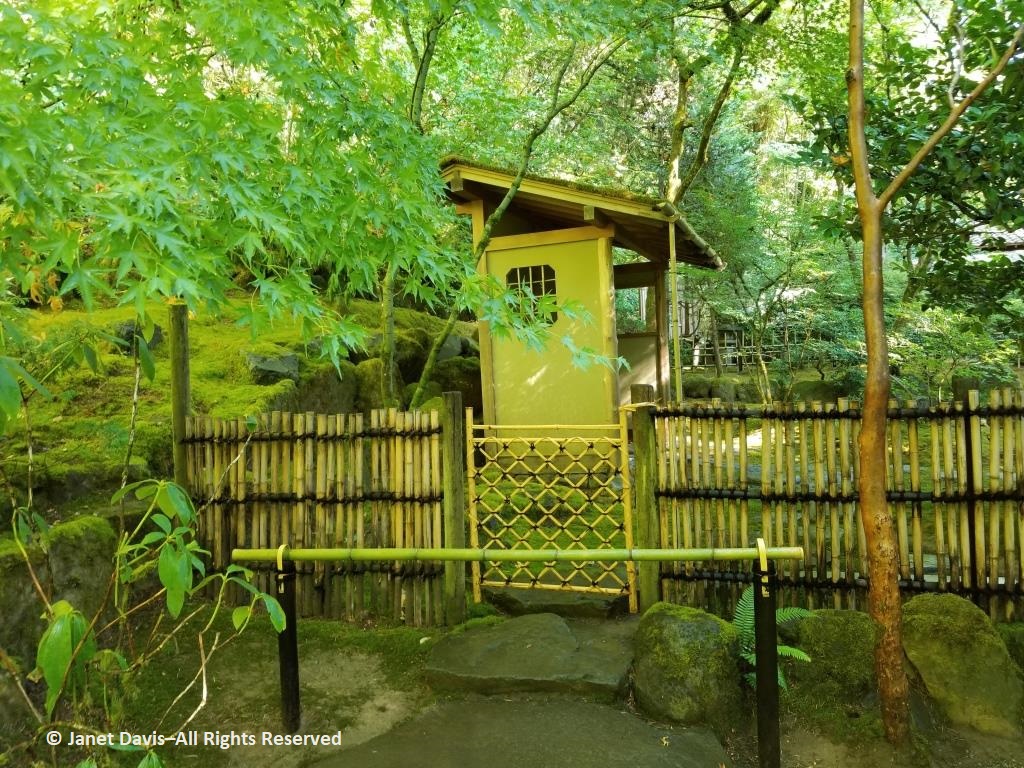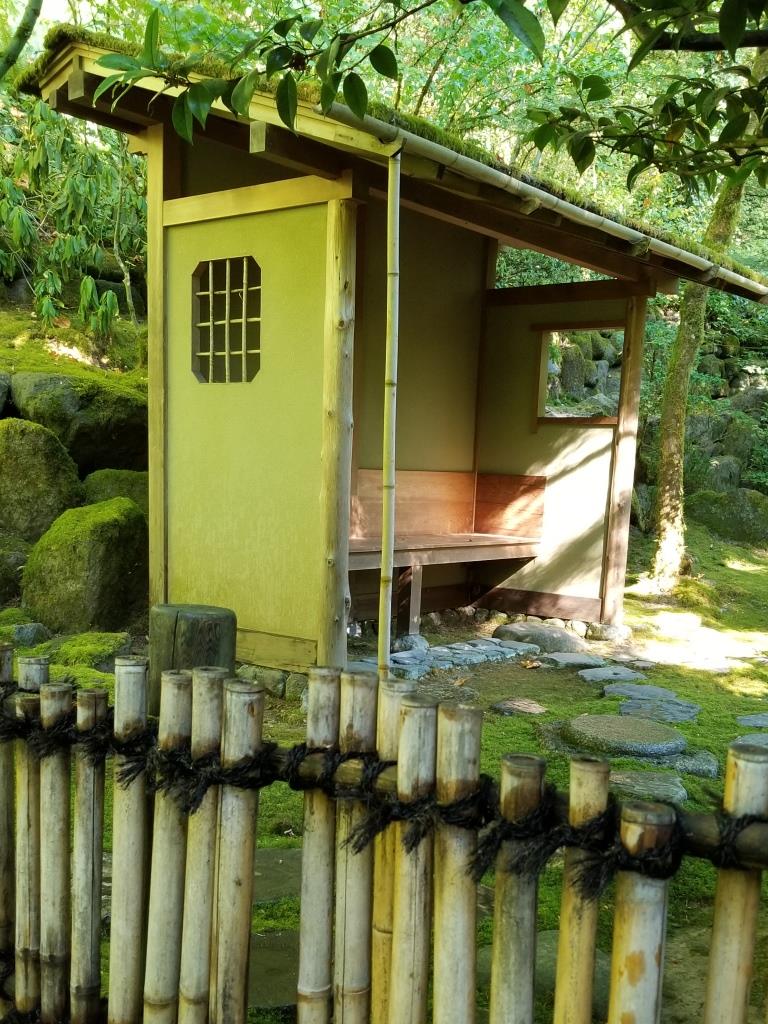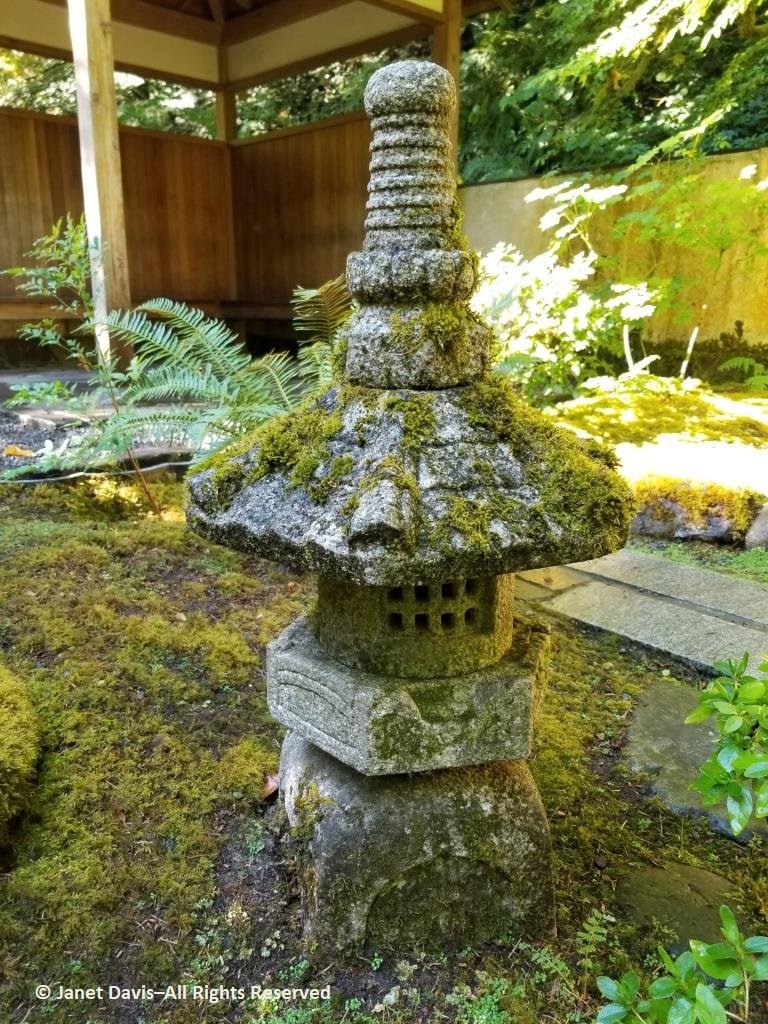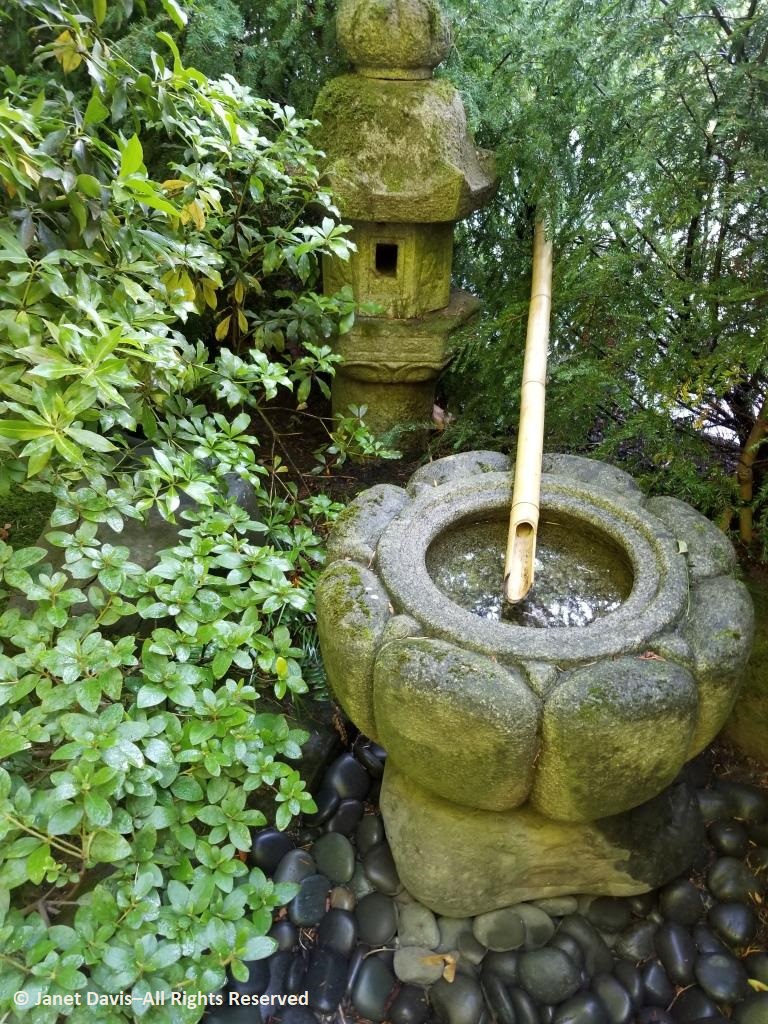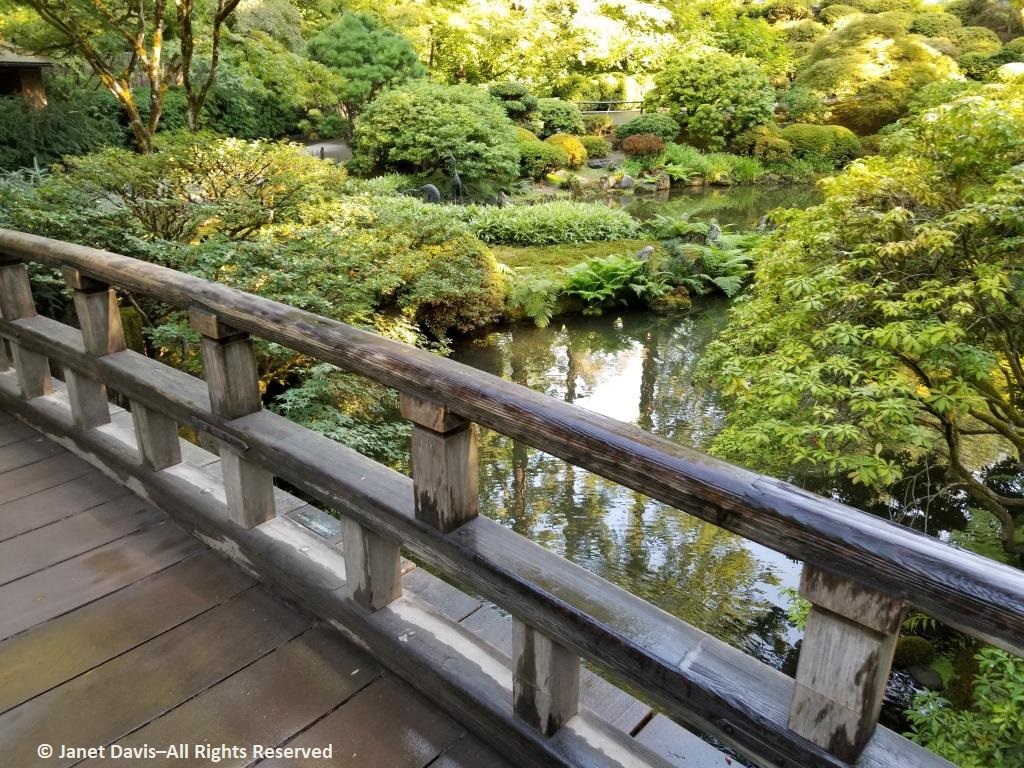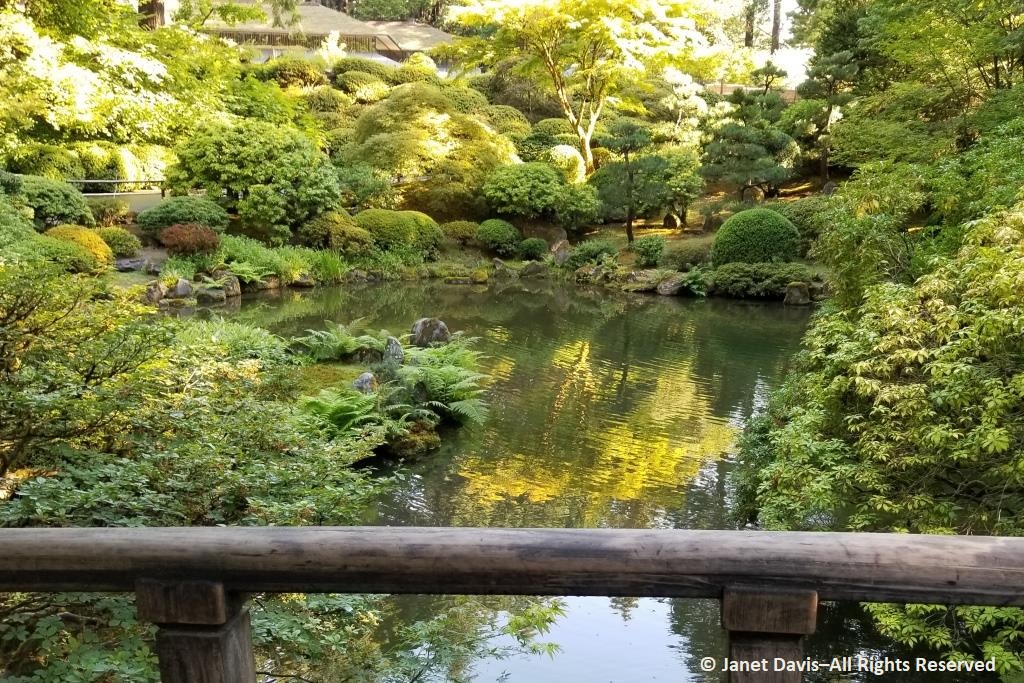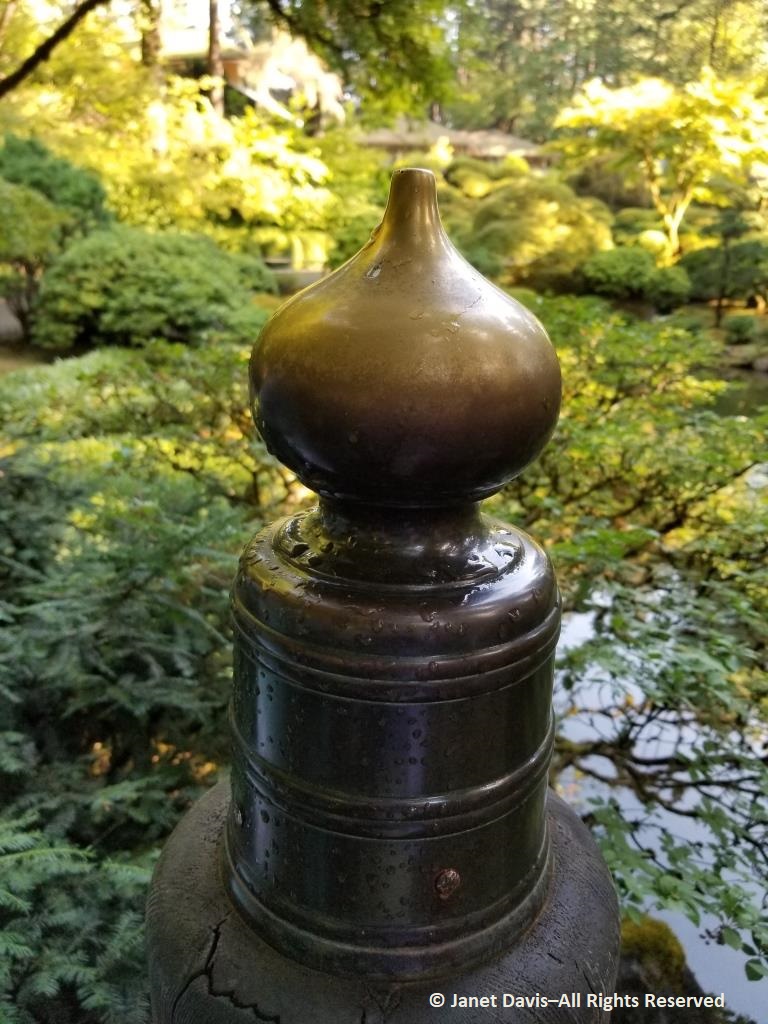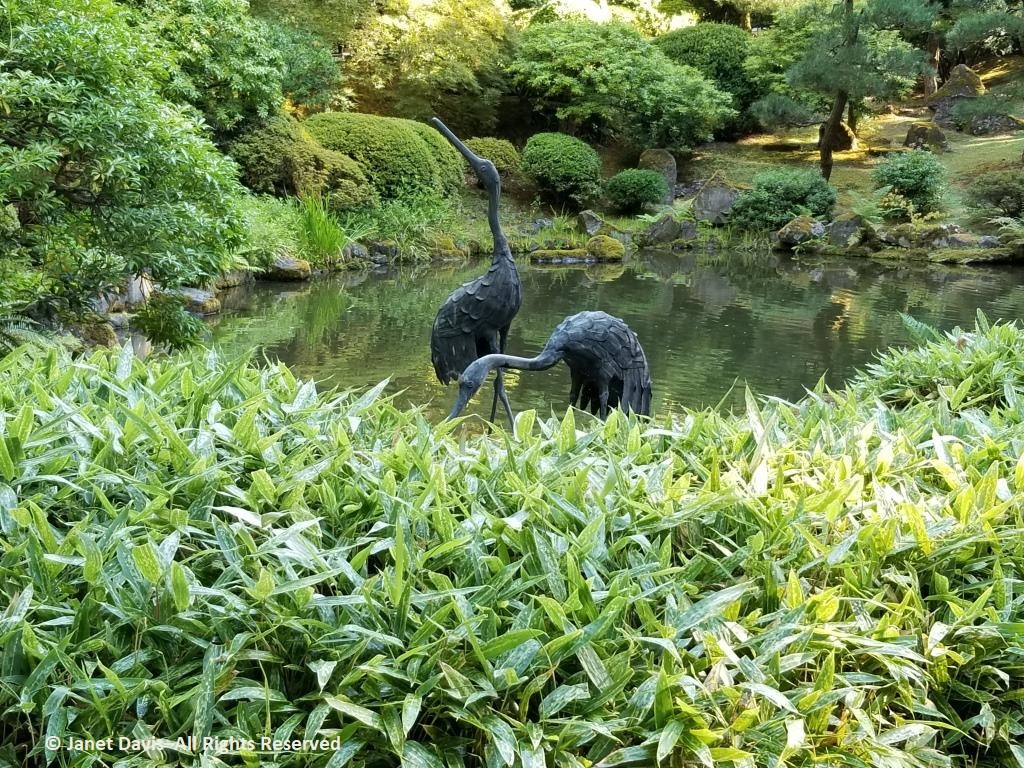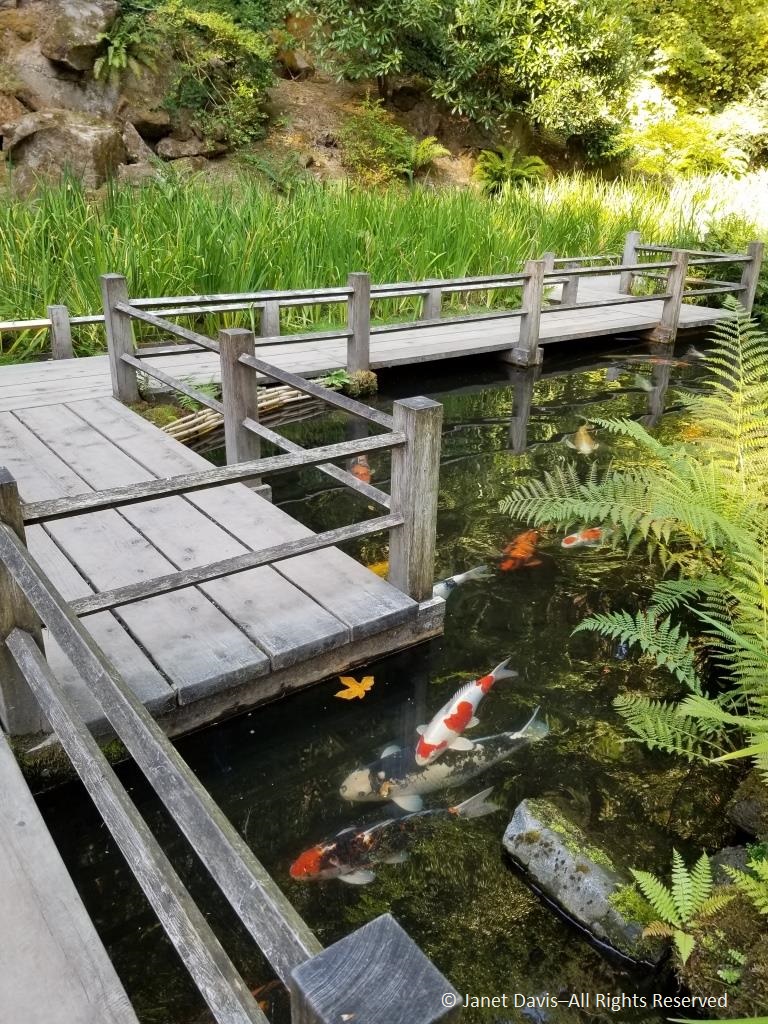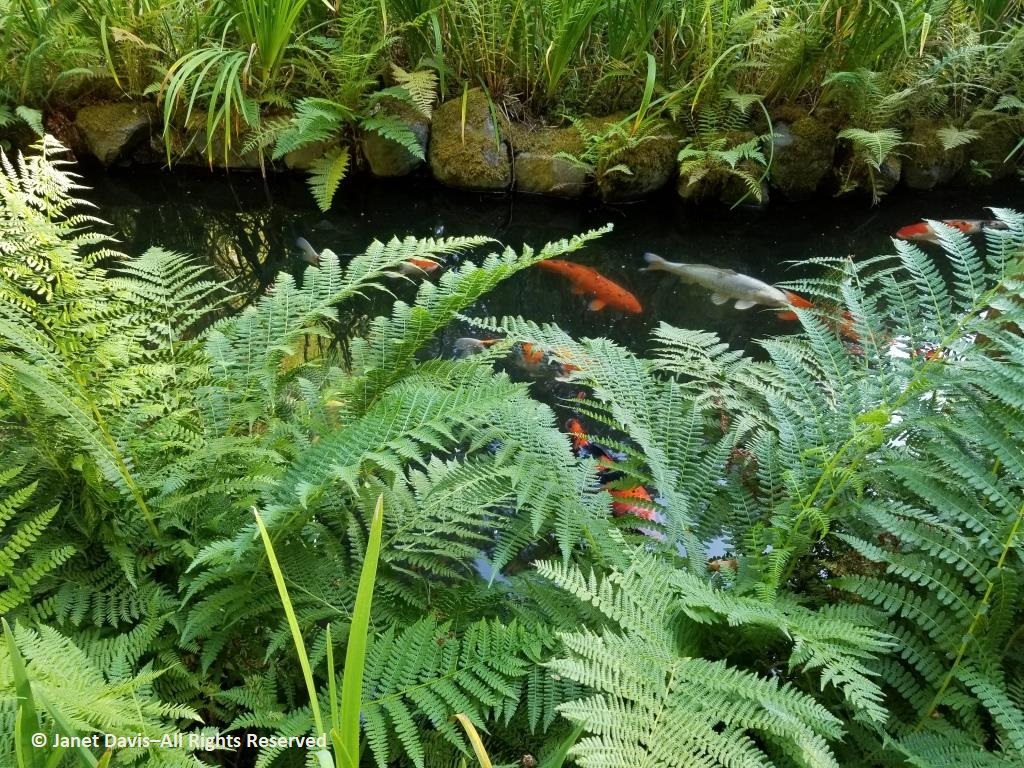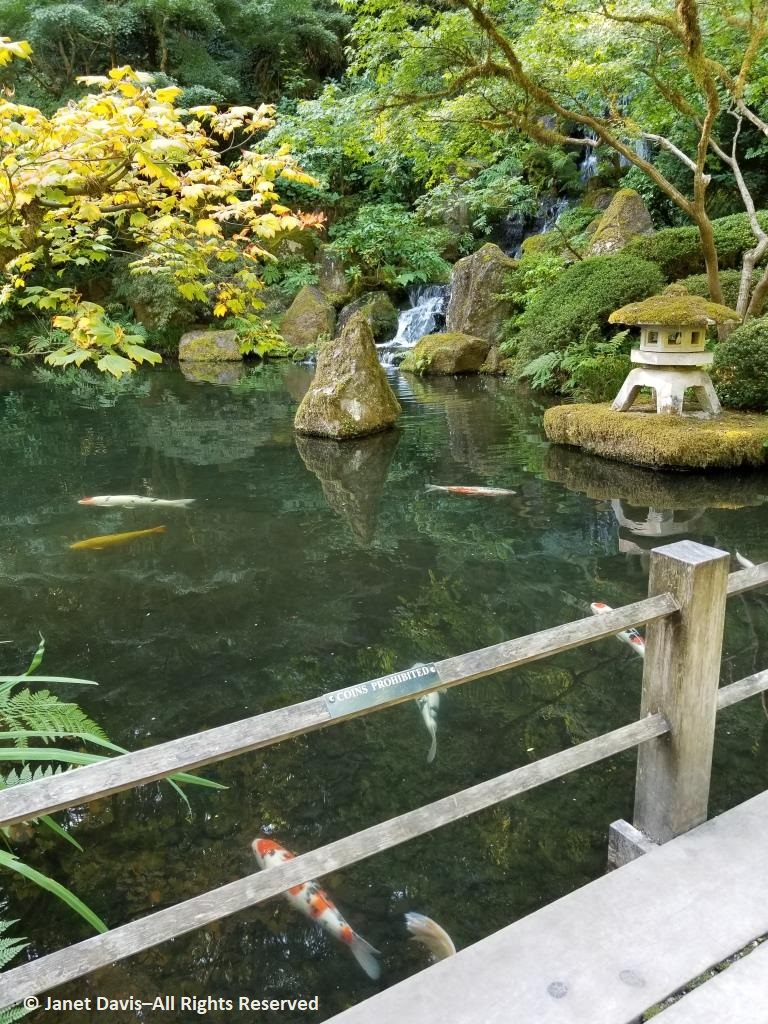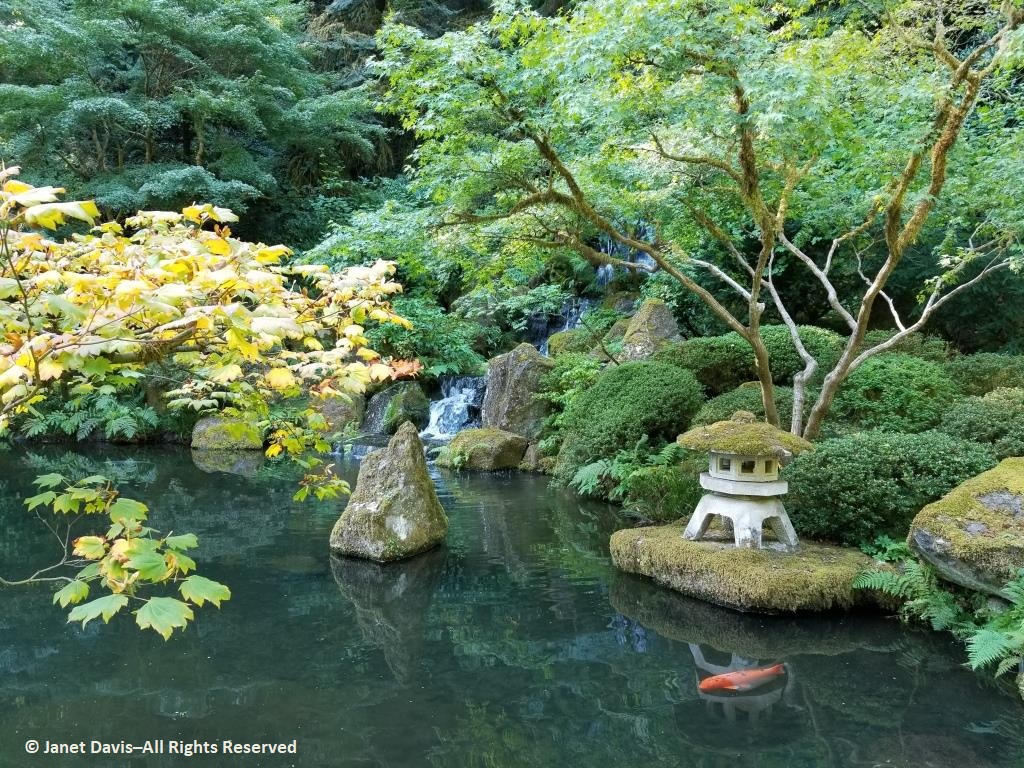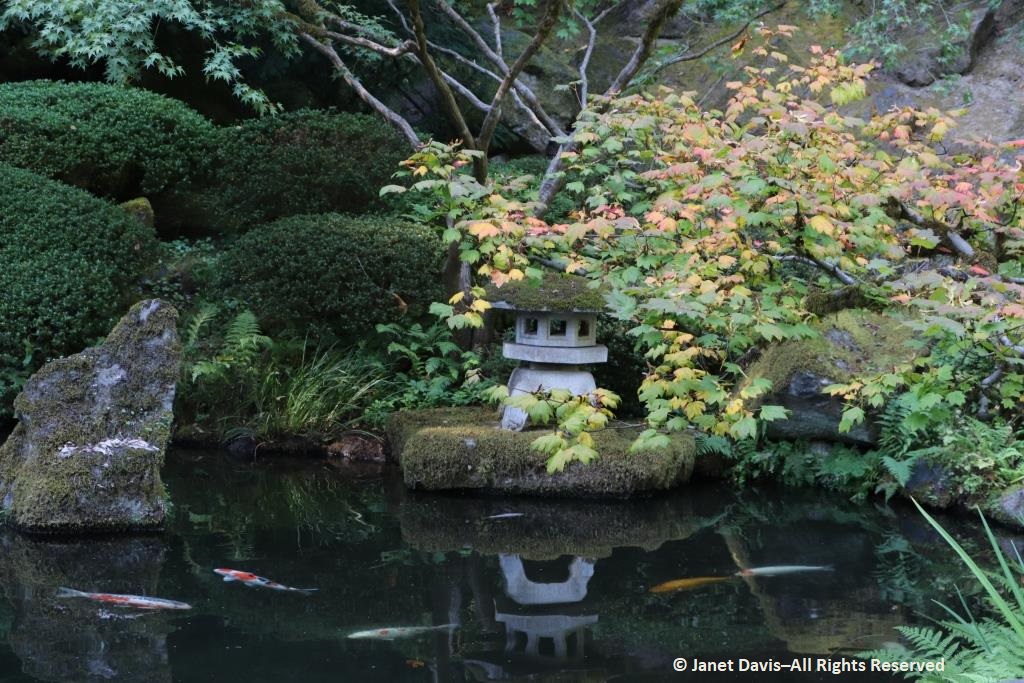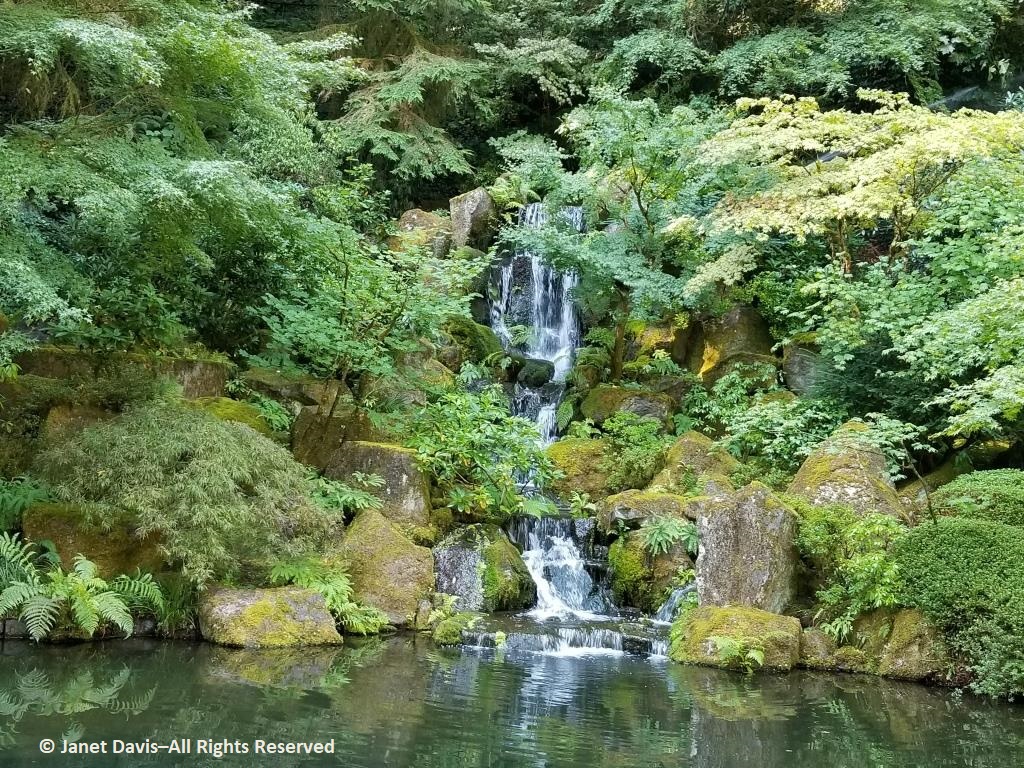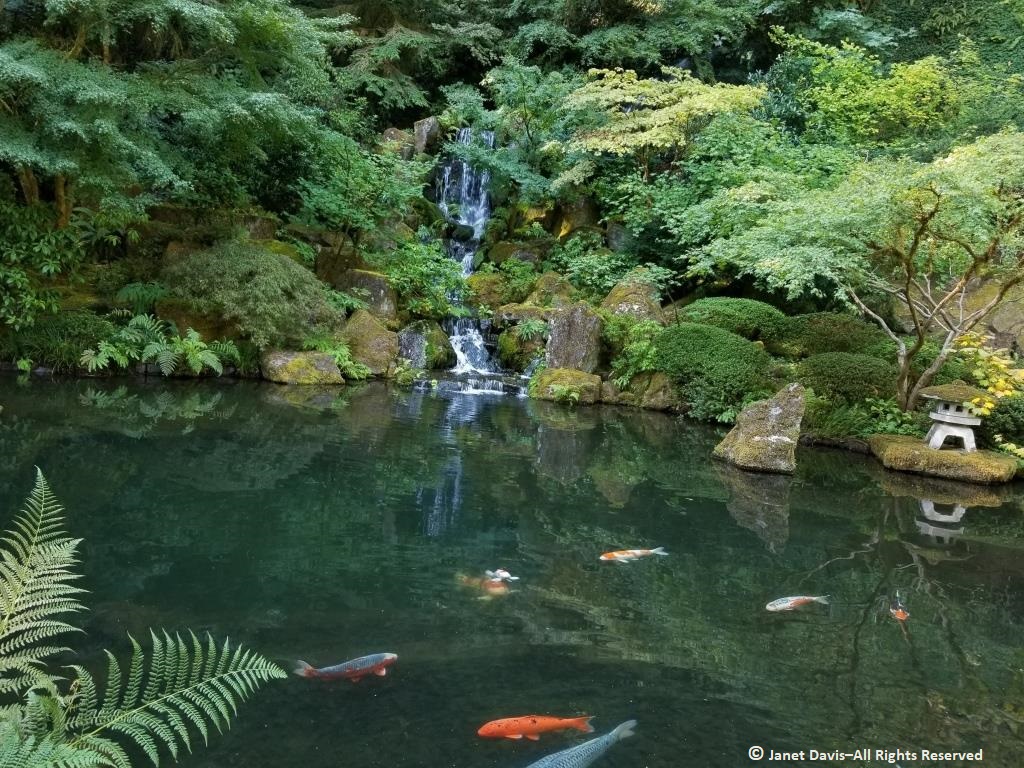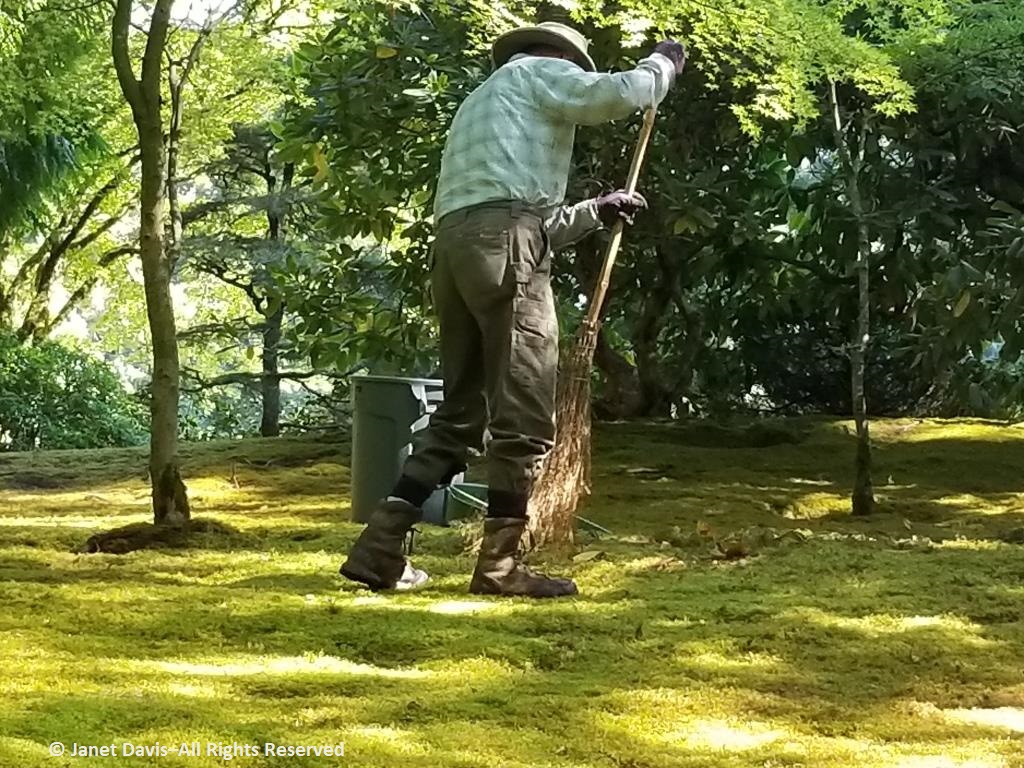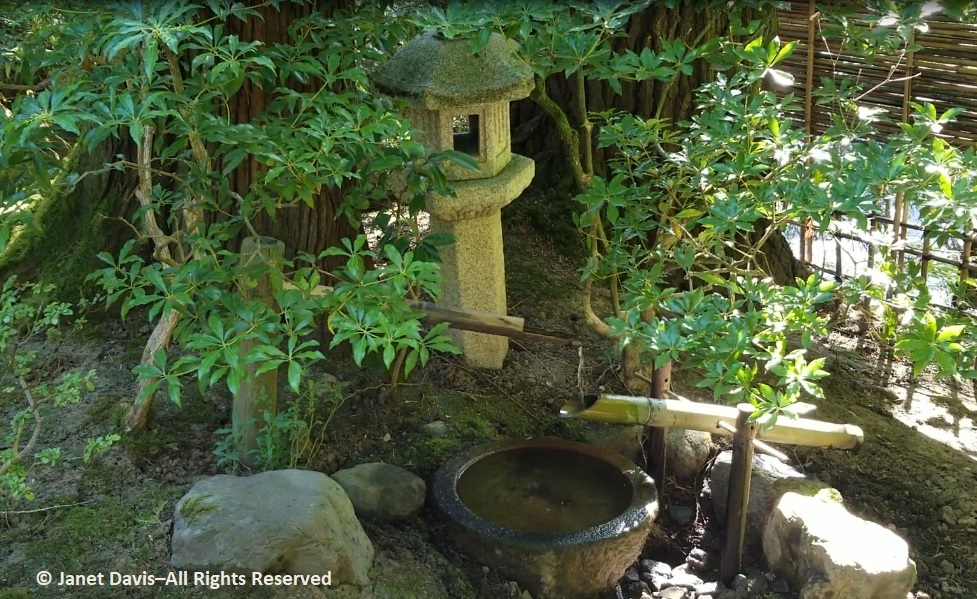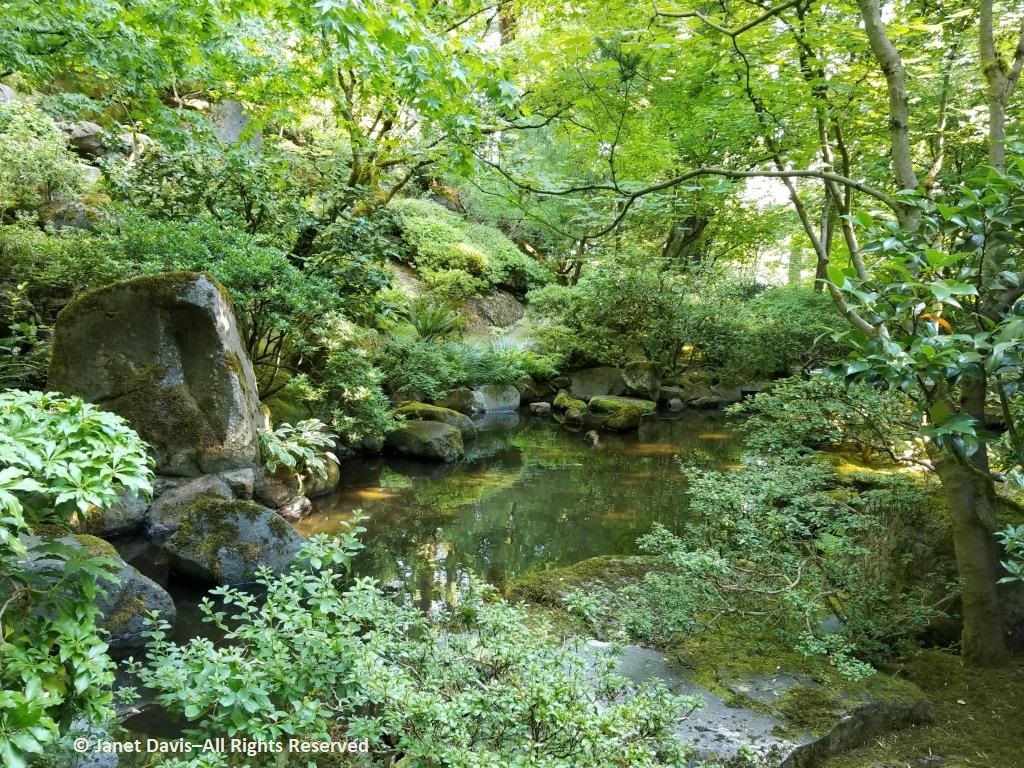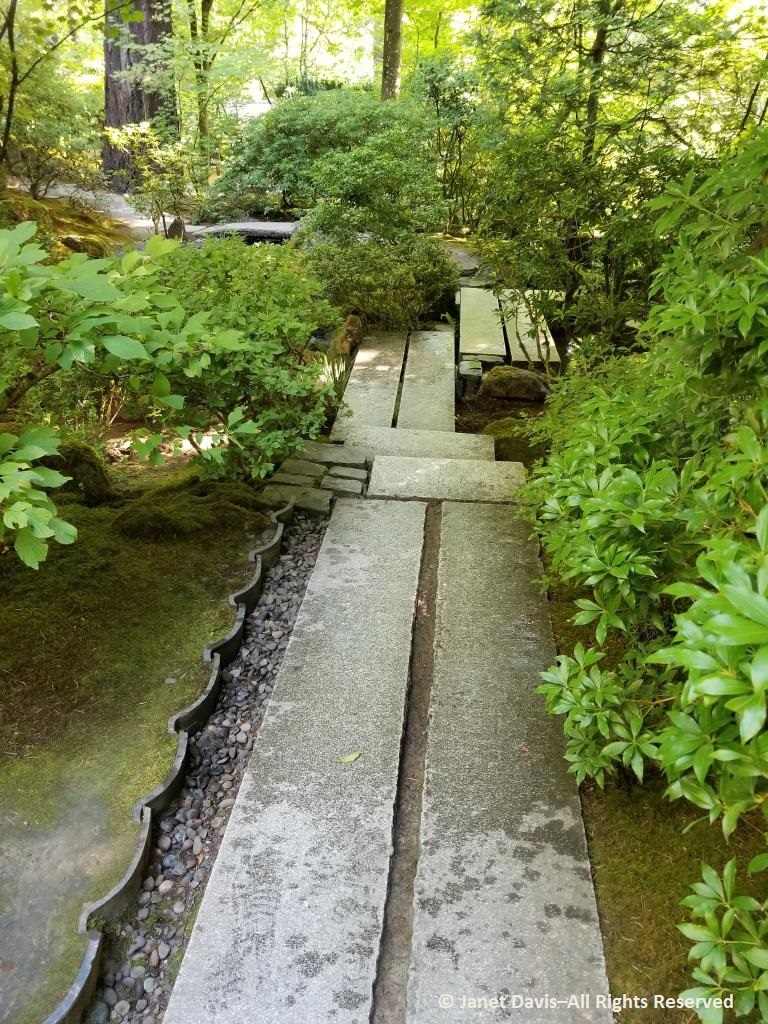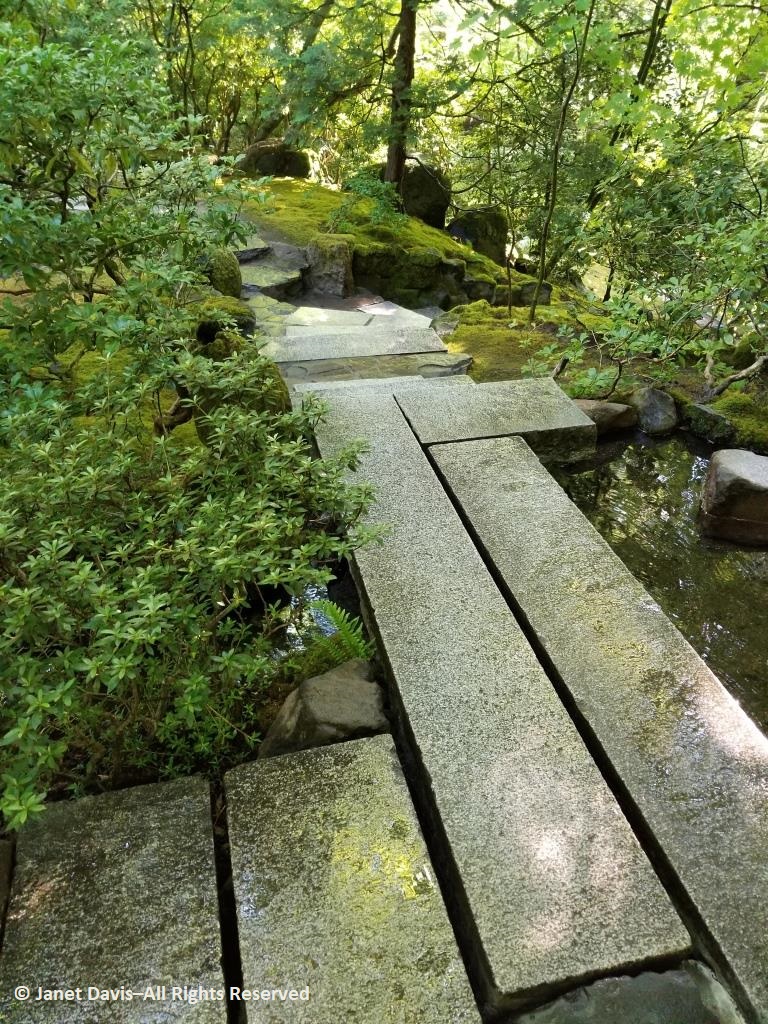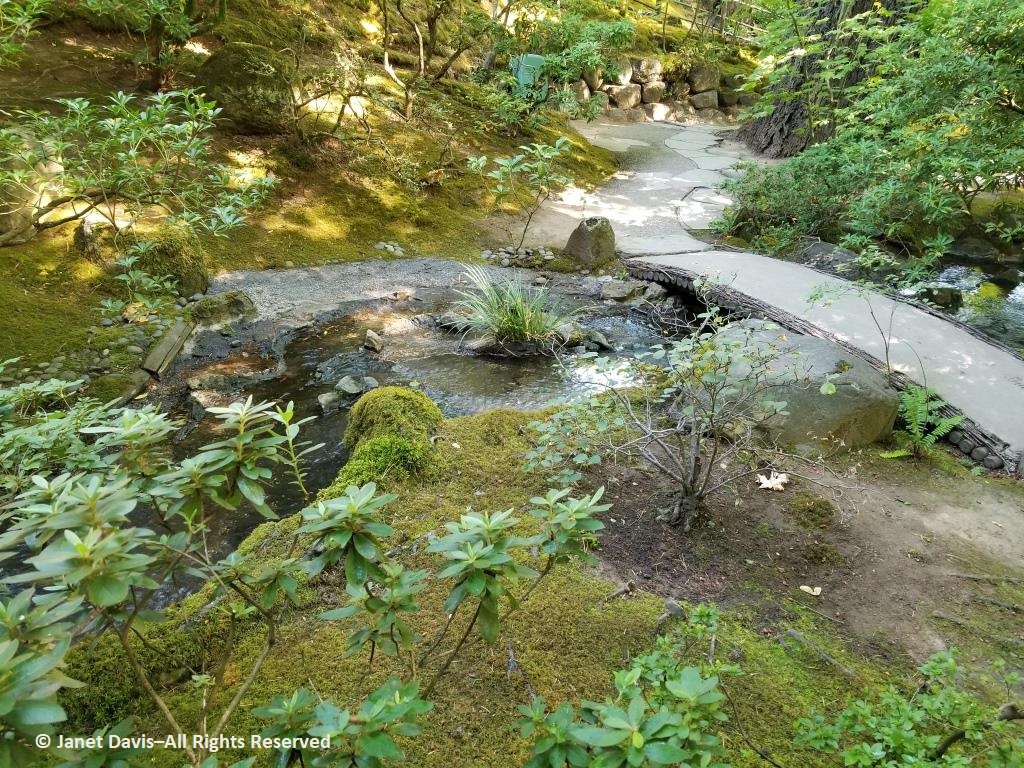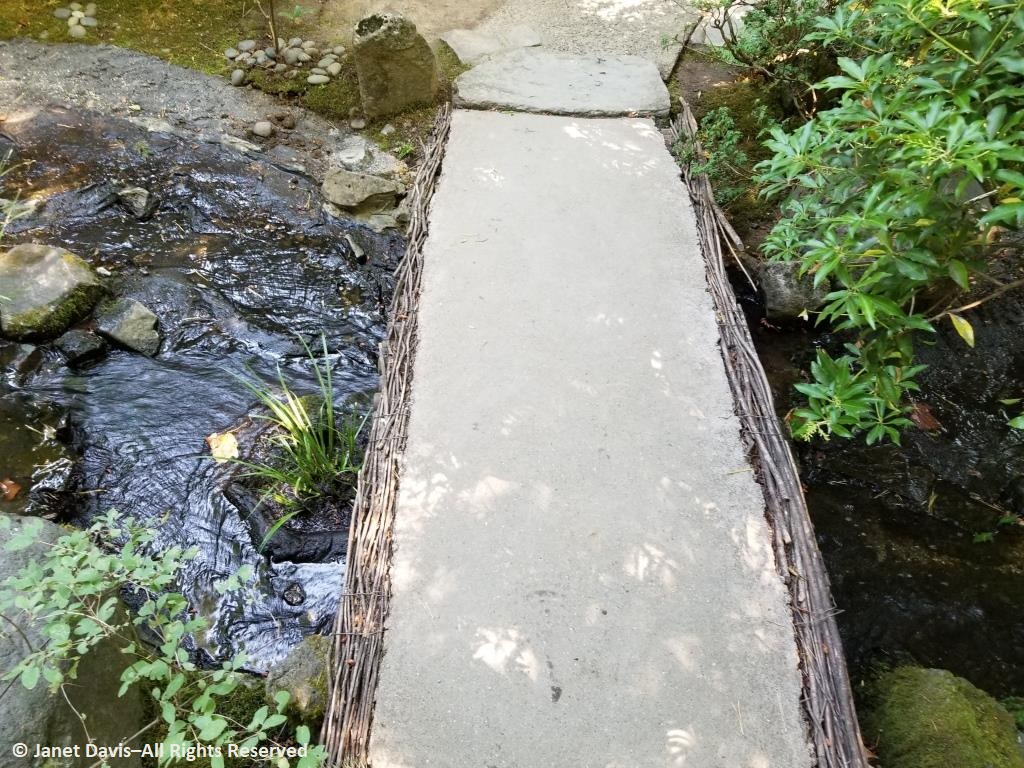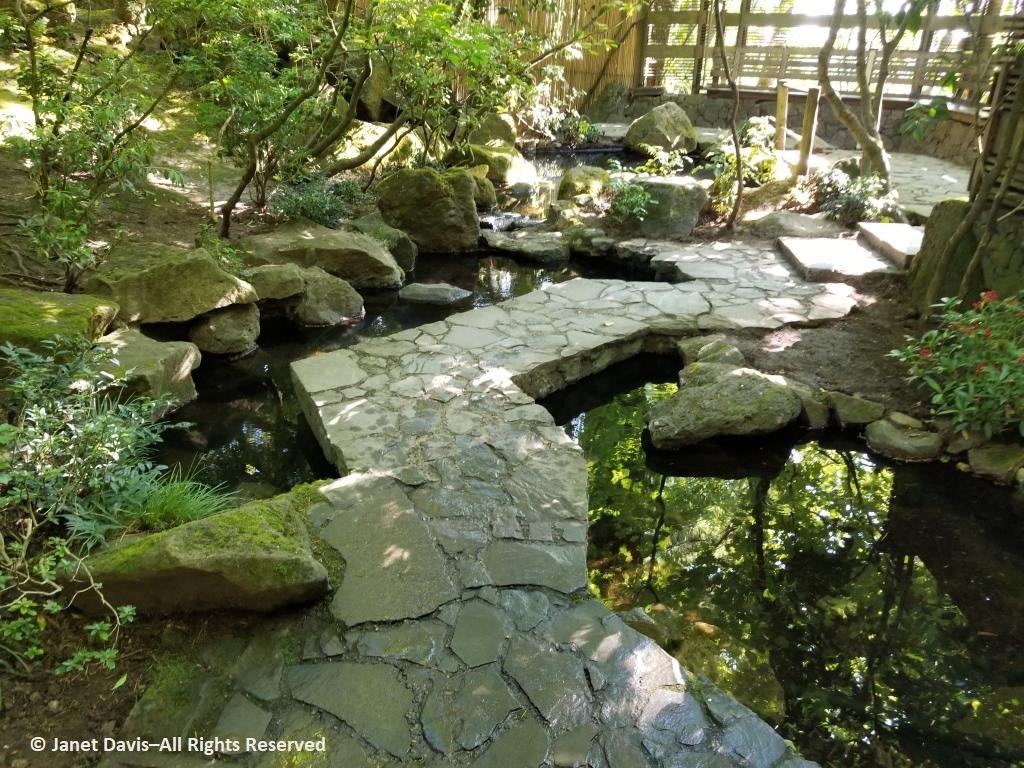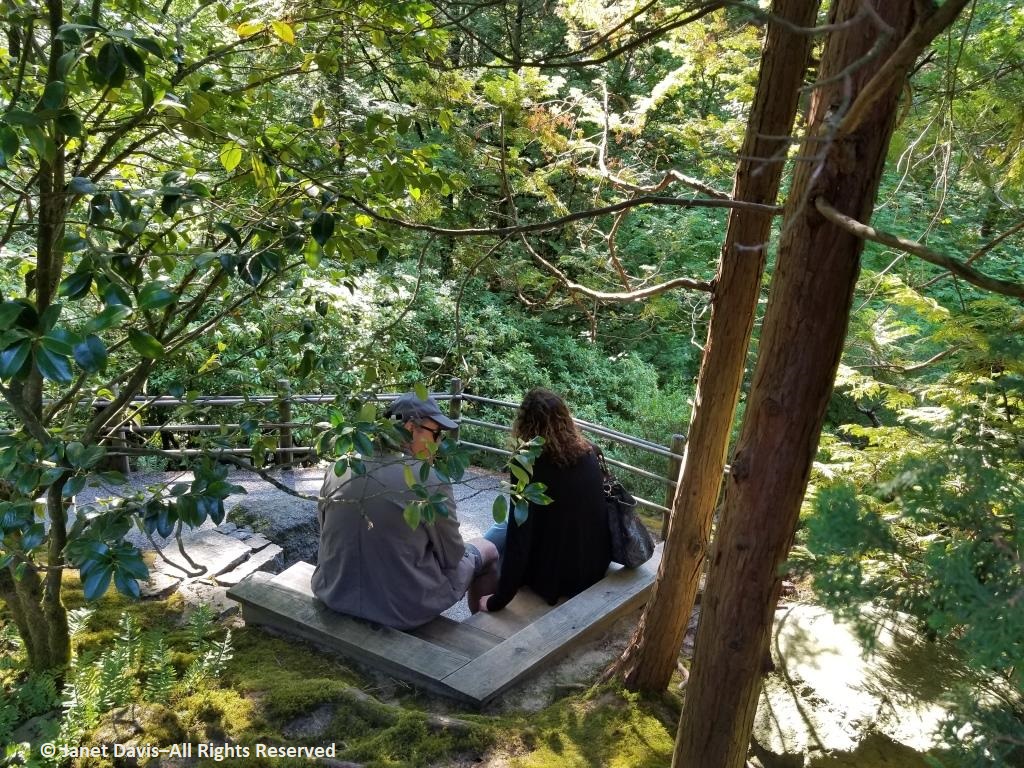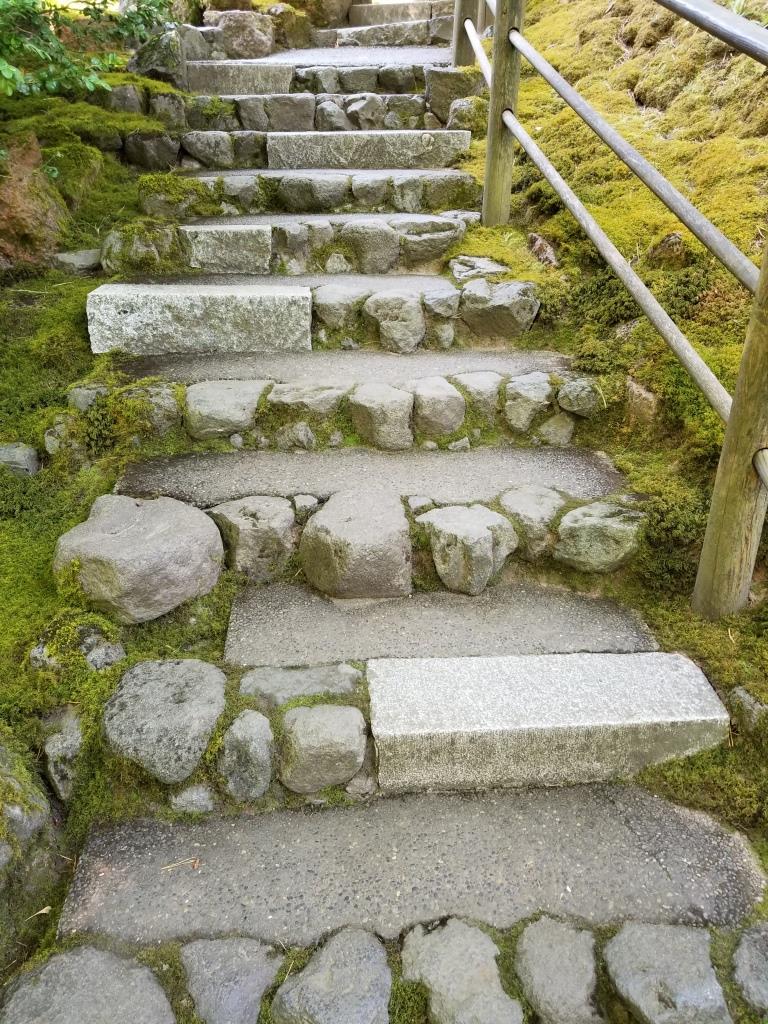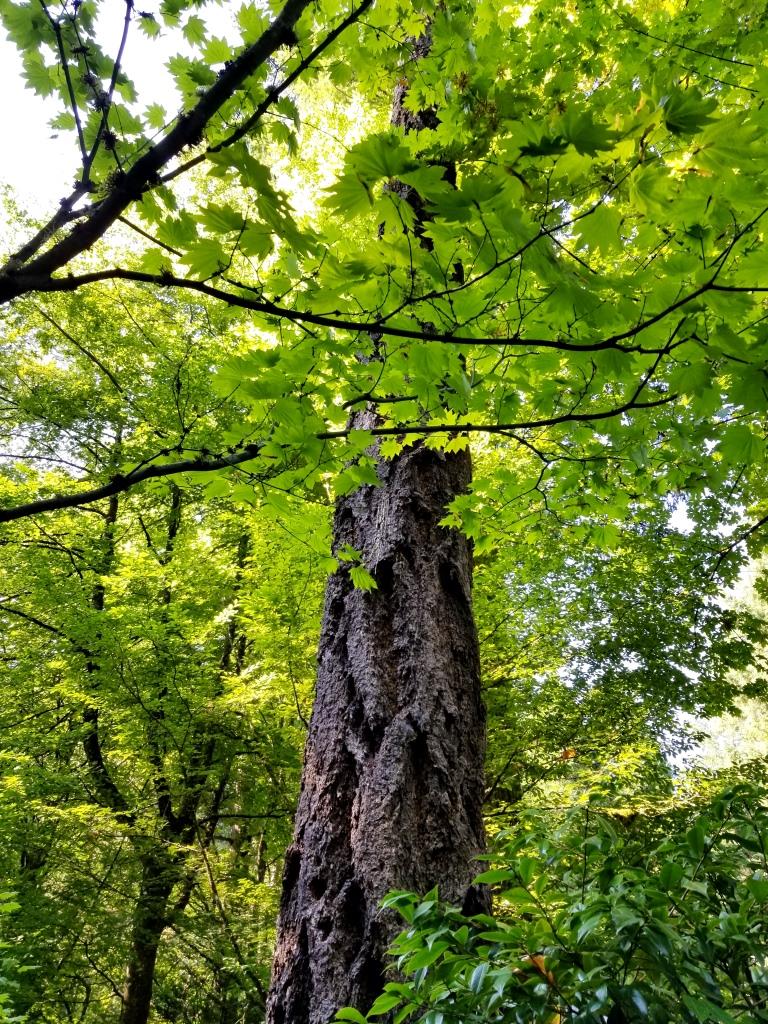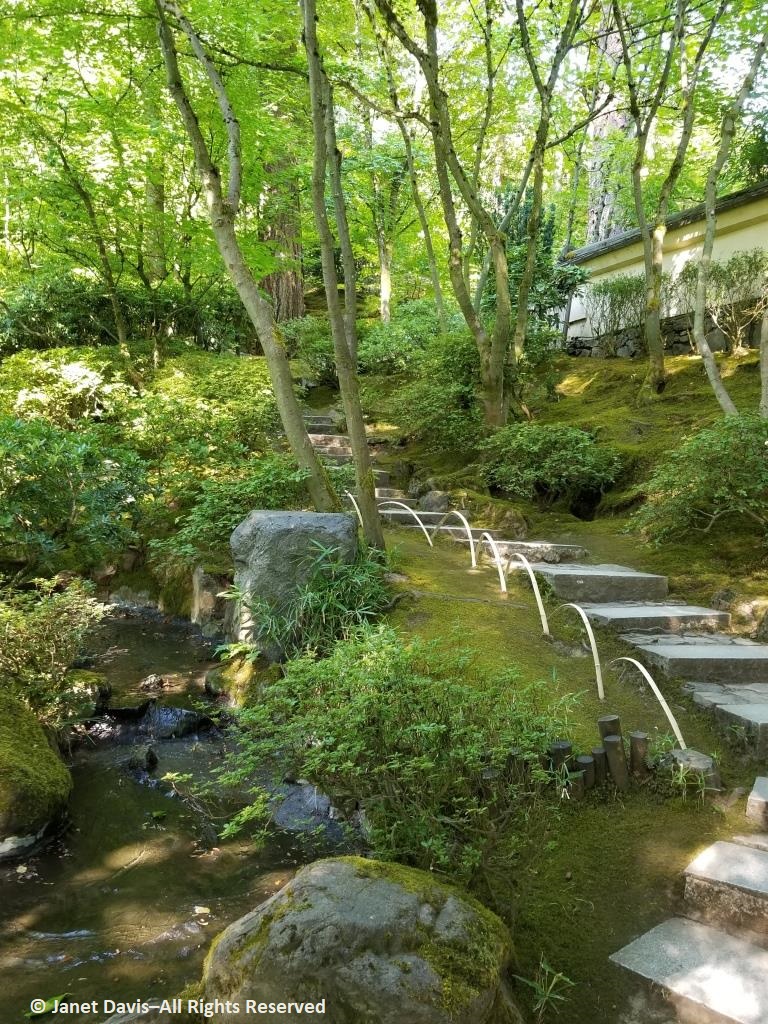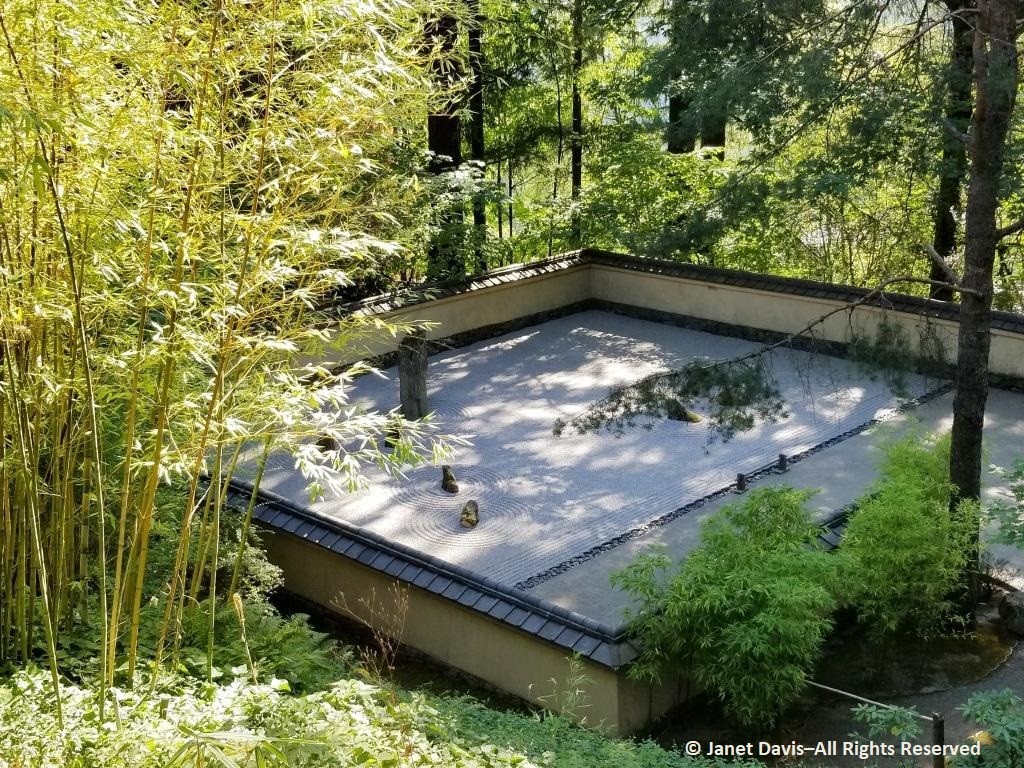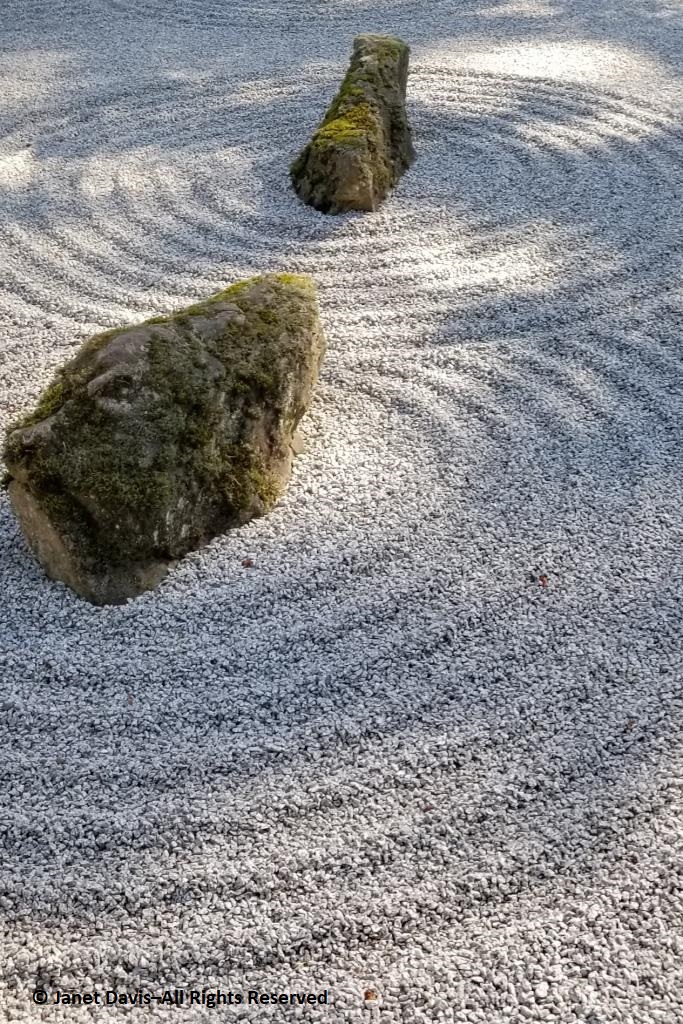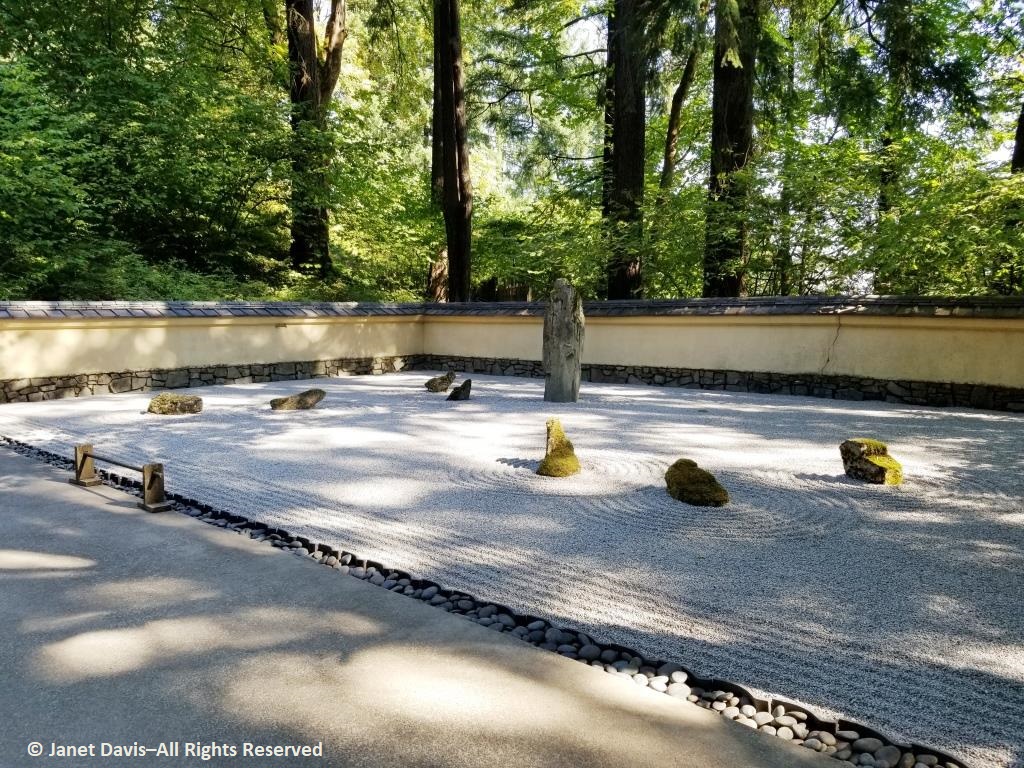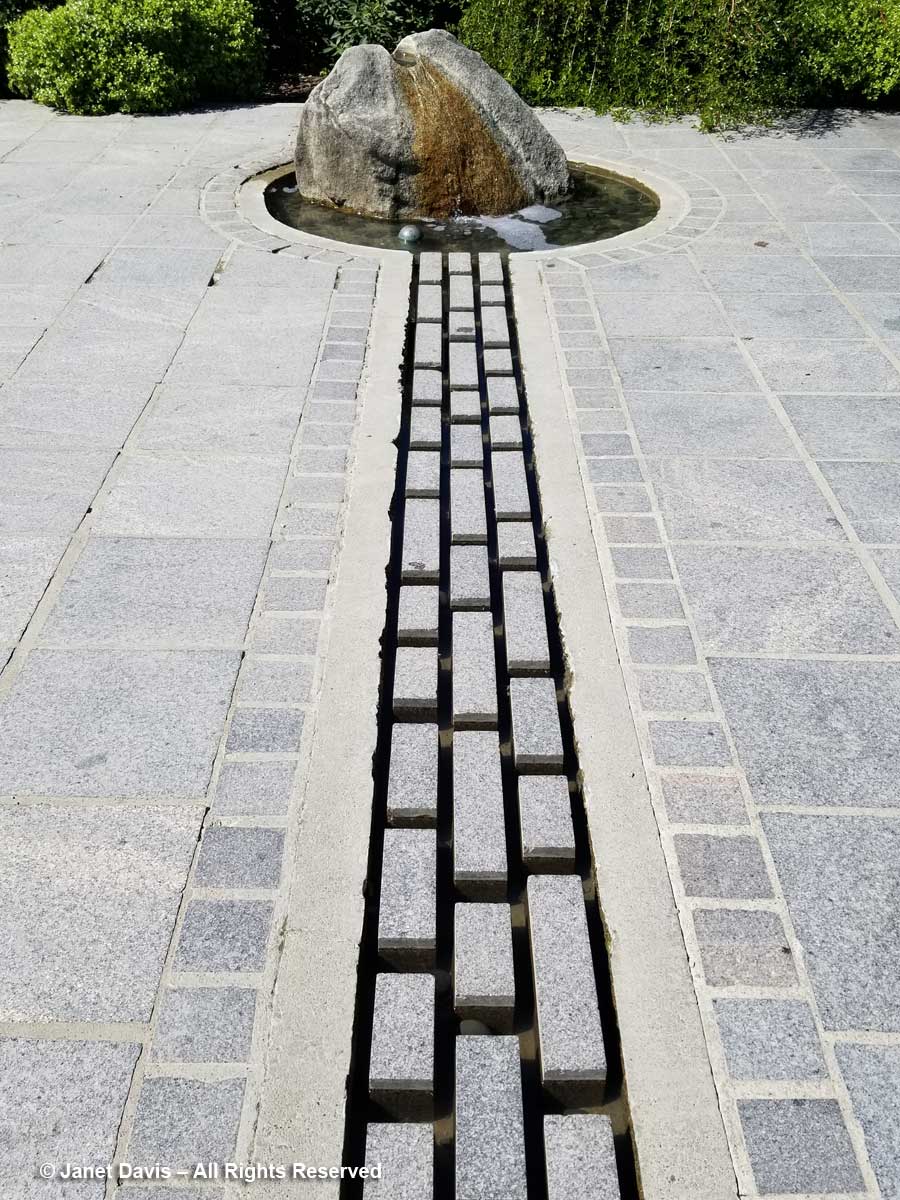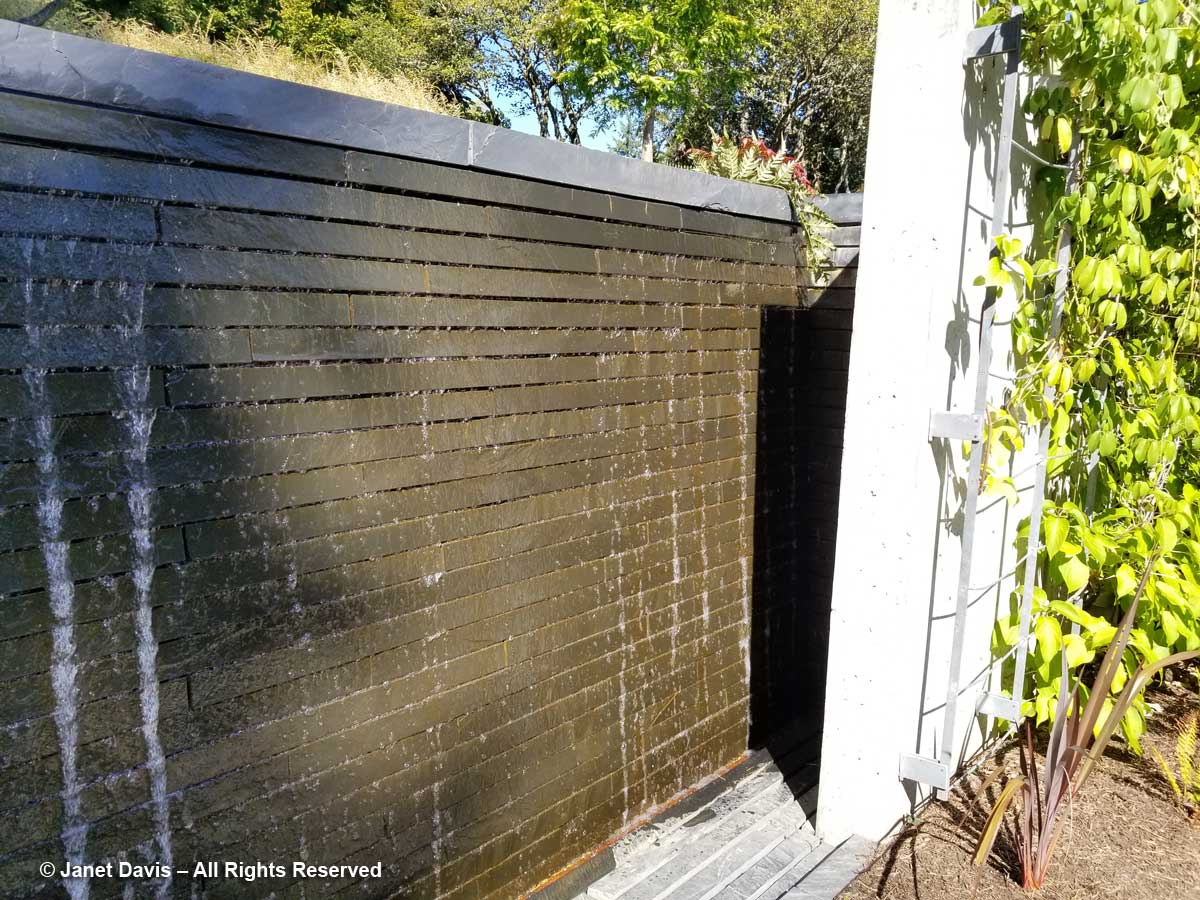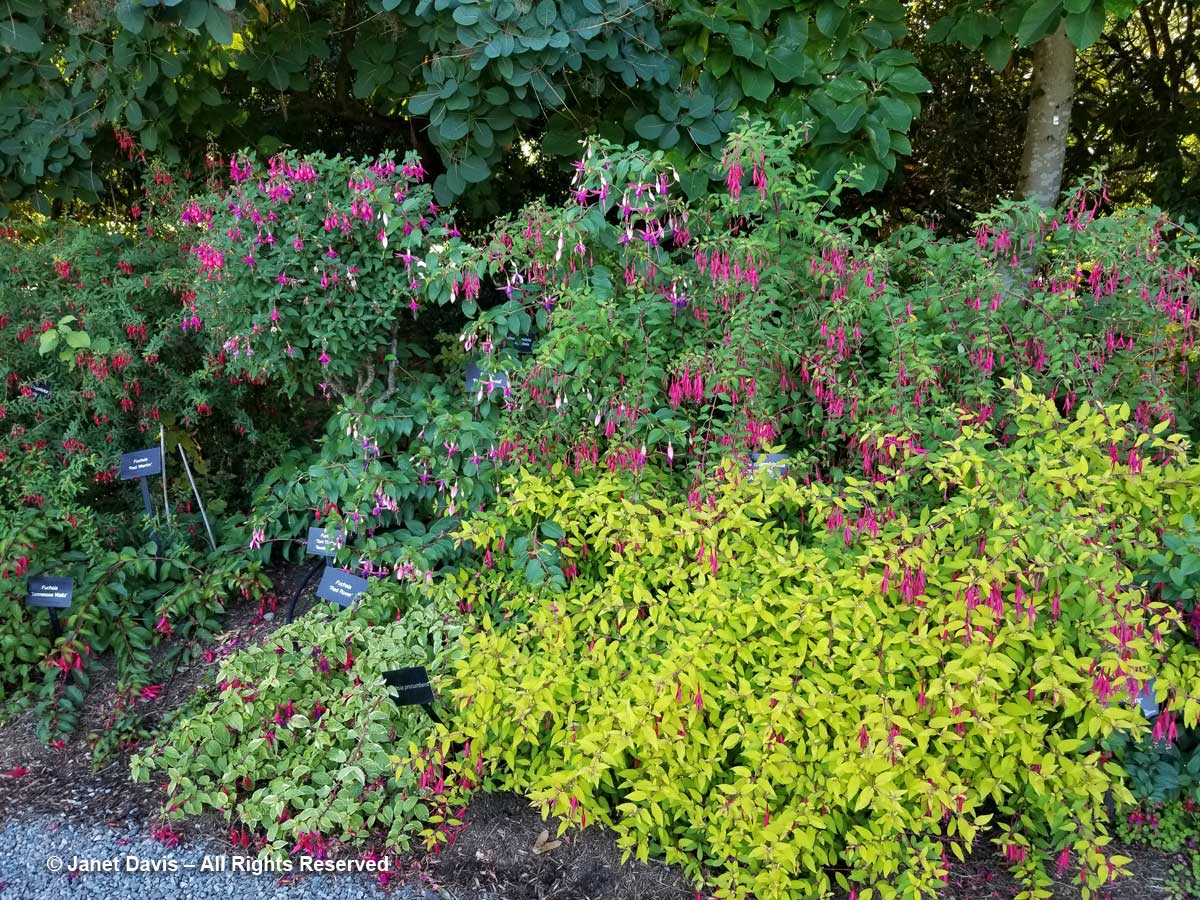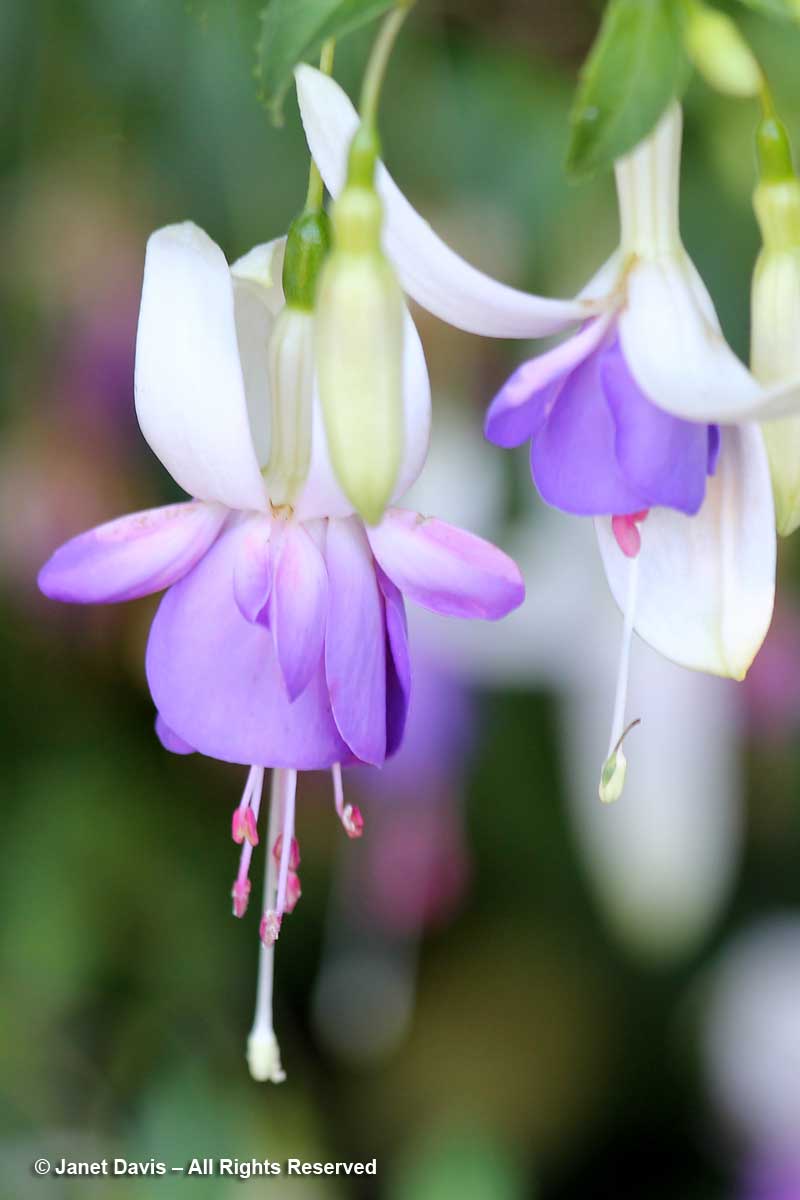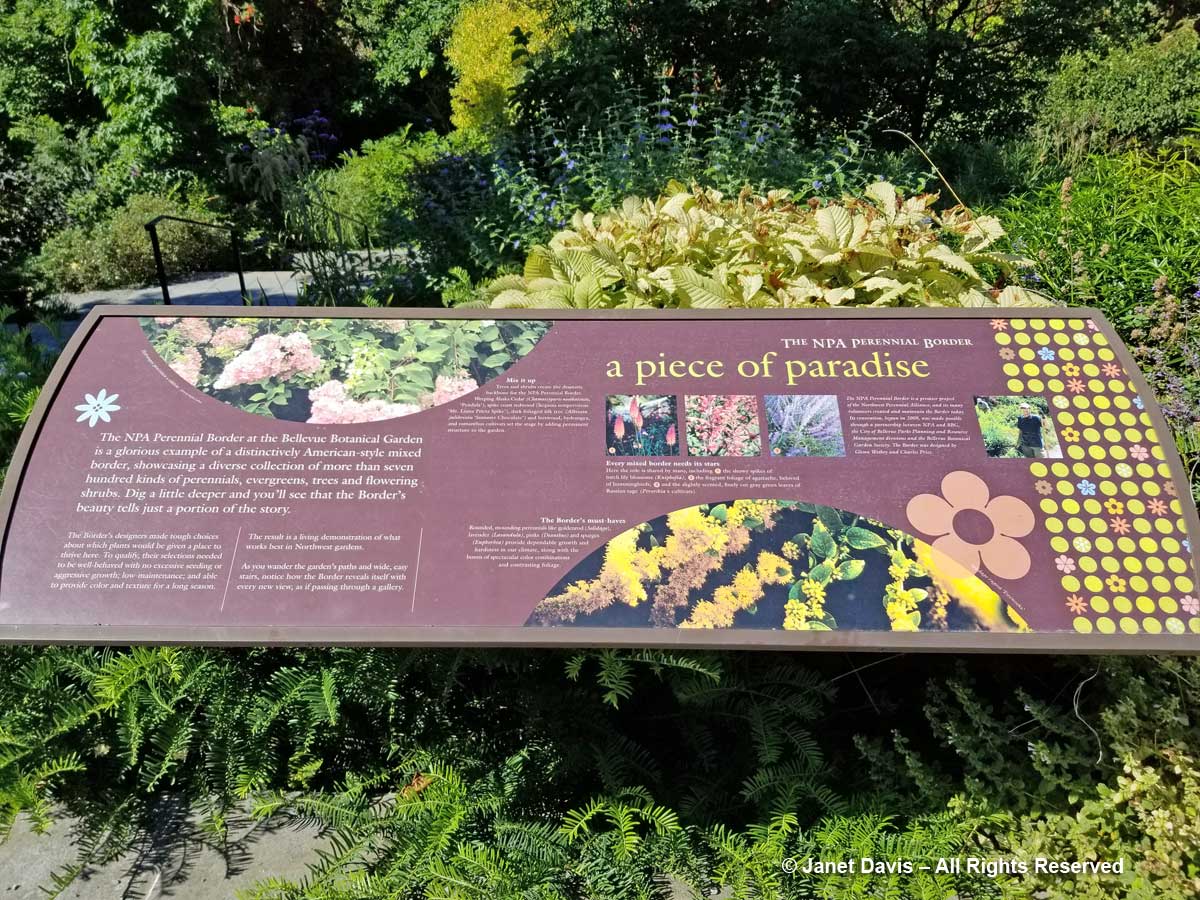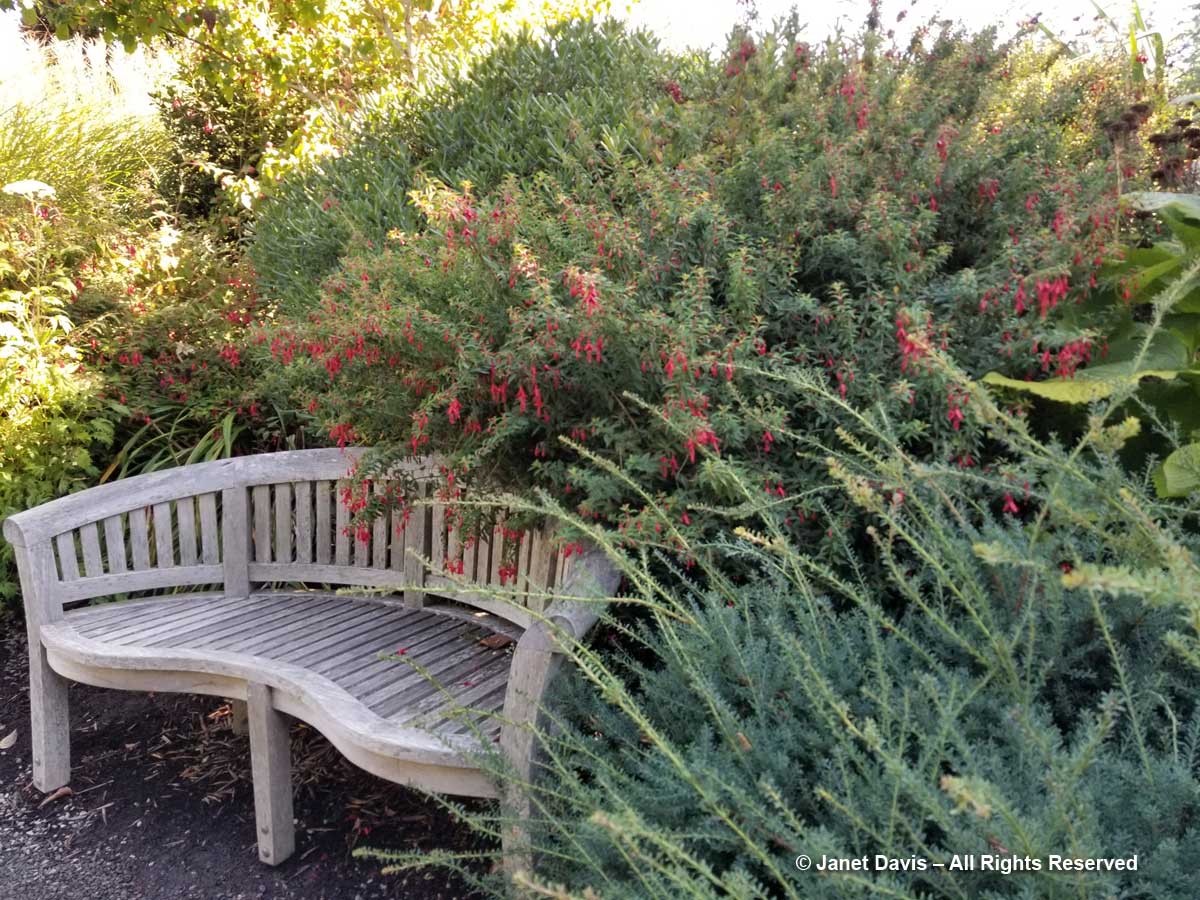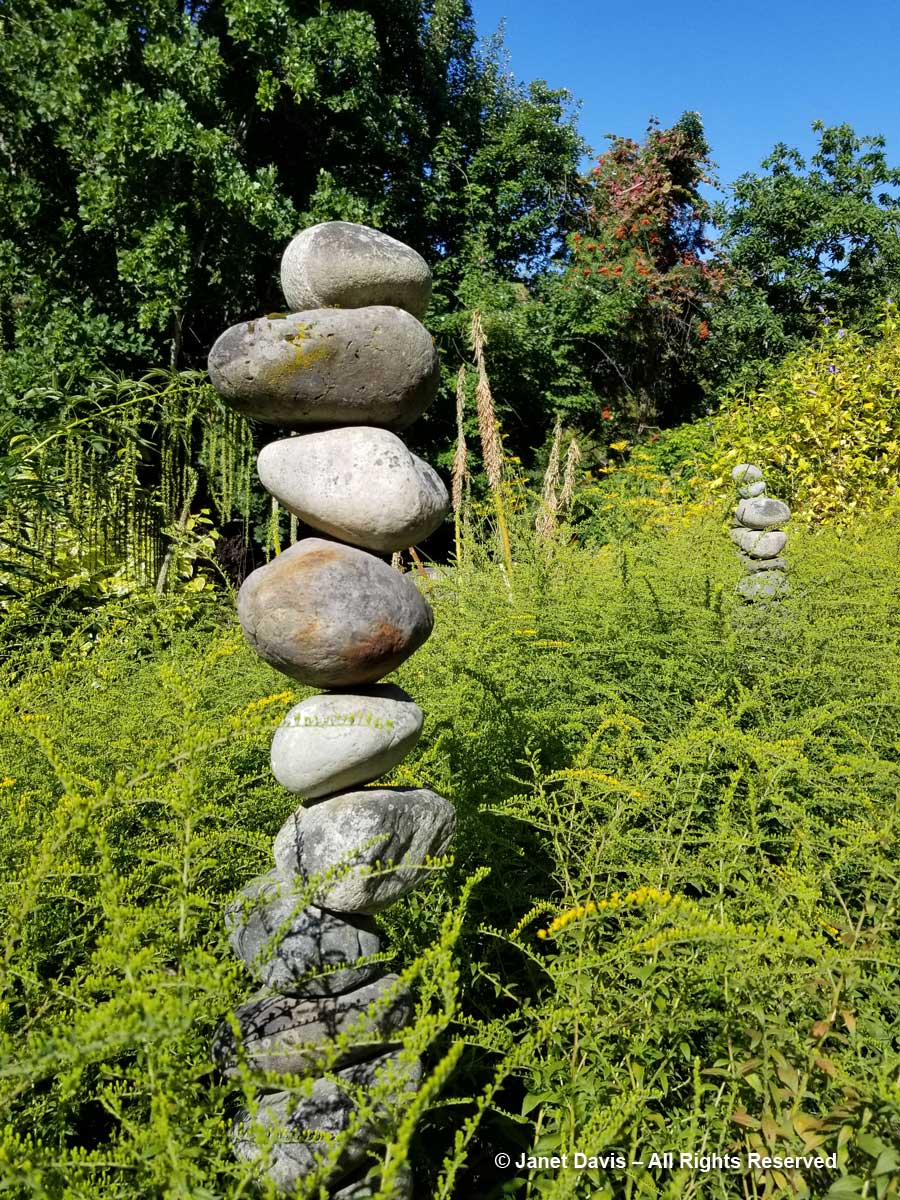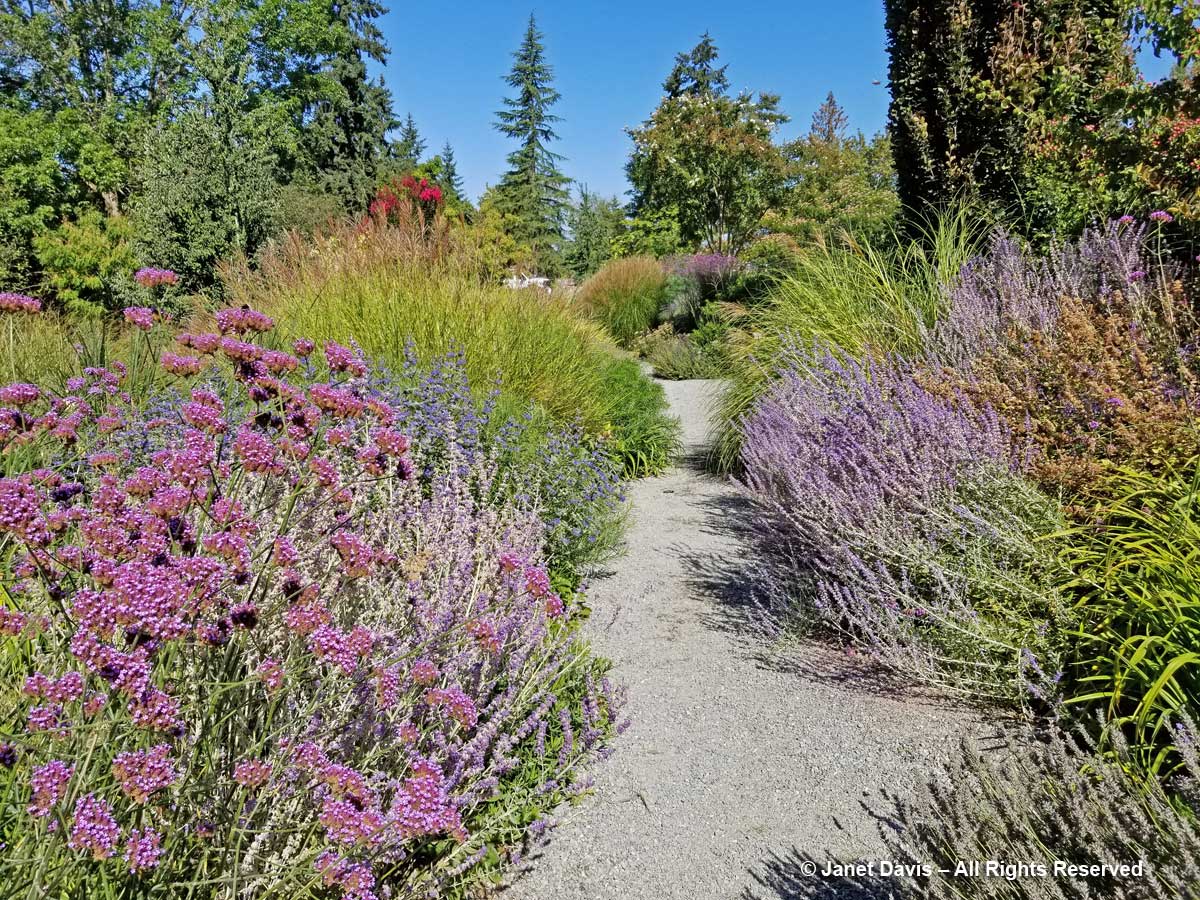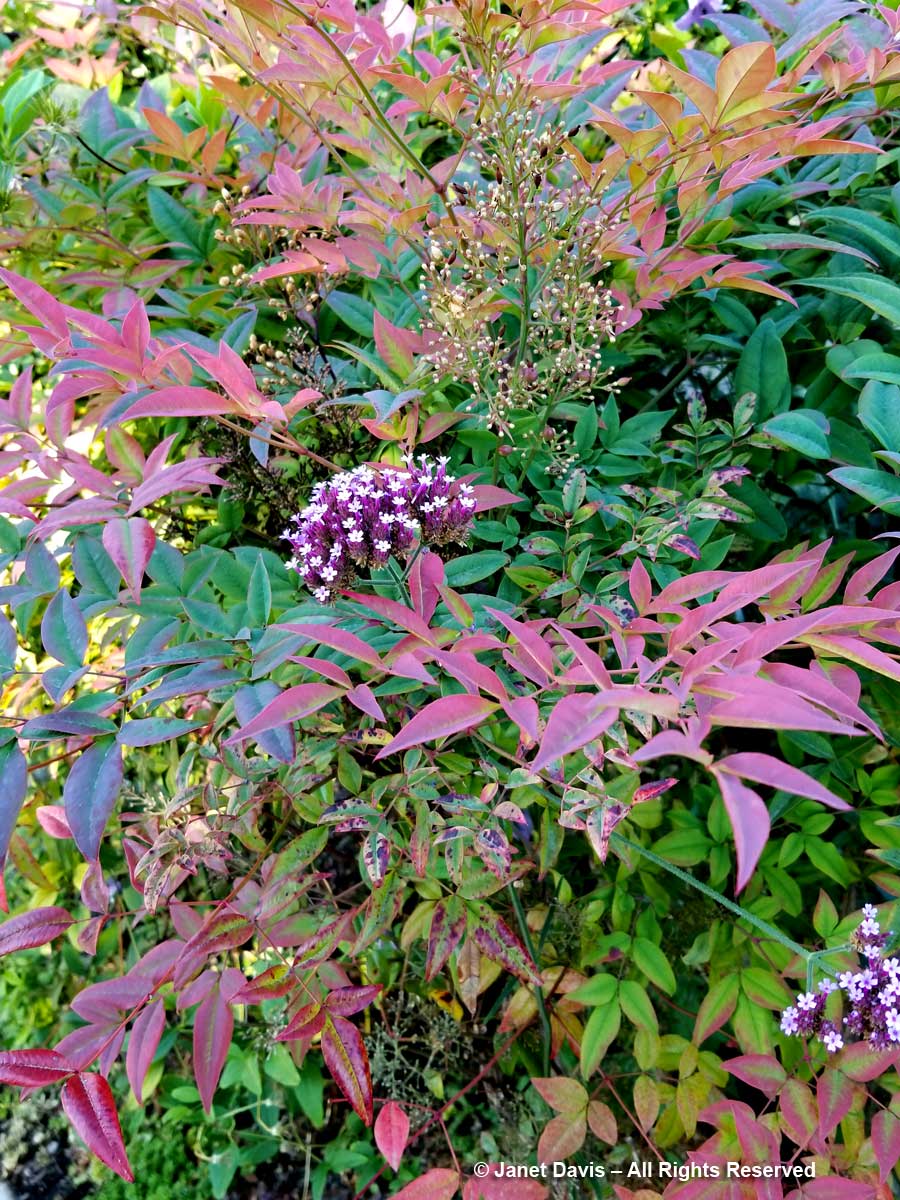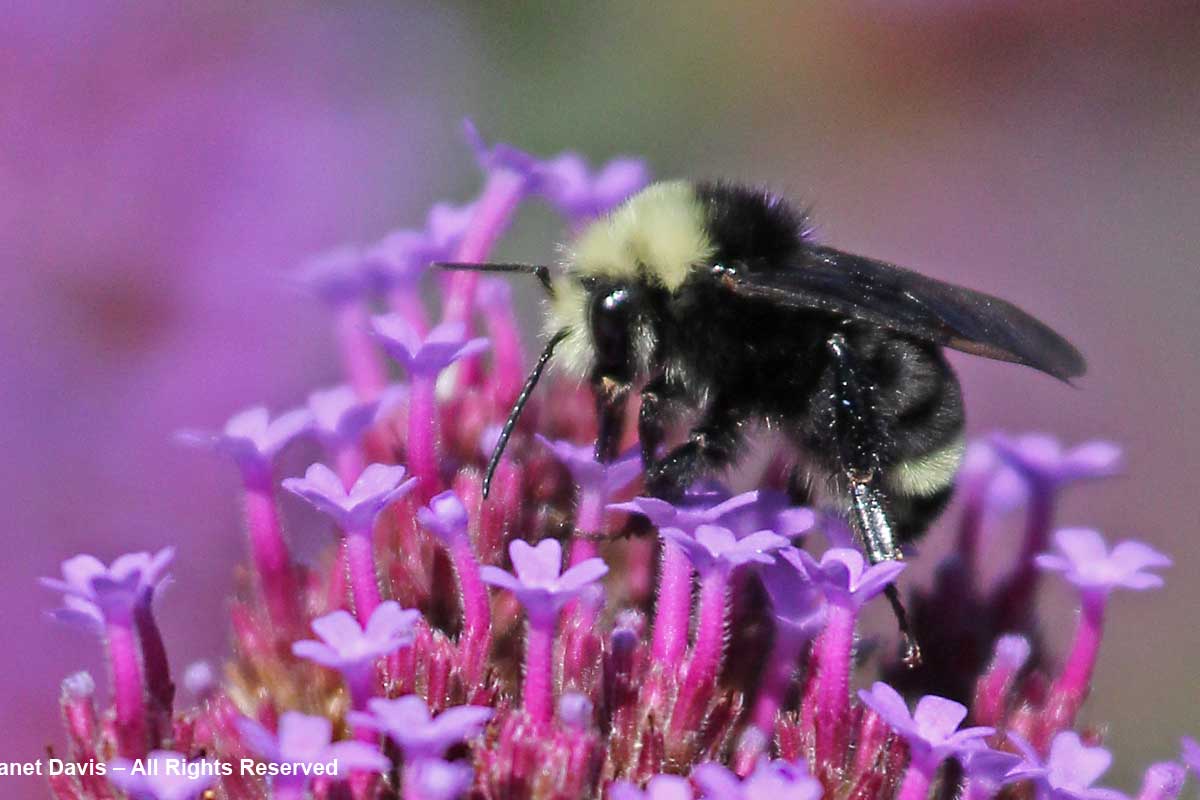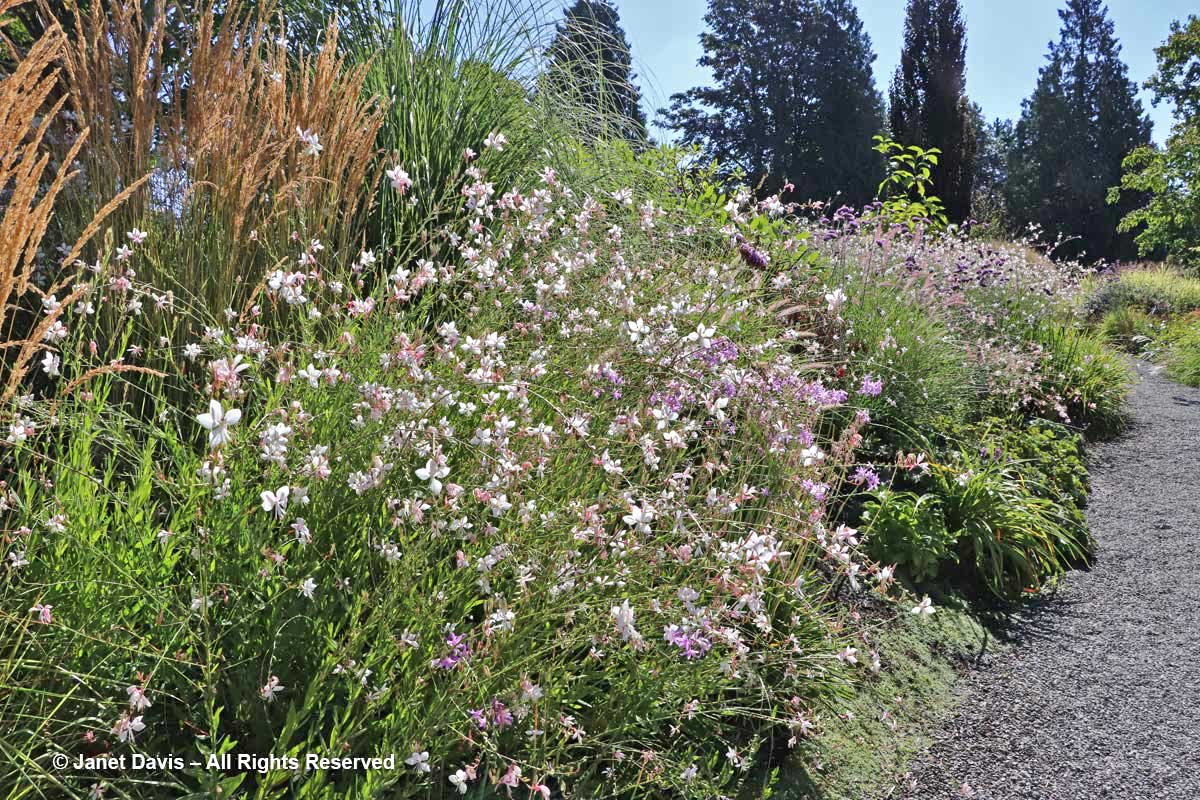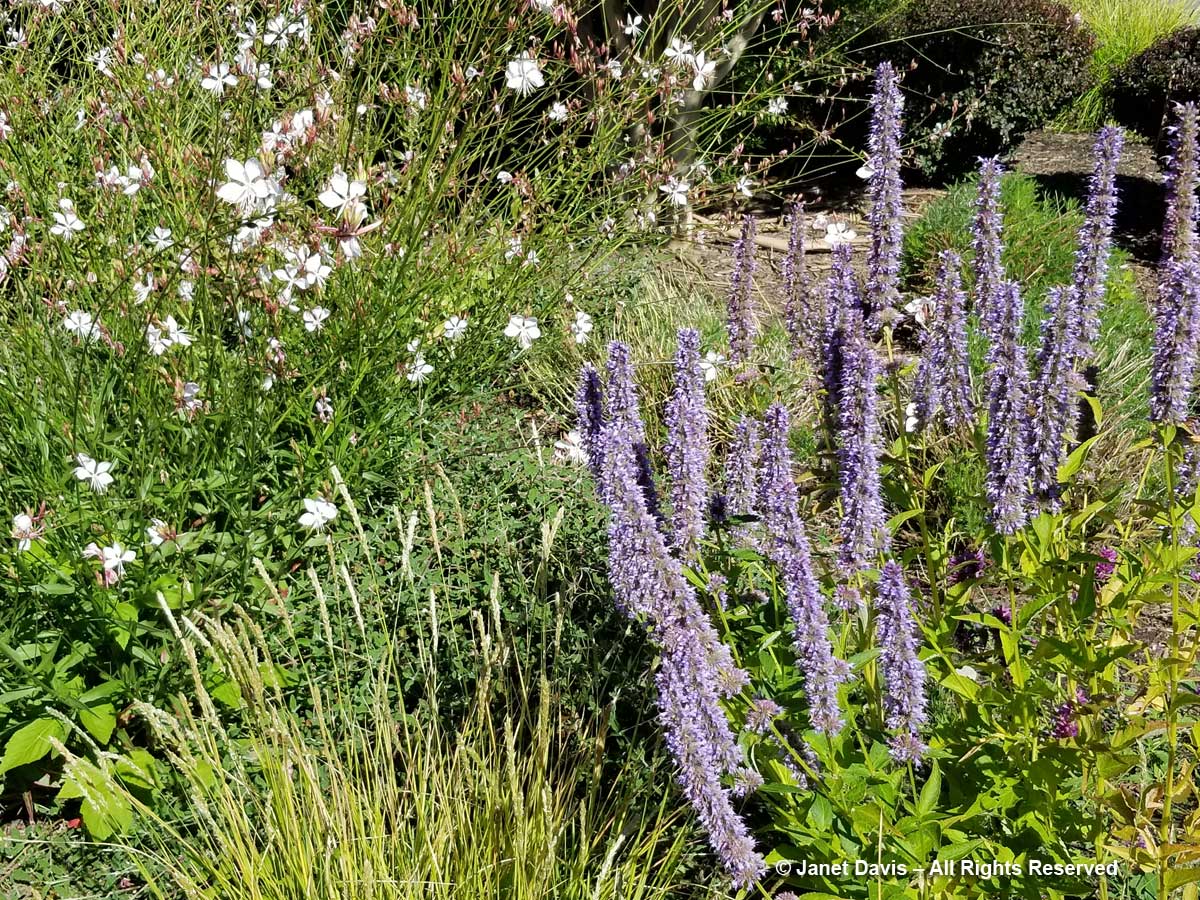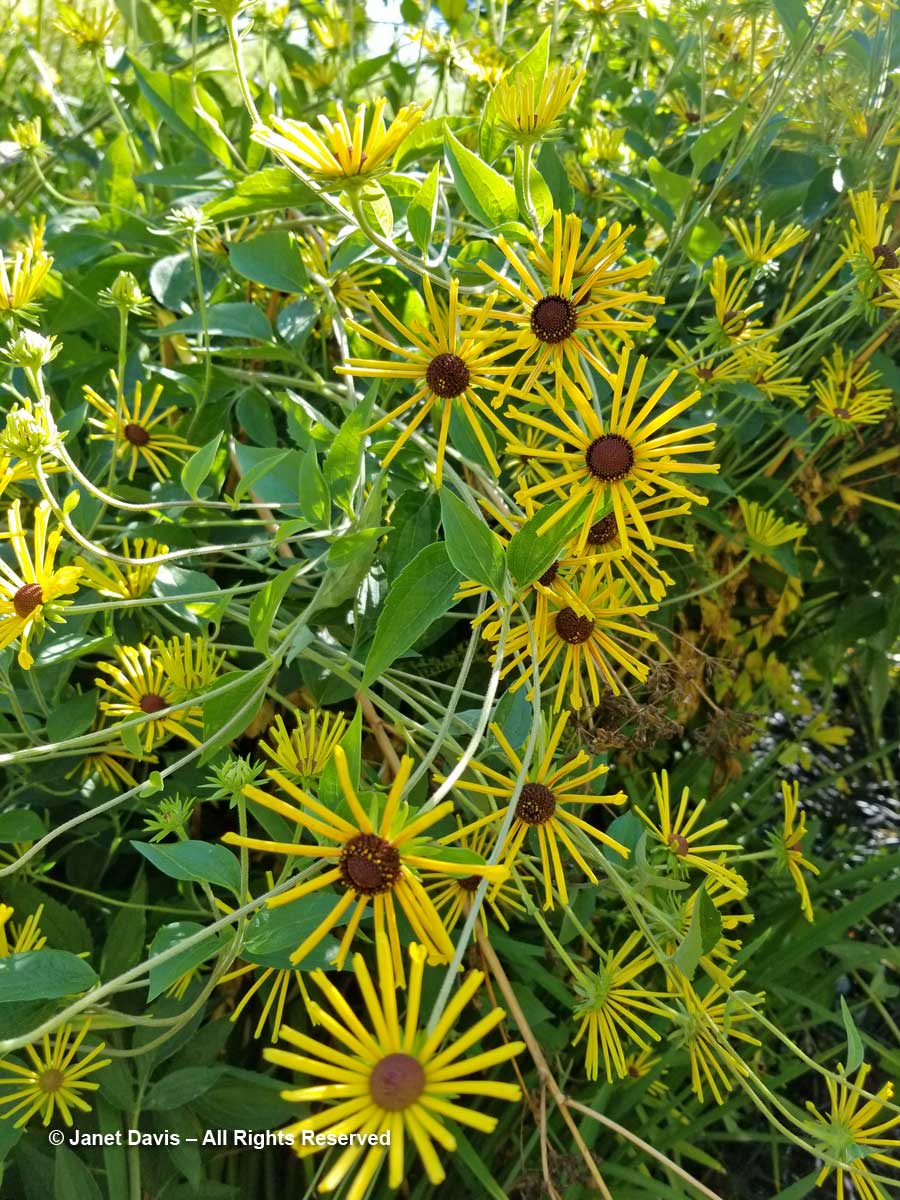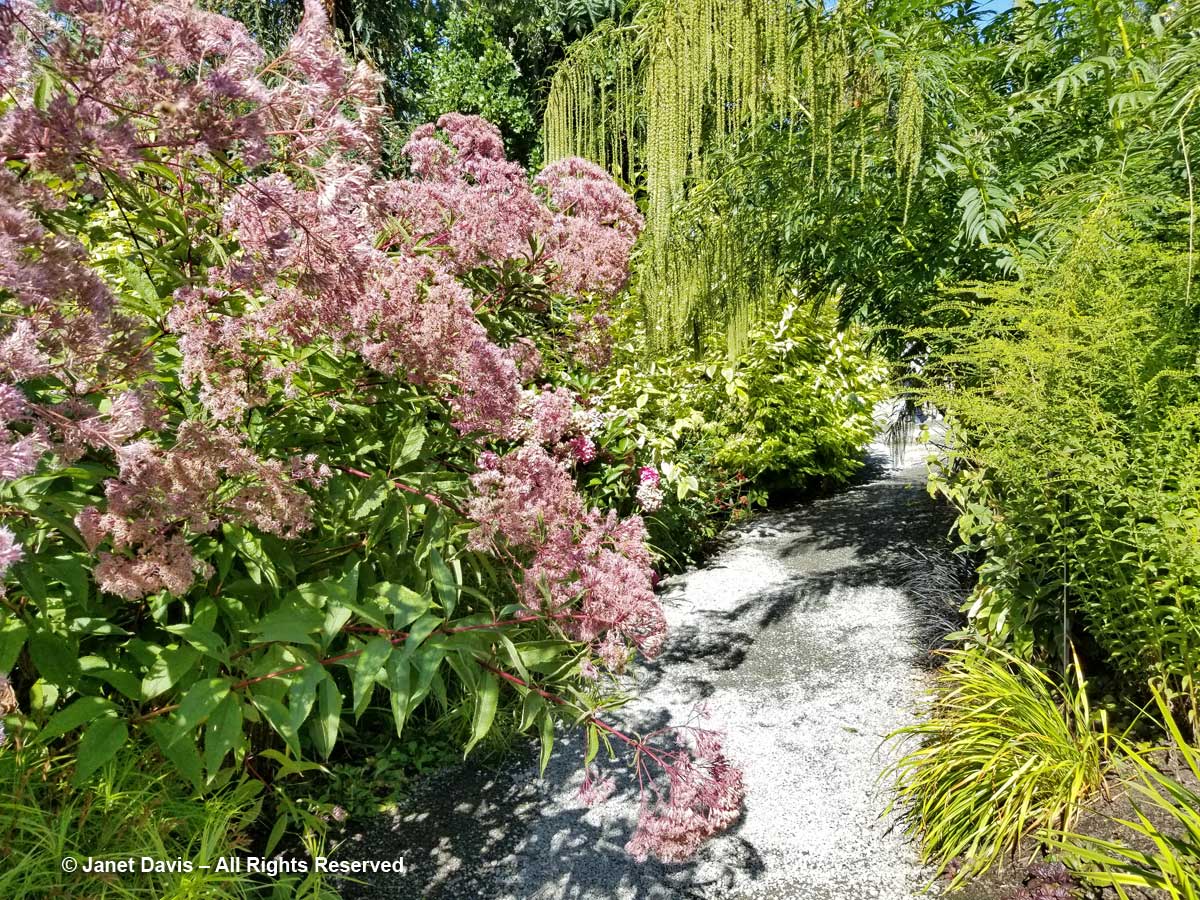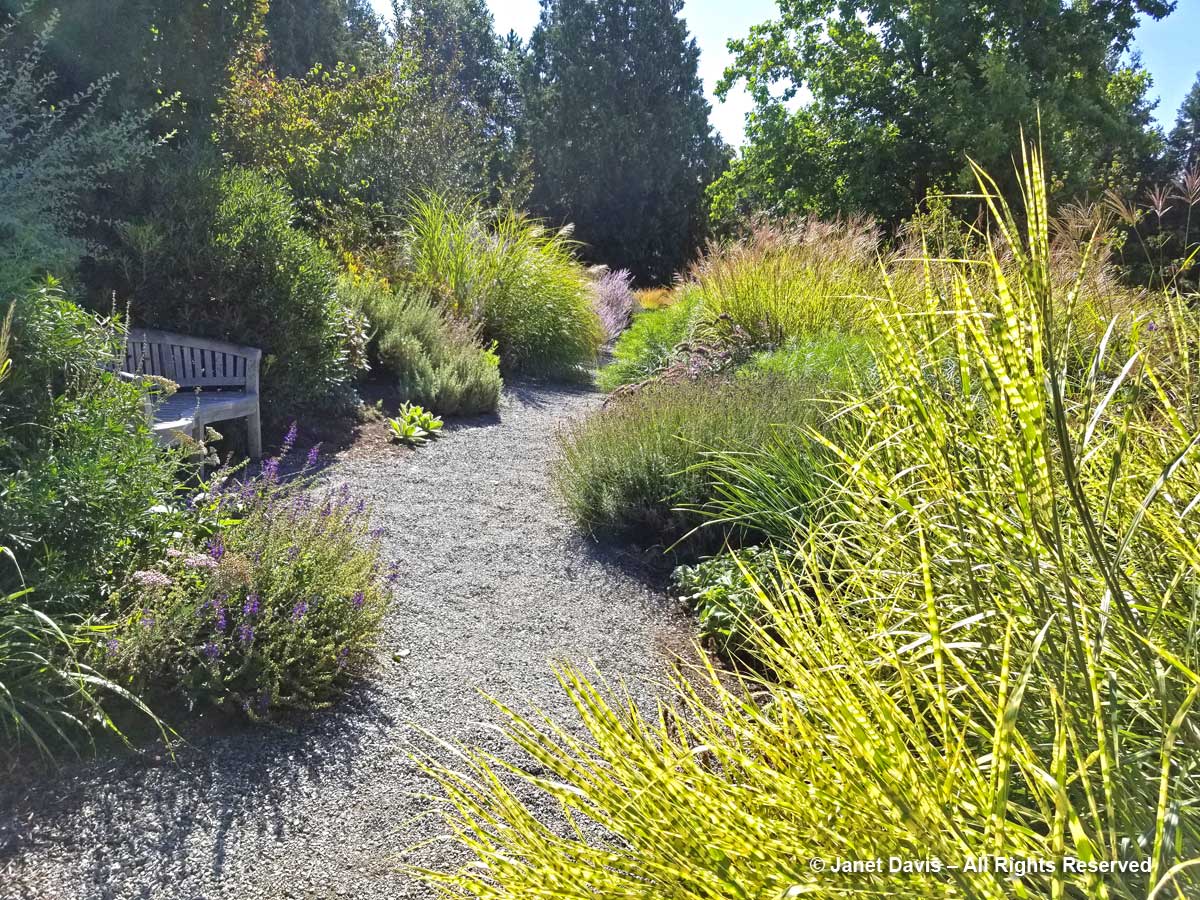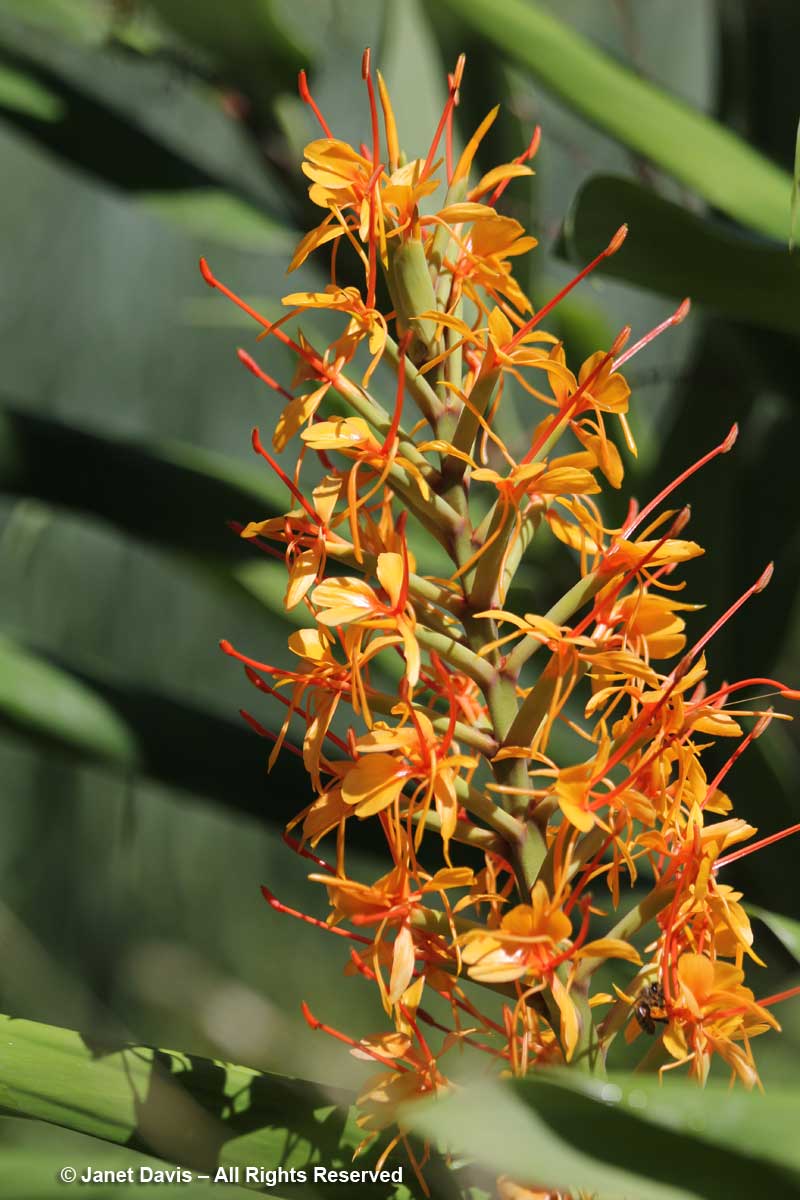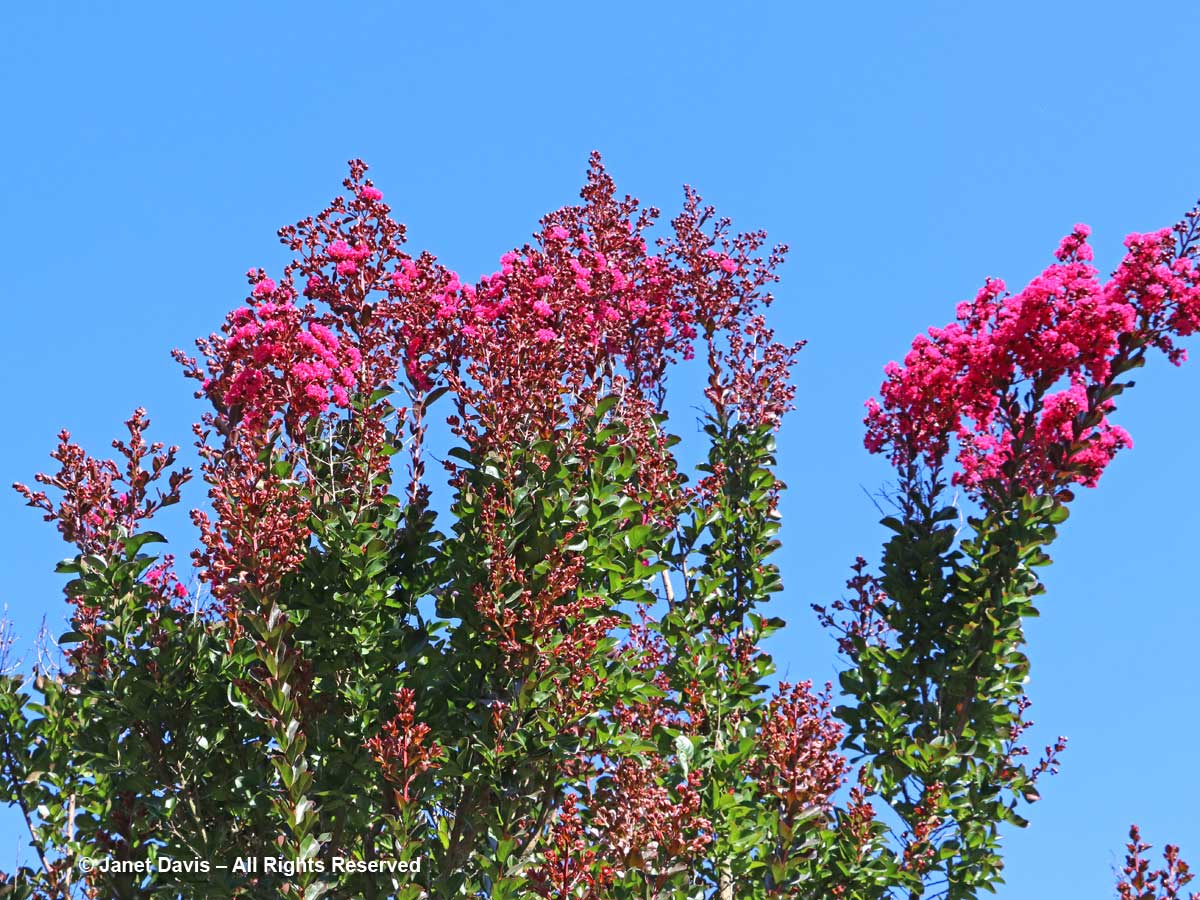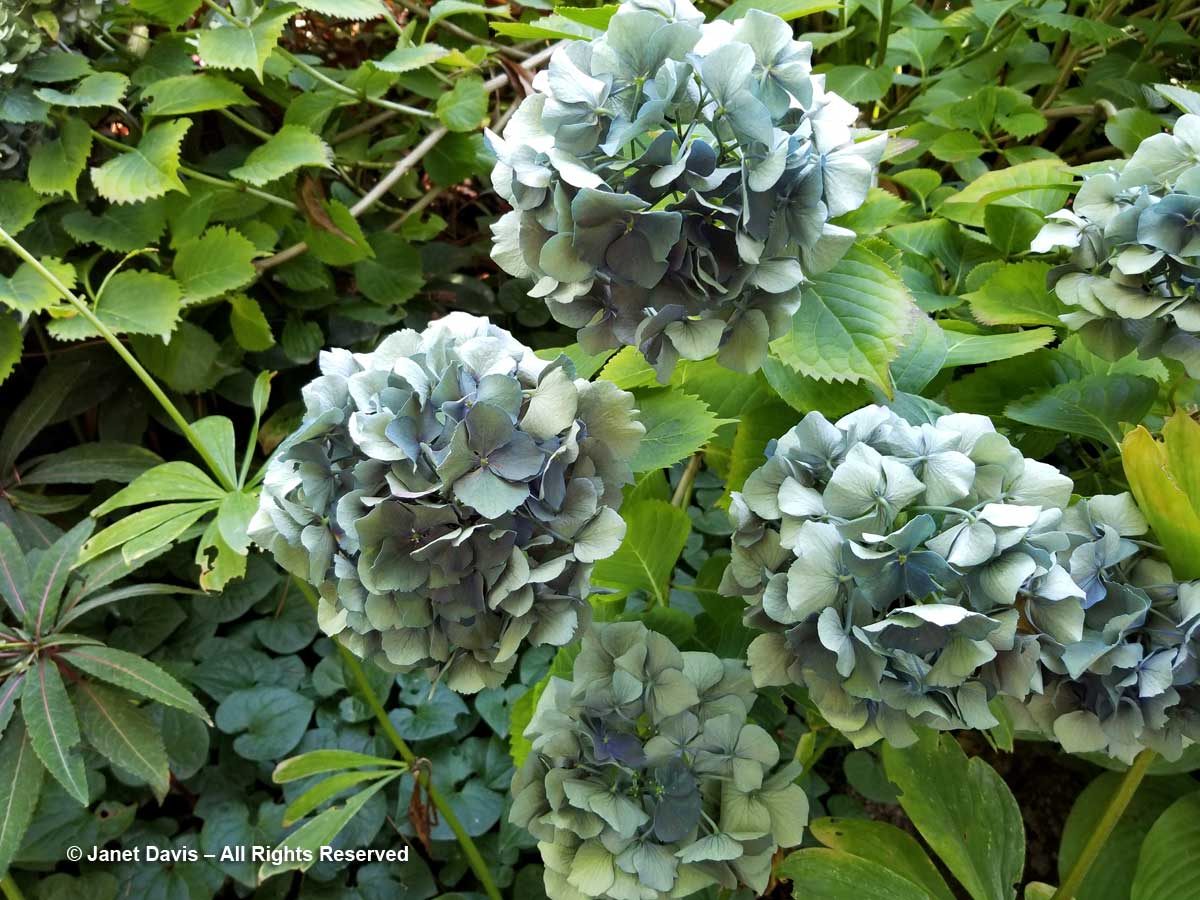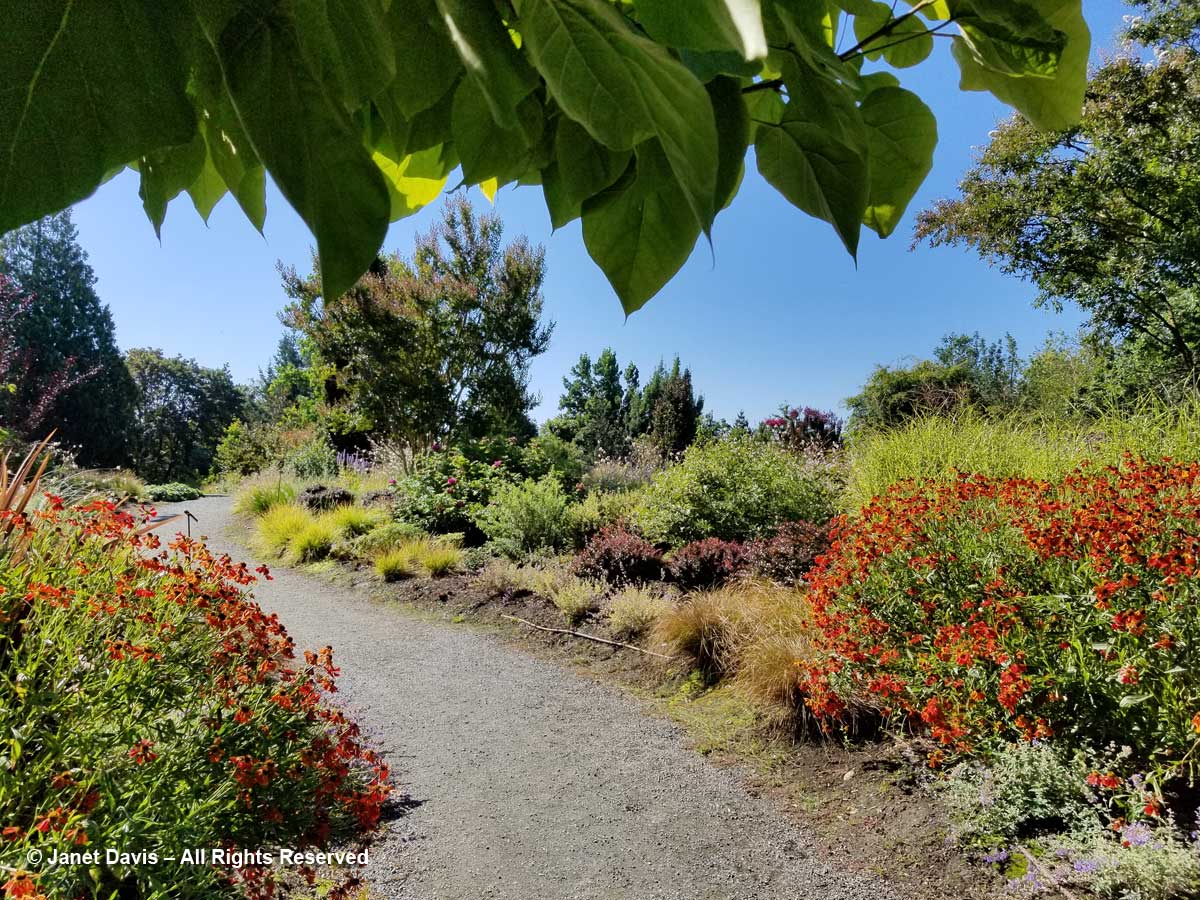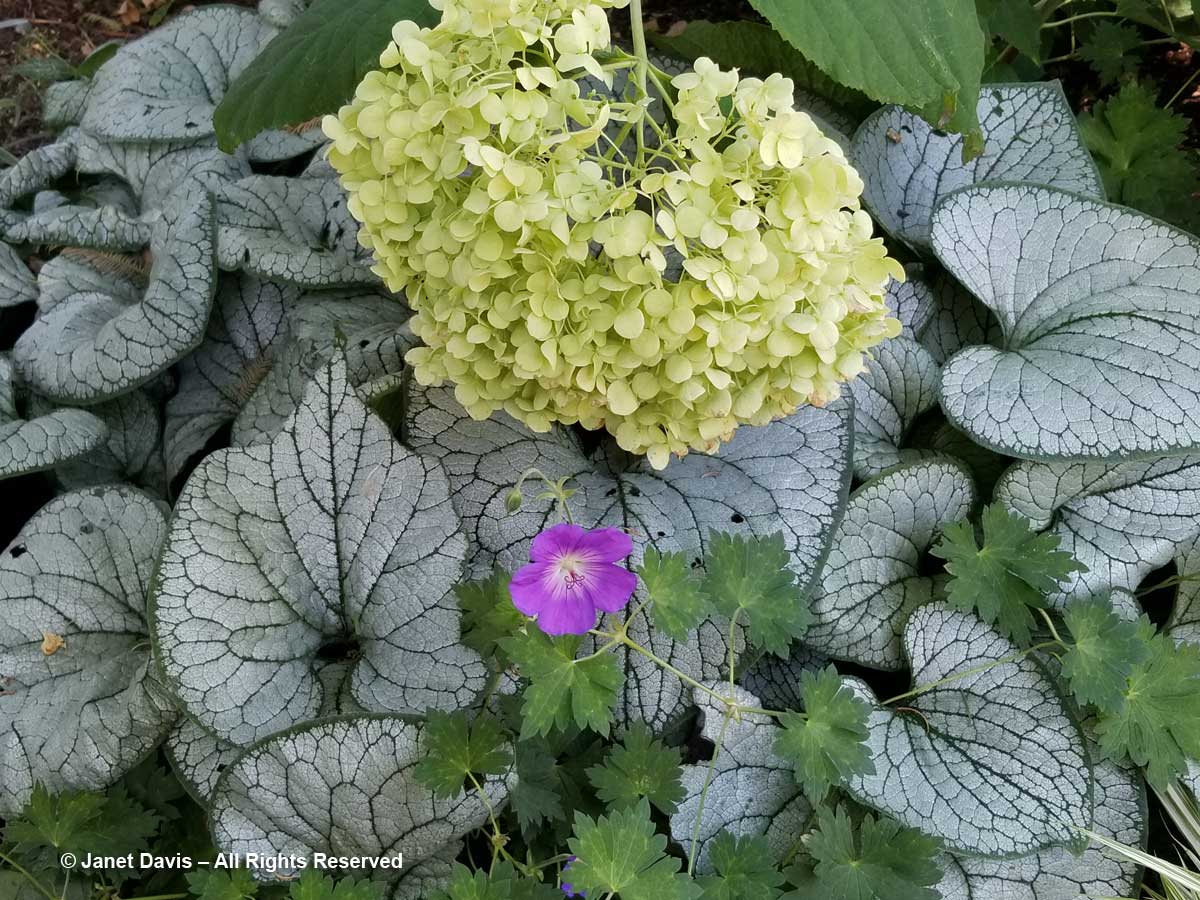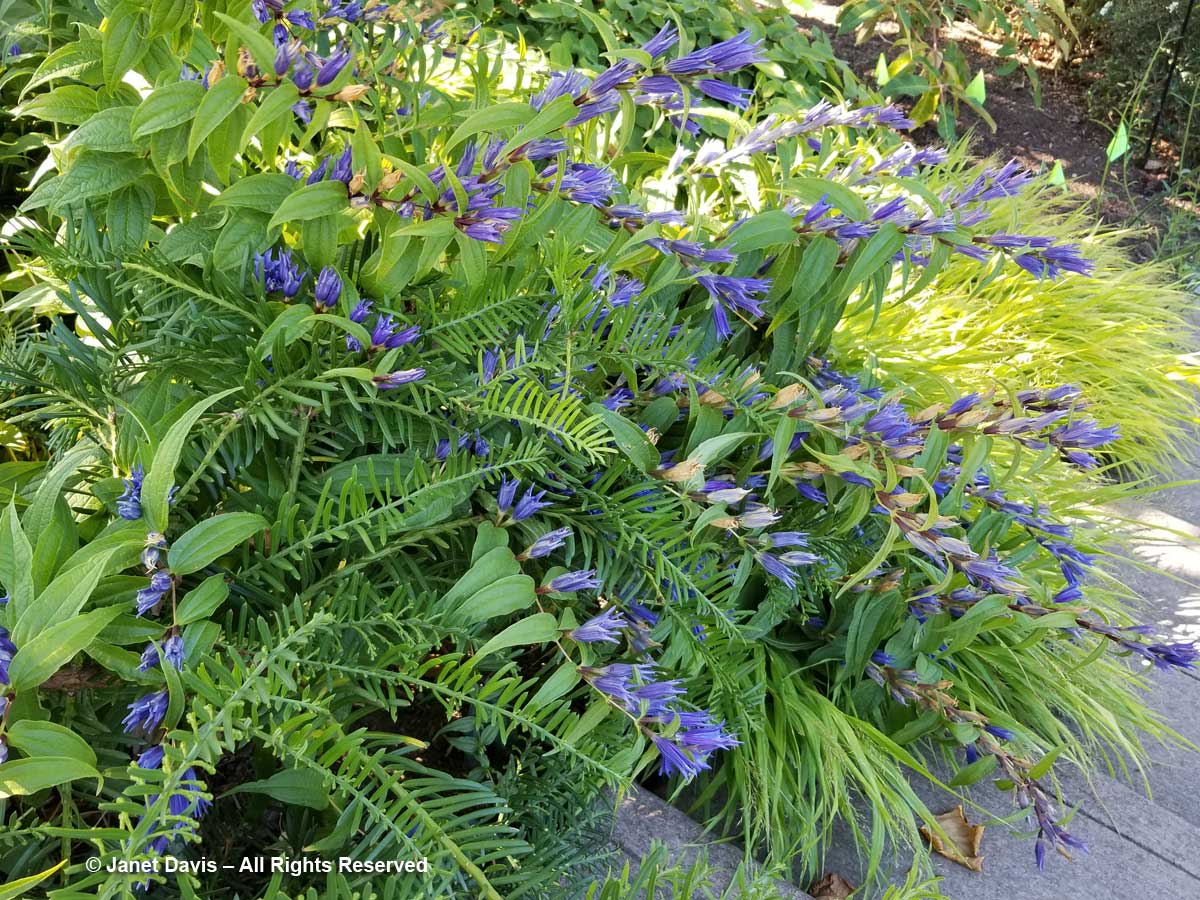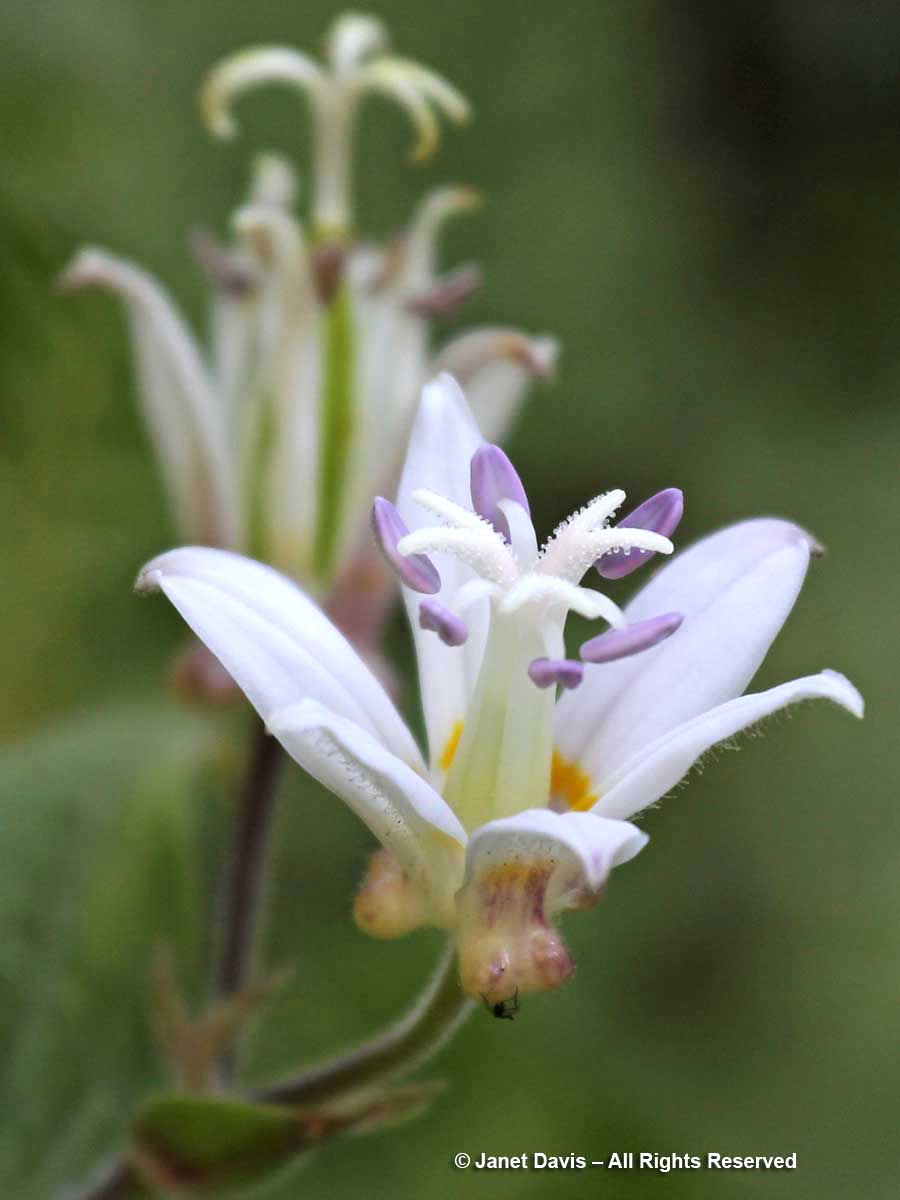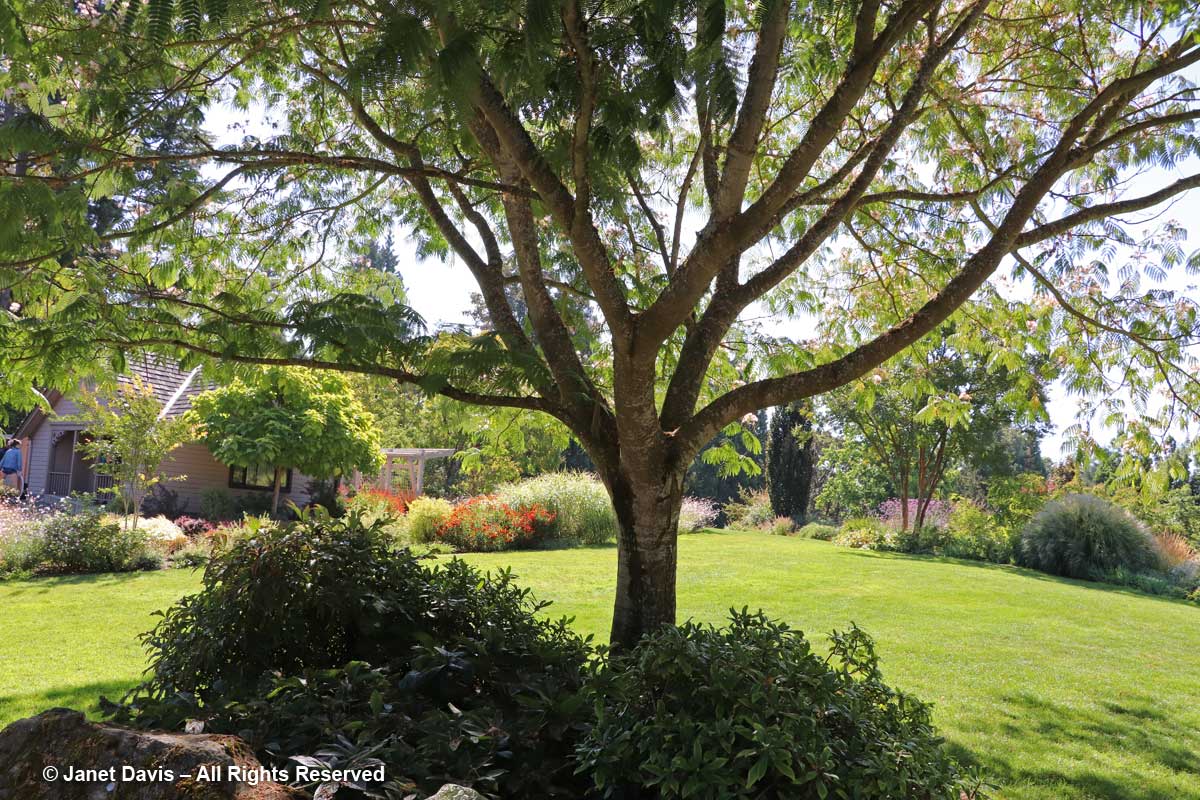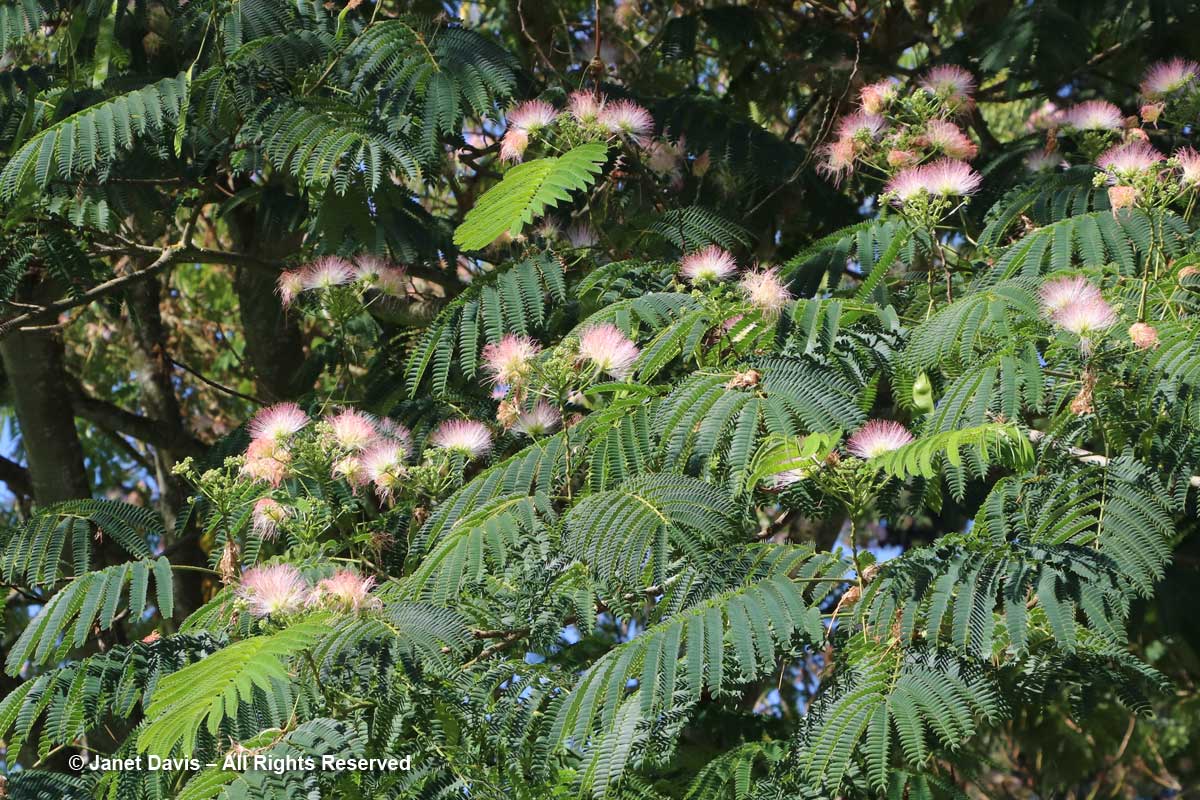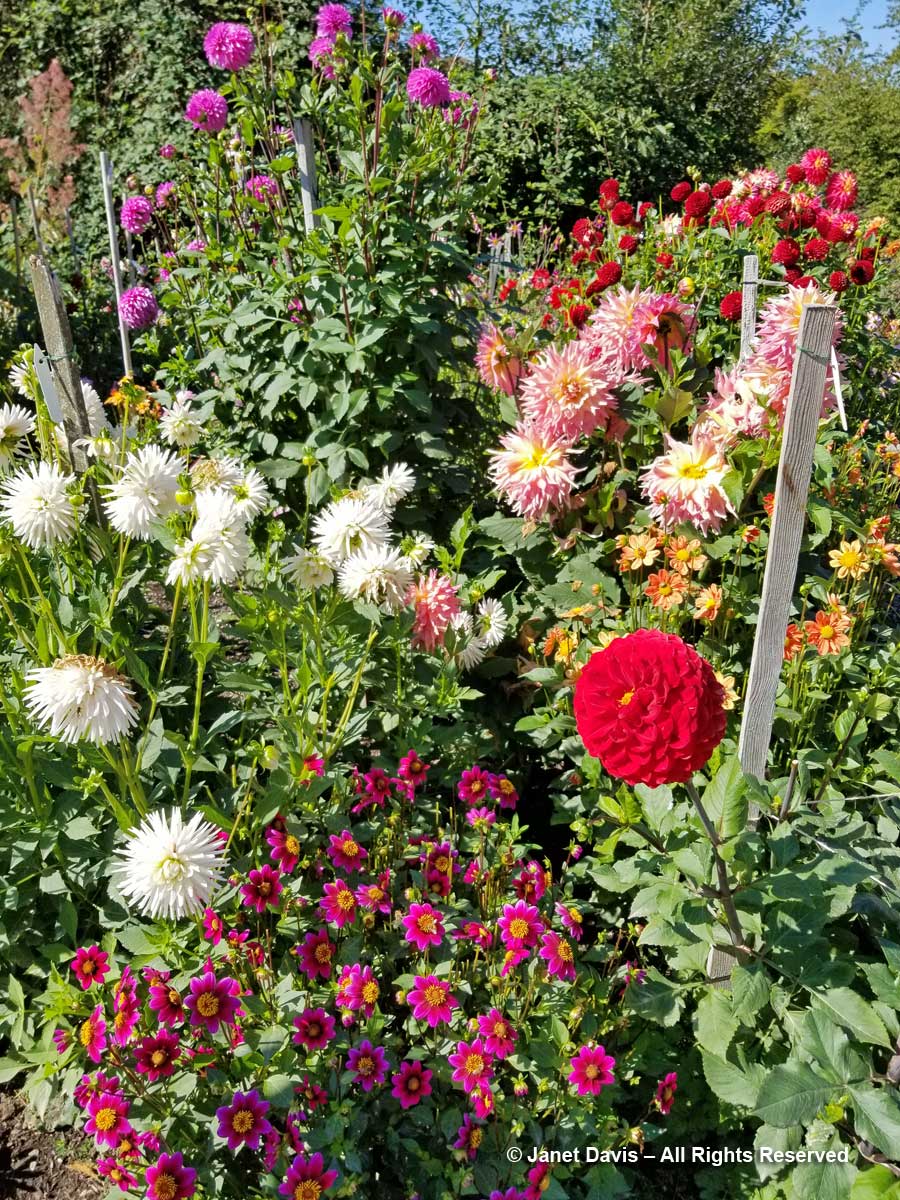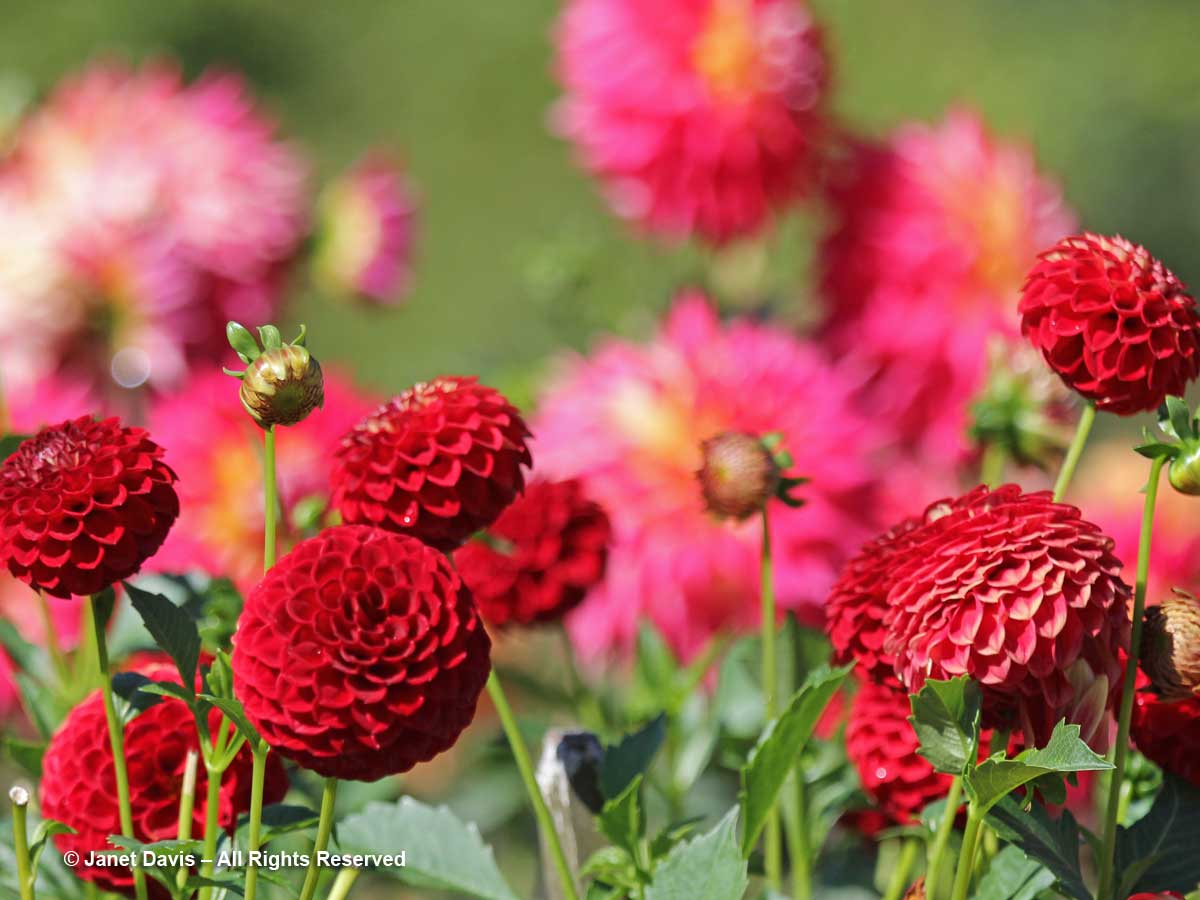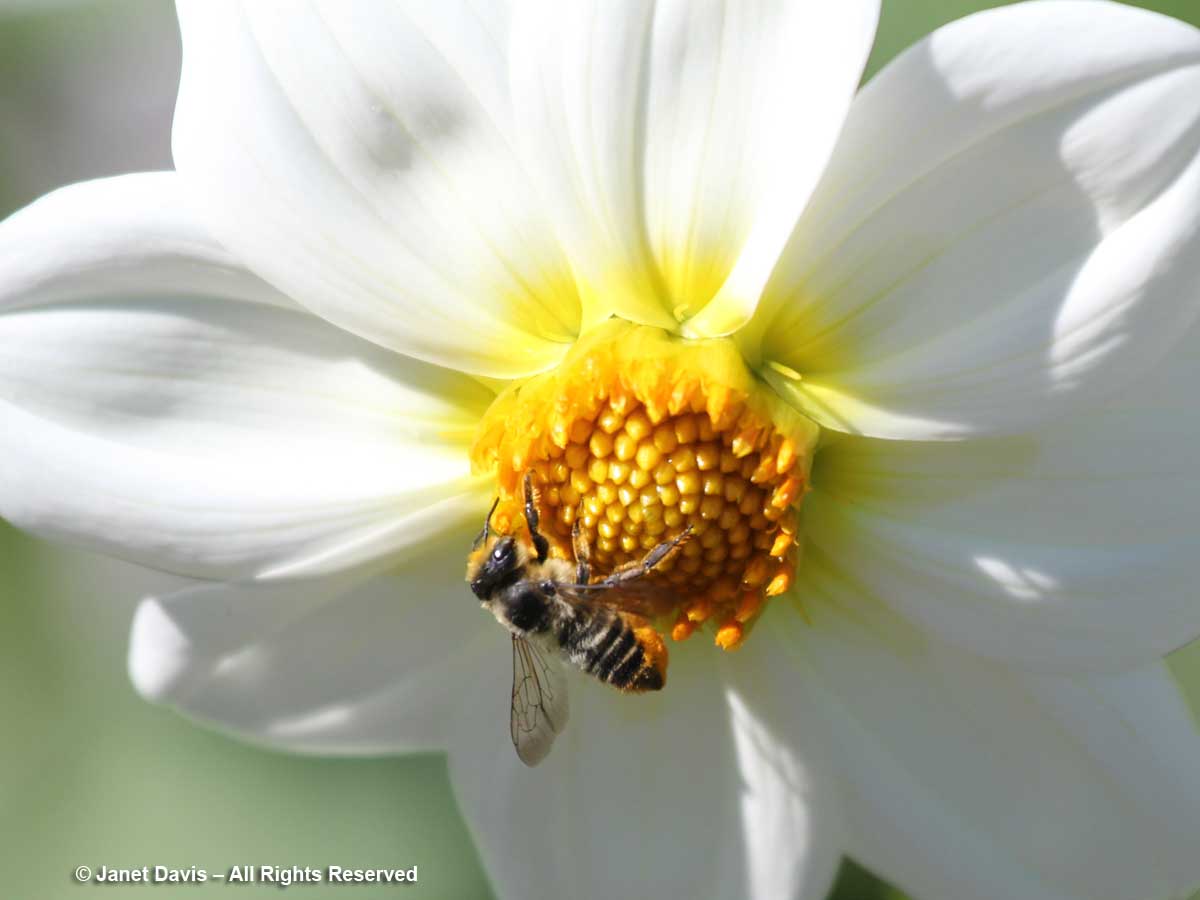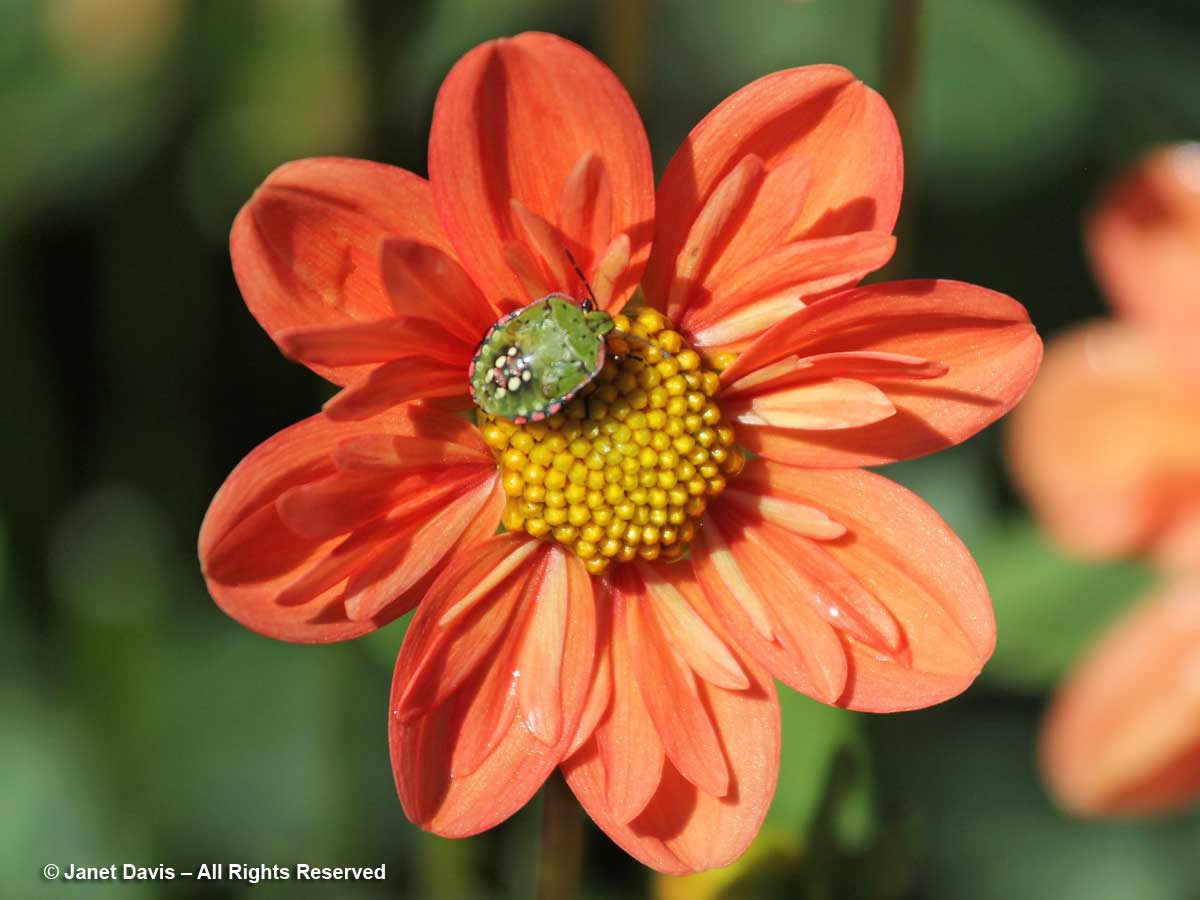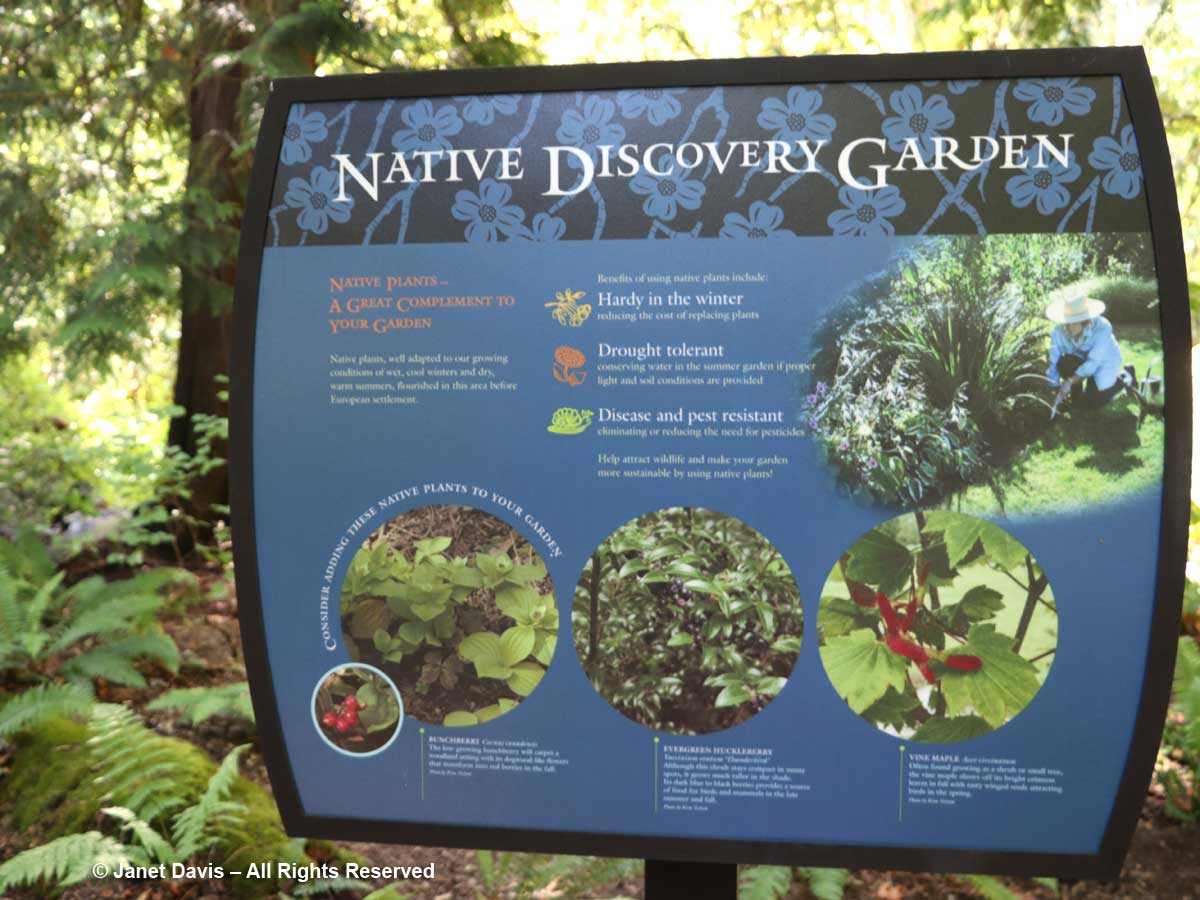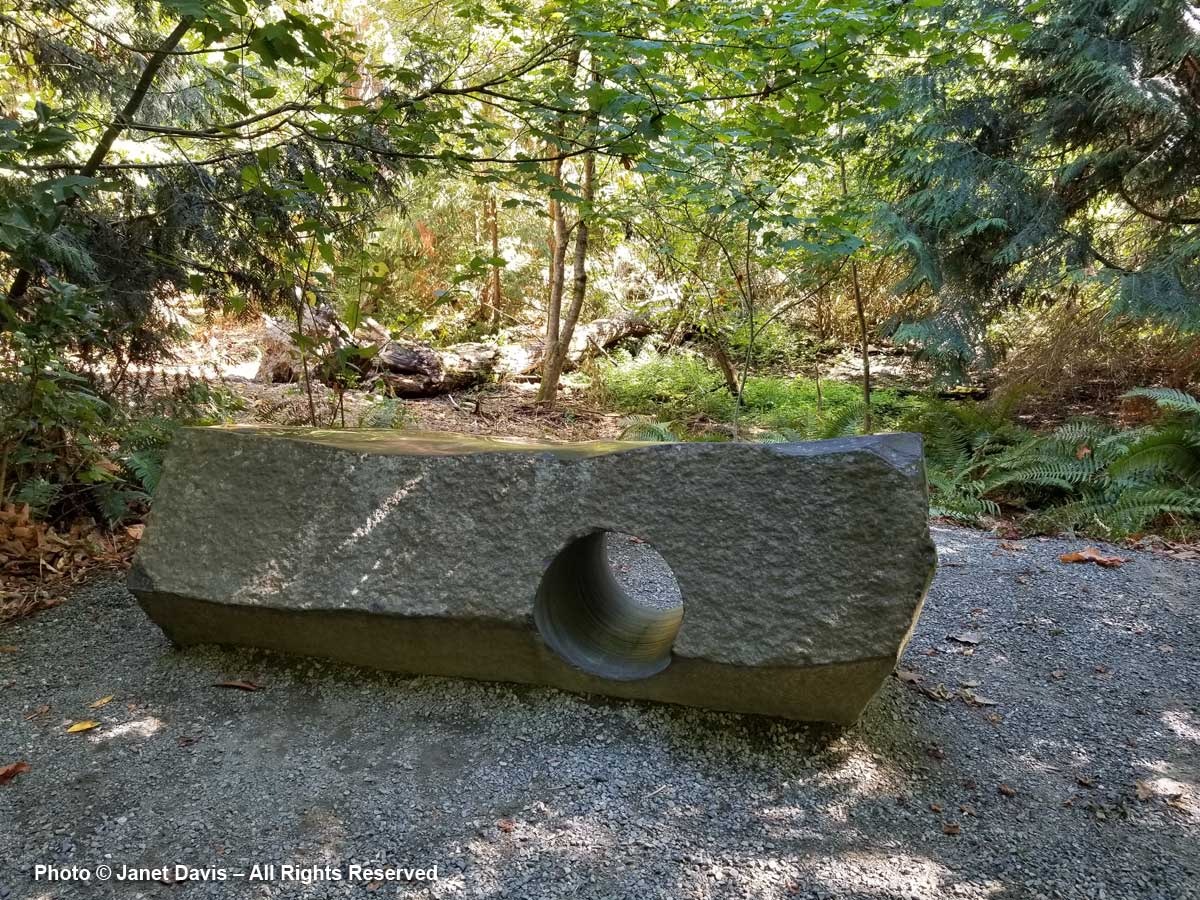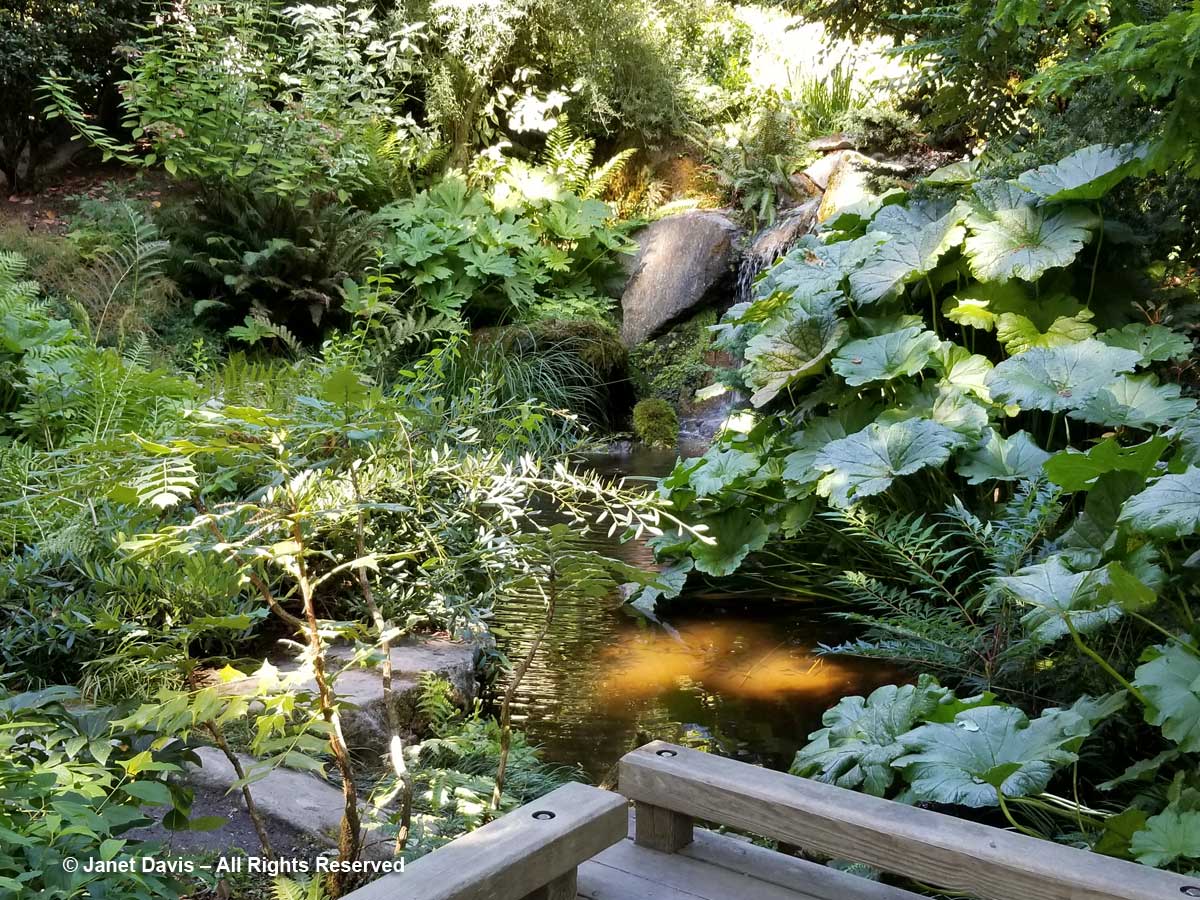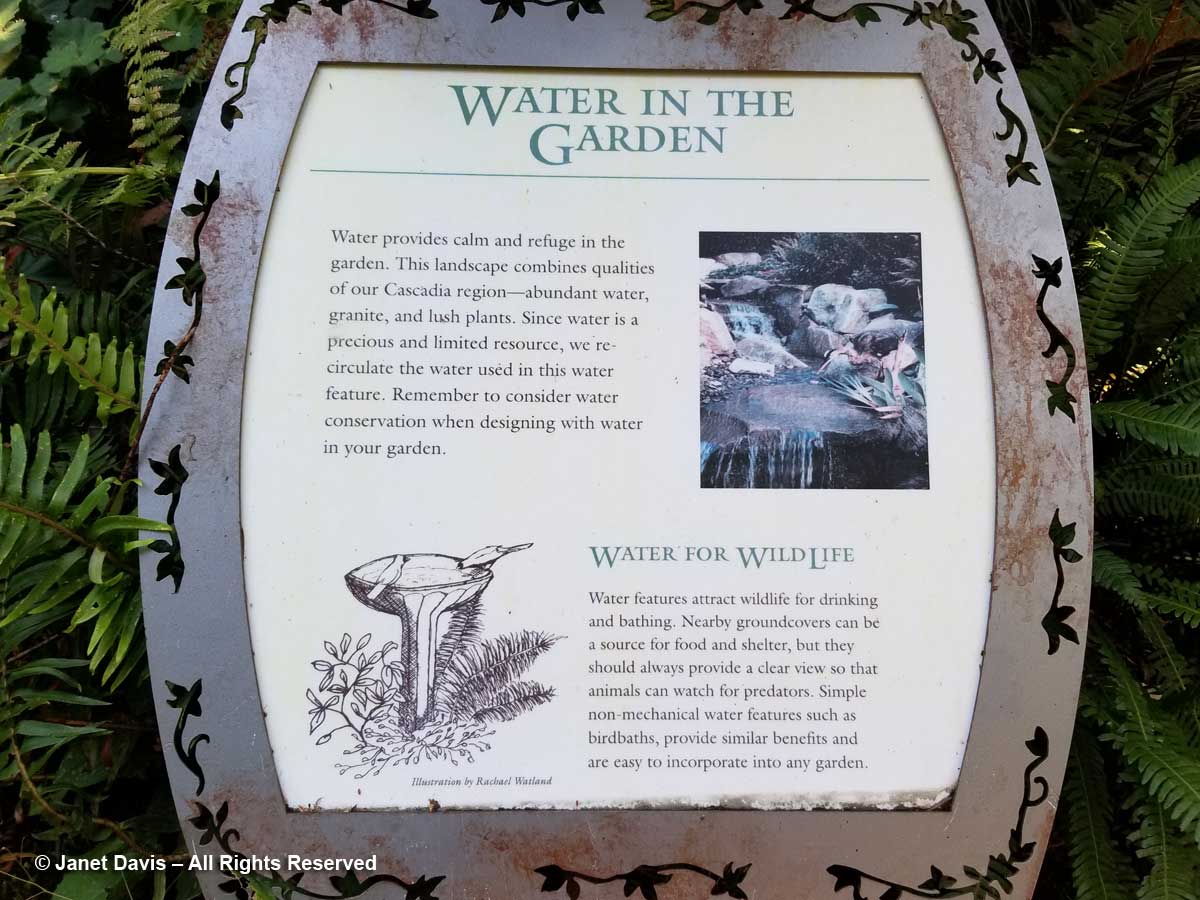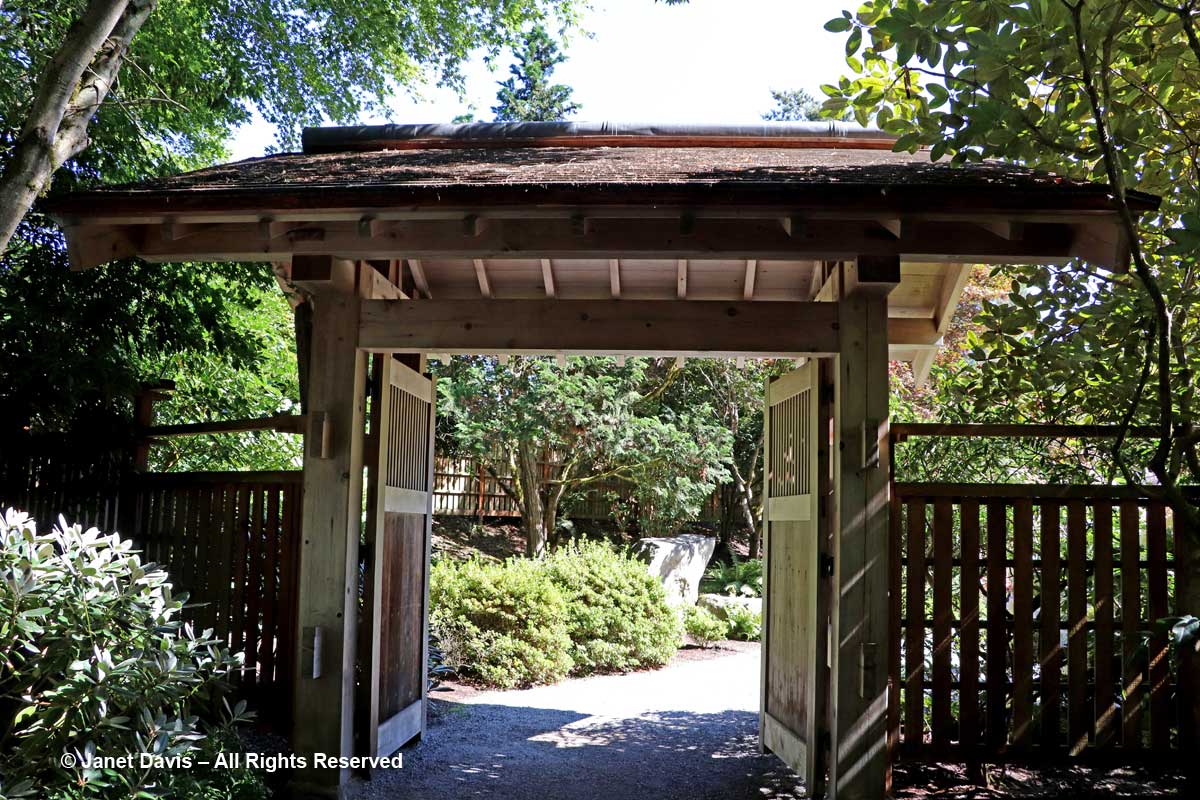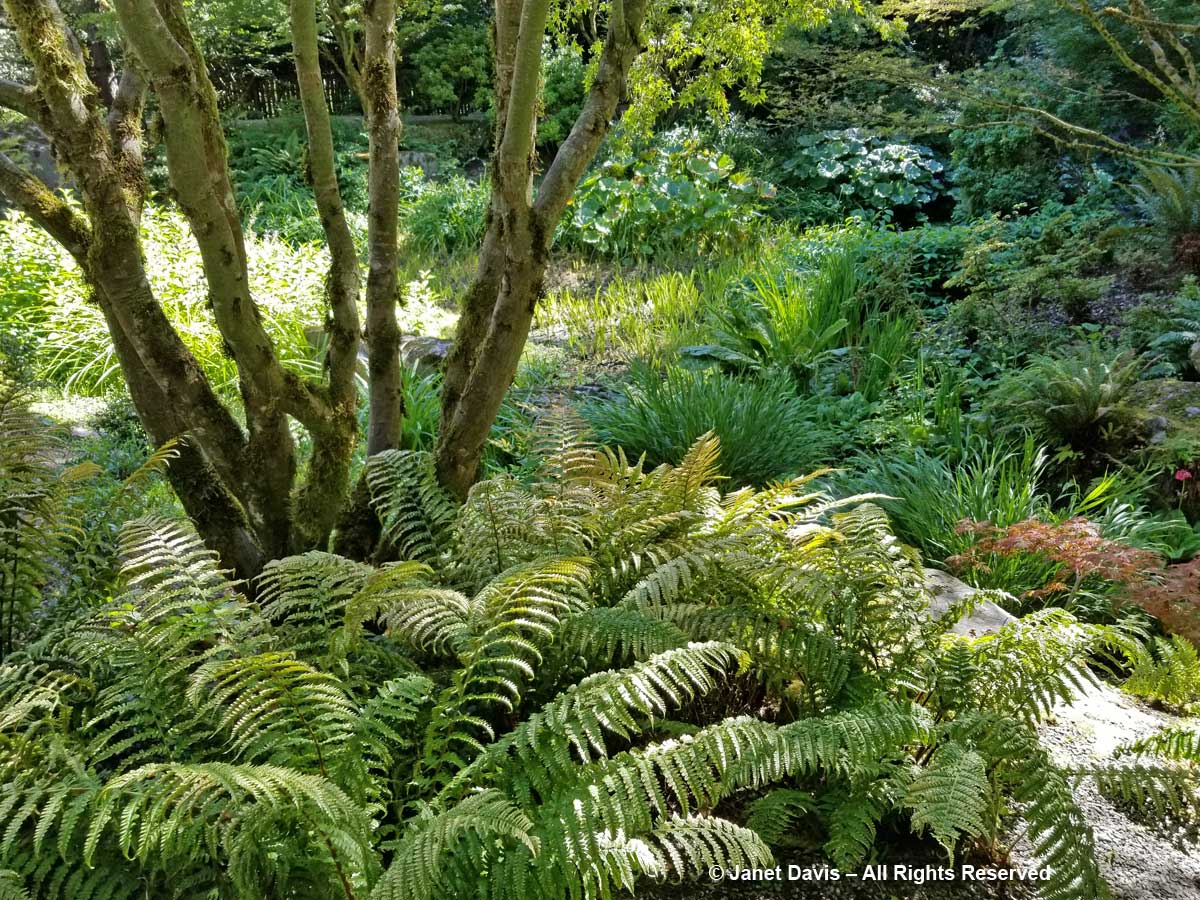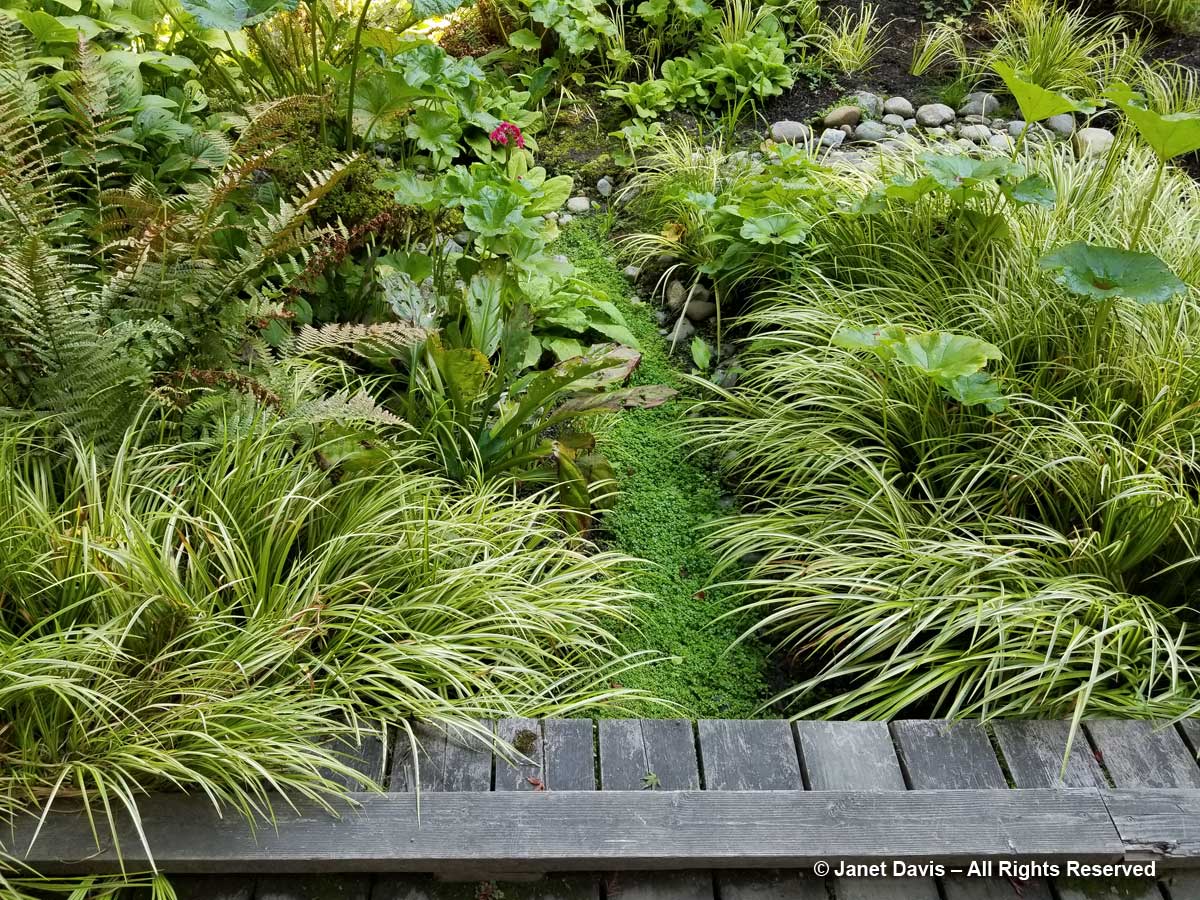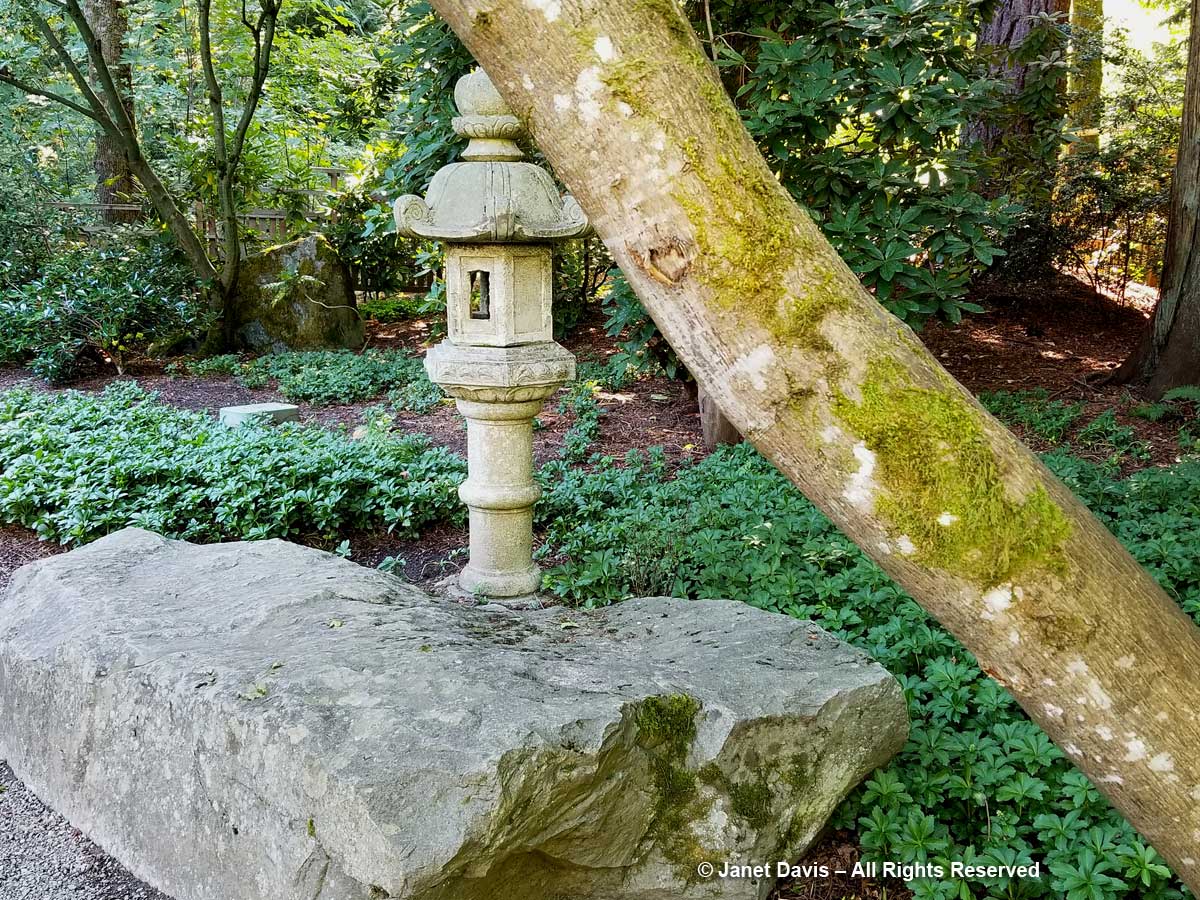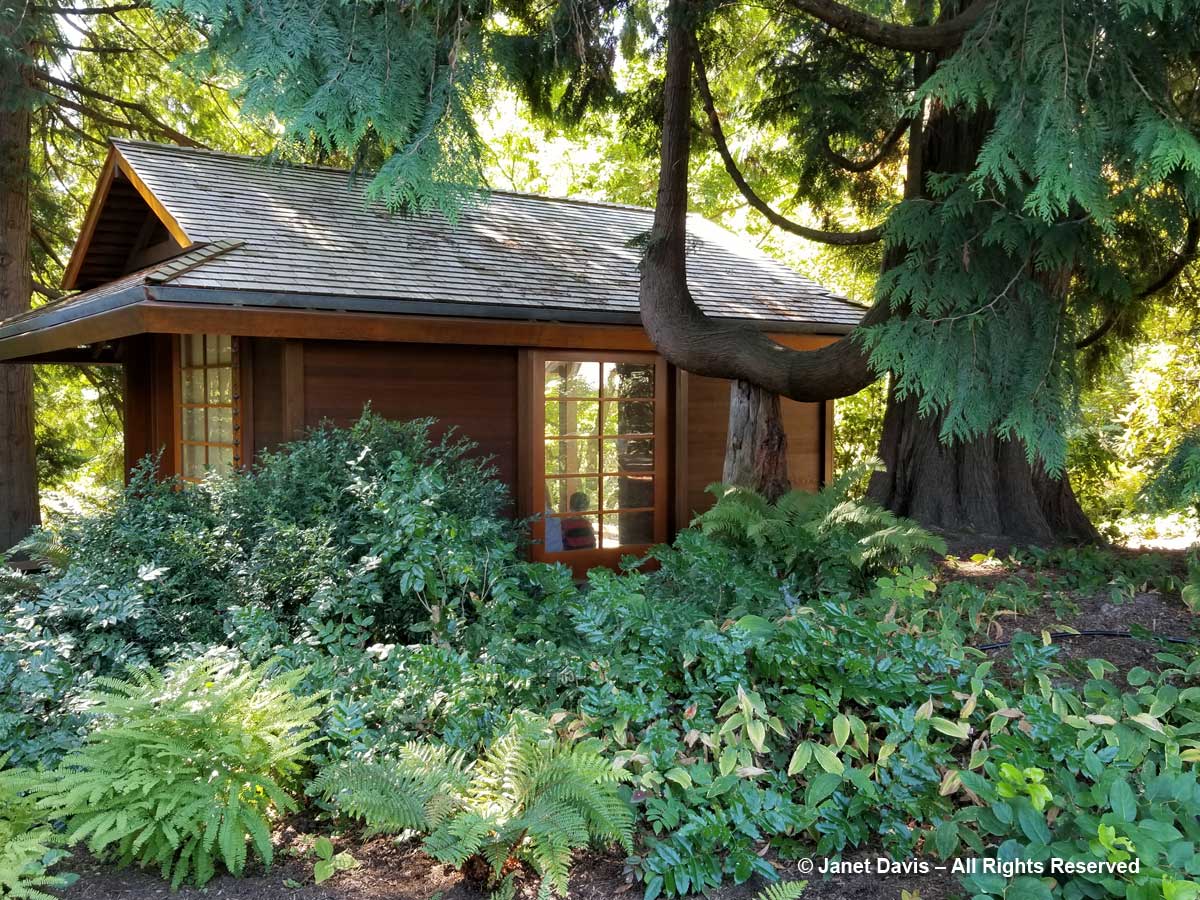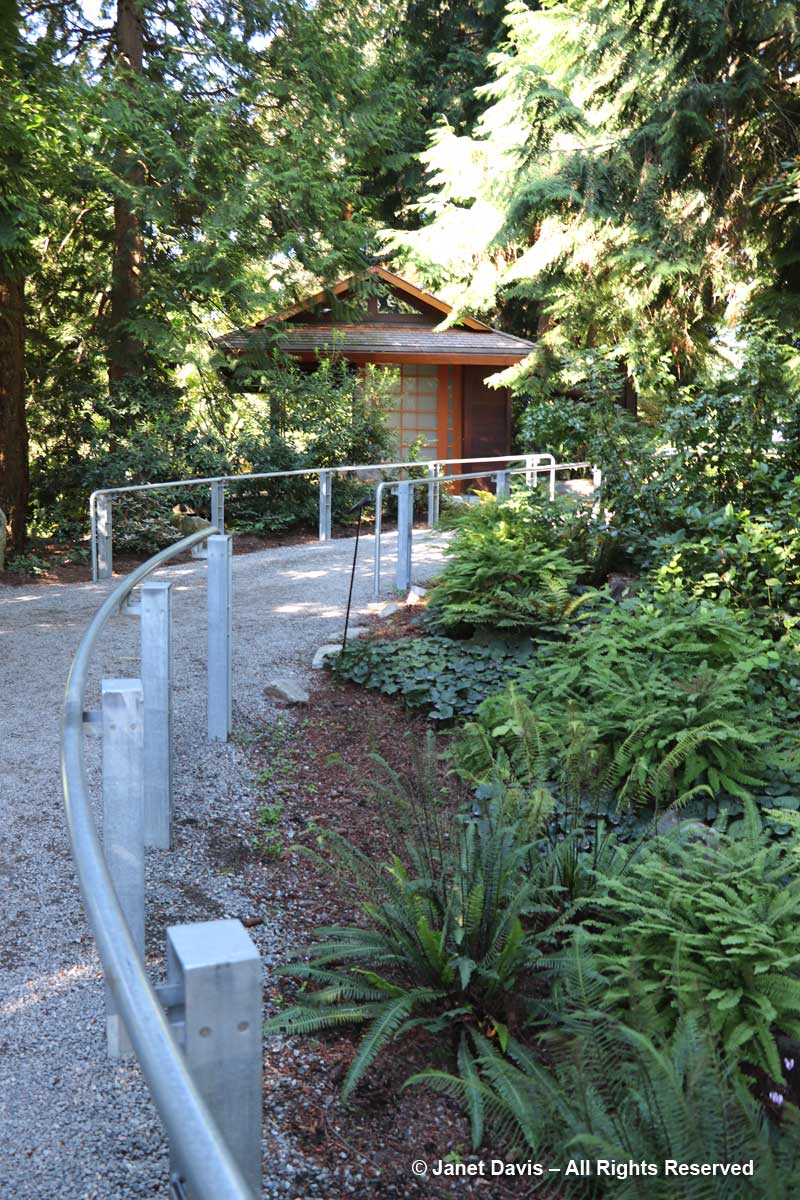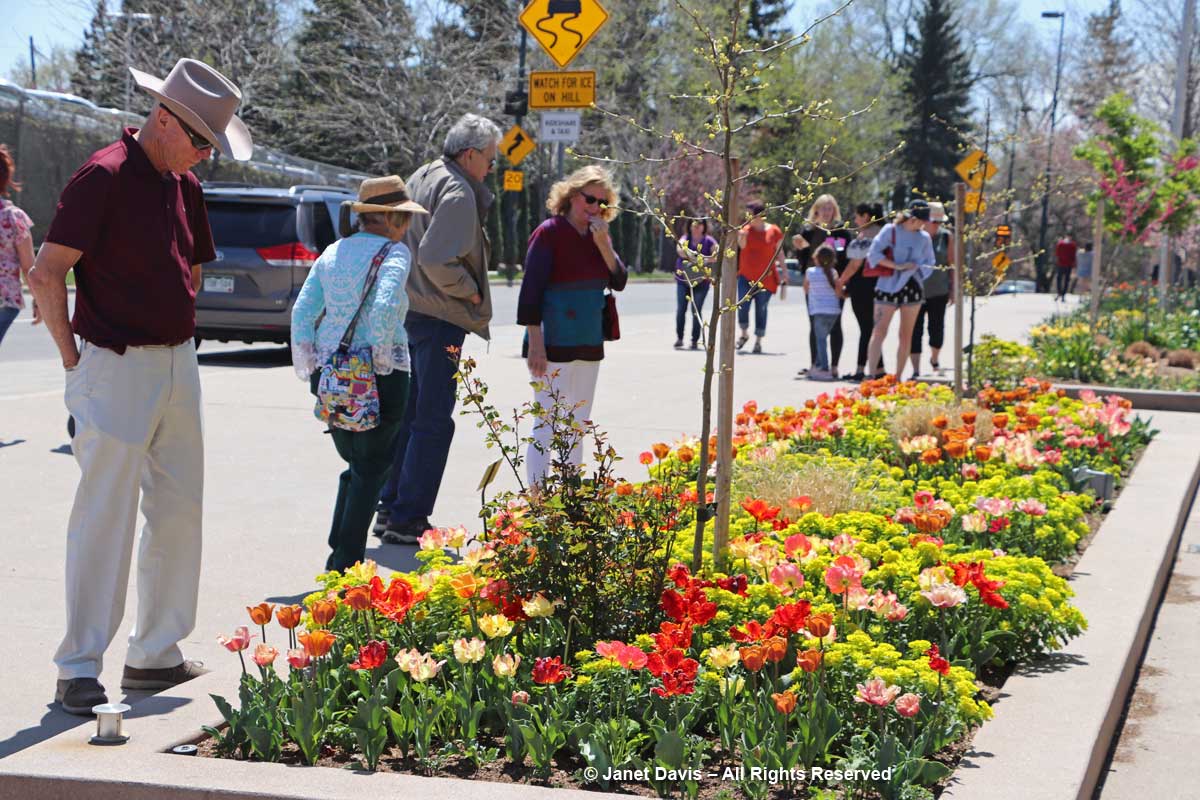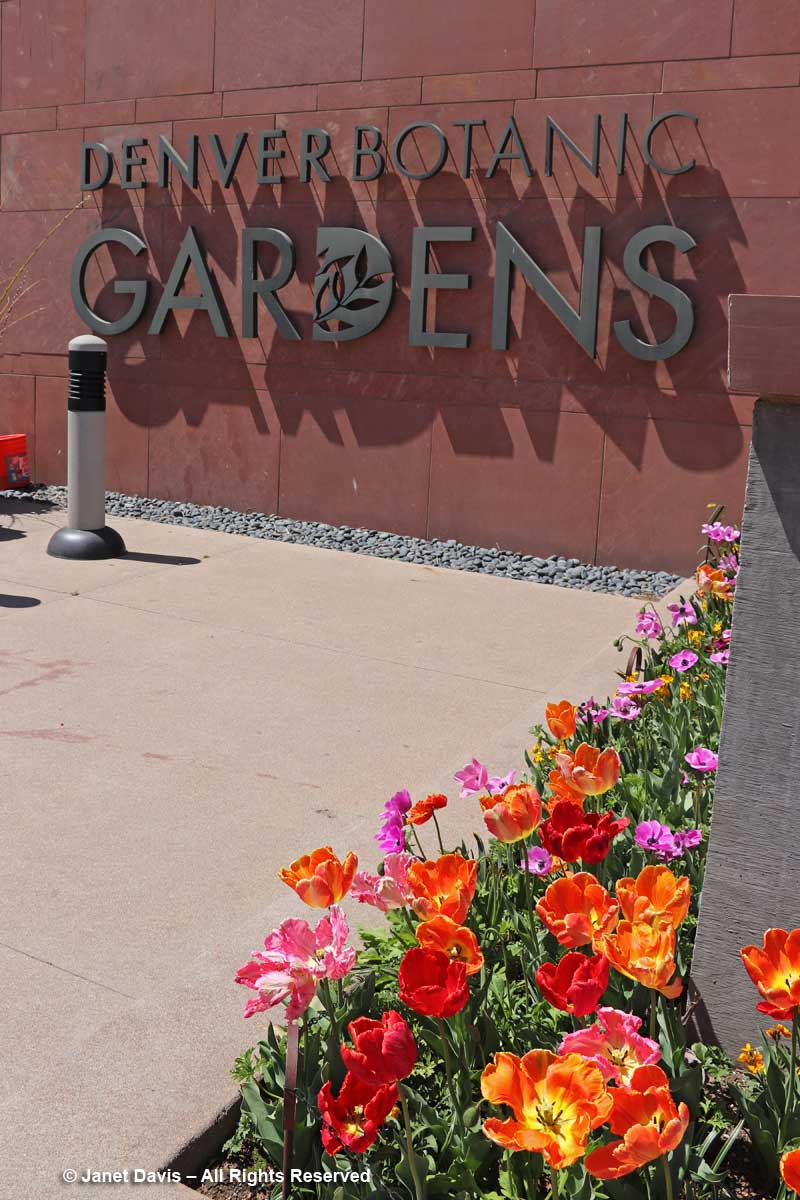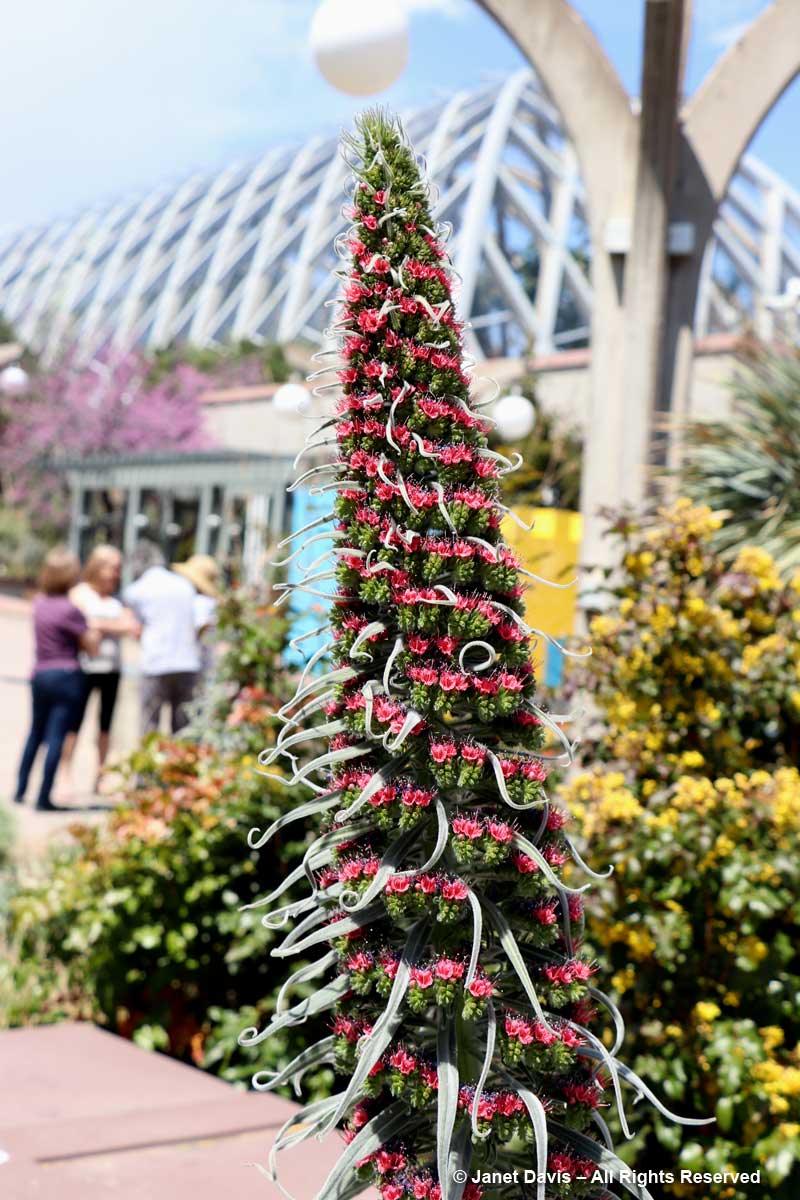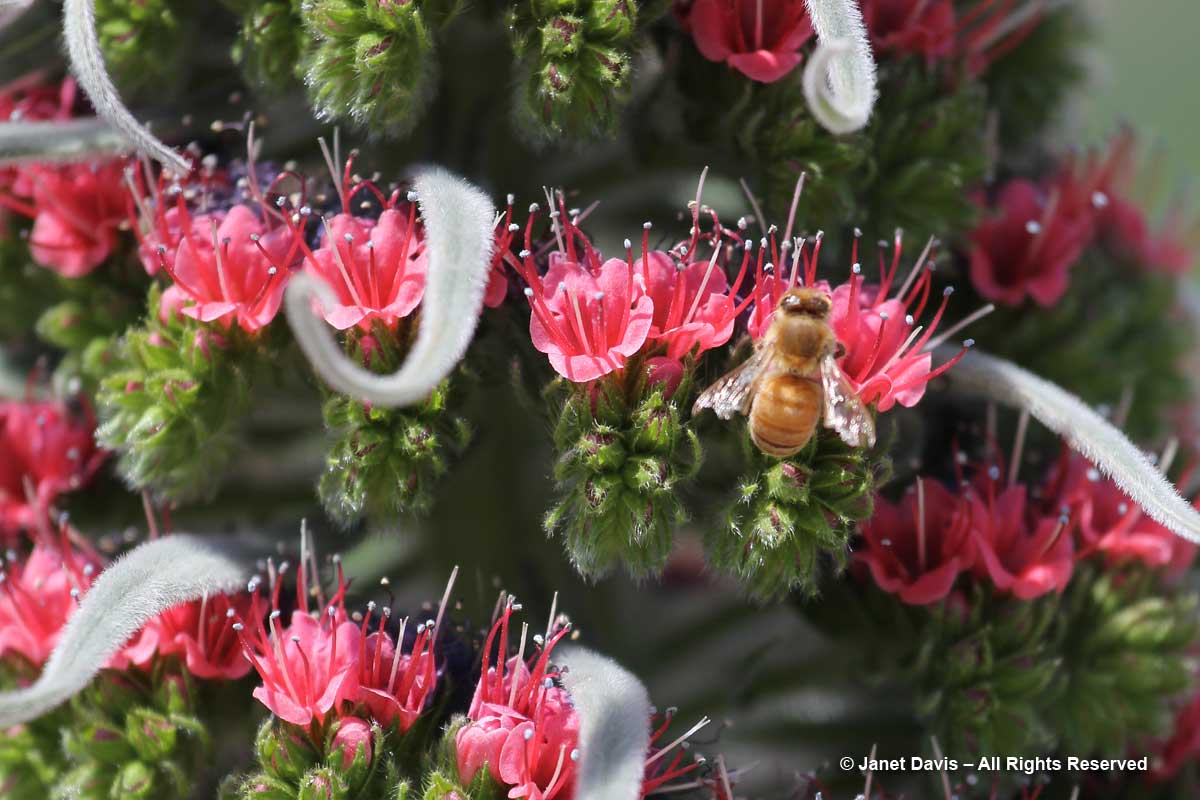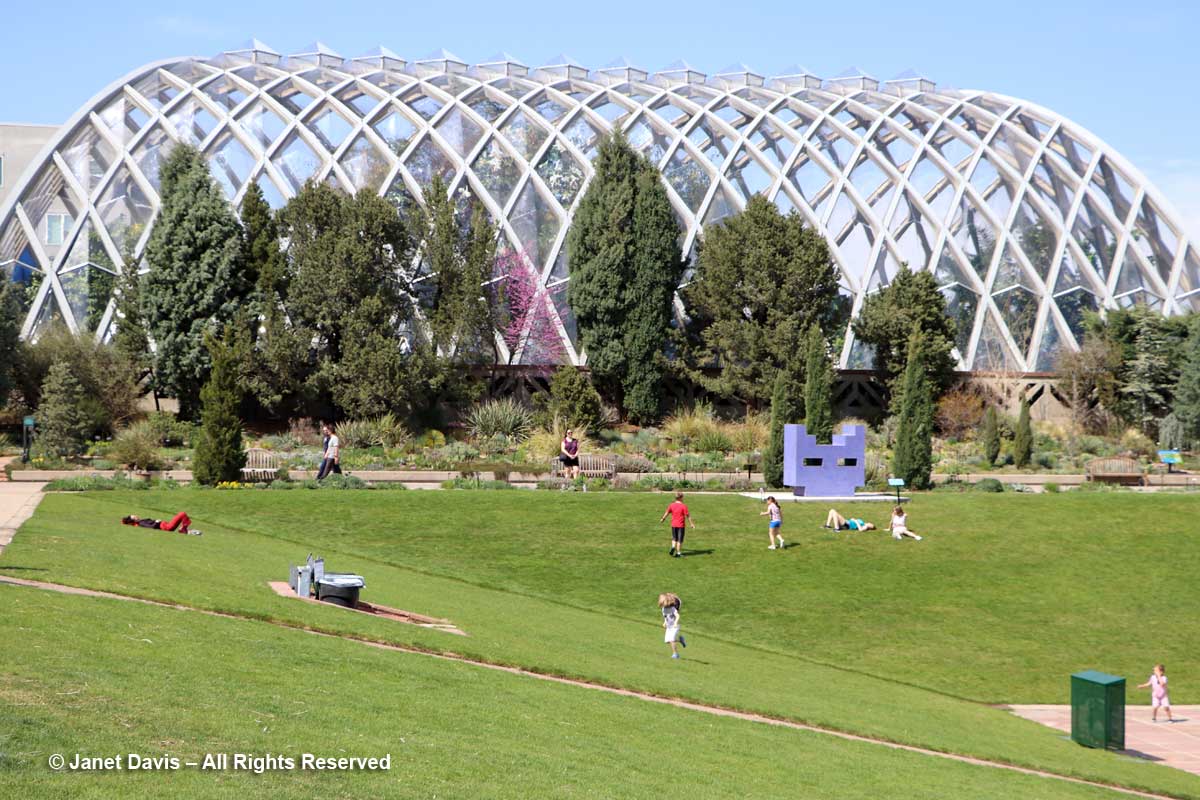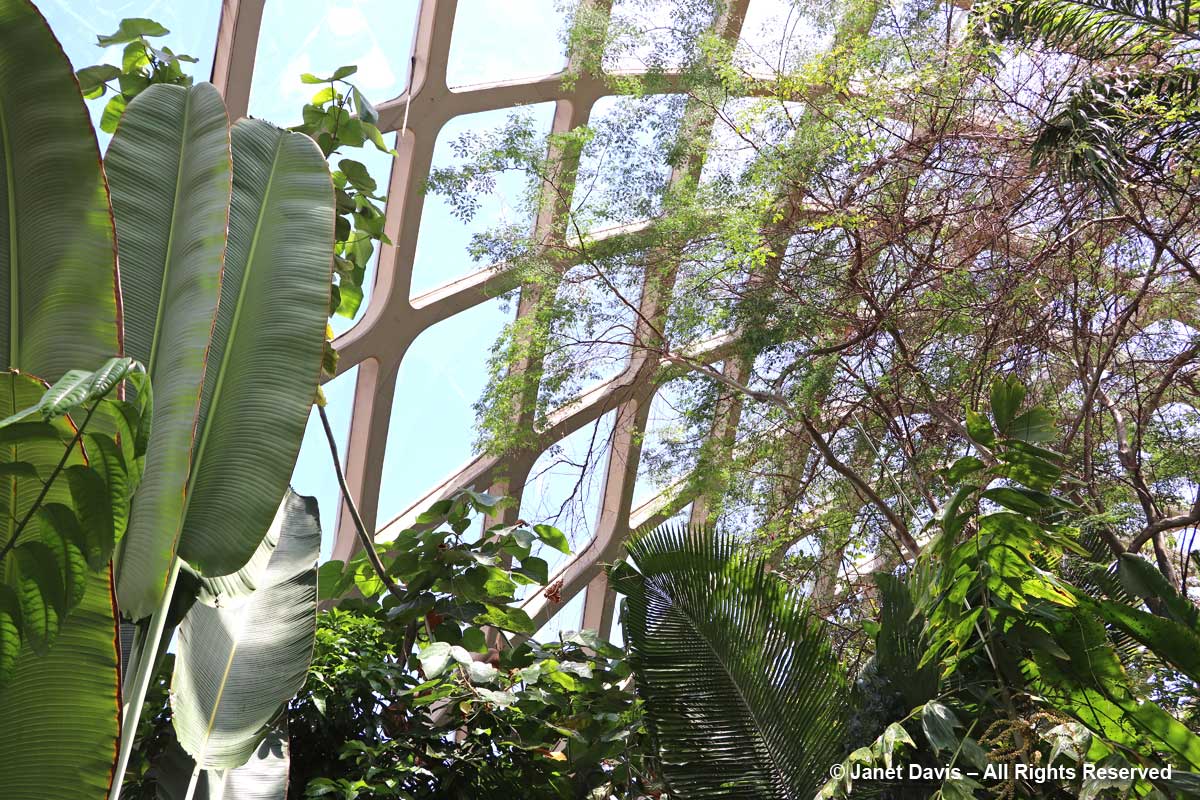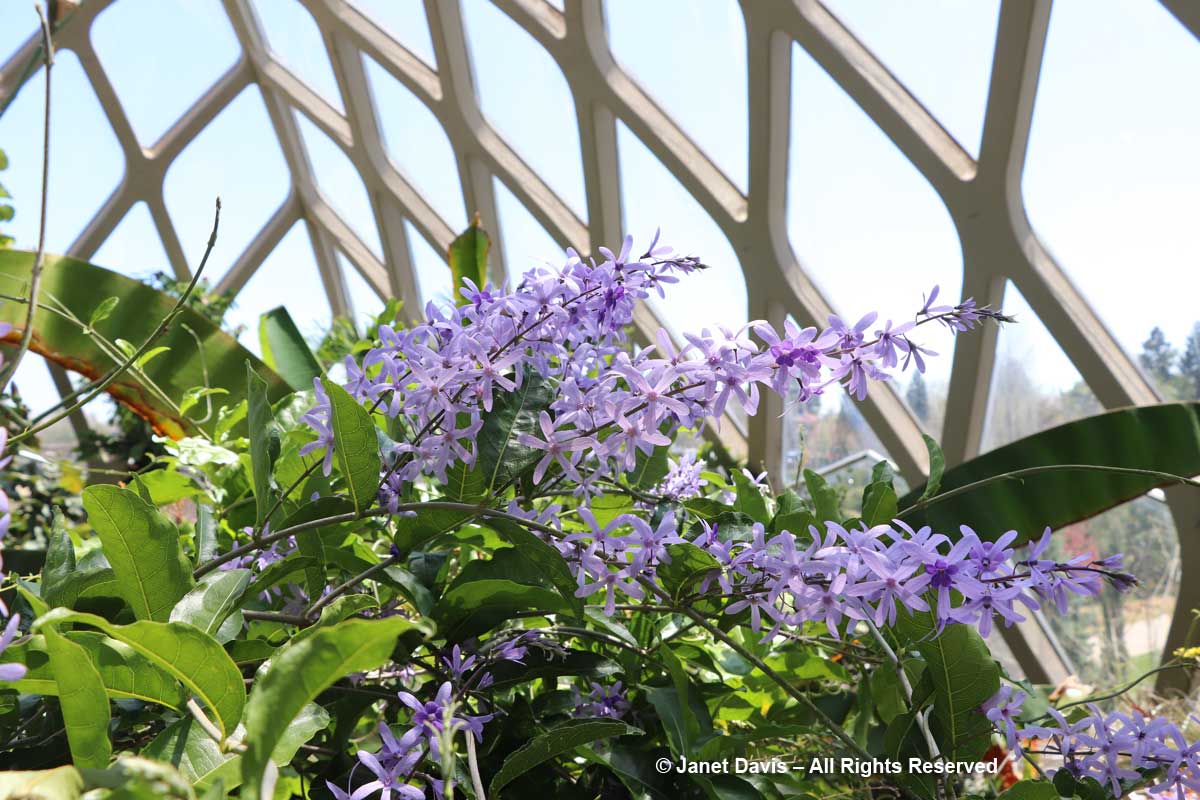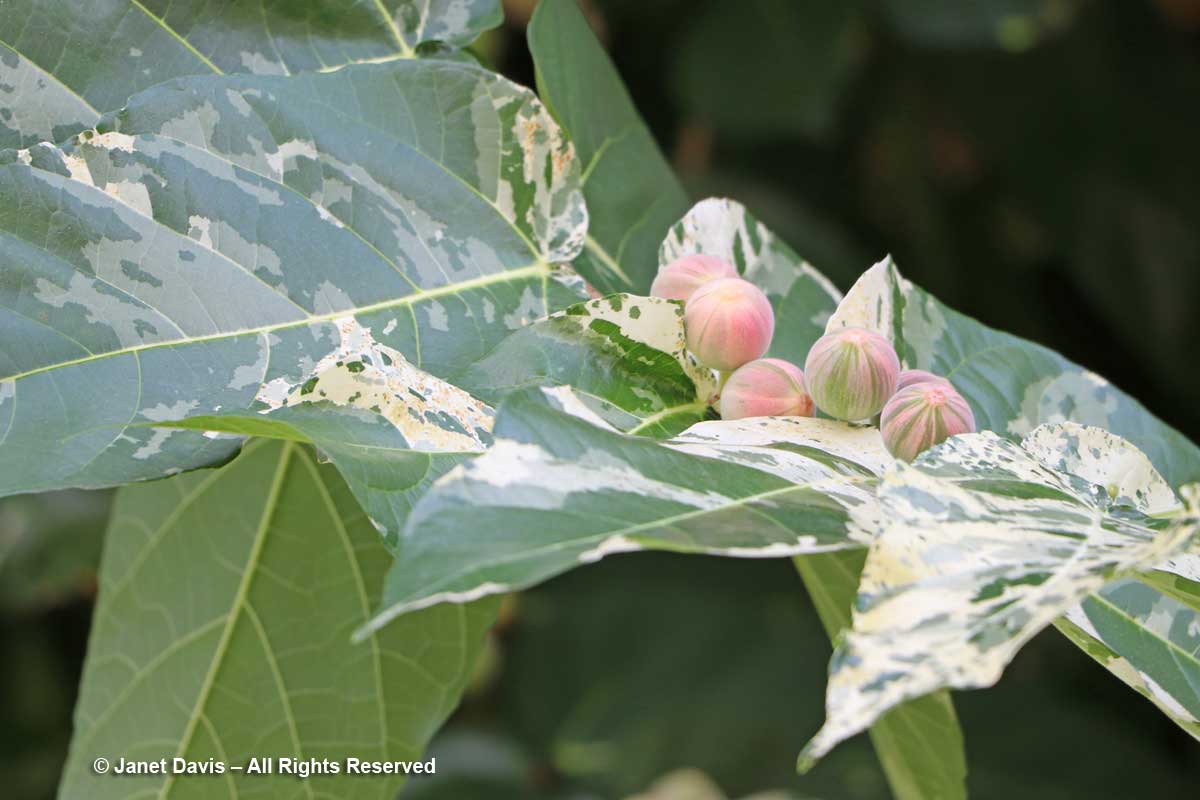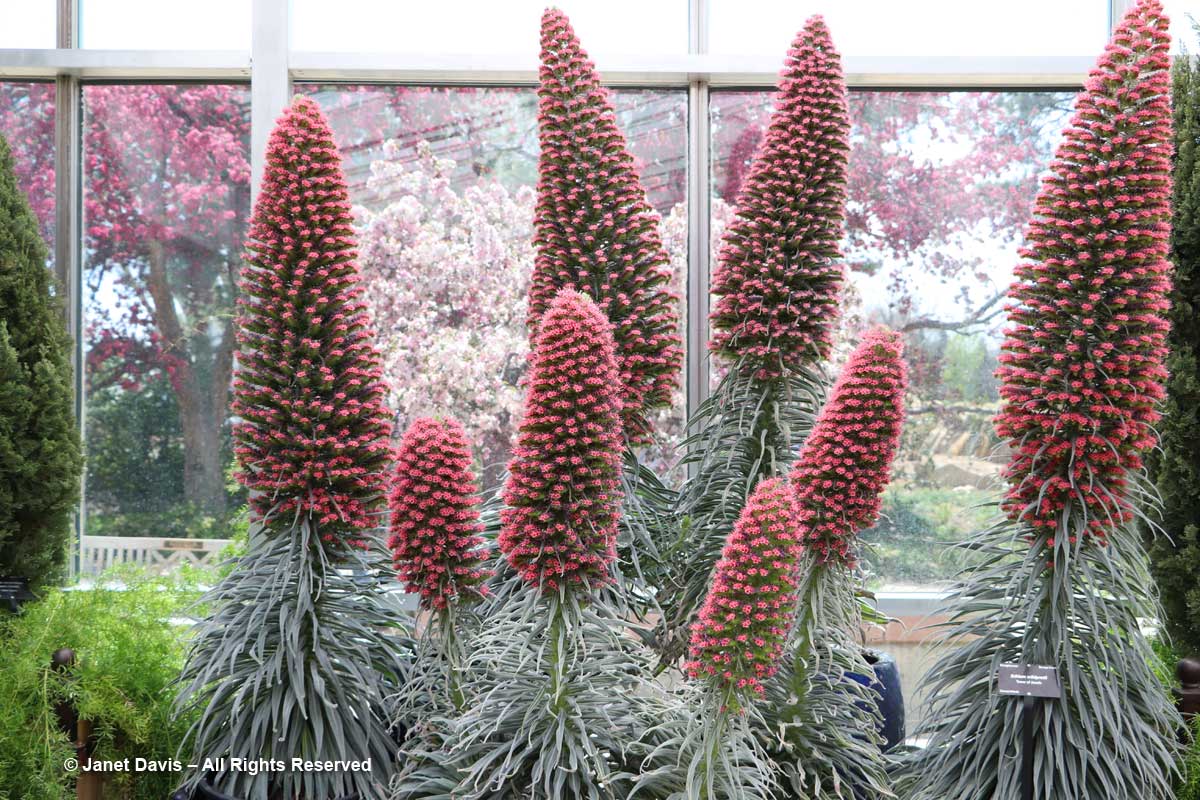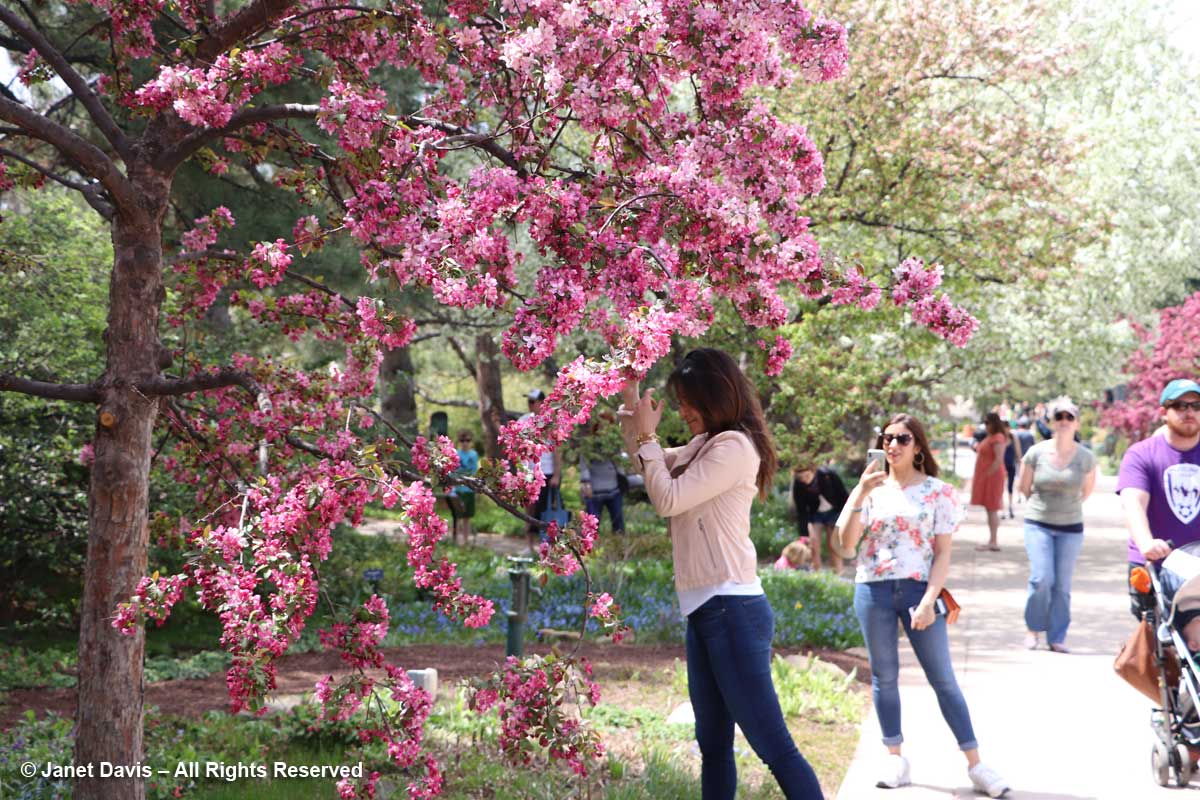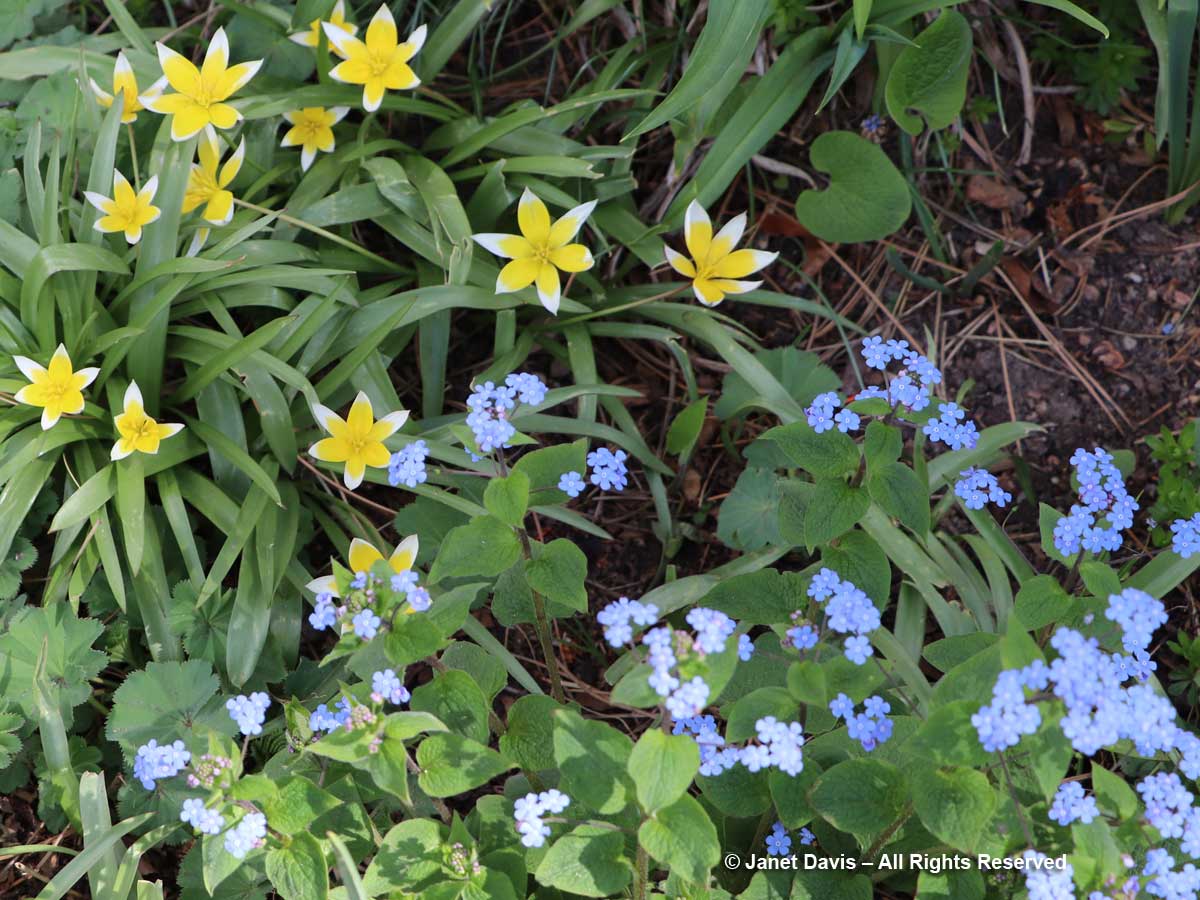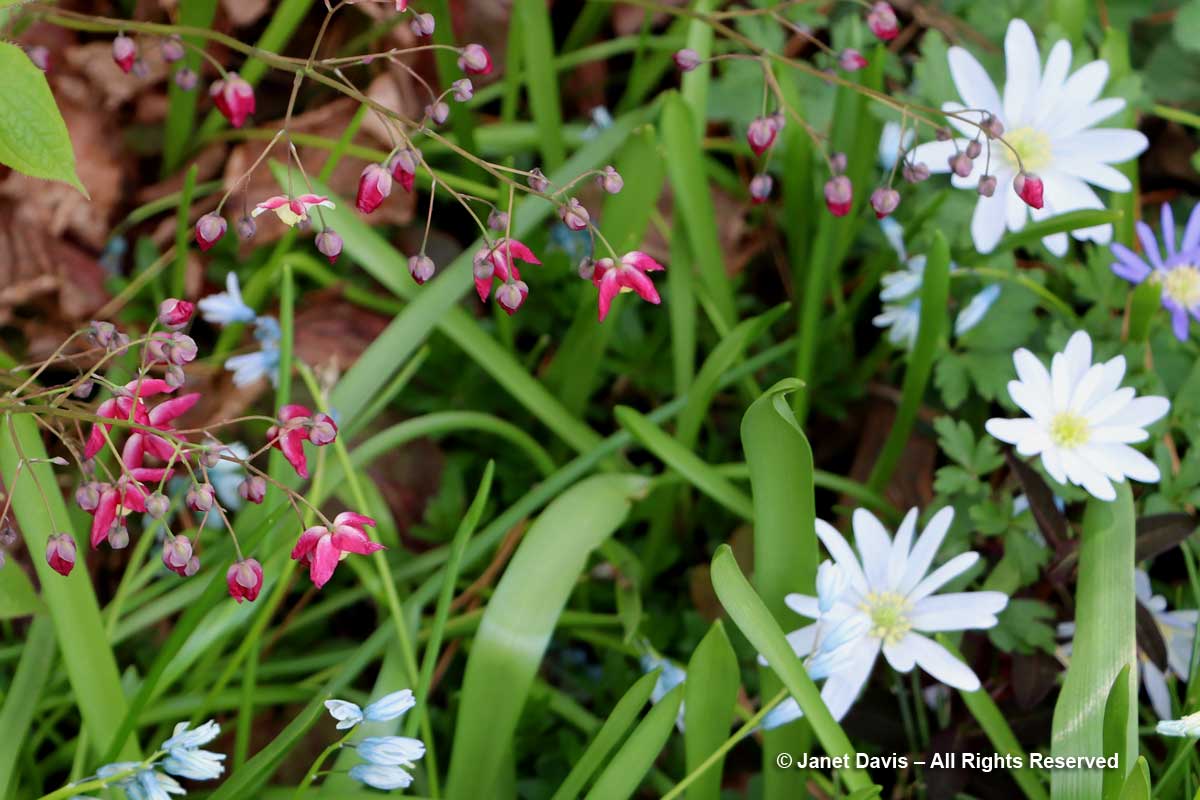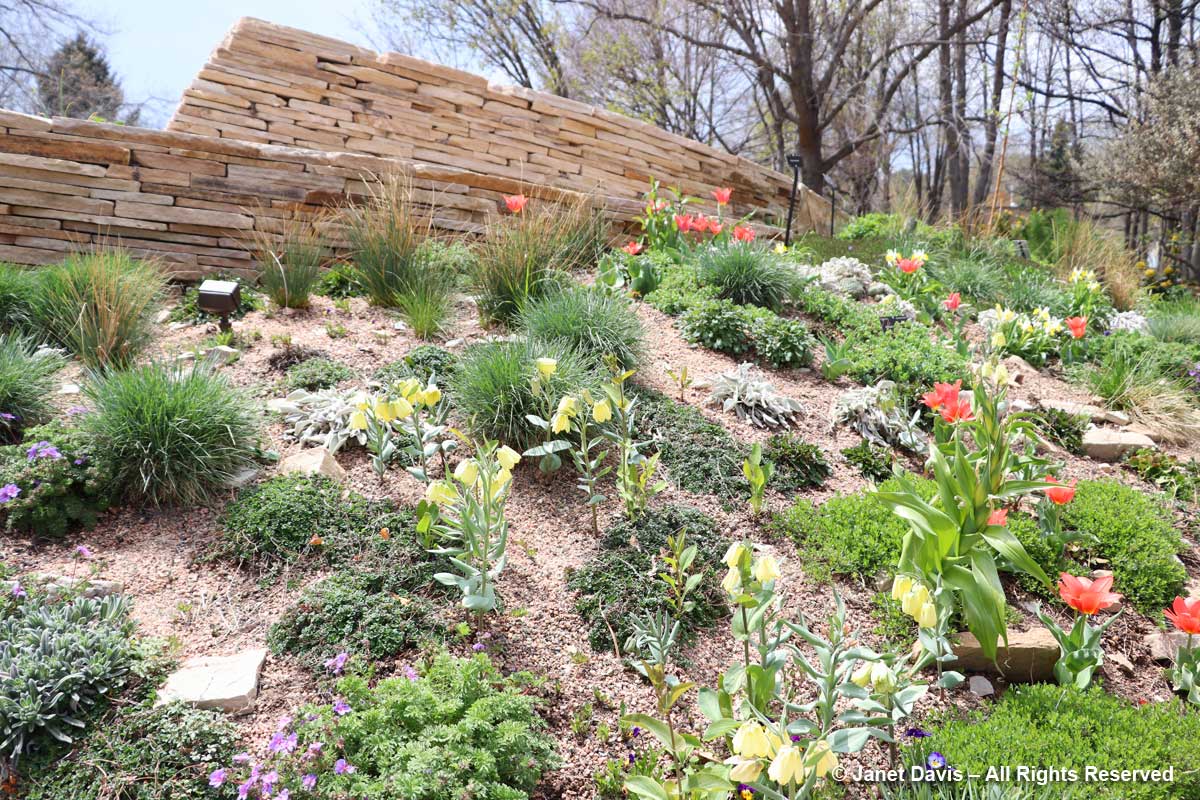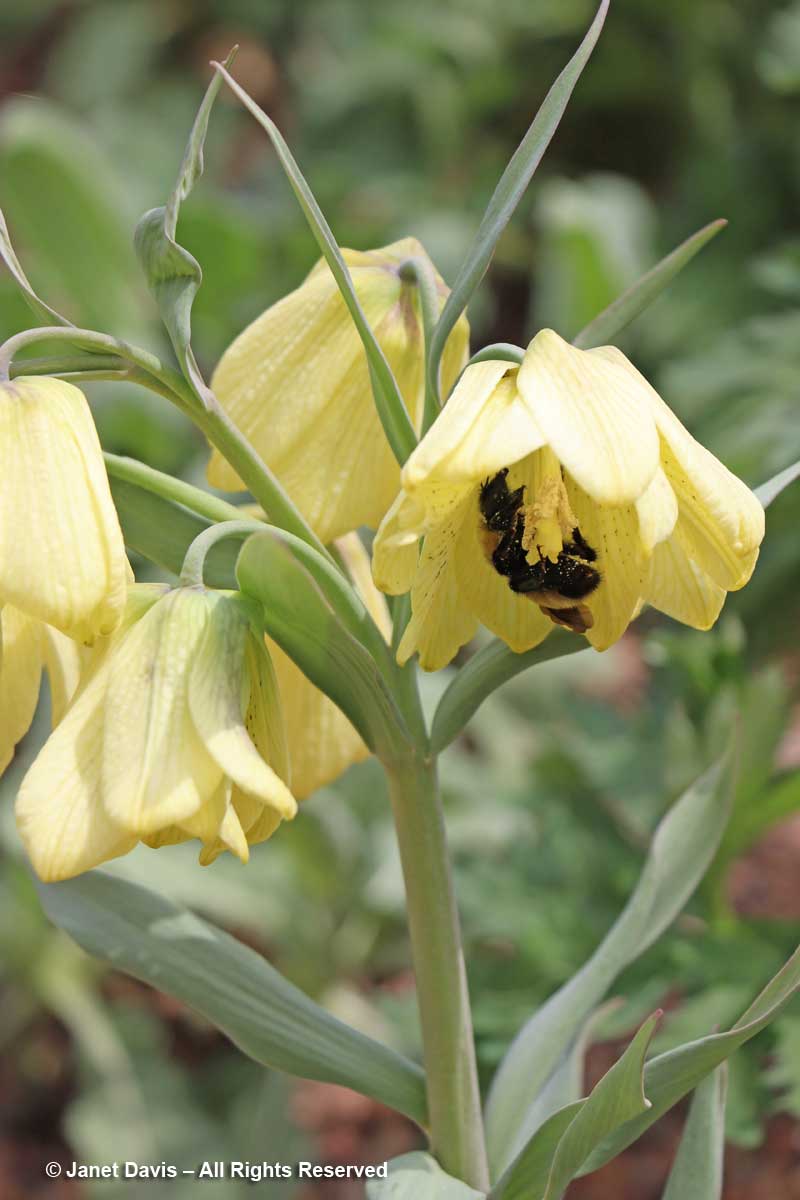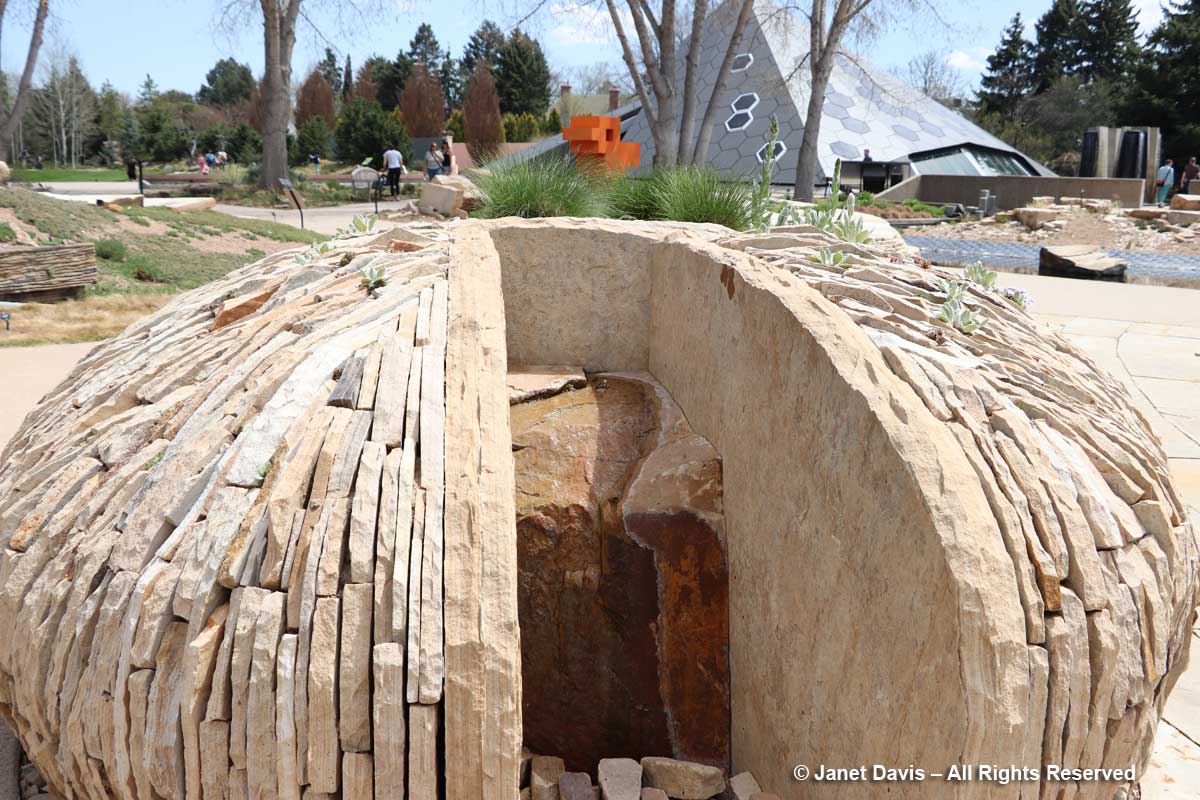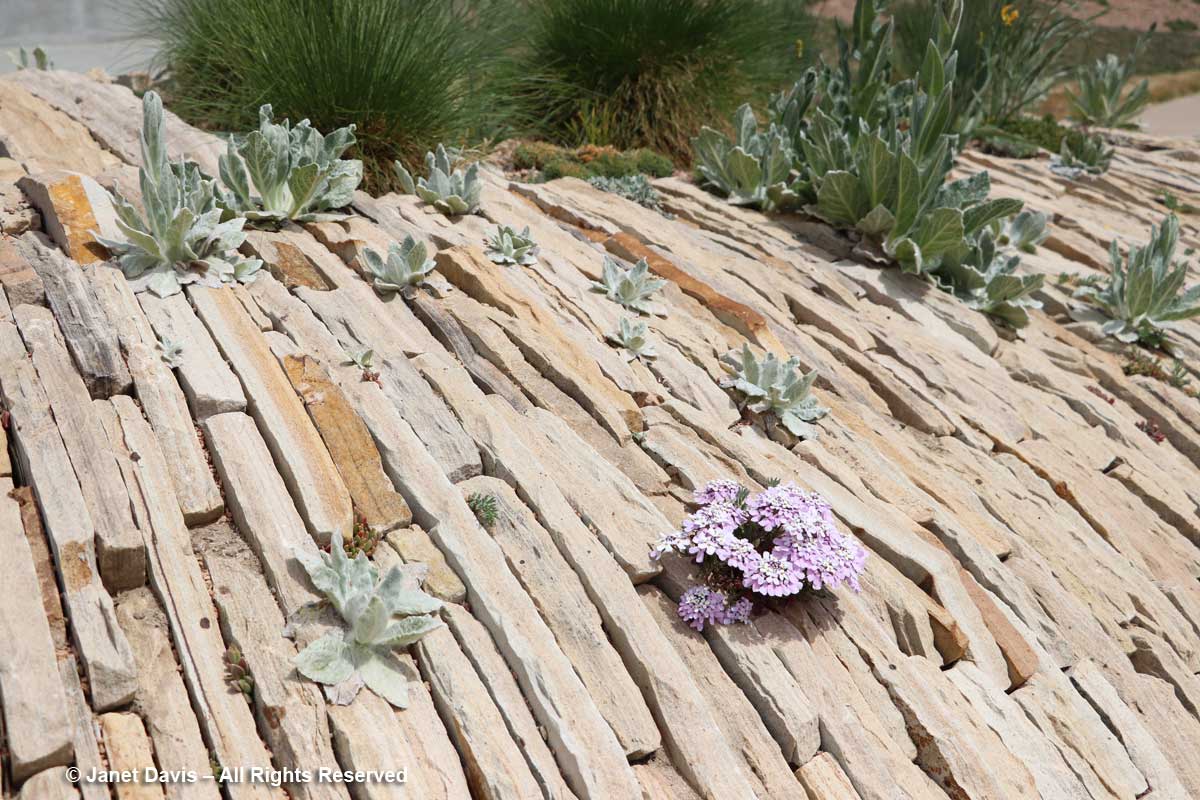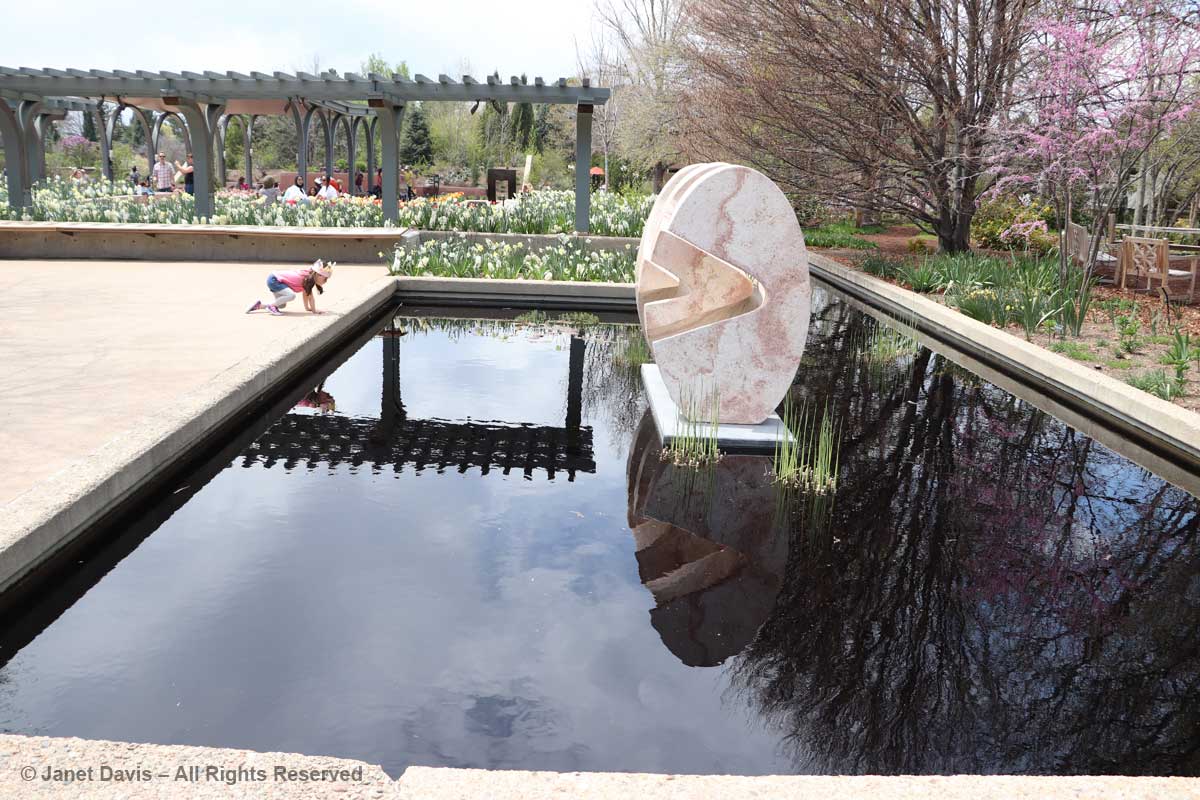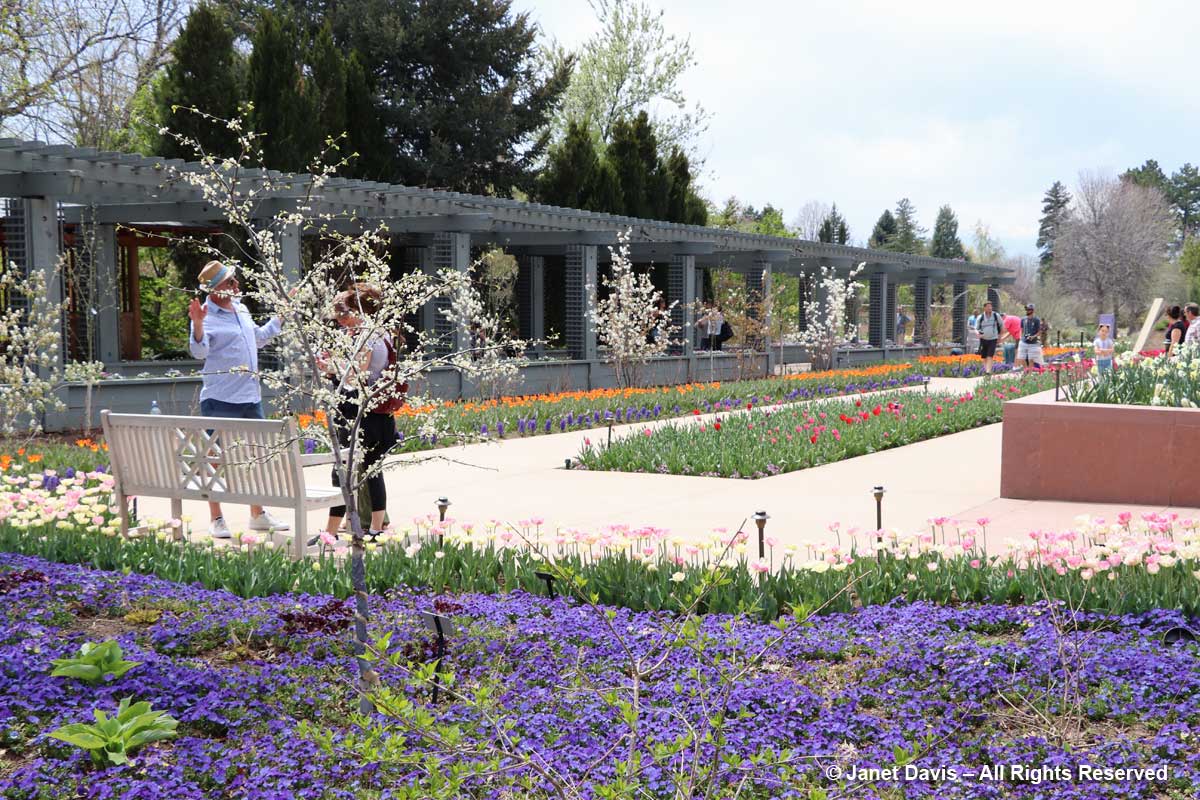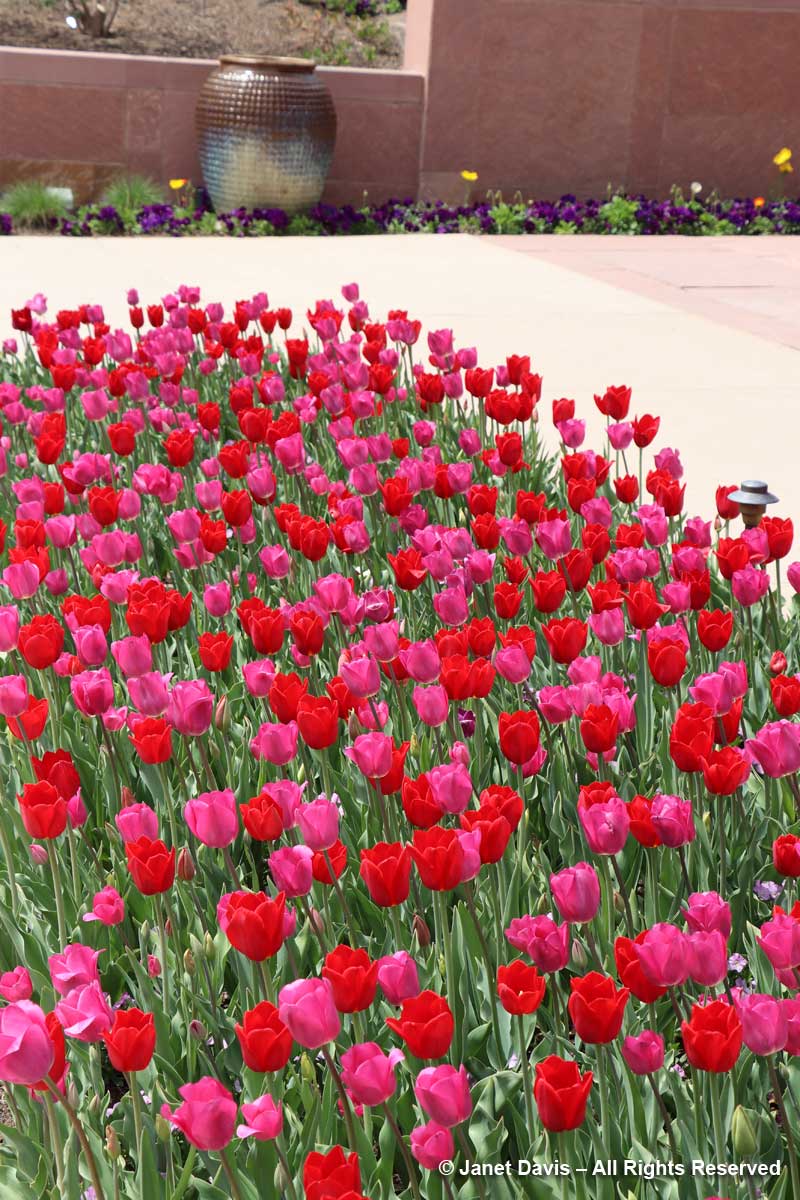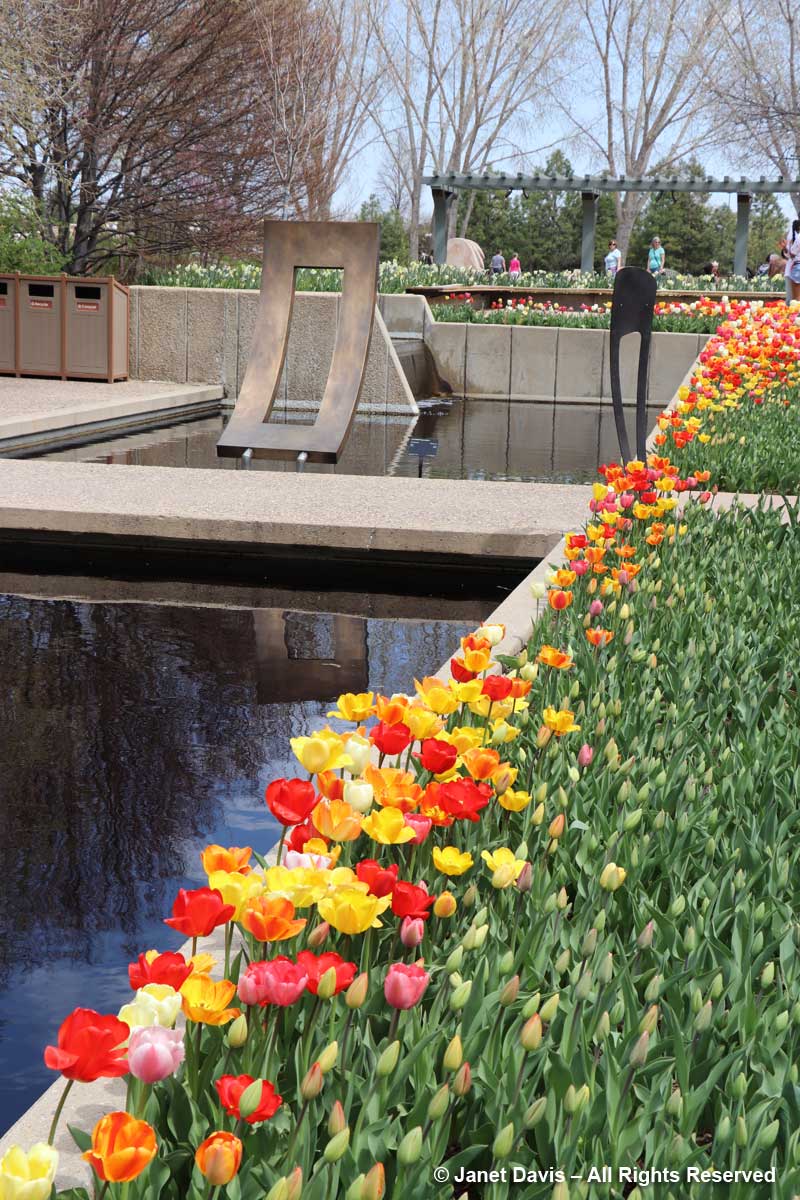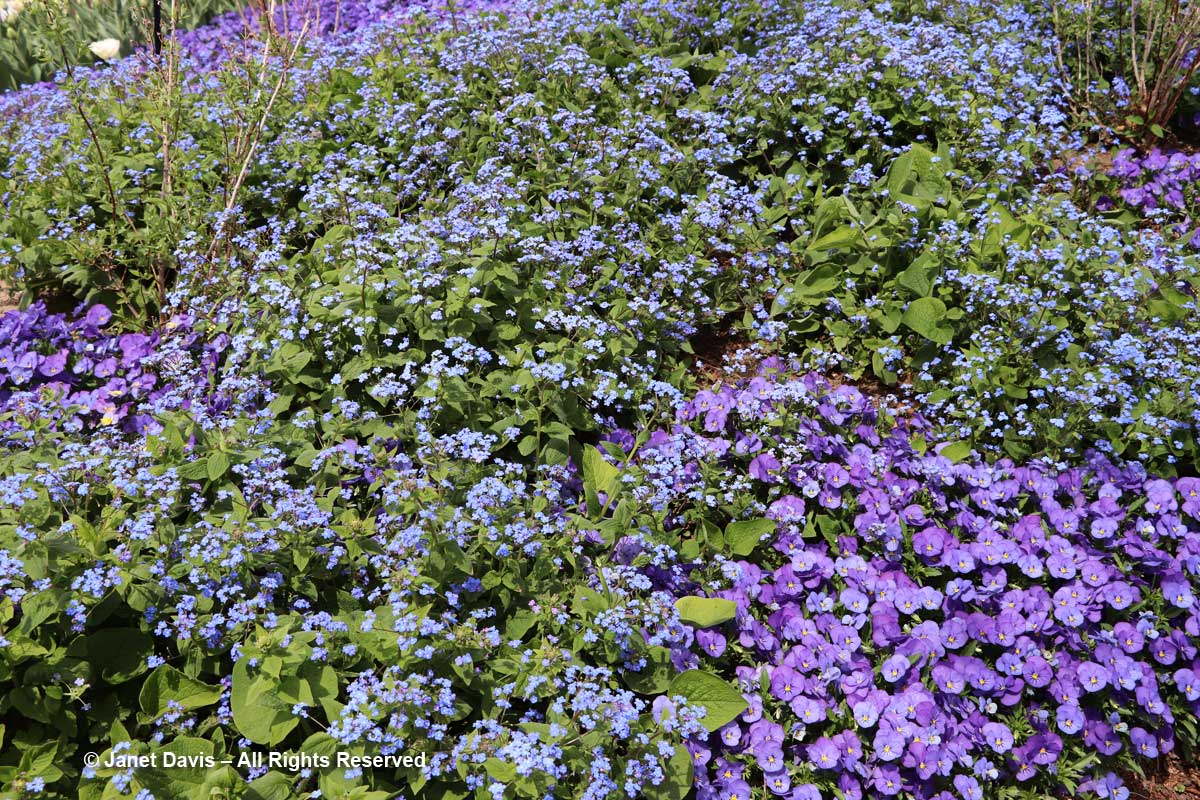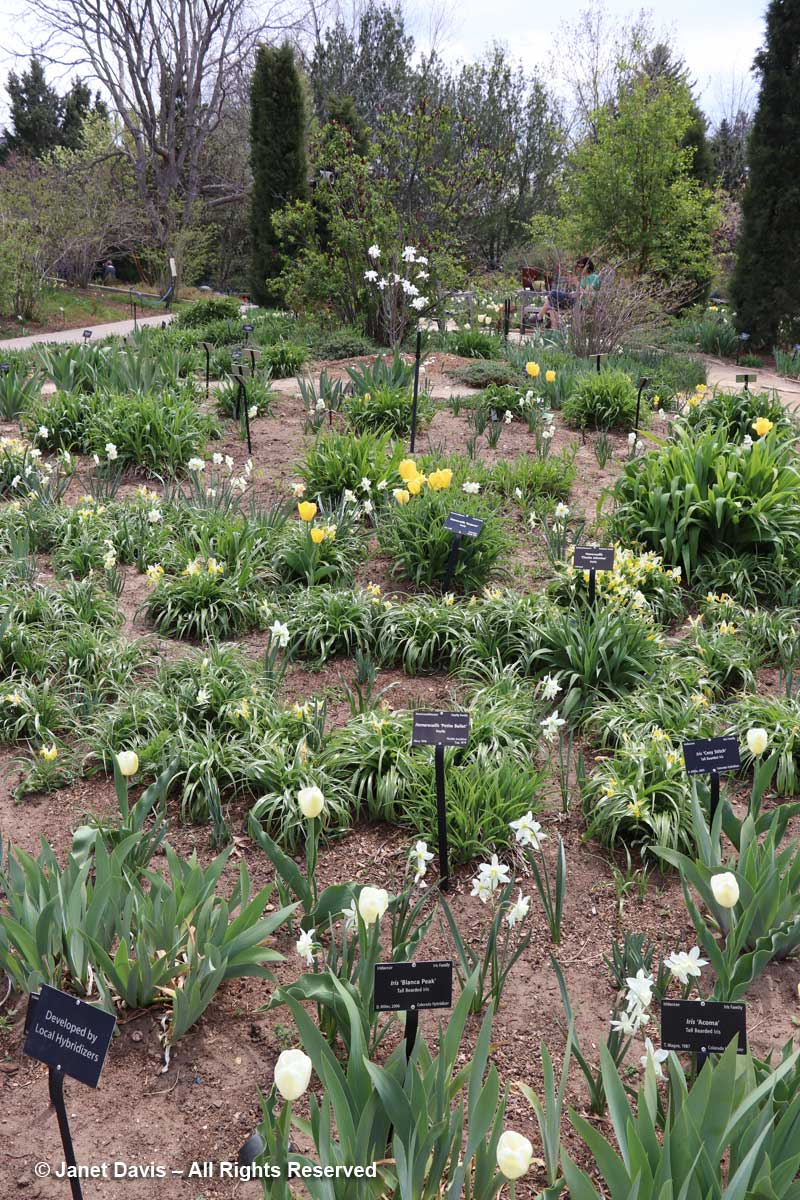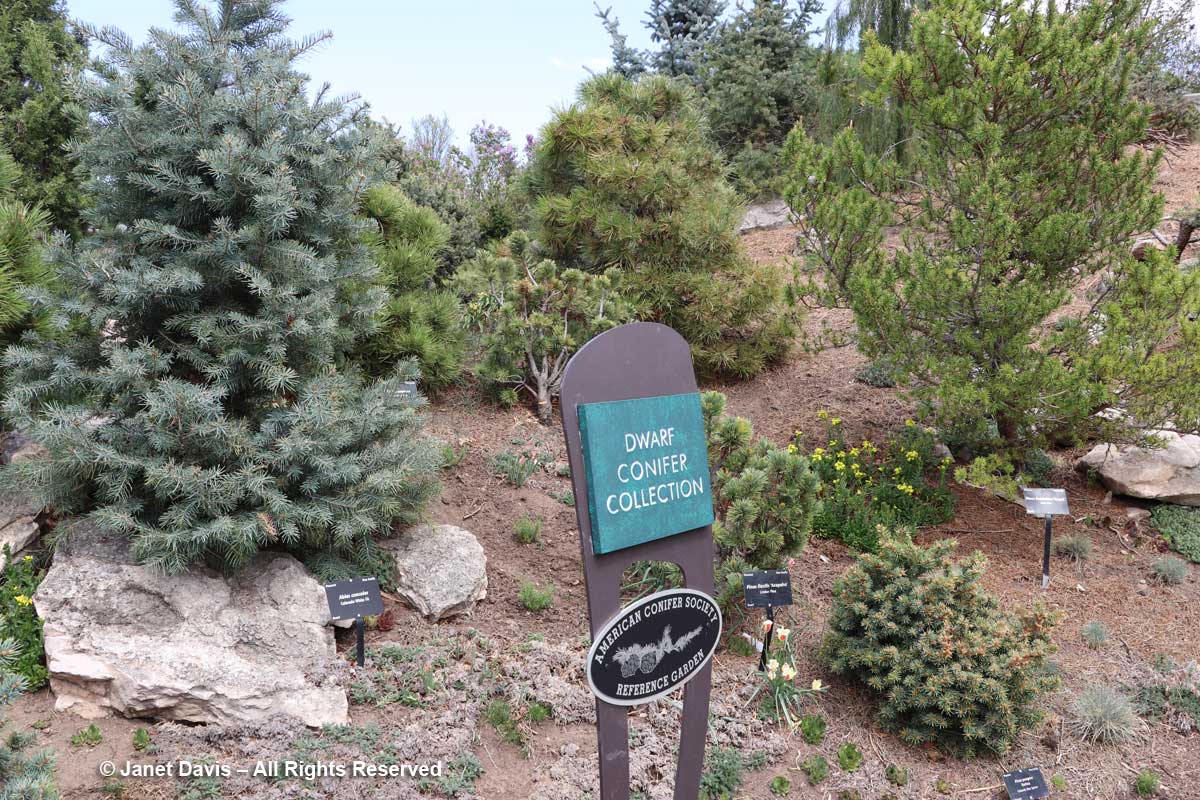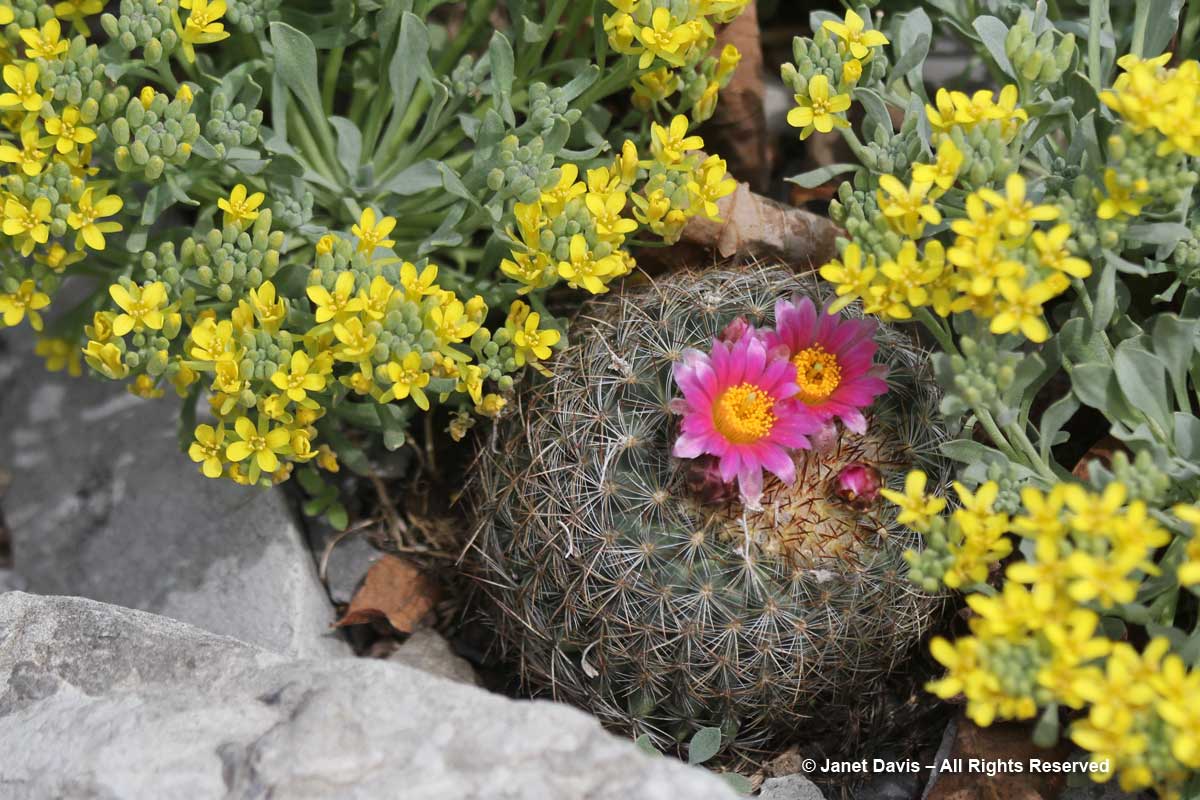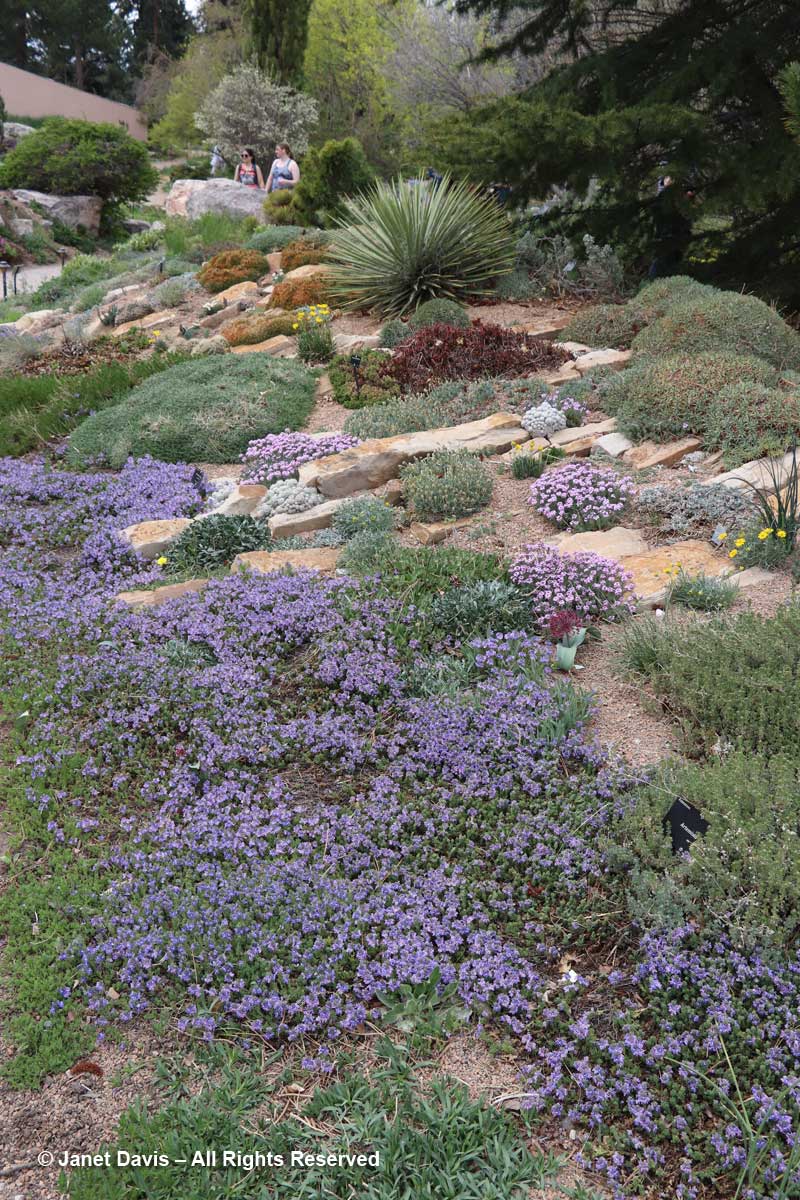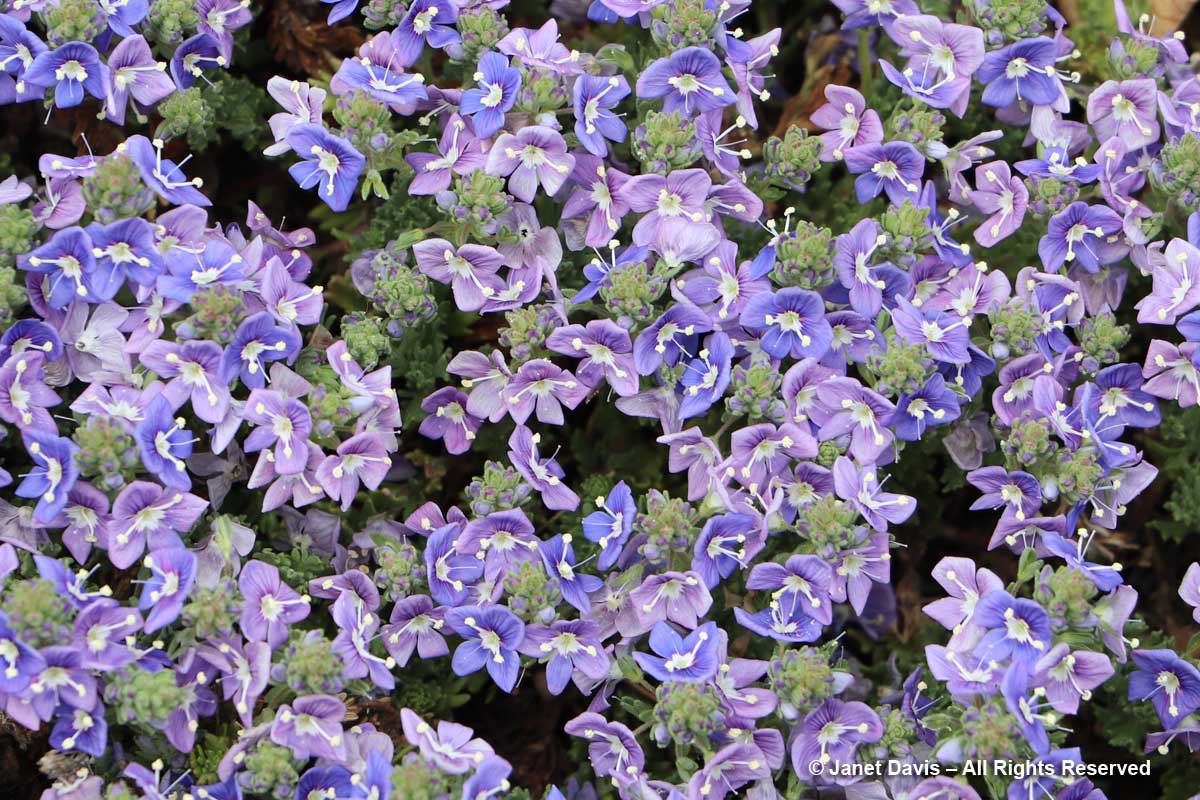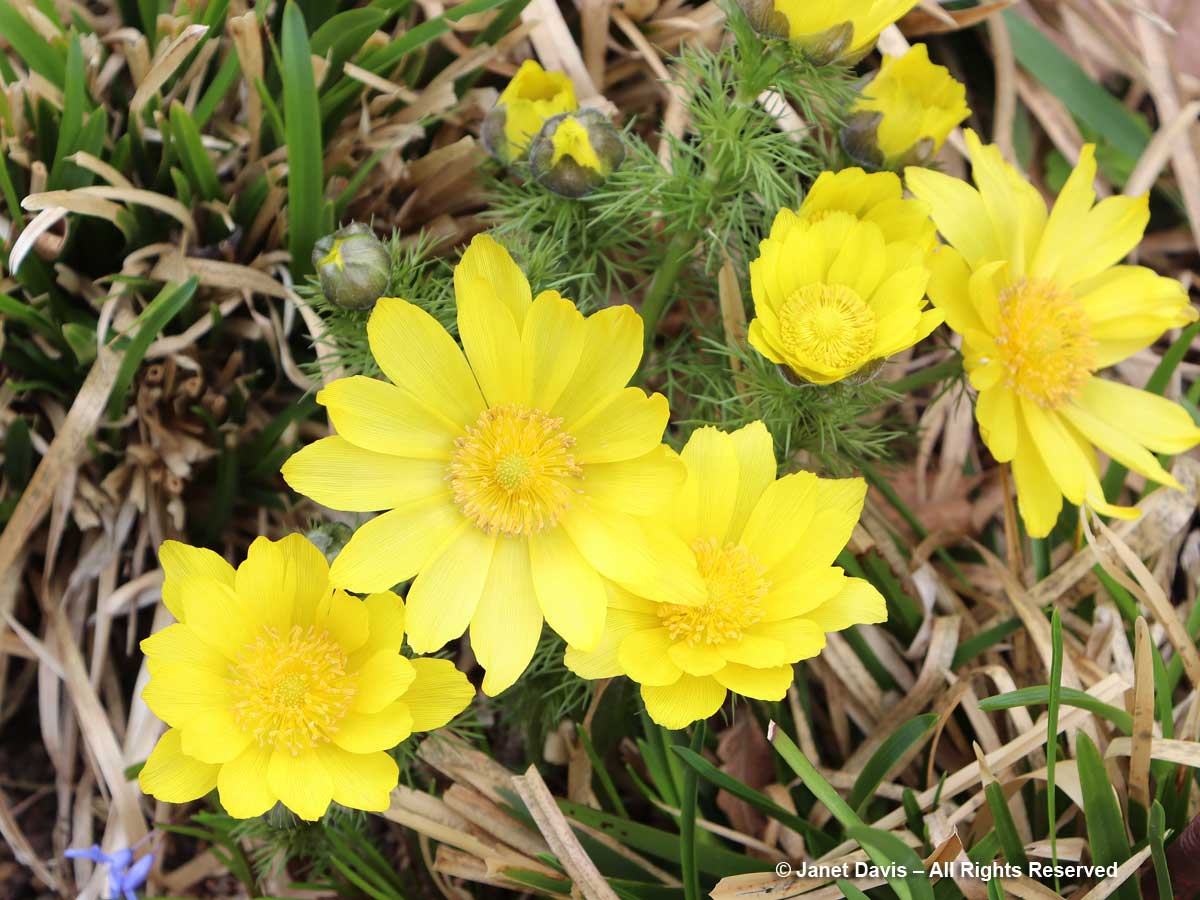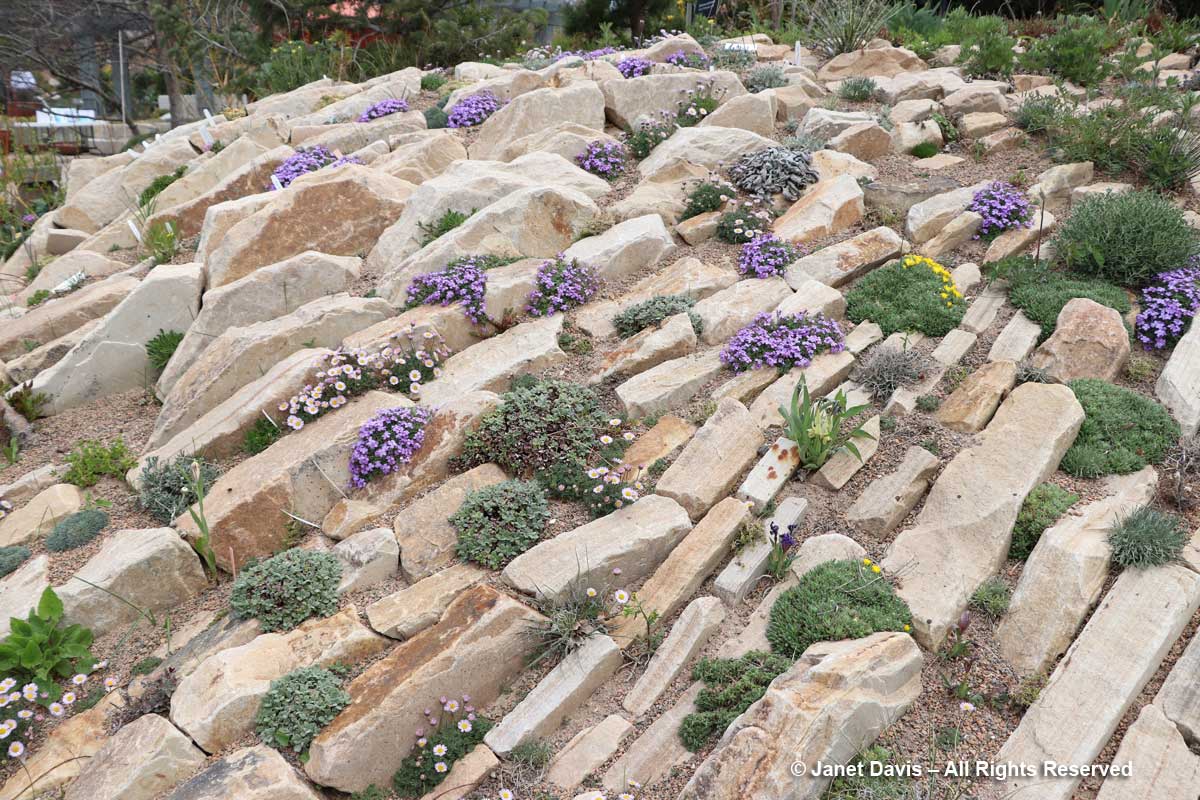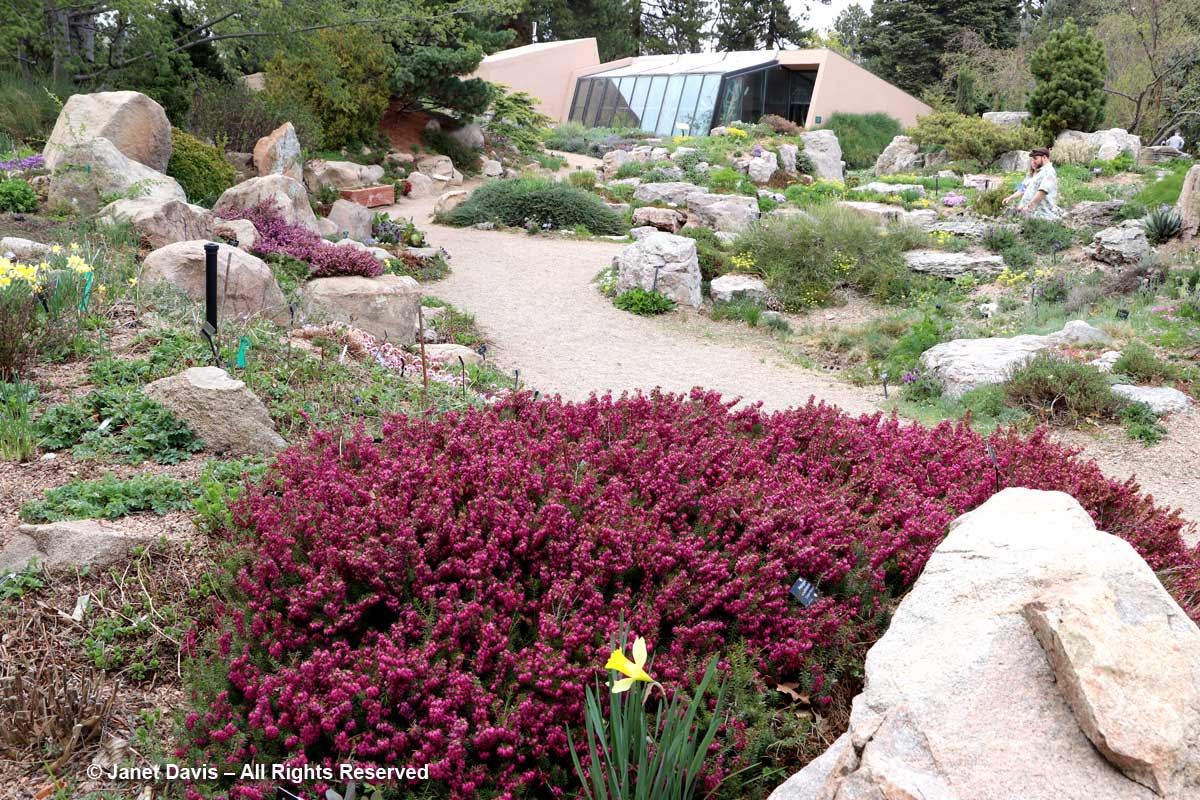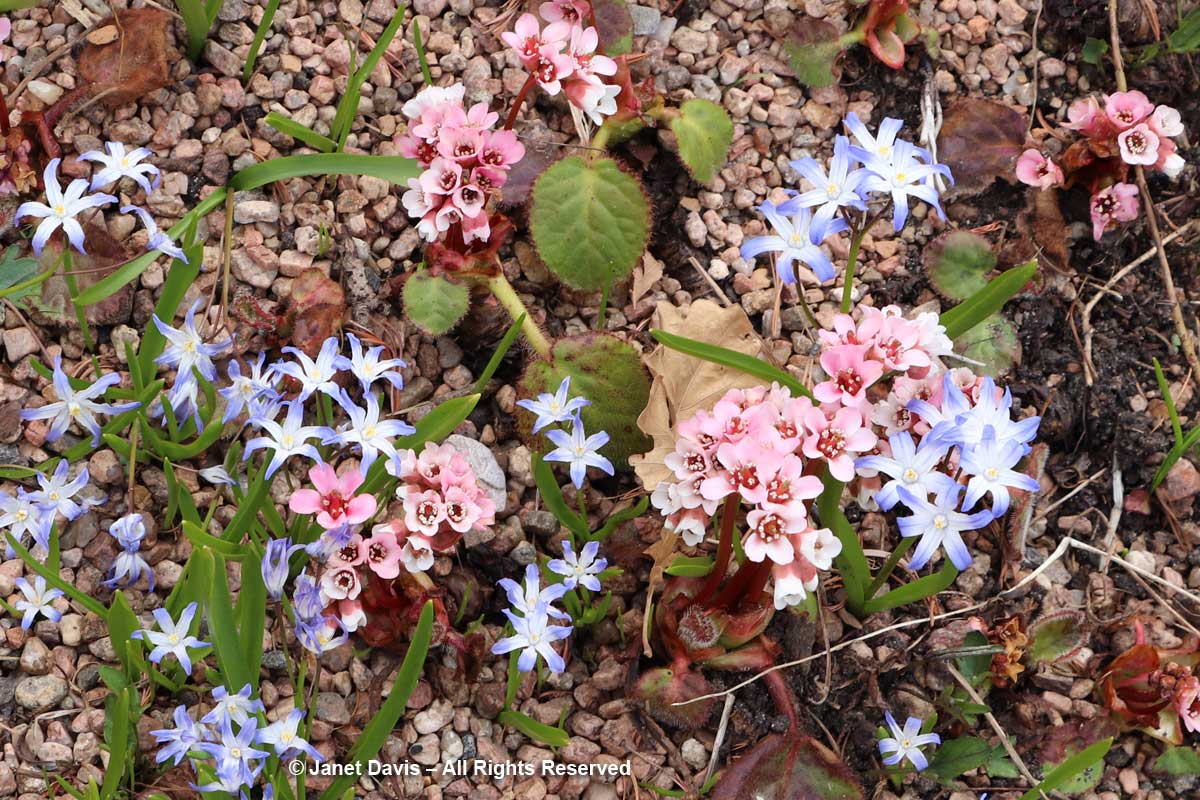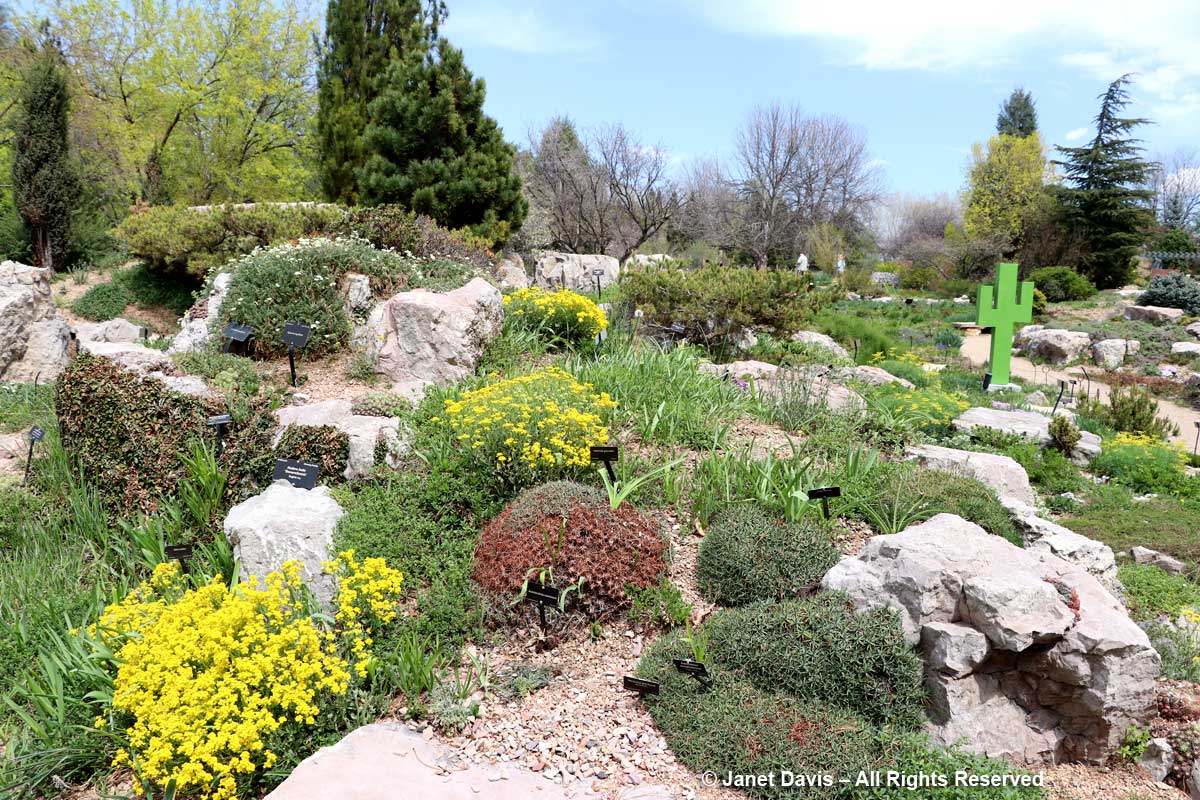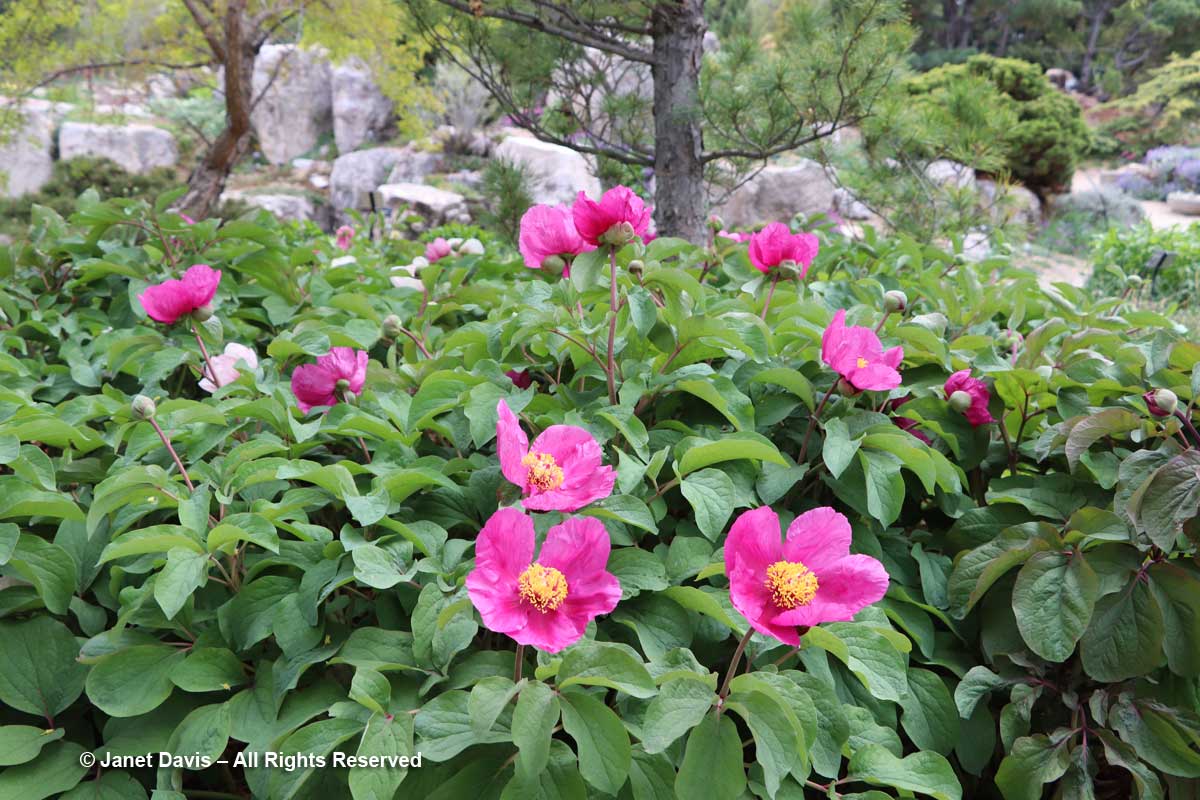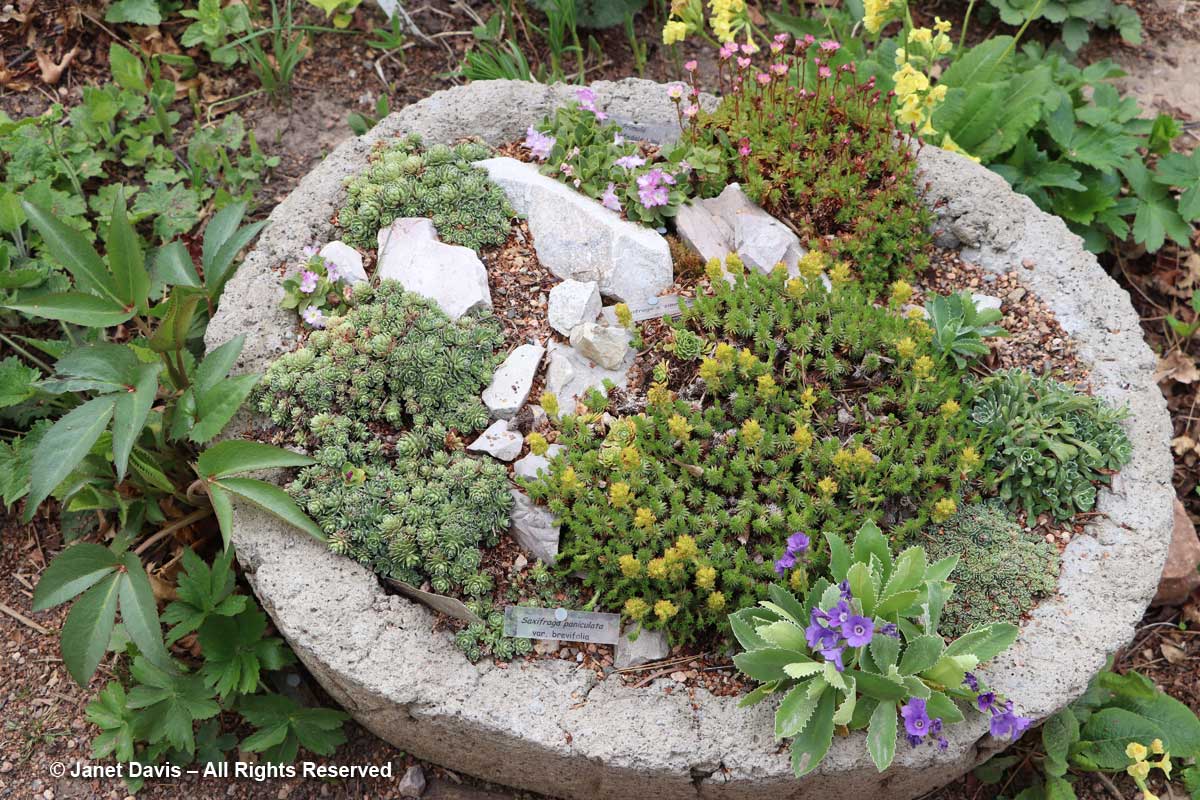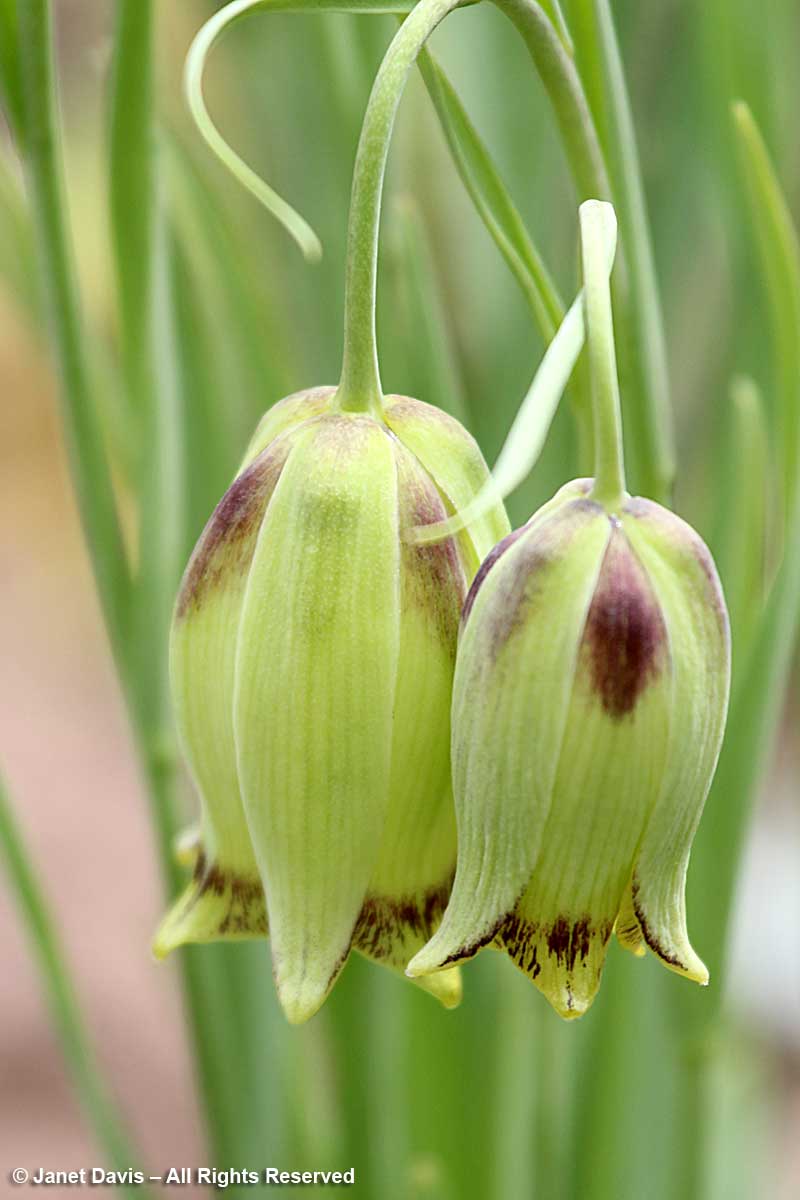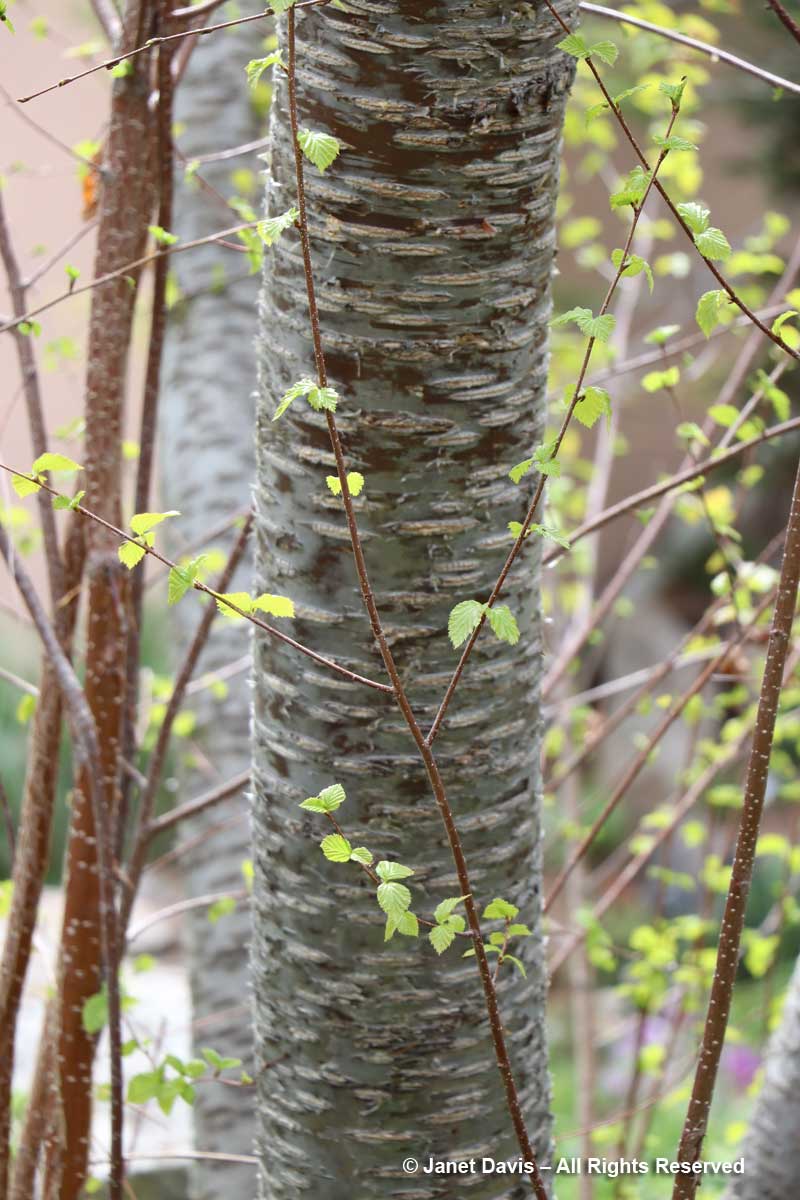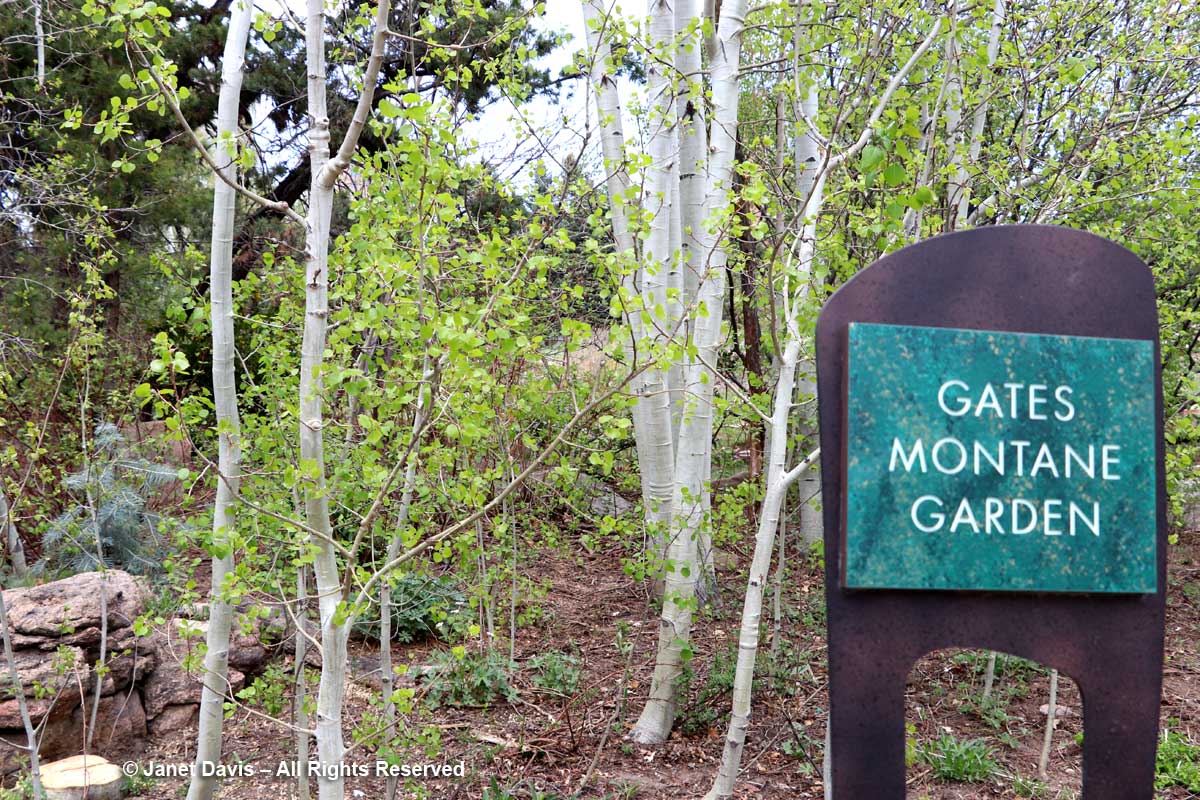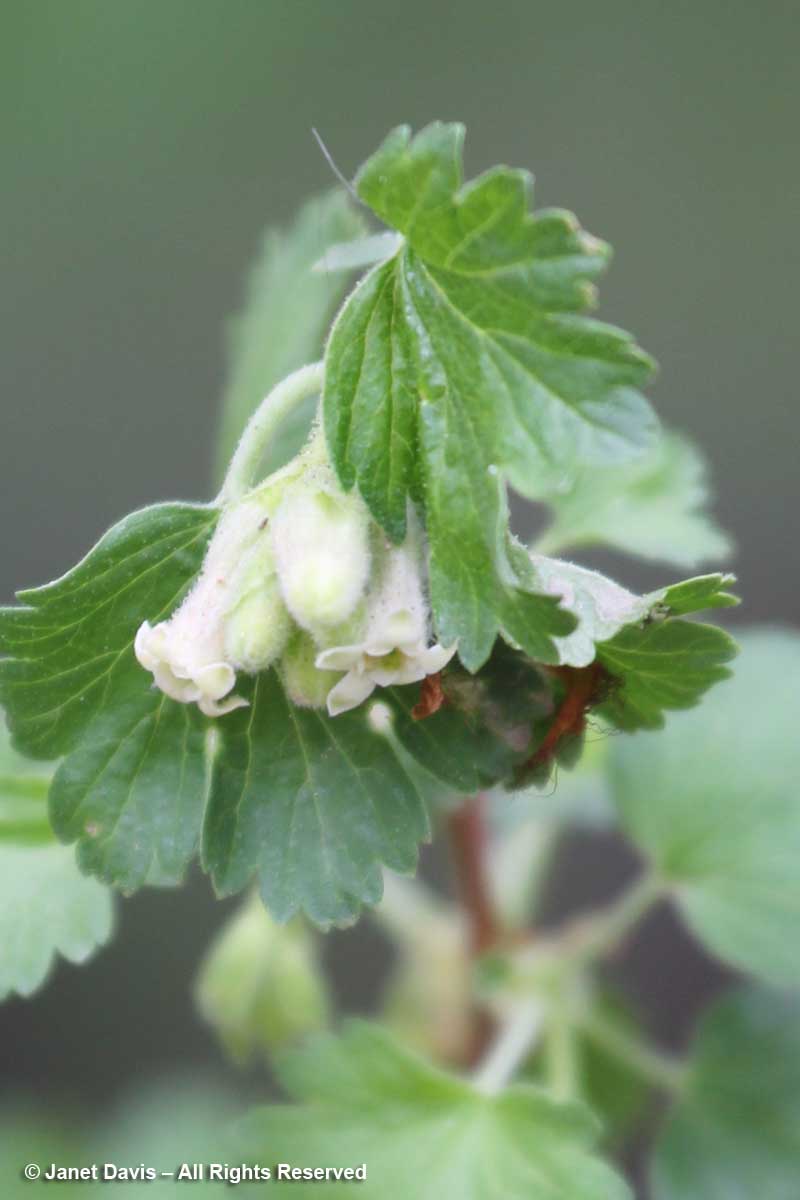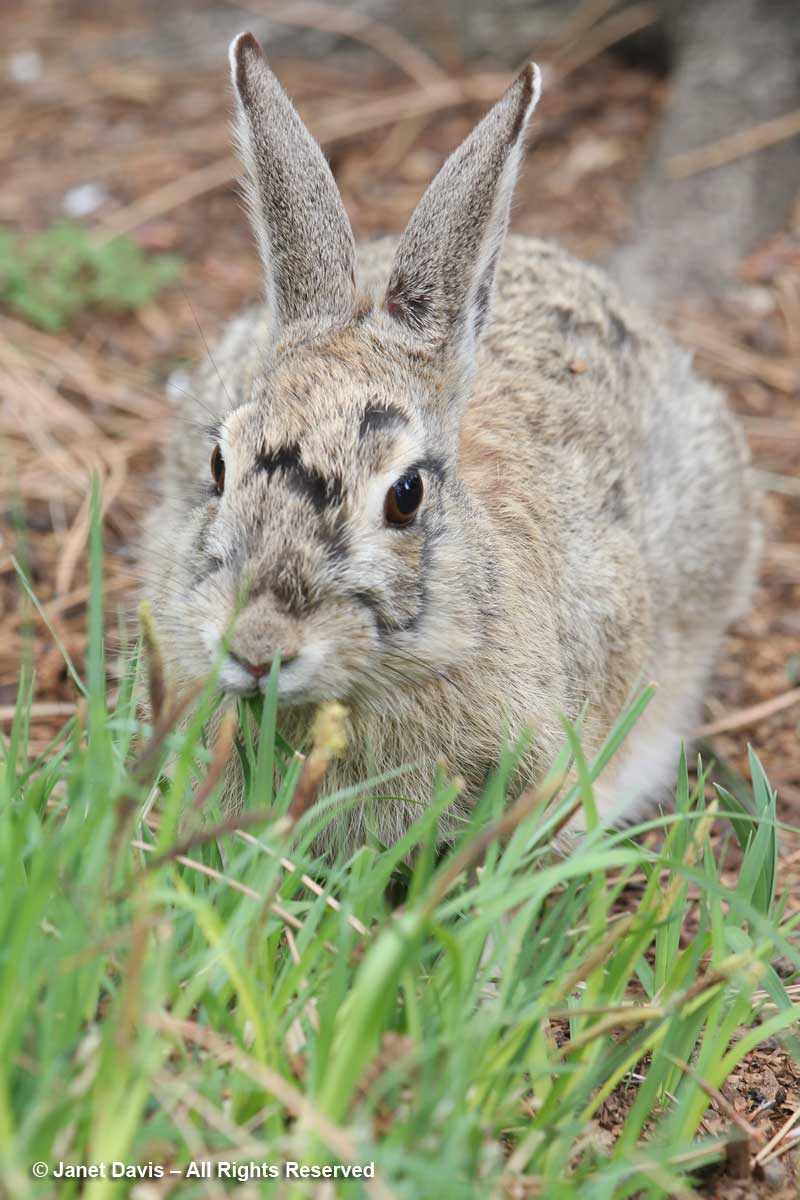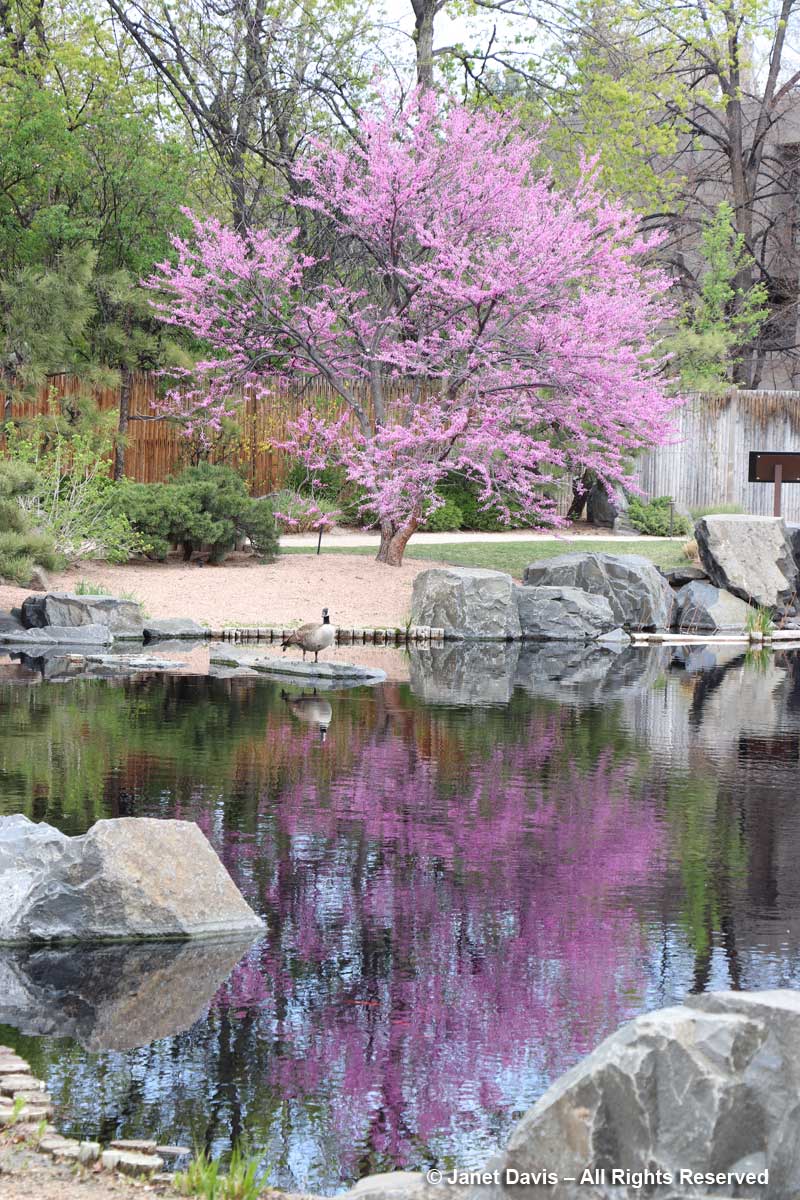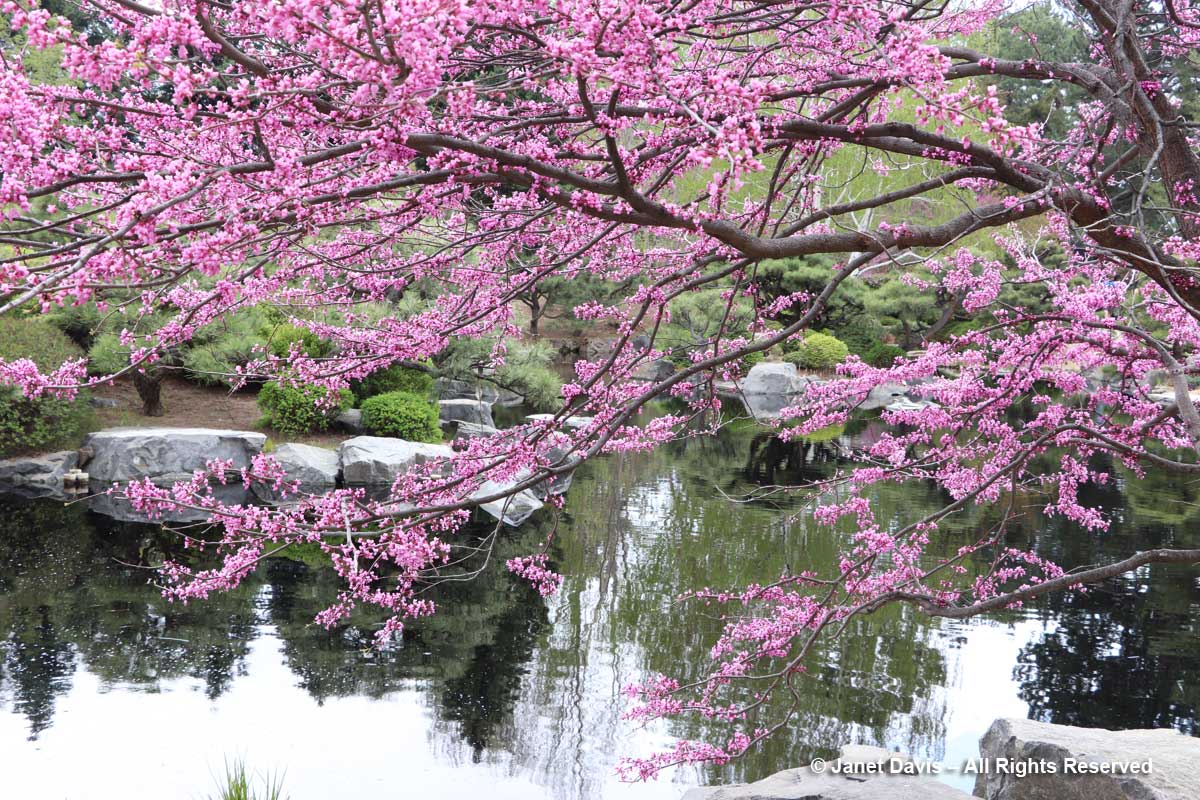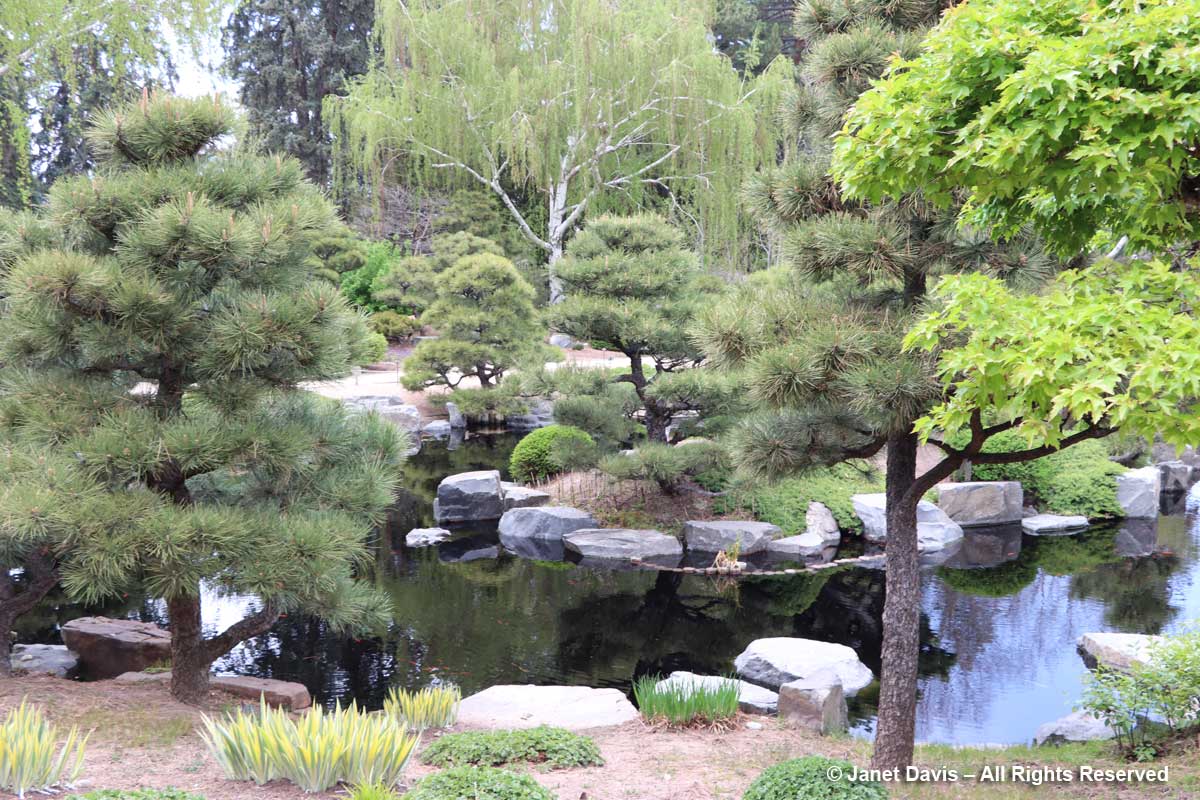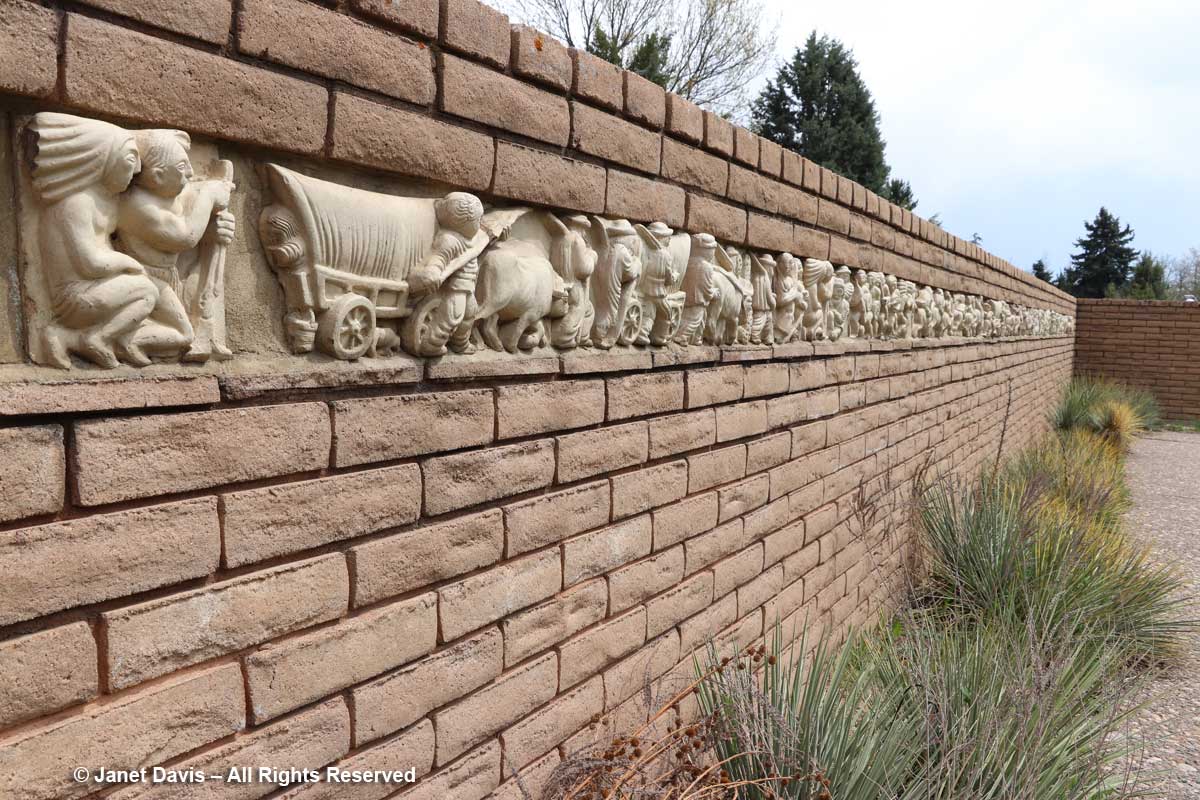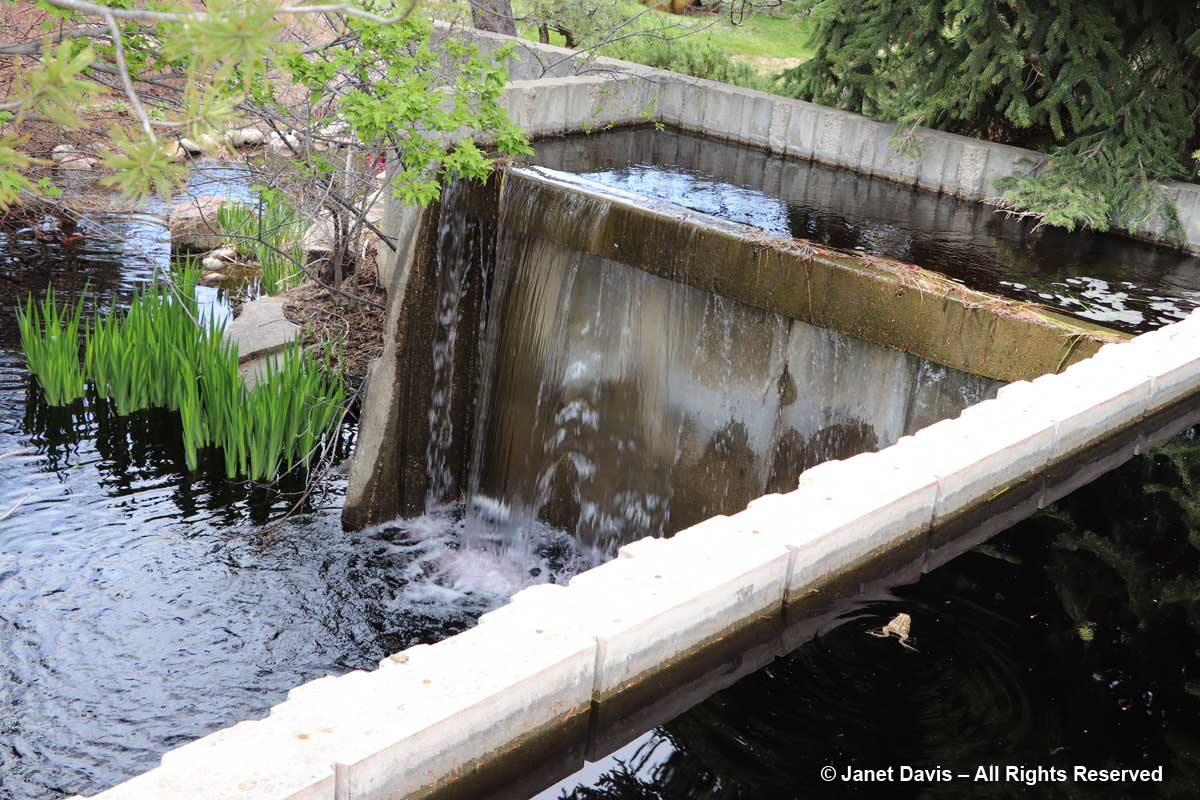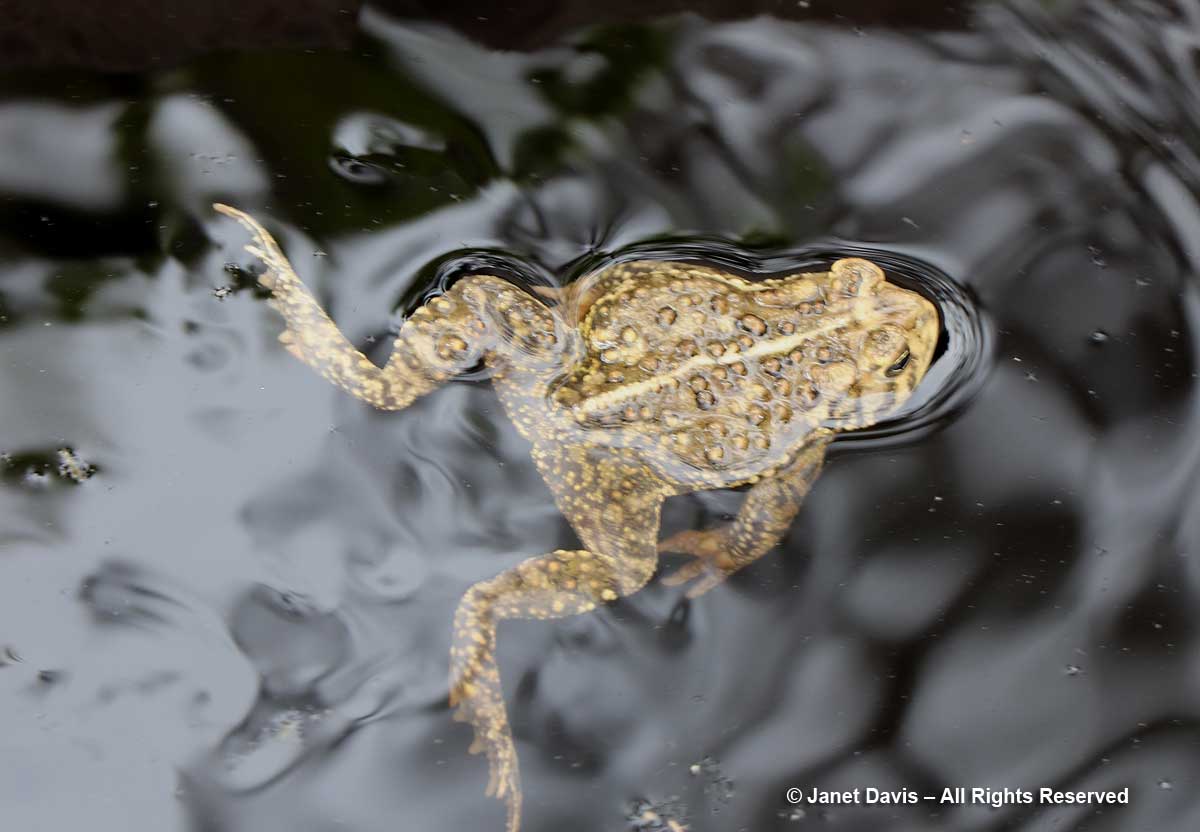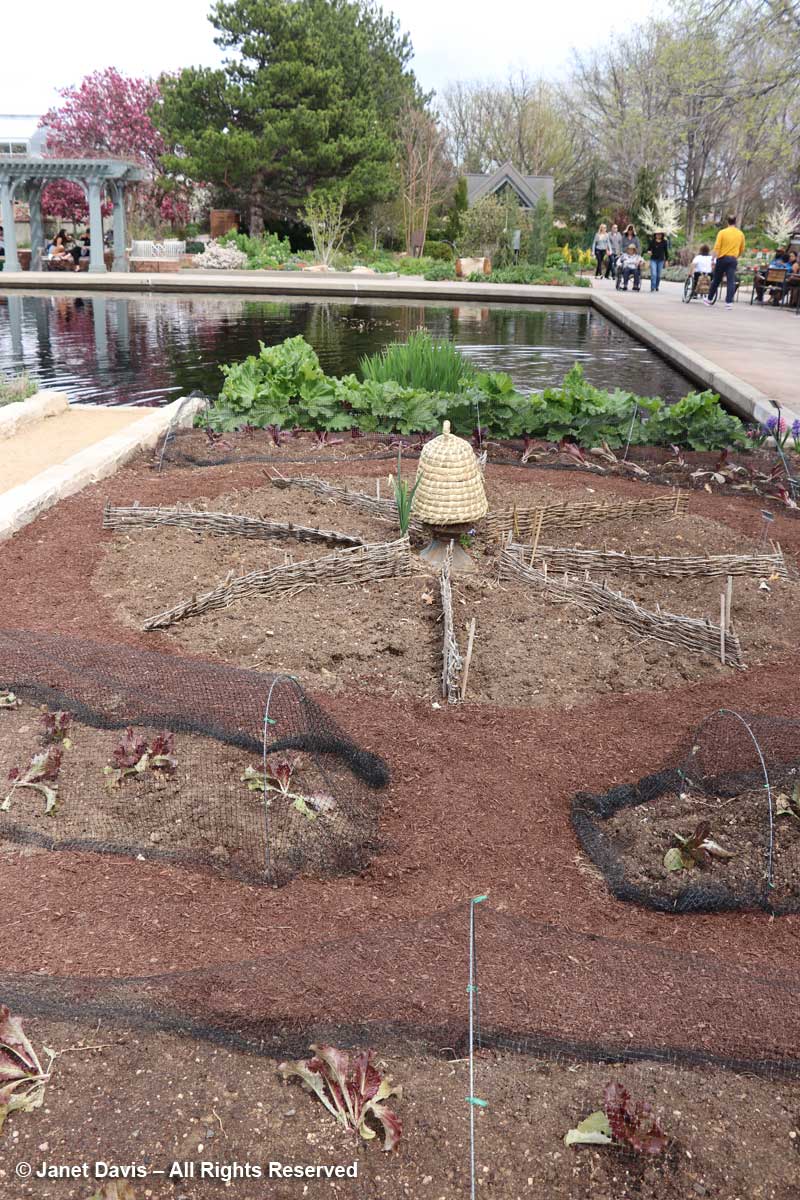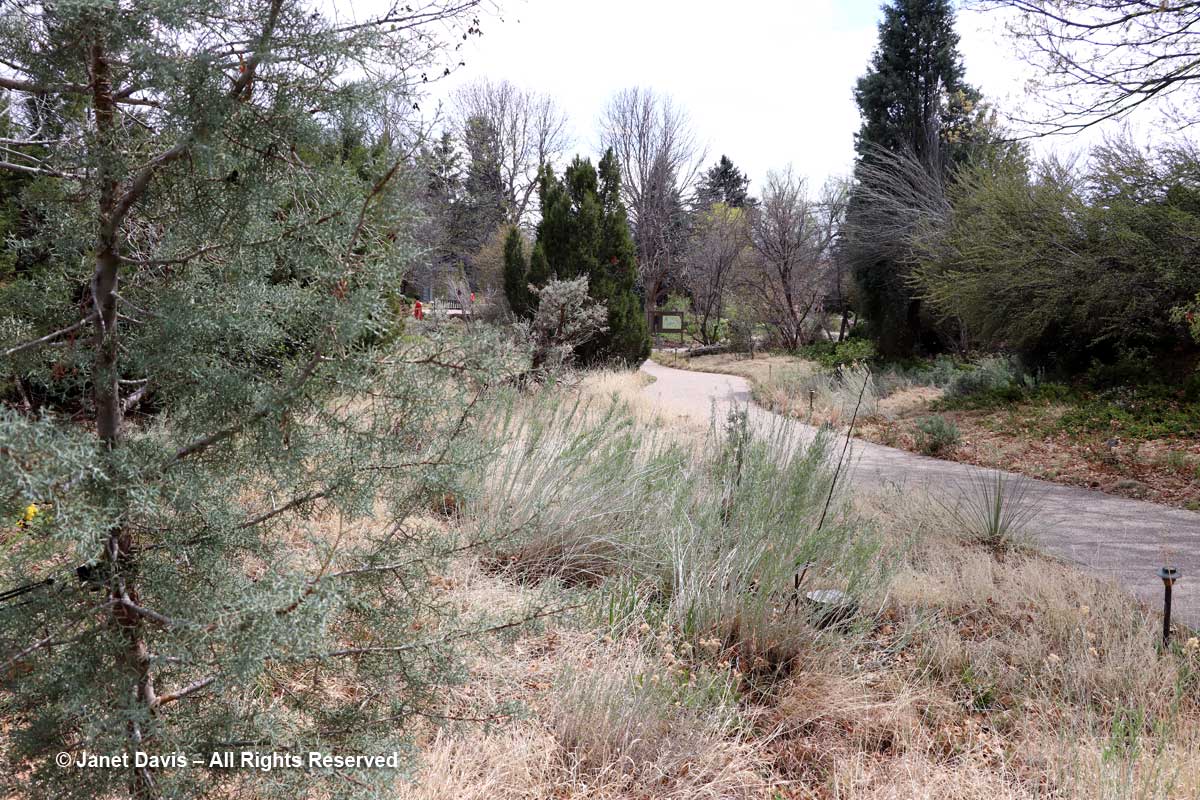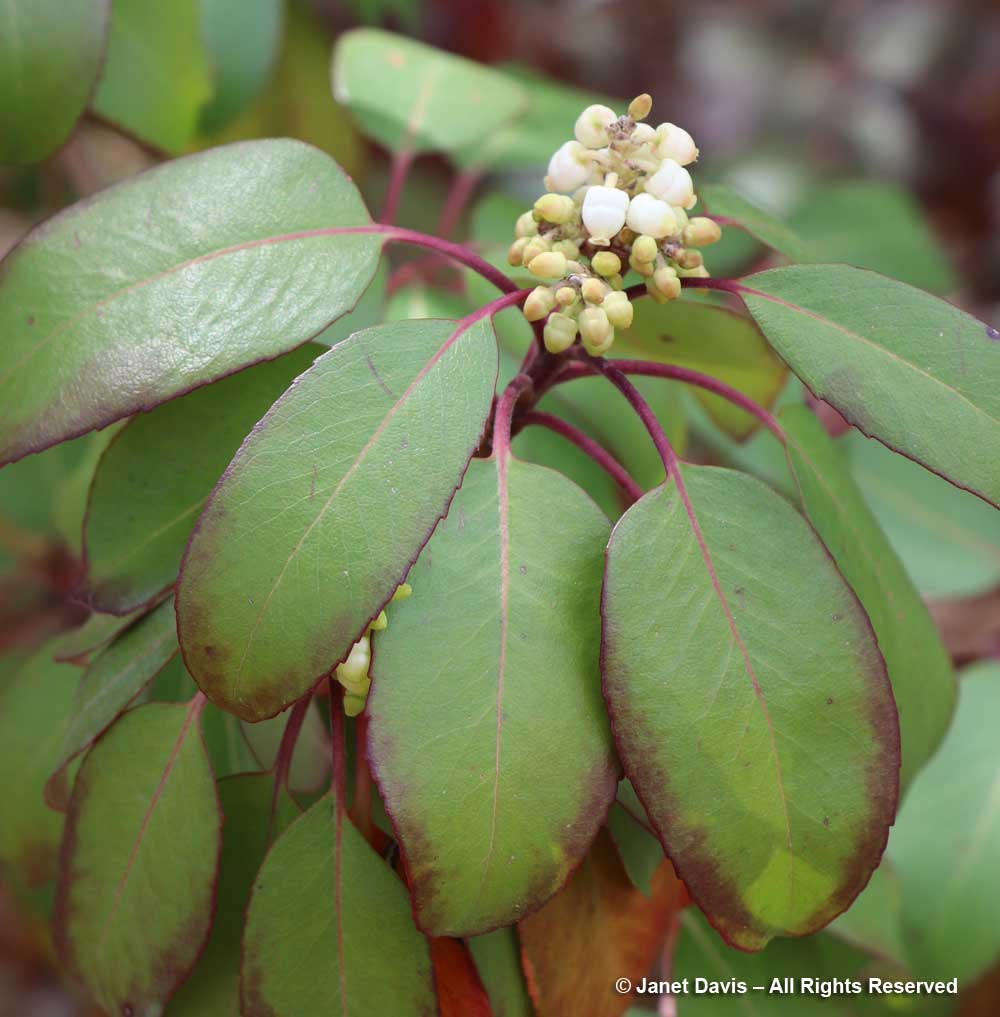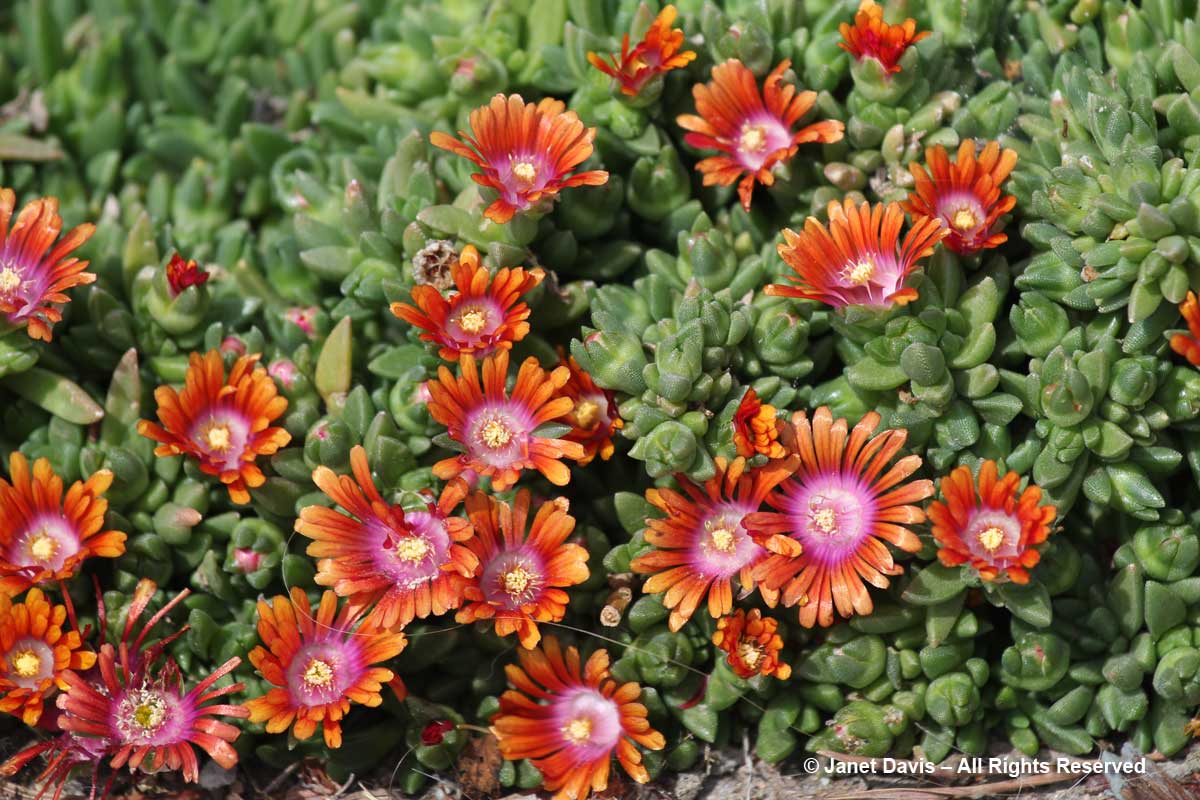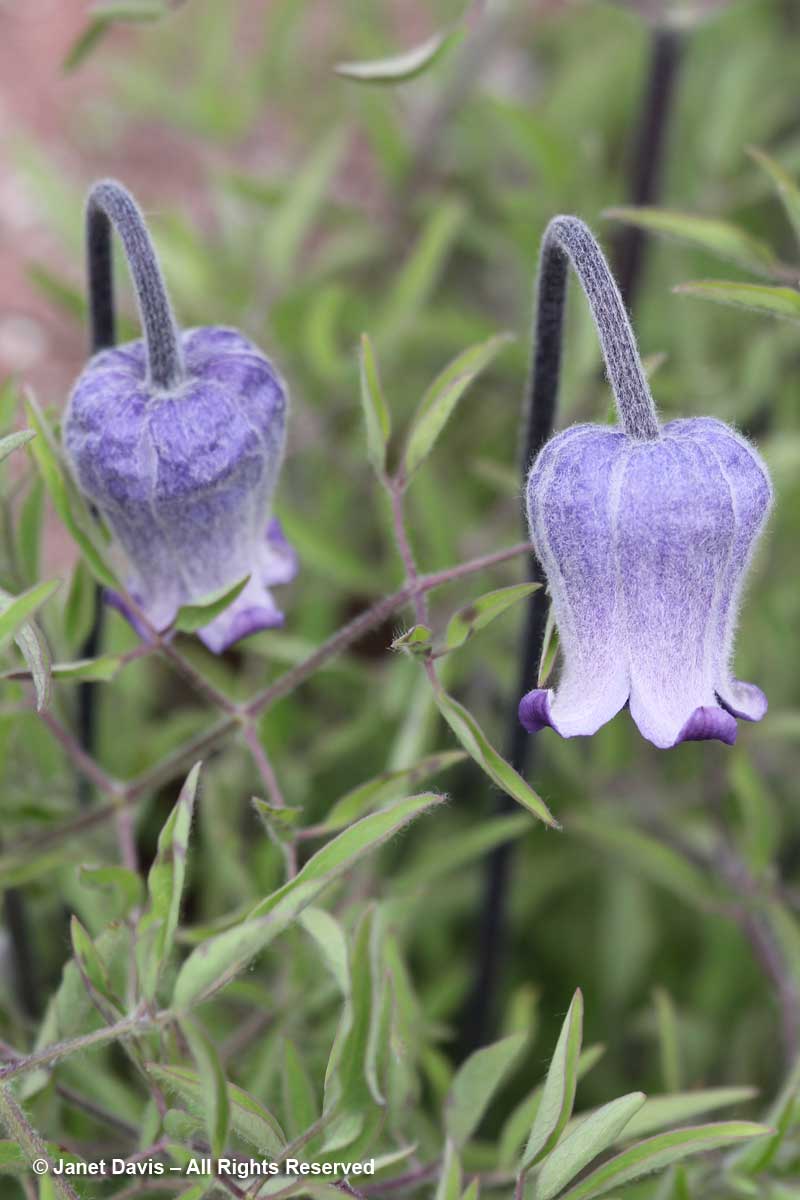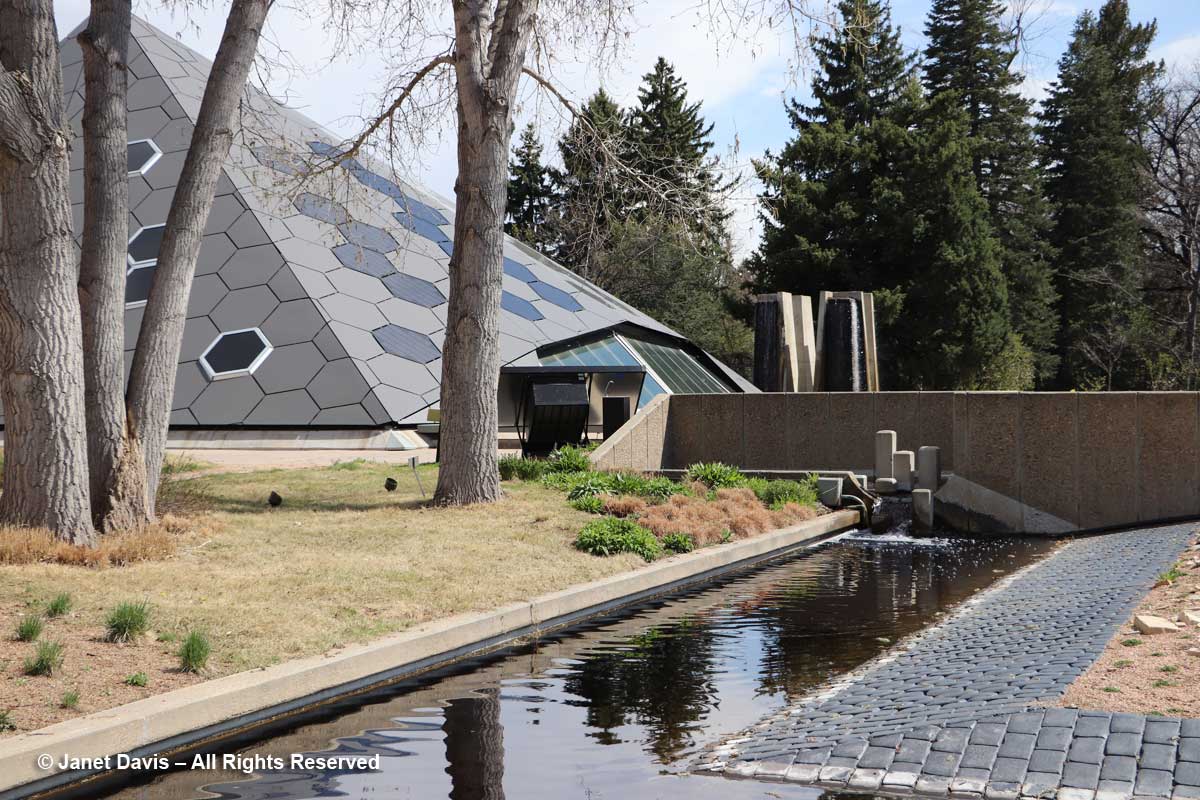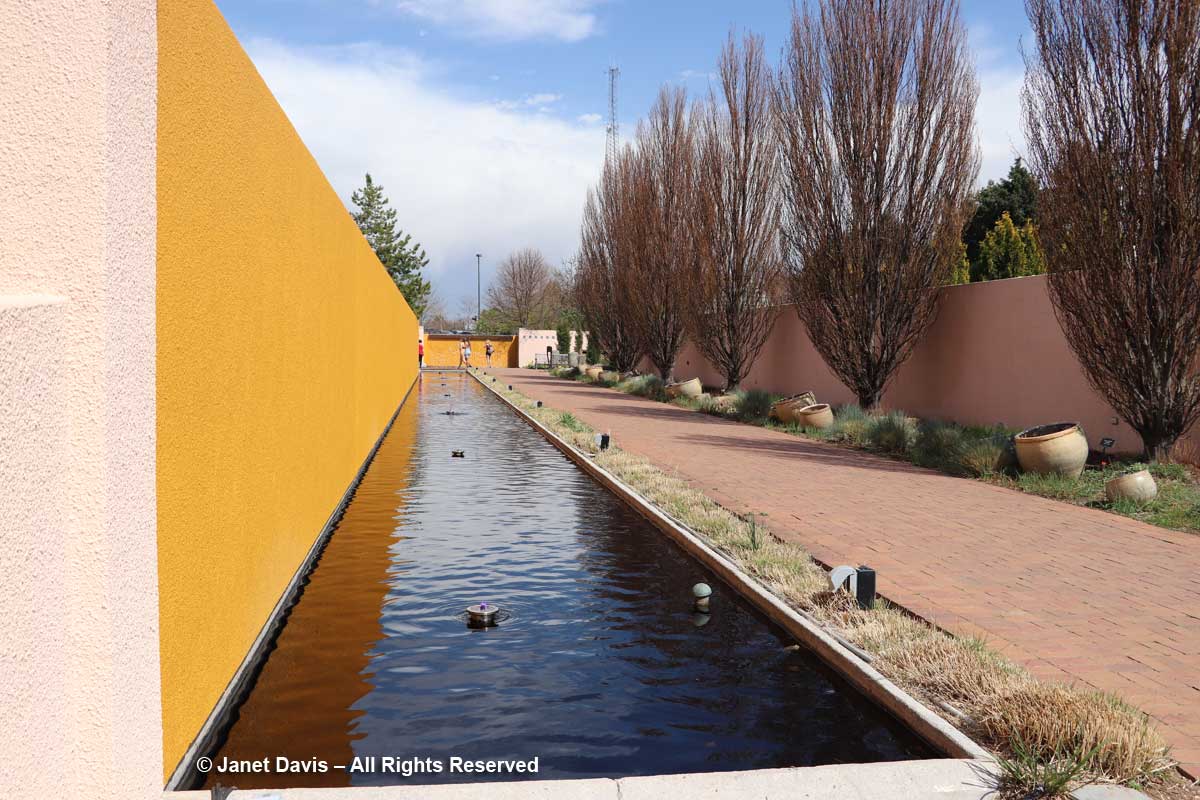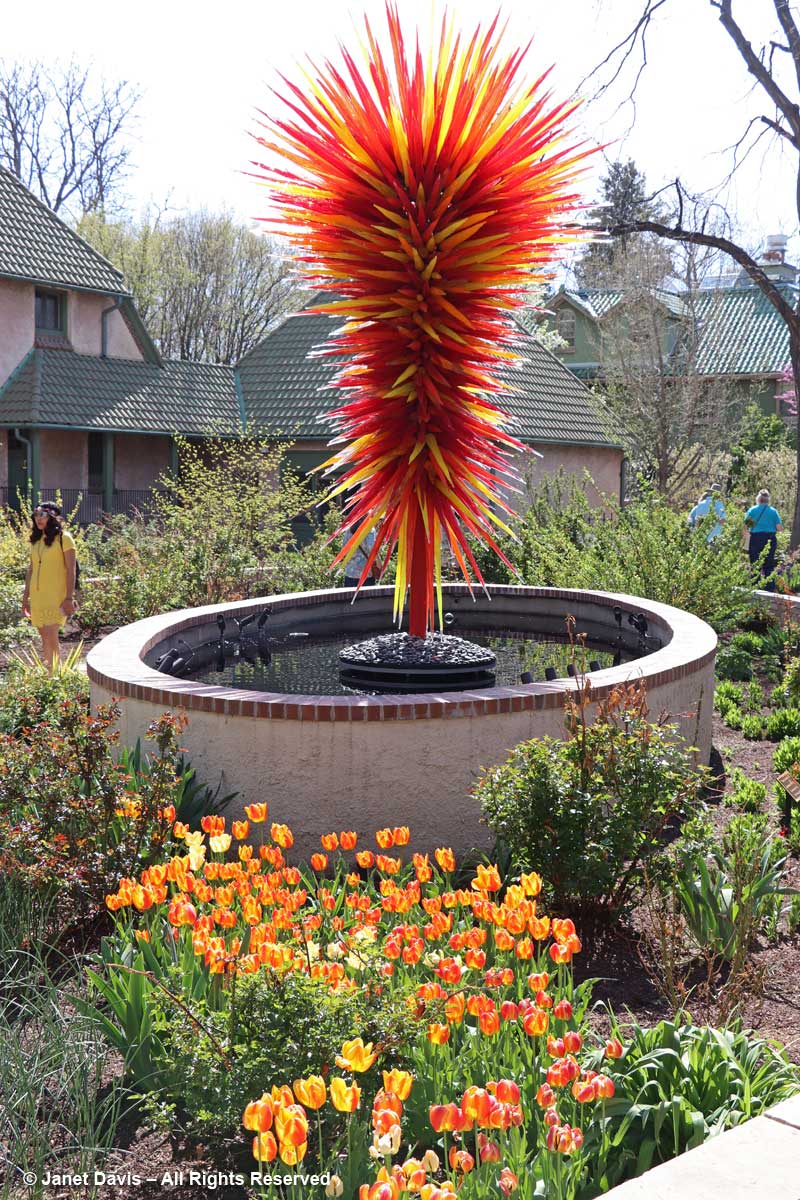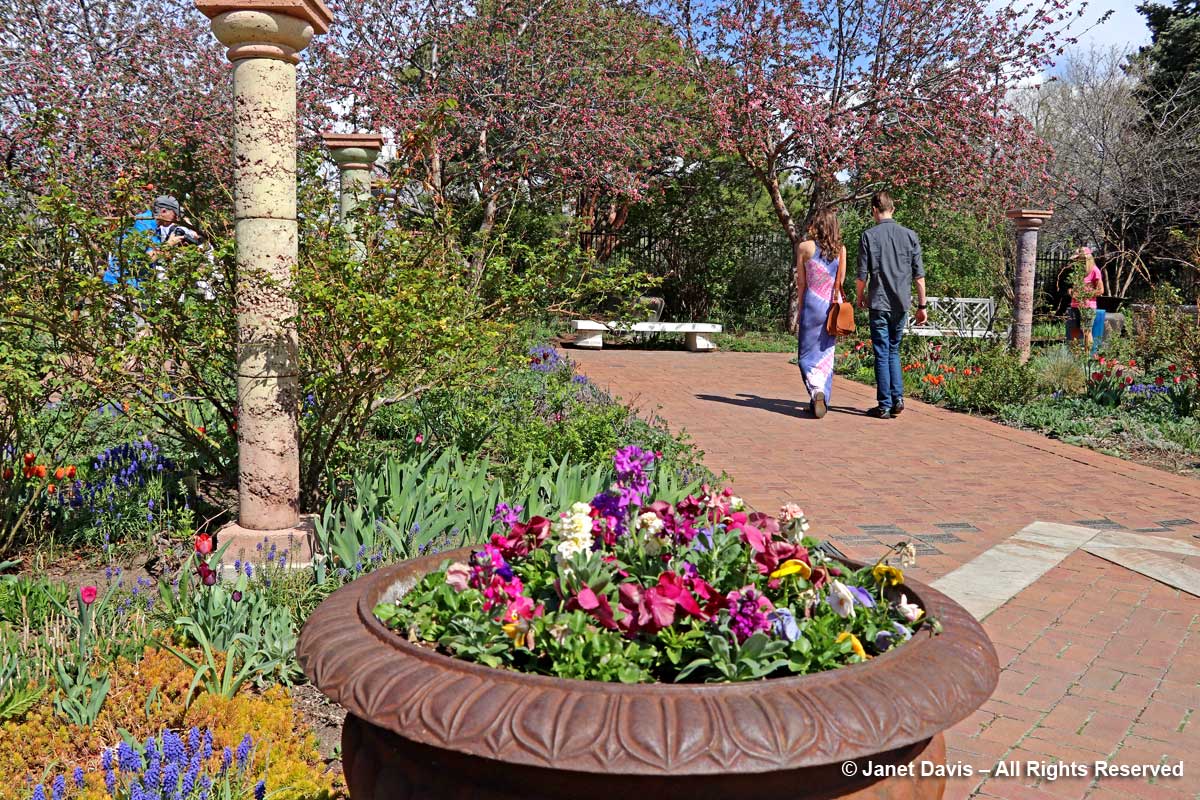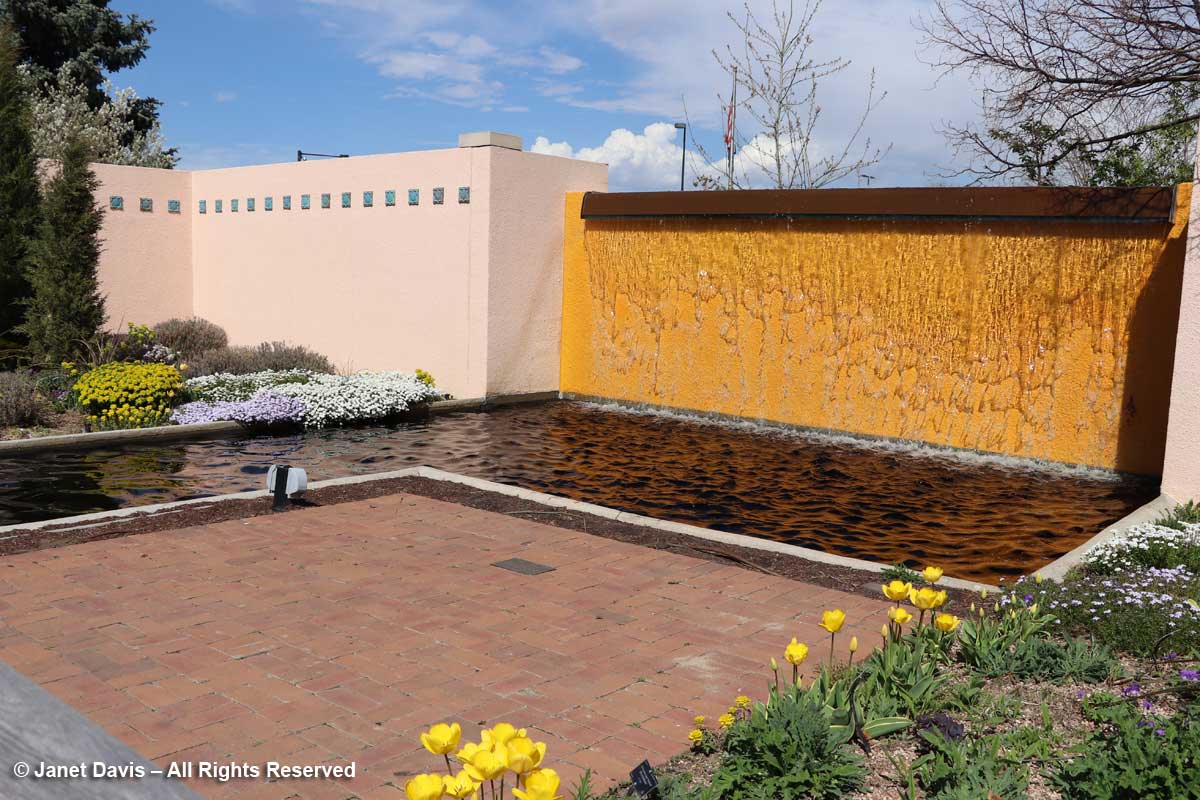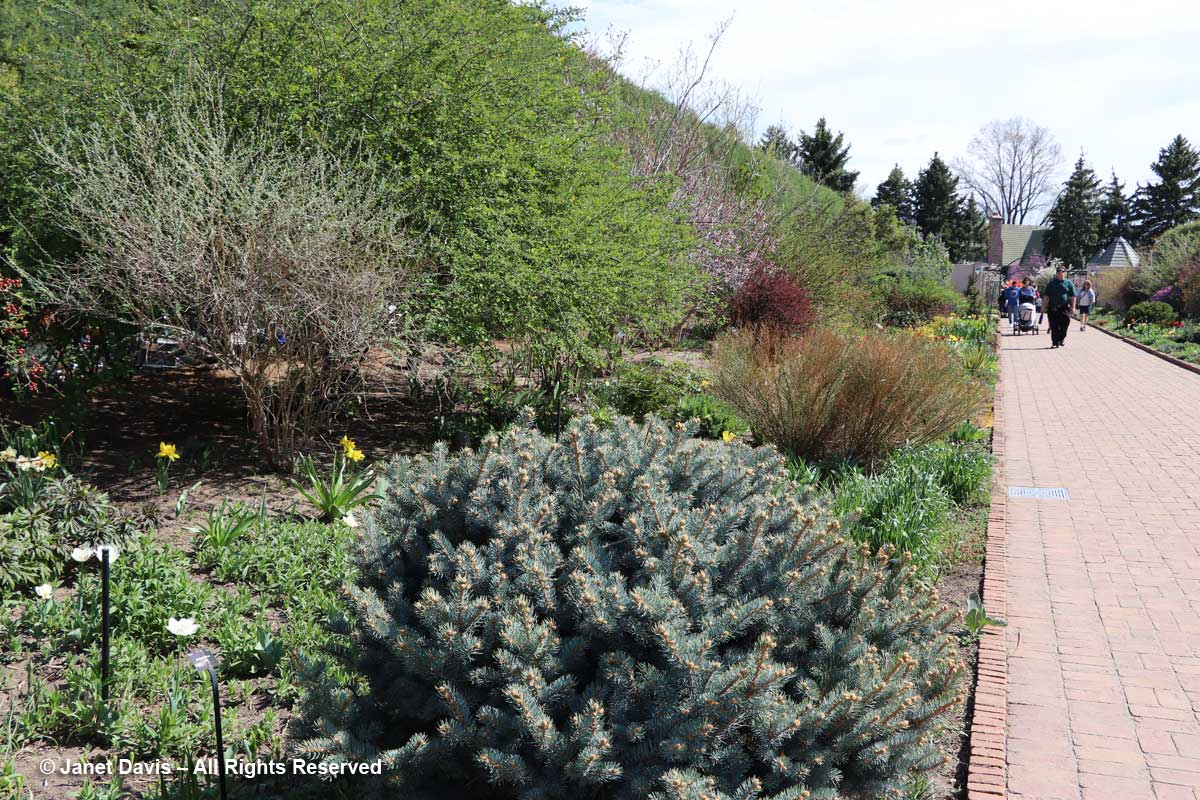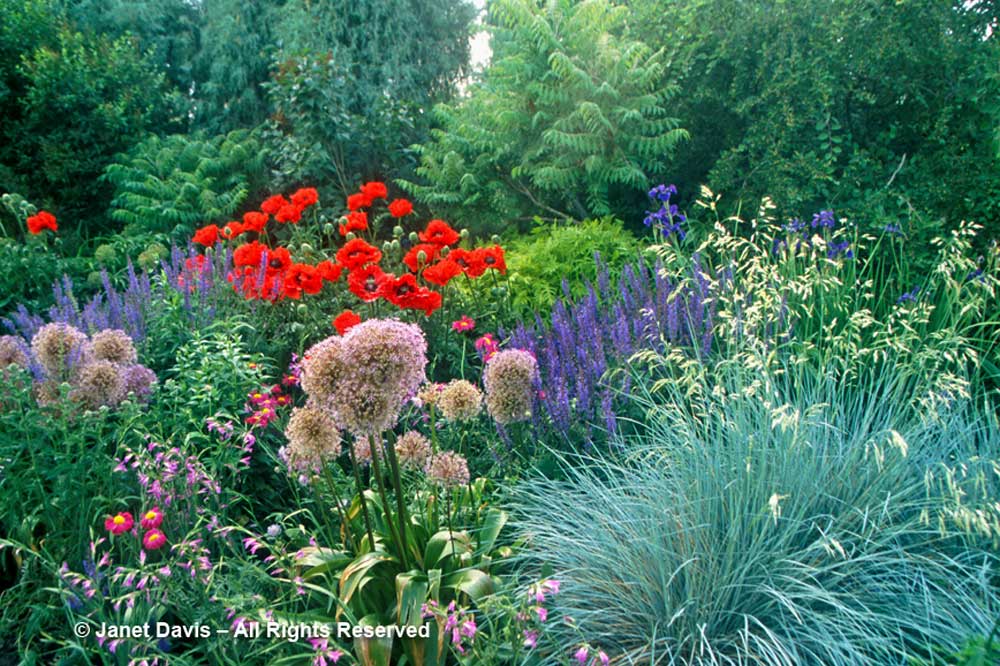Water in the garden. What garden doesn’t benefit from the sound of water, the reflective qualities of water, the ability of water to create a shimmering focus in any scene? Monet was a master at water in the garden; in fact, he was obsessed with trying to capture the light as it played on the water where he grew his famous water lilies. I watched the light play on his garden when I visited one spring.
And water, of course, brings an abundance of wildlife to drink and bathe. Even a simple birdbath adds life to the garden. (The one below was custom-made for the gardener.)
My friend Marnie Wright has a birdbath in her garden near a bench where, if she’s quiet, she can watch them bathe.
Her birdbath is a little piece of art in itself.
But Marnie also has a meandering pond where she can indulge her love of aquatic plants and moisture-loving marginals. Have a look at my blog on Marnie’s beautiful garden in Bracebridge, Ontario in the Muskoka region near my own cottage.
Visiting public gardens can be inspiring for ideas on water gardens. At Chanticleer Garden in Wayne, PA (I wrote a 2-part blog on this, my favourite North American garden), the pond garden is large, with complex plantings. Here you see one side through a scrim of alliums….
……. and here through variegated water iris, I. laevigata ‘Variegata’…..
….. and then looking right into the pond at the water lilies (Nymphaea) and the pickerel weed (Pontederia cordata) on the far side.
Chanticleer’s ponds meander through a damp area with moisture-loving primulas and carnivorous plants just beyond; but the planting in the other direction is inspiring and very floriferous.
Near Chanticleer’s entrance, the Teacup Garden features a different take on water gardening…. a simple, sophisticated, overflowing “teacup” fountain.
At New York Botanical Garden, the Native Plants Garden makes extensive use of water, and moisture-loving plants like Joe Pye weed (Eutrochium) and cardinal plant (Lobelia cardinalis). If you want to read more about this wonderful garden in the Bronx, have a look at my blog.
At Wave Hill in the Bronx, it’s always fun to see the formal pool with its elegant lotuses. I included this gorgeous water feature in my blog on Wave Hill.
At New York’s fabulous High Line, water is introduced in a subtle way in the Scrim water feature. Moisture-loving plants flank this artificial wetland, where visitors – especially children – are known to cool their feet on hot summer days.
When I visited the Missouri Botanical Garden one incredibly hot July day, I enjoyed seeing Dale Chihuly’s blown glass ‘Walla Walla onions’ floating on the pond surface beside the large, platter-like leaves of the Victoria water lilies (Victoria amazonica).
At Filoli near San Francisco, formality dictates the perfect axis of the ornamental pools that lead the eye across the next garden room to the spectacular green hills in the mist beyond.
In my visits to Portland’s serene Japanese Garden, I’ve been impressed with the variety of water features, from the very large, below, to the small water basins. These all represent specific symbolism in Japanese landscape design.
This is the yatsuhashi zig-zag bridge, meant to deter the evil spirits that might follow you.
After my last visit to the Japanese Garden in 2018, I wrote a blog that included its wonderful water features. But you can see all of them here in my accompanying video, including the noisy shishi-odoshi or “deer scarer”.
At Vancouver’s Van Dusen Botanical Garden, a zig-zag bridge leads across an arm of the pond to the impressive Southern Hemisphere collections.
My favourite part of The Butchart Gardens just outside Victoria, B.C. in the sunken Japanese garden. Here is a wealth of water features, including a stone basin and bamboo spout fountain in a shady grotto…..
…. and a shishi-odoshi “deer-scarer” fountain that clacks regularly as the bamboo spout fills with water…..
…..and a few serene ponds, including this small one with a waterfall.
At Marjorie Merriweather Post’s Hillwood Estate in Virginia, the Japanese garden arrayed down a hillside features several water features, including these dancing water spouts.
On a tour of the D.C. area, I admired this multi-spouted fountain in the garden of Debbie Friedman, principal of Bethesda Garden Design.
Not far away was the garden of my friend Barbara Katz, with its impressive hillside waterfall and lily pond, below. I wrote a blog about Barbara and Howard’s beautiful garden.
In Austin, Texas, I was enchanted with the wonderful garden of Jenny and David Stocker. In one of their ‘garden rooms’, a galvanized stock tank is used to grow aquatic plants.
But their swimming pool almost seems to be a water feature in itself, given the flowery landscape flanking it. How wonderful it would be to swim lengths beside all those blossoms! I wrote a blog about the Stocker garden.
Fun-loving Lucinda Hutson might know more about tequila than anyone else in North America! The Austin garden of the woman who wrote the best-selling book Viva Tequila is a colourful trip into the fantastic, indoors and out! Naturally, Lucinda got her very own blog. Her little pond and its trickling fountain occupy a corner of a siren-themed patio, below.
A sophisticated Austin garden called Mirador featured a potager with a sleek concrete water feature. You can see more of this stunning Texas landscape in my blog.
Garden writer Pam Penick also features a stock tank in her garden (yes, I wrote a blog on Pam’s garden too) but she’s added a little faucet fountain to enjoy the trickle of water and keep the tank aerated.
Pam also has a pretty blue urn fountain, one of many blue touches in her Austin landscape. It requires a receptacle below the rocks so the water can re-circulate, but is a less labour-intensive alternative to a pond.
My Denver friend and plantsman-extraordinaire Panayoti Kelaidis has a rectangular pond abutting his plant-filled patio at the base of a rock wall filled with alpine plants. Naturally, the pond features myriad plants as well! I wrote about Panayoti’s garden in a June blog last year.
Although Tatiana Maxwell’s stunning Boulder CO garden featured a large pond, I loved this little touch of water using two overflowing bowls. This also utilizes a below-grade receptacle to circulate the water.
There were a few water features in the Fort Collins, CO garden of Carol and Randall Shinn, but I especially liked this Corten-and-concrete wall fountain because it’s such a good example of how to bring the splash of water into a restricted space. You can read my blog about the Shinn garden here.
In Rob Proctor and Dave Macke’s exquisite Denver garden, a little faucet fountain poured into a watering can, below. That was just one feature of hundreds of perfect vignettes in this well-known garden about which I blogged last year.
In the colourful, art-filled Englewood, Colorado garden of Dan Johnson (of the Denver Botanic Garden) and Tony Miles, there were a few brilliant touches of water. I adored this container water garden surrounded by a large plant collection…..
…. and look at this tiny little gesture, below. Anyone could do this, with a small pump and some ingenuity! (Okay, maybe some glass cutters and some silicone, too….)
Chicago Botanic Garden’s Evening Island is a landscape surrounded by lake, so water is always part of the view here. I made a video of my lovely August morning on Evening Island a few years ago.
Garden designer Kellie O’Brien’s lion’s head wall fountain in Hinsdale, near Chicago.
Further afield, my 2018 garden tour of the north and south islands of New Zealand offered lots of design inspiration. Naturally, the spectacular pond of Di and Ian Mackenzie’s Akaunui (my blog on their garden is here) might be a little ambitious for most of us, but it does point out the beauty of the reflective quality of a large body of water.
In the Cloudy Bay area of Marlborough, Rosa Davison’s large pond at Paripuma (see my blog here) has no reflection at all – but then she installed it as a sanctuary for grey ducks which, of course, appreciate all the duckweed on the surface!
At Upton Oaks near Blenheim, which I blogged about in 2018, Sue Monahan carefully sculpted a circular hedge to echo the contour of her formal lily pool.
The Giant’s House, Josie Martin‘s otherworldly Akaroa garden is filled with her mosaic sculpture (see my blog here) and water is used cleverly in a few places. But I loved this water feature surrounded by “mosaic swimmers”.
At Penny and Rowan Wiggins’s garden The Paddocks near Auckland, a simple sphere sculpture burbled with the splash of water. There are many such fountains available in a range of sizes and styles.
Back in Canada, this large reflecting pool at the Montreal Botanical Garden features a collection of stainless steel “island containers” planted with moisture-loving flora.
At the Royal Botanical Garden in Burlington, Ontario, the reflecting pools also feature aquatic flora, but planted in containers below the surface.
At the residential level, I’ve stayed at James and Virginia Mainprize’s pretty bed-and-breakfast in Niagara-on-the-Lake where I admired their little water garden, which was nicely integrated into their border.
Garden tours are excellent sources of design inspiration and this Cabbagetown garden in Toronto inspired me with its Japanese-themed bamboo and copper spouts spilling into a small pond. However, the mechanics here might be a little beyond my skill level!
And I thought this wall fountain designed by Toronto’s Kim Price was simply stunning. What a way to take a garage wall and turn it into a thing of beauty!
Speaking of vertical wall fountains, the Toronto Botanical Garden where I spend a lot of time photographing has one of the coolest water walls. Designed by PMA Landscape Architects , it offers the element of water without using a lot of space.
No matter what season…..
….. it adds a lovely splash to the entrance courtyard at the TBG.
On the Westview Terrace behind the front part of the Toronto Botanical Garden’s building, a lively focal point is the diagonal water channel that begins at a waterfall tucked between two raised plantings abutting the rear portion of the building. A stone slab bridge lets visitors cross the channel.
For parties at the TBG, they’ve been known to move containers into the channel.
In autumn, it’s particularly lovely when the grasses are in flower and the shrubs turn colour. That’s Indigofera kirilowii with the bright yellow leaves on the right.
Oh! I wonder how this old photo of my daughter and her groom got in here? (Didn’t they look lovely? They’ve got three kids now…)
So… that brings me to my own pond. It’s pretty old now. I dug it myself in 1987, acquiring a shoulder injury that required nerve surgery along the way! But it continues to be the main focal point in my garden as it visually anchors the dining patio.
It has been rebuilt once after the liner failed.
At that time, I added the boulder fountain, drilled through to admit the PVC tubing leading from the pump.
It looked pretty and worked for a few years, but the pump eventually failed and was replaced by another pump, which also failed. Do you sense my theme? Ponds like this are not low-maintenance.
In fact, if you’re not going to pay a pond service company to clean out all the leaves and debris that a pond like mine collects each season – as well as replacing the rocks that fall in during the freeze and thaw periods – you’ll have to do it yourself. And from personal experience (those boots are mine), it’s not a job for the faint of heart.
Even though the only book I’ve written was called Water in the Garden, on behalf of Canadian Gardening magazine (1995), I would recommend thinking small on water features.
But I will add that, despite the work involved in keeping it somewhat clean-looking, my pond pays me back in spades on that spring or summer morning when I look out and see the birds taking turns to bathe in it. Because the cardinals and robins simply don’t care how messy it is.
*****
Okay, let’s get to the title of my blog How would someone “Bring me little water”? Maybe as the waiter did in the rainforest in Costa Rica, with a sweet stick insect sticking to the side?
Or maybe someone would bring me a little water in song. For me, the ideal person to do that would be Moira Smiley. A singer-songwriter, composer and teacher with her own group called VOCA, I would want her to use her famed body percussion (clapping, stomping, bodybeats) to “bring me little water”, as she did with these young people at the Los Angeles Choral Workshop, teaching her own version of the 1936 song composed by Huddie Ledbetter, aka Lead Belly (1888-1949).
And here she is with her own singers doing her official version of “Silvy”.
If you want to learn how to do body percussion, Moira will teach it to you, too!
When I was 12, my mother took me to see Harry Belafonte in Vancouver. He sang ‘Sylvie’ as a plea from an incarcerated man to his lover, the lyrics lamenting that Sylvie “brought me nearly every damn thing, but she didn’t bring the jailhouse key”. Here is Harry Belafonte singing the song from his Live at Carnegie Hall album that very same year.
And here’s the very rustic inspiration by Lead Belly himself. When he wasn’t in jail or on drugs, Ledbetter sang to earn his money. He said ‘Sylvie’ was inspired by his farmer uncle calling for his wife to bring him water out to the hot fields.
BRING ME LITTLE WATER SILVy (Moira Smiley, orig.Huddie Ledbetter, Lead Belly)
Bring me little water, Silvy
Every little once in a while
Bring it in a bucket now
Bring it in a bucket, Silvy
Every little once in a while
Bucket in my hand
I will bring a little water
Fast as I can
Bring me little water now
Bring me little water, Silvy
Every little once in a while
Can’t you see me now?
I will bring you little water
Every little once in a while
Every little once in a while
Every little once in a while
*********
This is the 12th blog (marathon?) in #mysongscapes series of winter 2020 that combine music I love with my photography. If you enjoyed reading, have a look at the others beginning with
- Joni Mitchell’s ‘Night in the City’;
- Paul Simon’s ‘Kodachrome’ and my life in photography;
- Vietnam and Songs of Protest;
- Galway Bay and memories of my grandfather and Ireland;
- Simon and Garfunkel’s Parsley, Sage, Rosemary and Thyme;
- The John Denver lullaby I sang to my first grandchild, Today While the Blossoms Still Cling to the Vine.
- Gordon Lightfoot for a Snow Day
- Madame George by Van Morrison – my favourite song in the world
- Brown Eyed Girl(s) – Van Morrison’s classic and my black-eyed susans
- Raindrops – on flowers and in my gardens
- Miss Rumphius and the Lupines
If you enjoyed this blog, please feel free to leave a comment below. I love to read them.

